Roorkee is a city in Haridwar district, Uttarakhand. This place is famous for IIT Roorkee institution. Since 1853, it is one of the India’s oldest headquarters of Bengal Engineer Group. Word Roorkee is derived from the name Rurimadi Imran. She was the wife of local Rajput Chieftain. During the Moghul Period, this place acted as capital of the Moghul Mahal. It came under the rule of Landhaura State during the 18th century. Later Britishers occupied this place.
What to see at Roorkee:
Roorkee Cantonment: In India it is one of the oldest cantonments. It is the prime attraction of the city. Inside the cantonment visitors can see a stroll around the war memorial. In order to honour the soldiers of the army this war memorial was constructed.
IIT Roorkee: with the assistance of Sir James Thomason it was established in 1847. Earlier name of this institution is Thomason College of Civil Engineering. In this university there are 18 departments. This university is well known for Civil Engineering training Classes regarding project of Upper Ganga Canal.
Solani Aqueduct: In 1846 it was constructed by the britishers. In Uttarakhand this is the perfect example of engineering marvel. It was constructed with the inspiration of Alcantara Aqueduct in Portugal on the River Solani.
Geophysics and Geology Museum: Specimens of minerals, fossils and rocks can be seen at this place. From Shivalik mountain range fossil tree brought here. Fossilised boned of elephants can also be seen here. Collection of geological models and charts can be seen here.
Sabir Paak: This place is also known as Piran Kaliyar Sharif. It is dedicated to 13th century Sufi Saint. All religion people come to this place believing that saint is having the healing powers.
Survey Museum: In 1950 this was established. In this region it is one of the best educational museums. Several types of surveying equipment and mapping can be seen here. These are dates back to centuries old.
Roorkee Group Museum and Achieves: It was established in 1978. Visitors can see huge number of pamphlets, photographs, paintings, documents, historical books. Portraits of Bengal Engineer Group, Weapons, and medals are also can be seen here.
What to see around Roorkee:
Rishikesh: Rishikesh is a sacred place to Hindu devotees. Rishikesh Attractions are Lakshman Jhula, Triveni Ghat, Parmarth Niketan, Bharat Mandir, Lakshman Temple, and Neelakanta Mahadev Temple.
Narendra Nagar: This place has historical importance. In 1919, this city was built by Maharaja Narendra Shah. Major attractions of this place are Nandi Bull and Royal Palace.
Haridwar: It is located 19kms away from Rishikesh. This place is a gateway to God. Major attractions of this place are Vaisho Devi Temple, Shravanathji’s temple, Gaurishankar Mahadev Temple, Bharat Mata Mandir, Daksha Mahadev Temple, Mansa Devi Temple, Chandi Devi Temple, Sapt Rishi Ashram.
Getting to Roorkee: Roorkee is well connected with roads and railways. From Chennai, Delhi, Nagpur, Agra etc buses come to this place. From Delhi, Agra, Ahmedabad, Mangalore, Thane etc trains come to this place. Nearest airport is located at Jolly Grant Airport which is located at Dehradun.
Getting around Roorkee: Several private buses, taxis, autos are available to visit the surrounding places of Roorkee.
Best time to visit Roorkee: Best time to visit this place is in the months of February, March, October, November and December.
Where to stay at Roorkee: Budget, Middle range and luxury hotels are available here to stay at this place. Best hotels which are located at this place are Hotel Royal Palace, Motel Polaris, Hometel, and Centre Point Hotel.
Where to eat at Roorkee: Best restaurants are available to have food at this place.
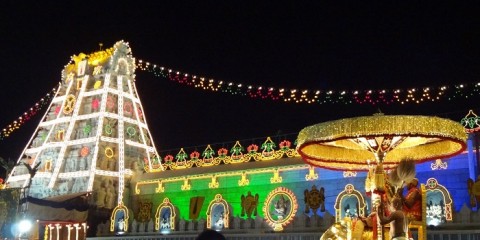
AP, South India, Adventurous sports, Architecture, Fort, History, Mountain Passes, Nature, Temple, Valley, Water falls, Wildlife Sanctuary
Chittoor is located in Chittoor district of Andhra Pradesh, India. In Andhra Pradesh it is the major town. It is situated in the valley of the Ponni River. During 8th and 9th century this place was ruled by Chola dynasty. Later it was ruled by Ballal dynasty followed by Vijaynagar kingdom. In 1640, East India Company entered into this place. This is one of the best places for natural lovers. It is popularly known as Ooty of Andhra.
What to see at Chittoor:
Nagari: This place is popular for Nagari hills. Mountaineering activities take place here. Highest cliff at this place is Nagari Nose. Shape of this nose looks like human nose. Famous temple at this place is Sri Desamma Vari. Devotees believe that by doing abhishekam eye problems of the will be cured.
Guntipalle: It is located 18kms away from Chittoor. Rock pillar is the major attraction of this place. This is popularly known as Puligunda.
Kalavagunta: It is located 8kms away from the town chittoor. At the merging point of Ponnai and Aragonda this town is located. During the chola dynasty several temples were constructed at this place. Architecture of these temples is so beautiful. Most famous temples were Lakshminarayana Temple which is dedicated to Lord Vishnu and Mukkantisvara Temple which is dedicated to Lord Shiva.
Gurramkonda: It is located in Chittoor district. Gurramkonda fort is the major attraction of this place. This fort is 500 years old fort. Architecture is so beautiful. It is stated by the local people that rulers reach this place by using horse.
Mogili: It is located 25kms away from Chittoor. Mogileeswara Temple is the major attraction at this place. This temple is known as Dakshina Kailasam. Mogilliappa constructed this Lord Shiva Temple under Mogili tree.
Tirupati: This is the major attraction in Chittoor district. Lakhs of devotes come to this place. Lord Ventakeswara is worshipped here. Temple was built in 12th century. Pallava, Pandya and Chola architecture styles can be seen on this temple. Dome of this temple is fully gold plated. Papanasam waterfalls are another attraction of this place.
Vepanjeri village: It is located 15kms away from Chittoor. This village is famous for Sri Lakshmi Narayana Swamy Temple. Temple was built between 1178 and 1218. Pallava Style of architecture can be seen here.
Pulicat Lake: This place is most famous among bird watchers. Plenty of migratory birds come to this place. This lake is separated from Bay of Bengal.
Kaundinya Wildlife sanctuary: It is located 60kms away from Chittoor. It is surrounded by hills and valleys. Large number of elephants lives at this place. Other animals along with elephants are jackals, hares etc. Huge collection of flora and fauna can be seen here.
What to see around Chittoor:
Ramgiri: This is located few kilometres away from chittoor district. It is believed that this is the home place for Lord Bhairava. Several ancient temples located here. At the foot of the hill Lord Shiva temple is located. Lord Muruga temple is also situated on the top of the hill. Near these temples tank is situated. Water which flow from top of the mountain attracts several tourists.
Getting to Chittoor: Chittoor is well connected with road and railways. From Vellore, Visakhapatnam, Coimbatore, Pondicherry, Pune, Vijayawada, Chennai etc buses come to this place. From Kolkata, Mumbai, Varanasi, Chandigarh etc trains come to this place. Nearest airport is located at Trisulam which is 15kms away from chittoor.
Getting around Chittoor: Buses, taxis, private cabs are available to visit the surrounding places of Chittoor.
Best time to visit Chittoor: Best time to visit this place is February, September, October, November and December.
Where to stay at Chittoor: Plenty of accommodations starting from budget to luxury hotels are available to stay at Chittoor. Best hotels at this place are Sindhu Towers, Bans The Hotel, Bhaskara Hotel, Haritha Hotel.
Where to eat at Chittoor: Huge number of restaurants is available to have food at Chittoor.
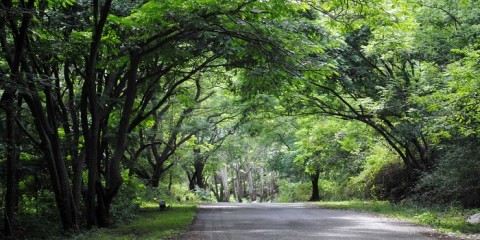
AP, South India, Adventurous sports, Hill station, History, Nature, Temple, Trekking
Horsley Hills is popular hill resort in Andhra Pradesh. From Tirupathi this resort is located 144 kms away and from Bangalore it is 140Kms away. It is located at Nallamalai Range, near south western border of Andhra Pradesh in Chittoor district. This is a departure point for the wildlife sanctuary named Koundinya Wildlife Sanctuary. This sanctuary is located 87kms away from this hill station. Earlier name of this hill station is Yenugu Mallamma Konda.
What to see at Horsley Hill: This is a beautiful hill resort in Andhra Pradesh. Other name of this resort is Yenugu Mallamma Konda. One of the legends of this place is a little girl named mallamma used to take care of the elephants at this place. She acted as a doctor to the tribal’s. Mallamma used to heal the tribal’s at this place. Suddenly she disappeared. So all the tribal’s thought that she was the incarnation of the Goddess and they built a temple for her on this hill. In 1840-43, Collector of Cuddapah Mr.Horsley came to this place and enjoyed the natural beauty. From then onwards he used to come to this place in every summer. This place became summer resort to him. Currently this place is acting as summer resort to the Governor of Andhra Pradesh. Hence this house is also known as Governors bungalow.
This place is surrounded by gulmohar, allamanda, Jacaranda, Eucalyptus trees. Other attractions of this place are Horsley Hills Museum, Gaalibanda, High view seeing place, Lake Gangotri and Environmental Park. Adventurous sports such as Trekking, Rappelling also conducts here.
Mallamma Temple: It is located at the top of the Horsley hills. This temple is dedicated to Goddess Mallamma.
What to see around Horsley Hills:
Kaundinya Wildlife Sanctuary: It is located Palamaner in Andhra Pradesh. Several species of trees namely bamboo, bengalensis, Ficus, Ficus religiosa, Ficus tomentosa, Albizia Amara etc can be seen here. Major animal attractions of this palce are wild boar, jungle cat, porcupine, deer, mouse deer, sambar, 4 horned antelope etc. This sanctuary is surrounded by deep valleys and hills. Along with all the above animals visitors can see 3 Indian crocodile species, hippopotamus, hyena, Himalayan black bear, Jaguar, Puma.
Getting to Horsley Hill: Horsley hill is well connected with road and railways. From Chintamani, Kottakota, tirupati, Mandanapalli, Angallu, Kurabalakota etc buses come to this place. From secunderabad, Amarvati, Madanapalli, etc trains come to this place. Nearest airport is located at Tirupati.
Getting around Horsley Hill: Private Vehicles and Taxis are available to visit the surrounding places of Horsley hill.
Best time to visit Horsley Hill: Horsley Hill welcomes the visitors throughout the year. Summer is too hot. So except summer visitors reach this place throughout the year. But trekking lovers come to this place even in the summer.
Where to stay at Horsley Hill: Only one hotel is available to stay at this place. Name of this hotel is Haritha Hill resort.
Where to eat at Horsley Hill: Hotel at this hill place provides food to the visitors of this place.
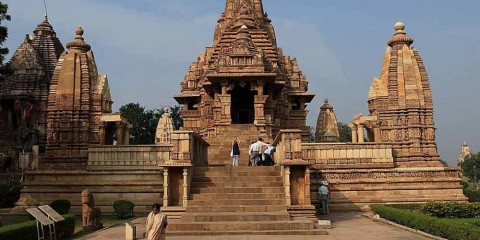
Bihar, North India, Caves, Fort, History, Hot Springs, Musuem, Nature, Temple, Valley, Wildlife Sanctuary
Bihar is 12th largest state in India. In Bihar, Lord Buddha Founded Buddhism. Lord Buddha spent most of his life time at this place. Mahatma Gandhi Setu is one of the longest bridges in the world.
What to see at Bihar:
Patna: It is the capital of Bihar which is situated on the southern banks of Ganges. Mahatma Gandhi Setu Bridge is located here. History of Patna dates back to 493 BC. Magadha Empire ruled at this place. Major attractions of Patna are Agam kuan, Har Mandir, Padri Ki Haveli, Patna Cementry, Golgarh, Patna Museum etc.
Munger: Major attractions of this place are Bihar school of Yoga, Madras Rahmania Islamic School.
Rajgir: This place is famous for several temples and monasteries. This place is associated with Lord Buddha. Jivekarmavan Monastery was the residence of Lord Buddha. This place is well known for hot water springs and Jain temples. Other attractions of this place are Venue Vana, Jarasandha’s Akhara, Ajatshatru’s Fort, Bimbisar’s jail.
Nalanda: Nalanda Attractions are Nalanda University, The Great Stupa, Nalanda Archaeological Museum, Hieun Tsang Memorial Hall.
Sasaram: Sasaram Attractions are Sher Shah Suri’s Tomb, Maa Tara Chandi Temple, Rock Cut Caves and Ashokan inscriptions.
Bihar Sharif: It is situated on the banks of River Panchanan. Plenty of pilgrim Muslim tombs can be seen here. It was served as capital of Pala dynasty. 5th century Muslim tombs, mosques and Gupta Pillar can be seen here. Major attractions of this place are Odantapuri, Tomb of Malik Ibrahim Vaya, Makhdum Shah Sharif ud din Mosque, Saint Mallik Ibrahim Bayu.
Muzaffarpur: Major attractions of this place are Sikandarpur Kali Temple, Baba Garib Stan, Rajeshwari Devi Temple, Ram Chandra Shahi museum etc
Bhagalpur: During 7th century it was the biggest trading market. Major attractions of this place are production of silk fabrics, Madhusudan temple, Colganj Temple.
Gaya: It is one of the tourist’s places of Bihar. This is the sacred place to Hindus. It is believed that at this place Lord Vishnu kept his foot on demon Gayasur to kill him.
Bodhgaya: Lord Buddha got enlightenment at this place. After the enlightenment of 250 years, Emperor Ashoka came to this place and founded Mahabodhi Temple.
What to see around Bihar:
Uttar Pradesh: It is the holy land of Rishikesh, Kedarnath, Badrinath, Haridwar. Tales of Rani of Jhansi is most famous. Major attractions of this place are Taj Mahal, Agra, Allahabad, Ayodhya, Corbett, Gangotri, Lucknow, Mussorie.
Madhya Pradesh: It is the largest state in India. At these place more than 1800 monuments says the stories of musicians, poets, saints, warriors, kingdoms, Empires of centuries old. Major attractions of this place are Bandhavgarh, Amarkantak, Bhojpur, Bhopal, Dhar, Chitrakoot, Chanderi, Gwalior, Indore, Jabalpur etc.
Orissa: Major attractions of this place are Konark, Gopalapur, Cuttack, Chilka Lake, Bhubaneshwar, Berhampur, Puri.
West Bengal: Major attractions of this place are Sunderbans, Shanti Niketan, Diamond Harbour, Siliguri, Darjiling, Calcutta, Bakreshwar.
Sikkim: Major attractions of this place are Yuksom, Lachung, Gangtok.
Getting to Bihar: Bihar is well connected with road ways, railways and airways. Some of the railway stations in Bihar are Abhaipur, Bansipur, Bhagwanpur, Chhapra, Labha, Tilaya, Wena, Sarai, Ismailpur etc. Airports in Bihar are Birsa Munda, Bokaro, Daltonganj, Darbhanga, Dhanbad, Gaya, Giridih, Jamshedpur, Madhubani, Muzaffarpur, Purnea, Raxaul etc.
Getting around Bihar: Buses and Taxis are available to visit the places of Bihar. Trains, buses and Taxis are available to visit the surrounding places of Bihar.
Best time to visit Bihar: Bihar welcomes the tourists throughout the year.
Where to stay in Bihar: Plenty of accommodations are available to stay at various places of Bihar. Starting from Budget to Luxury hotels are available to stay at Bihar.
here to eat in Bihar: Plenty of restaurants are available to have food in Bihar. Major restaurants of Bihar are Bell pepper, Tan door Hut, Takshila, Siam Thai restaurants.
Chail Wildlife sanctuary is located in at Chail hill station, Himachal Pradesh, India. From Shimla it is located 63kms away. Rich collection of flora and fauna can be seen here. This is the best place for bird watchers and natural lovers. In 1976 this place was declared as Wildlife sanctuary. Earlier this place was acted as hunting ground of Maharaja of Patiala Bhupinder Singh.
What to see at Chail Wild life sanctuary: Large variety of birds can be seen here. Major bird attractions of this place are Grey headed flycatchers and Golden Eagle. Plenty of trees can also be seen here. Major trees found at this sanctuary are oak trees and Pine trees. Lush green grass lands can be seen at the slopes of this sanctuary. Sanctuary consists of several mammals. Large mammals of this sanctuary are goral crested porcupine, Indian muntjac, leopards, rhesus macaque. Other mammal attraction of this place is Black napped Hare, Sambar, Common Langur, Wild Boar, Himalayan Black bear etc. Trekking is another attraction of this place. Other activities takes place at this place is bird watching and angling. Angling activity takes place on the river Gaura. Popular trekking trails of this sanctuary are Chail Rajgarh, Chail Shimla via Junga, Kandaghat Chail etc.
What to see around Chail wildlife Sanctuary:
Chail Cricket Stadium: It was built in 1893. This stadium is world’s highest stadium. Height is 2144 meters. Polo game also plays in this ground.
Chail Wildlife Sanctuary: Before this place was declared as Sanctuary in 1976 this was used as best place for hunting by Maharaja of Patiala. Major attraction of this sanctuary is goral, wild boar, Himalaya Black deer, Indian Puntjac. Large variety of Flora and Fauna are located here.
Kali Ka Tibba: People from nearby villages and towns come to this place to worship Goddess Kali.
Gurudwara Sahib: It is famous for its architecture style. Architecture of Gurudwara looks like church. It is situated at Pandhawa hillocks. This was constructed in 1907.
Siddh Baba Ka Mandir: This mandir was built in the place of Palace after Siddh Baba came into the dreams of Maharaja Bhupinder.
Kufri: This is the best place for winter sports activities. It is located 28kms away from the sanctuary. Ski Resort is most famous here.
Shogi: It is the beautiful place with Salubrious climate and lush green cover. Shogi is the best place for trekking and bird watching. Plenty of temples are located here. It is situated 22kms away from the sanctuary.
Solan: Apart from several temples, oldest breweries are also located here. This place is also known as Mushroom Capital of India. It is located 39kms away from the sanctuary.
Barog: Major attraction in Barog is Renuka Lake. This is the largest lake in Himachal Pradesh. It is located 42kms away from sanctuary.
Shimla: It is one of the popular hill stations in India. This is located 63kms away from the sanctuary.
Kasauli: Army Cantonment is located here. Worth visiting places here is dense forest and snow clad mountain. It is located 63kms away from the sanctuary.
Getting to Chail Wildlife sanctuary: Before reaching this place one has to reach Chail hill station. Only way to reach Chail is road way. Buses are available from Rampur, Narkhanda and Shimla to Chail. Nearest railway station is located at Shimla which is 43 kms away from Chail. Nearest airport is at Shimla.
Getting around Chail Wildlife sanctuary: Trekking is the best way to see the sanctuary. Vehicles are not allowed inside the sanctuary. Buses are available to visit the surrounding places of the sanctuary.
Best time to visit Chail Wild life sanctuary: Best time to visit this sanctuary is between March to July and September to November.
Where to stay in Chail Wildlife sanctuary: No accommodations available inside the sanctuary. Plenty of hotels are available to stay in Chail town
Where to eat in Chail Wildlife sanctuary: No eateries are available at this sanctuary. Restaurants are very limited in Chail. Chinese, Indian and Continental food is available at Chail town.
Devprayag is a town in Tehri Garhwal district, Uttarakhand, India. This is one of the Panch Prayags. In this place Bhagirathi and Alakananda Rivers meet and takes the name as River Ganga. Narsinghancal, Dashrathanchal Parvat, Giddhanchal Parvat are 3 godly peaks surrounds this place.
What to see at Devprayag:
Raghunath Temple: Temple is dedicated to Lord Rama. South Indian and Buddhist architectural styles can be seen on the walls of this temple. Temple was constructed by Raja Jagat Singh of kullu. Gold sheets can be seen on the inner walls of the temple. Life history of Lord Krishna and Lord Rama depicted on the walls of the temple.
Chandrabadani Temple: Temple is dedicated to Goddess of Power. Iron trishul and ancient statues of Goddess sati are placed outside the temple. Goddess Sati upper body is dropped accidently by Lord Shiva. Due to this her weapons were scattered at the spot.
Suspension Bridges: These bridges provide clear view of Devprayag. Bridges are laid over Alaknanda and Bhagirathi Rivers.
Kyunkaleshwar Mahadev Temple: This temple belongs to 8th century. Lord Shiva is worshipped here. Other shrines of this temple are Lord Kartikeya and Ganapati. From this place visitors can see snow clad Himalayan Peaks and entire town.
Dashrathshila Temple: It is believed that King Dashrath father of Lord Rama done penance at this place. Shrine is located on the banks of small water stream. This water stream is named after Shanta who was the daughter of King Dashratha.
Nakshatra Vedh Shala: Pt.Chankradhar Joshi established this astronomical observatory in 1946. Collection of 3000 manuscripts from various countries is kept at this place. These are dates back to 17th century.
What to see around Devprayag:
Shivpuri: It is located 55kms away from Devprayag. Lord Shiva’s temple is the major attraction of this place. River Rafting Sports are other attraction of this place.
Chamba: It is located 89kms away from Devprayag. This is a popular hill station situated 1676meters above the sea level which is surrounded by deodar trees and dense pine. A clear view of River Bhagirathi and Garhwal Ranges of Himalayas is possible from this place.
Rishikesh: This is the sacred place for the Hindus. It is located at the foothill of the lower Himalayas in Uttarakhand. Lord Vishnu is worshipped here. People believe that visiting this place gives Mukthi after death. It is located 73kms away from Devprayag.
Rajaji National Park: It is located 92kms away from Devprayag. This park covers 3 district of Uttarakhand. Those 3 districts are Pauri Garhwal, Dehradun and Haridwar. Earlier there are 3 sanctuaries namely Rajaji, Motichur and Chilla. Now these are merged as one sanctuary with the name Rajaji National Park. Major fauna attractions of this park are Asian Elephant, leopard, Jungle Cat, Goral, Indian Hare etc. Major flora attractions of this place are acacia, dalbergia, bridelia, terminalia, Adina, Mallotus etc.
Haridwar: It is located 93kms away from Devprayag. This place is a gateway to God. Major attractions of this place are Vaisho Devi Temple, Shravanathji’s temple, Gaurishankar Mahadev Temple, Bharat Mata Mandir, Daksha Mahadev Temple, Mansa Devi Temple, Chandi Devi Temple, Sapt Rishi Ashram.
Getting to Devprayag: Devprayag is well connected with road ways. From Kotdwar, Dehradun, Haridwar, Pauri, Uttarkashi, etc buses come to this place. Nearest railway station is located at Rishikesh which is 71kms away from Devprayag. Nearest airport is located at Dehradun which is 91kms away from Devprayag.
Getting around Devprayag: Devpragay is a small town. This can be explored on foot. Buses and Taxis are available to visit the surrounding places of Devprayag.
Best time to visit Devprayag: Best time to visit this place is between January to June and October to December.
Where to stay in Devprayag: Accommodations are available here to stay for the visitors of this place. Lodges, motels, resorts, hotels are available to stay in Devprayag. Yoga sessions conduct every morning in the accommodations of Devprayag.
Where to eat in Devprayag: In house restaurants of hotels is the best option to have food. Mainly vegetarian food is available here.
Tehri Garhwal is one of the largest districts of Uttarakhand. Name of this district is derived from the word Trihari. Meaning of Trihari is the place which observes 3 sins evolving out of Mansa, Vacha and Karmana. The Word Garh means Fort. Prior to 9th century there are 52 different forts are placed here. This princely state becomes the part of India in 1949.
What to see at Tehri Garhwal:
Uttarkashi: It is located on the banks of river Bhagrathi. It is the home to plenty of temples and Ashrams. Uttarkashi Attractions are Vishwanath Temple, Nehru Institute of Mountaineering, Shakti Temple, Adventurous sports.
Kanatal: This place was named after this lake. It is a hill station near Mussoorie. Kanatal Attractions are Surkanda Devi Temple, Kodia Jungle, Trekking, Verdant forests, Landscape.
Dhanaulti: It is located 12kms away from Kanatal. This place is famous for winter cool breezes. Major attractions of this pale are fruit orchards, Pony rides and treks. This is one of the best places for natural lovers.
Tehri Dam: This was constructed at the place where Bhilangna and Bhagirathi Rivers Confluence. It is located at New Tehri. Visitors can also see various kinds of flowers and fruits at new Tehri. These flower and fruit plants can be seen in Pant Research institute. It is located 12kms away from Kanatal.
Badrinath: It is the holy town. Major attraction of this town is Badrinath Temple. Temple is dedicated to Lord Vishnu. Badrinath Attractions are Badrinath Temple, Tapt Kund, Surya Kund, Charanpaduka, Brahma Kapal, Narada Kund.
Narendranagar: Narendra Nagar Attractions are Nandi Bull, Radha Krishna Mandir, Ananda Spa, Odathali, Viceregal Palace.
Devaprayag: It is one of the Panchprayags. This place is famous for 10,000 years old Raghunathji Temple and confluence of River Bhagirathi and Alaknanda.
Khatling Glacier: This glacier has popular destinations from Ghuttu.
Ghuttu: This is one of the best places for natural lovers. It is the base camp of treks to Masar Tal, Khatling Glacier and Panwalikantha.
Buda Kedar: This place is famous for temple dedicated to Lord Shiva which is 59kms away from Tehri town.
Sem Mukhem Temple: Temple is dedicated to Nag Raja.
Gautam Rishi’s Temple: It is located 8kms away from Tehri town. Temple is dedicated to Gautam Rishi.
What to see around Tehri Garhwal:
Chamba: It is located 18kms away from Tehri Garhwal. This is a popular hill station situated 1676meters above the sea level which is surrounded by deodar trees and dense pine. A clear view of River Bhagirathi and Garhwal Ranges of Himalayas is possible from this place.
Rishikesh: This is the sacred place for the Hindus. It is located at the foothill of the lower Himalayas in Uttarakhand. Lord Vishnu is worshipped here. People believe that visiting this place gives Mukthi after death.
Haridwar: It is located 39kms away from Narendra Nagar. This place is a gateway to God. Major attractions of this place are Vaisho Devi Temple, Shravanathji’s temple, Gaurishankar Mahadev Temple, Bharat Mata Mandir, Daksha Mahadev Temple, Mansa Devi Temple, Chandi Devi Temple, Sapt Rishi Ashram.
Getting to Tehri Garhwal: Only way to reach this place is through road way. From Delhi, Gurgaon, Chandigarh, Ludhiana, Agra, Amritsar, Jammu etc buses come to this place. Nearest railway station is located at Haridwar which is 52kms away from Tehri Garhwal. Nearest airport is located at Dehradun.
Getting around Tehri Garhwal: Buses and Taxis are available to visit the surrounding place of Tehri Garhwal.
Best time to visit Tehri Garhwal: Tehri Garhwal visits the tourists throughout the year.
Where to stay in Tehri Garhwal: Plenty of accommodations are available at Tehri Garhwal including luxury hotels. Apart from hotels plenty of resorts, guest houses, Dharmasalas are also available.
Where to eat in Tehri Garhwal: Plenty of eateries and small restaurants are available here. Most parts of Tehri serve only vegetarian food.
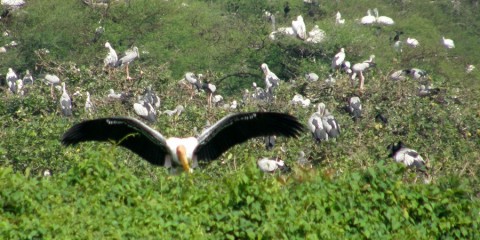
Haryana, North India, Bird Sanctuary, Nature, Wildlife Sanctuary
Sultanpur National Park is located in Sultanpur, Gurgaon district, Haryana, India. This park is situated 15kms away from Gurgaon and 50kms away from Delhi. This is the best place for wild life lovers and bird watchers. Sultanpur is named after Rajput Chauhan Sultan Singh who was the descendent of Harsh Dev Chauhan. In 1972, this area was declared as bird Sanctuary. After 20 years it was declared as national park in 1989. Area covered by this sanctuary is 1.43 Sq.kms. In North India, Keoladeo National Park and Sultanpur National Park are most popular bird sanctuaries. This is the best place for the photographers also to have the best photos.
What to see in Sultanpur National Park:
Sultanpur Lake: This is the place of relaxation for the birds.
Watchtowers: within the parks visitors can see 4 watchtowers. From these watchtowers visitors can have best view of the birds. These towers are also known as Machans.
Interpretation centre: Visitors of this place were educated here. This centre explains about the different species of migratory birds and resident birds. One room within the centre is dedicated to Dr.Salim Ali. He worked hard in the establishment of this park. In the room allotted to him visitors can see the personal belongings of him, write ups and research works. In this centre library is also located here. This consists of slides of various species, films and various books.
Resident Birds: Resident bird attractions of this place are Green Bee eaters, Indian Cormorant, Little Cormorant, Purple Sunbird, paddy field pipit, Common Hoopoe etc.
Migratory Birds: Migratory Birds attractions of this place are Cuckoos, Blue tailed bee eater, Asian Koel, Grey heron, Long billed pipit etc.
What to see around Sultanpur National Park:
Gurgoan: This is located 15kms away from the park. It is newly developed city. Major attractions of this place are Damdama Lake, Sheetala Devi Temple, Ambience Mall, Devi Art Foundation, Tikli Bottom, Blue Terra Spa, Kurukshetra.
Delhi: It is situated on the banks of river Yamuna. India’s history and heritage can be seen here. It is located 50kms away from Sultanpur National Park. Major attractions of this place are Red Fort, Jantar Mantar, India Gate, Rashtrapati Bhawan, Jama Masjid, Lodi Gardens, Akshardham, Humayun Tomb, National Museum, National Railway museum, Parliament house, Iron pillars, Qutub Minar etc.
Kucheswar: This place can be easily accessible from Delhi. Major attraction of this place is Mud Fort. Banks of Brijghat is another attraction of Kucheswar.
Getting to Sultanpur National Park: only way to reach this place is through road way. Taxis and buses are available to visit this park from Gurgaon and Delhi. Buses are always crowdy. Nearest railway station is located at Delhi. 3 important railway stations of Delhi are Hazrat Nizamuddin Railway station, Old Delhi Railway station, New Delhi Railways stations. Nearest airport is located at Delhi. Airport is well connected with all the major cities and countries. Taxis are available from the airport to reach this park.
Getting around Sultanpur National Park: Only way to explore this park is walking. Safaris are not offered and cars will not be allowed into the park. Buses and Taxis are available to visit the surrounding places of the park.
Best time to visit Sultanpur National Park: Park welcomes the visitors throughout the year. However best time to visit this park is between October to February. Maximum number of birds can be seen between December to January.
Where to stay in Sultanpur National Park: only one guest house is available inside the park. This guest house is running by Haryana Tourism department. Many people prefer to stay at Gurgaon and Delhi.
Where to eat in Sultanpur National Park: Canteen is attached to the guest house which ia located inside the park. This canteen offer snacks, launch, breakfast and dinner to the visitors of this place.
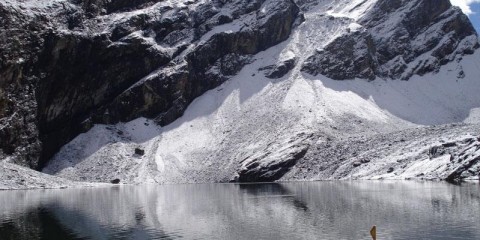
Uttarakhand, North India, Chamoli district, History, Nature, Ramayana, Temple, Trekking, Water falls
Hemkund Sahib is a pilgrim place for Sikhs. It is located at Chamoli district of Uttarakhand, India. Other name of this place is Gurudwara Sri Hemunt Sahib Ji.
What to see at Hemkund Sahib: This Gurudwara is dedicated to Guru Gobind Singh Ji. He is the 10th Sikh guru. Seven mountain peaks and glacial lake surrounds this Gurudwara. Design and architecture of this Gurudwara is the major attraction of this place. In the trekking season lakhs of people visits this place. Snow fall is heavy at this place. Every year thousands of people are becoming sick due to lack of awareness regarding altitude sickness. Best care should be taken to visit this place. Trekking is other attraction of the trip. During trip to this Gurudwara through trekking visitors can enjoy crystal clear lake, spectacular view of Himalayas, dense forests, numerous waterfalls. Weather at this place changes very fastly. In the Sikhs community, this gurudwara is highest Gurudwara of Sikhs. Shape of this Gurudwara is in star shape. Concrete Masonry and stones were used to construct this gurudwara. Sports festival celebrates during February – March every year.
Hemkund Lake: Reflection of Saptashringa peaks is so beautiful.
Lakshman Temple: Other name of this temple is Lokpal Temple. It is believed that at this place Lakshman meditated here. He feels ill at this place when he was fighting with Meghnad.
What to see around Hemkund Sahib:
Gobindghat: Pilgrimage of Hemkund Sahib Starts from this ghat. It is located between Badrinath and Joshimath. This is 5kms away from Hemkund. Because of steep gradient journey is quite arduous. Trekking from this place to Hemkund, visitors can see alpine flowers, ferns, wild roses, forests of pine, etc. Lakshman Ganga, Surging Waters Lake is also visible here.
Yogadhyan Badri: It is believed that Father of Pandavas meditated here. This is the birth place of Pandavas. It is located 19kms away from Hemkund.
Auli: This is most popular winter destination of Uttarakhand. From this place visitors can have best view of the Himalayan Mountain range. It is located 49kms away from Hemkund.
Badrinath: Major attraction of this town is Badrinath Temple. Badrinath Attractions are Badrinath Temple, Tapt Kund, Surya Kund, Charanpaduka, Brahma Kapal, Narada Kund. It is located 42kms away from Hemkund.
Joshimath: It is one among the 4 Peeths (centres). This is most sacred place to the Hindus. It was established by Adi Shankaracharya. . It is located 36kms away from Hemkund.
Valley of Flowers: Major attractions of this place are Pristine air, snow clad peaks, milky white streams, meadows and alpine shrubs. It is located 35kms away from Hemkund.
Roop Kund: The edges of the kund are covered with snow round the year. Presence of skeletons can be seen when the snow melts. No one knows why these skeletons are there. So this is called Mystery Lake.
Rudranath Temple: It is one of the Panch Kedars. It is located in the middle of the thick forest.
Tapovan: It is located 15kms away from Joshimath. Hot springs are famous here.
Getting to Hemkund Sahib: Trekking, walking or by pony are the options of visitors to reach this place. Before visiting this place tourists have to reach Govindghat via Rishikesh from Delhi. Nearest village is Ghangaria which is 13kms away from Hemkund. 1100 meters climb on 6kms of stone paved path leads to Hemkund. Nearest airport is at Delhi.
Getting around Hemkund Sahib: From Ghangaria, buses and taxis are available to reach the surrounding places.
Best time to visit Hemkund Sahib: Between October to April path to this place is covered by snow. At that time it is not possible to access this place. Remaining months is the only option to visit this place.
Where to stay at Hemkund Sahib: No accommodations are available at Hemkund. Staying at this place is not allowed. It is necessary to leave by 2 PM from this place.
Where to eat at Hemkund Sahib: Eateries will not be available at Hemkund Sahib. Eateries are available at Ghangaria.
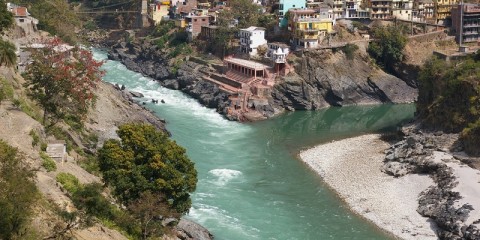
Uttarakhand, North India, Adventurous sports, Mahabharata, Nature, Panch Prayag, Pandavas, Temple, Trekking, Valley
Nandaprayag is a town in Chamoli district, Uttarakhand, India. It is one of the Panch Prayags. This is situated at the confluence of Nandakini River and Alaknanda River.
What to see at Nandaprayag: This is the second Panch Prayag. Other 4 Prayag’s are Devprayag, Rudraprayag, karnaPrayag, Vishnu Prayag. Major attraction of this place is Nandprayag Temple. Nandaprayag is located in Joshimath and Badrinath Road. Earlier this place was acted as capital city of Yadu Kingdom in Dwapar Yuga. According to the legend sayings, King Nand had meditated here to Lord Vishnu at this place. He meditated on a stone at Nandaprayag near confluence place of two rivers. This stone laid as a foundation stone for the temple of Nandaprayag.
When King Nand meditated for Lord Vishnu, Lord blessed him that he will act as his son. Lord Vishnu had given the same promise to Devki. In order to fulfil both the promises, Lord came out of Devki’s womb and brought up at King Nand. Other attraction of this place is Trekking. Rock climbing and skiing activities also conducts here.
What to see around Nandaprayag:
Gopeshwar: Temples are the major attractions of this place. Gauchar fair is most famous fair in this area. Gopeshwar Attractions are Gopinath Temple, Snow covered hill , Mountain climbing, Trekking, Anasuya Devi Temple, Tungnath Temple. Other attractions of this town of this town are mountain climbing and trekking. It is located 18kms away from Nandaprayag.
Gangeshwar Temple: This temple resides under the vast peepal tree. To reach this temple visitors have to cross the bridge over Alaknanda River.
Hanuman Chhatti: Temple is dedicated to Lord Hanuman. This is the place where Lord Hanuman appear in the form of old monkey to Bheema in Dwapar Yuga to test the strength of Bheema.
Gopalji and Chandika Maa Temple: From Nandaprayag Market a way leads to this temple. Temple is dedicated to Lord Krishna. In Chandika Maa Temple, Goddess Parvati sitting under an Umbrella.
Joshimath: It is one among the 4 Peeths (centres). This is most sacred place to the Hindus. It was established by Adi Shankaracharya. It is located 59kms away from Nandaprayag.
Chopta: This is located 45kms away from Nandaprayag. Snowfall in this place is most beautiful during the winter season. Major attractions of this place are Rock climbing, Rock craft, Snow trekking, Yoga, Trekking and Camping. For the bird watchers this is the best place. Best trekking routes of this region are Devariyatal, Tunganath and Chandrashilla.
Roop Kund: The edges of the kund are covered with snow round the year. Presence of skeletons can be seen when the snow melts. No one knows why these skeletons are there. So this is called Mystery Lake.
Rudranath Temple: It is one of the Panch Kedars. It is located in the middle of the thick forest.
Getting to Nandaprayag: Nandaprayag is well connected with road way. From the cities such as Rudraprayag, Devprayag, Dehradun, Almora, Naintal, Srinagar, Haridwar, Rishikesh, etc buses come to this place. Nearest railway station is located at Rishikesh. Nearest airport is Jolly Grant airport of Dehradun.
Getting around Nandaprayag: Buses and Taxis are available to visit the surrounding places of Nandaprayag.
Best time to visit Nandaprayag: This place can be visited at any time except during the monsoon season. Natural during the monsoon season is so beautiful with greenish colour. But during the rainy season roads are so slippery. Best time to visit this place is between March to June and October to November.
Where to stay at Nandaprayag: Plenty of hotels starting from budget to luxury hotels are available to stay in Nandaprayag.
Where to eat in Nandaprayag: Plenty of restaurants are available to eat in Nandaprayag.
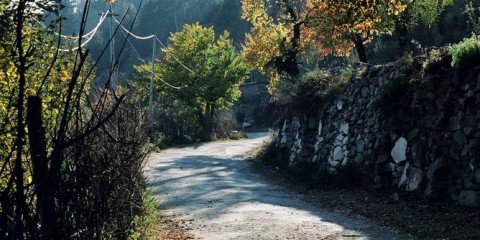
HP, North India, Nature, Temple, Trekking, Valley, Water falls, Wildlife Sanctuary
Manali Wildlife Sanctuary is located in Kullu district of Himachal Pradesh, India. It is situated 2kms away from Manali, Popular hill station. Area occupied by this sanctuary is 3,180 hectares.
What to see at Manali Wildlife Sanctuary: Major attraction of this place are colourful birds, pristine glaciers, dense forests and animals. This sanctuary includes vegetation also. Main vegetation of this place are willow trees, maple, robinia, poplar, walnut, horse chestnut, fir, deodar. While climbing in the glacier zone, visitors can see herds of ibex migrate to the sanctuary during the summer season. Summer camps conduct here. Trekking is another major attraction of this place. Best trekking trials is possible between May and June. Both simple and hard trekking trails are possible here.
This sanctuary is home to snow leopards, brown bears, monal, musk deer etc. Sanctuary is the best place to watch plenty of colourful birds. Major birds can be seen here are snow pigeon, kingfisher, Kokla, Chakor, Tree Creepers, Monal etc. During the summer season several migratory birds can also be seen here.
What to see around Manali Wildlife sanctuary:
Jagatsukh: It is located 6kms away from the sanctuary. Jagatsukh consists of several temples dedicated to Goddess Sandhya Gayatri and Lord Shiva. Earlier this place acted as capital of Kullu. Arjun Caves are another attraction here.
Naggar Castle: This was built by Raja of Kullu before 600 years. Now it was converted into heritage hotel. From this castle visitors can have excellent view of Naggar Valley. It is located 20kms away from the sanctuary.
Nehru Kund: After drinking water from the pond by Jawaharlal Nehru it was named as Nehru Kund. It is located 6kms away from the sanctuary.
Vashisht: This village is having a temple which is dedicated to Sage Vashisht who is the Guru of Lord Rama. Several sand stone temples and natural springs can be enjoyed here by the tourists. It is located 3kms away from the sanctuary.
Rahala and Rozy Waterfalls: These are located in Leh Manali Highway. Visitors are most attractive towards these waterfalls. It is located 28kms away from the sanctuary.
Manu Temple: This temple is dedicated to Sage Manu. This temple is situated in old Manali. It is believed that to recreate human life after great flood had destroyed the world sage Manu stepped off his ark here. It is located 2kms away from the sanctuary.
Hadimba Temple: This temple was having beautiful crafted 4 tiered Pagoda roof. Caved doorway is most attractive to the visitors. This temple was built in 1533 AD. It is located 1km away from the sanctuary.
Solang Valley: It is considered as good picnic spot and good ski slopes are located here. It is located 11kms away from the sanctuary.
Manali: It is popular hill station and honeymoon spot. Manali is famous for its culture, history, scenic beauty, snow covered by mountains. This valley is known as Valley of Gods. Most of the foreigners attack towards this place for adventure sport. Mecca is the best place for adventures sports. It is located 2kms away from the sanctuary.
Manali Gompa: It was built in 1960. Wall paintings and large statue of Buddha are the major attractions of this place. It is located 6kms away from the sanctuary.
Getting to Manali Wildlife sanctuary: Only way to reach this place is through road. Before reaching place one has to visit Manali. Manali Buses are well connected to Chandigarh and Delhi. Nearest railway station is located at Joginder Nagar. Nearest airport is at Bhuntar town.
Getting around Manali Wildlife Sanctuary: Elephant rides are available to explore the sanctuary. Taxis and autos are available to reach the surrounding places of the sanctuary.
Best time to visit Manali Wildlife Sanctuary: Autumn and spring seasons are the best time to visit this place.
Where to stay in Manali Wildlife Sanctuary: Staying in the tents at Gallant and Lambadug Thatch is memorable experience during summer season. Plenty of hotels, guest houses are available to stay in Manali. But Home stays is the best option for the people who want to enjoy the nature.
Where to eat in Manali Wildlife Sanctuary: Only snacks and soft drinks are available inside the sanctuary. Outside the sanctuary small eateries, restaurants are available. Plenty of restaurants are placed in Manali. All varieties of food such as Tibetan, Italian, Indian, Chinese etc are available in Manali.
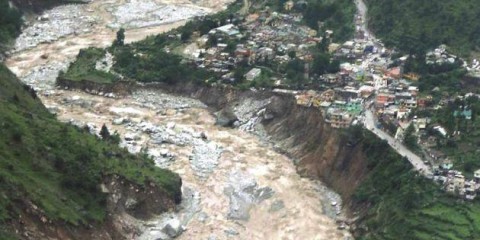
Uttarakhand, North India, Hill station, History, Hot Springs, Nature, Temple, Trekking, Valley
Chamoli district is the second district in Uttarakhand, India. This is the birth place of Chipko Movement. Chamoli is also known as Abode of Gods. Earlier name of this place is Kedar Khand. Several Hindu pilgrim places are situated here. Out of 5 prayagas, 3 are situated here and out of 5 Chota Char Dham 2 are situated here. Best scenic views are also possible here.
What to see in Chamoli:
Gopeshwar: Temples are the major attractions of this place. Gauchar fair is most famous fair in this area. Gopeshwar Attractions are Gopinath Temple, Snow covered hill , Mountain climbing, Trekking, Anasuya Devi Temple, Tungnath Temple. Other attractions of this town of this town are mountain climbing and trekking.
Auli: This is most popular winter destination of Uttarakhand. From this place visitors can have best view of the Himalayan Mountain range.
Badrinath: Major attraction of this town is Badrinath Temple. Badrinath Attractions are Badrinath Temple, Tapt Kund, Surya Kund, Charanpaduka, Brahma Kapal, Narada Kund.
Joshimath: It is one among the 4 Peeths (centres). This is most sacred place to the Hindus. It was established by Adi Shankaracharya.
Valley of Flowers: Major attractions of this place are Pristine air, snow clad peaks, milky white streams, meadows and alpine shrubs.
Vasudhara Falls: It is located 7kms away from Badrinath. These falls look like milk when it is falling. It is located in Mana Village. If visitors of this place are not pure at heart, these falls will turn away.
Yogadhyan Badri: It is located 13kms away from Badrinath. It is believed that Father of Pandavas meditated here. This is the birth place of Pandavas.
Roop Kund: The edges of the kund are covered with snow round the year. Presence of skeletons can be seen when the snow melts. No one knows why these skeletons are there. So this is called Mystery Lake.
Rudranath Temple: It is one of the Panch Kedars. It is located in the middle of the thick forest.
Tapovan: It is located 15kms away from Joshimath. Hot springs are famous here.
What to see around Chamoli:
Nandprayag: This is a sacred place at which confluence of Nandakini and Alaknanda Rivers. Nand Temple is another major attraction of this place. It is situated 17kms away from Chamoli.
Hemkund Sahib: It is located 19kms away from Chamoli. For Sikhs there are 508 important pilgrim places in India. It is one of those pilgrim places. This is the highest gurudwara of Sikh community.
Chopta: This is located 47kms away from Chamoli. Snowfall in this place is most beautiful during the winter season. Major attractions of this place are Rock climbing, Rock craft, Snow trekking, Yoga, Trekking and Camping. For the bird watchers this is the best place. Best trekking routes of this region are Devariyatal, Tunganath and Chandrashilla.
Getting to Chamoli: Chamoli is well connected with road ways. From Major destinations of Uttarakhand such as Gopeshwar, Srinagar, Ukhimath, Rudraprayag, Uttarkashi, Pauri, Rishikesh etc buses come to this place. Nearest railway station is located at Rishikesh. Nearest airport is Jolly Grant.
Getting around Chamoli: Buses and taxis are available to visit the surrounding places of Chamoli.
Best time to visit Chamoli: Different places of Chamoli have to be seen at different times. Best time to visit valley of flowers is between July and August. Best time to visit Badrinath is September to November. Best time to visit Auli is between November to March.
Where to stay at Chamoli: From Budget to luxury hotels are available to stay at Chamoli. Best hotels are available at Badrinath, Auli and Gopeshwar.
Where to eat in Chamoli: Plenty of restaurants and Dhabas are available to eat in Chamoli. At the religious places non vegetarian food is not available.
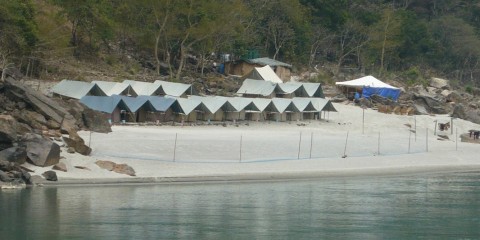
Uttarakhand, North India, Adventurous sports, Boating, Nature, Wildlife Sanctuary
Kaudiyala is a small village which is located between Srinagar Badrinath Highway and Rishikesh Uttarakhand. It is located 380meters high of sea level.
What to see at Kaudiyala: This place is famous for White water Rafting. It is stretch in the holy river Ganga. This is one of the best places for adventurous lovers. For white water rafting lovers this is the best place. At this place, visitors can experience beautiful white water, medium waves and 3 to 5 feet drop will require experience padding skills for Grade III rafters. It is also possible to do Grade IV rafting. Whiel doing Grade IV rafting, they can experience large waves considerable drops, hazards, large rocks and continues rapids. Grade IV+ rapid is situated between Kaudiyala to Marine Drive and Shivpuri. This is known as The Wall.
This is the best place for the natural lovers also. Kaudiyala is covered with fir, pine and Oak trees. Amazing experience of this place is springs and beautiful meadows falling down the mountain walls. Along with white rafting activity other attraction of this place is wild life. Visitors can see spotted deer, monkey, leopard and other animals. Other beauty of this place is flying of multi colored butterflies. Bird watching along with white water rafting is unforgettable experience. In Kaudiyala, there are some ashrams for yogis and spiritual retreats. Yogis will replenish themselves with natural energy.
What to see around Kaudiyala:
Narendra Nagar: This place has historical importance. In 1919, this city was built by Maharaja Narendra Shah. Major attractions of this place are Nandi Bull and Royal Palace. It is located 47kms away from Kaudiyala.
Haridwar: It is located 19kms away from Rishikesh. This place is a gateway to God. Major attractions of this place are Vaisho Devi Temple, Shravanathji’s temple, Gaurishankar Mahadev Temple, Bharat Mata Mandir, Daksha Mahadev Temple, Mansa Devi Temple, Chandi Devi Temple, Sapt Rishi Ashram. It is located 58kms away from Kaudiyala.
Shivpuri: Lord Shiva’s temple is the major attraction of this place. River Rafting Sports are other attraction of this place. It is located 19kms away from Kaudiyala.
Rishikesh: Rishikesh is a sacred place to Hindu devotees. People believe that Lord Rama had made a penance to Kill Ravana. Basant Panchami is a major festival of this place. Major Rishikesh Attractions are Lakshman Jhula, Triveni Ghat, Parmarth Niketan, Bharat Mandir, Lakshman Temple, Neelakanta Mahadev Temple. It is located 38kms away from Kaudiyala.
Dehradun: This place is having historical background. It is believed that this is the birth place of Dronacharya who was the Guru of Pandavas and Kauravas in the epic Mahabharata. Major Dehradun Attractions are Museum, Clock Tower, Forest Reserve Institute, Sahastradhara, Mahadev Temple, Mall Road, Tapkeshwar Mahadev Temple. It is located 522kms away from Kaudiyala.
Getting to Kaudiyala: Before reaching this place visitors have to reach Rishikesh. Rishikesh is well connected with road and railways. From Kotdwar, Dehradun, Haridwar, Pauri buses come to this place. Rishikesh railway station is well connected with all the major cities. Nearest airport is located at Dehradun.
Getting around Kaudiyala: Buses and Taxis are available to visit the surrounding places of Kaudiyala.
Best time to visit Kaudiyala: Best time to enjoy water rafting at this place is between March to June and September to November.
Where to stay in Kaudiyala: Only Budget hotels are available to stay in Kaudiyala. From budget to luxury hotels staying options are available at Rishikesh.
Where to eat in Kaudiyala: Plenty of eateries are available in Kaudiyala.
Narendra Nagar is a city in Tehri Garhwal district, Uttarakhand, India. This town came into existence in 1919, when Maharaja Narendra Shah of Tehri Garhwal moved its capital from Tehri to Narendra Nagar.
What to see at Narendra Nagar:
Nandi Bull: In North India it is the largest Nandi Bull. In 1960, this statue was sculptured by Avatar Singh Panwar.
Radha Krishna Mandir: It is another attraction of this place. This mandir was established in 1960. Perennial source of fresh water is below the temple. During summer, water becomes cool and during winter season water becomes warm.
Ananda Spa: It is located on the foothill of Himalaya. This is ayurvedic spa resort. It is the spiritual pathway to the discovery of one’s body, soul and mind. Ancient therapies of the soul and body can be experienced here.
Odathali: Since ancient times this place is famous for meditation and spirituality. At this spot, sage Udhav has done severe penance.
Viceregal Palace: It is another attraction of this place. This palace was built by Maharaja of Tehri Garhwal in 1910.
What to see around Narendra Nagar:
Haridwar: It is located 39kms away from Narendra Nagar. This place is a gateway to God. Major attractions of this place are Vaisho Devi Temple, Shravanathji’s temple, Gaurishankar Mahadev Temple, Bharat Mata Mandir, Daksha Mahadev Temple, Mansa Devi Temple, Chandi Devi Temple, Sapt Rishi Ashram.
Shivpuri: It is located 27kms away from Narendra Nagar. Lord Shiva’s temple is the major attraction of this place. River Rafting Sports are other attraction of this place.
Kaudiyala: It is located 47kms away from Narendra Nagar. This place is famous for wild life. Kaudiyala is famous for white water rafting and several adventurous sports. Rock climbing of this place also attracts several tourists to this place.
Lakshman Jhula: It is a suspension bridge which was constructed in 1939. In 1889, it was a Jute Bridge. It is believed that Lord Rama’s brother Lakshmana used this bridge to cross the Ganga River. From this place visitors can see River Ganga, Ashrams and temples. It is located 18kms away from Narendra Nagar.
Triveni Ghat: It is the confluence of 3 sacred rivers such as Saraswati, Yamuna and Ganga. People believe that taking a dip at this place will wipe off all the sins. Maha Aarti is the major attractions of this place. It is located 19kms away from Narendra Nagar.
Parmarth Niketan: It is one of the oldest Ashrams. This is famous for its Hawan on the ghats of Ganga Aarti and Parmarth which takes place in the morning and in the evening. To gain the science of Yoga several people visits this place.It is located 27kms away from Narendra Nagar.
Bharat Mandir: It is one of the oldest temples of Rishikesh. Adi Guru Shankaracharya built this temple. Lord Vishnu is worshipped here. . It is located 16kms away from Narendra Nagar.
Getting to Narendra Nagar: This is well connected with road. From Uttarkashi, Tehri, Srinagar, Haridwar, Rishikesh, Dehradun etc buses come to this place. Nearest railway station is located at Rishikesh. Buses and Taxis are available to reach Narendra Nagar from railway station. Nearest airport is Jolly Grant Airport which is located 31kms away from Narendra Nagar.
Getting around Narendra Nagar: Buses and Taxis are available to visit the surrounding places of Narendra Nagar.
Best time to visit Narendra Nagar: In the month of May heat at this place is unbearable. Remaining all the months of the year are best months to visit this place.
Where to stay in Narendra Nagar: plenty of accommodations are available to stay in Narendra Nagar starting from Budget to Luxury hotels.
Where to eat in Narendra Nagar: Best option to have food is in house restaurants of the hotels.
Rishikesh is a sacred place to Hindu devotees. It is located in Dehradun district, Uttarakhand, India. Haridwar, Pauri Garhwal, Tehri Garhwal districts surrounds this city. People believe that Lord Rama had made a penance to Kill Ravana. Along with Yamunotri, Badrinath, Gangotri and Kedarnath it is called Chota Char Dham. City is named after Lord Vishnu. Basant Panchami is a major festival of this place. This place is also famous for adventurous activities.
What to see at Rishikesh:
Lakshman Jhula: It is a suspension bridge which was constructed in 1939. In 1889, it was a Jute Bridge. It is believed that Lord Rama’s brother Lakshmana used this bridge to cross the Ganga River. From this place visitors can see River Ganga, Ashrams and temples.
Triveni Ghat: It is the confluence of 3 sacred rivers such as Saraswati, Yamuna and Ganga. People believe that taking a dip at this place will wipe off all the sins. Maha Aarti is the major attractions of this place.
Parmarth Niketan: It is one of the oldest Ashrams. This is famous for its Hawan on the ghats of Ganga Aarti and Parmarth which takes place in the morning and in the evening. To gain the science of Yoga several people visits this place.
Bharat Mandir: It is one of the oldest temples of Rishikesh. Adi Guru Shankaracharya built this temple. Lord Vishnu is worshipped here.
Lakshman Temple: It is another ancient temple of this place. At this site Lakshman performed Tapa. It is believed that Lord Rama and Lakshmana built a twing bridge near this temple while they were going to Himalayas. Rishi Kund is the major attraction of this place. Lord Rama and Lakshmana had taken bath here to wipe off all the sins of killing Demon Ravana.
Neelakanta Mahadev Temple: Lord Shiva is worshipped here. It is located on the top of the hill. From this place, people can have a spectacular view of Brahmakoot, Manikoot and Vishnukoot.
Other attractions of Rishikesh: Other attractions of Rishikesh are Tera Manzil Temple, Swarg Ashram Area, Shri Tryambakeshwar Temple, and Kali Kambliwale.
What to see around Rishikesh:
Narendra Nagar: This place has historical importance. In 1919, this city was built by Maharaja Narendra Shah. Major attractions of this place are Nandi Bull and Royal Palace.
Haridwar: It is located 19kms away from Rishikesh. This place is a gateway to God. Major attractions of this place are Vaisho Devi Temple, Shravanathji’s temple, Gaurishankar Mahadev Temple, Bharat Mata Mandir, Daksha Mahadev Temple, Mansa Devi Temple, Chandi Devi Temple, Sapt Rishi Ashram.
Shivpuri: It is located 19kms away from Rishikesh. Lord Shiva’s temple is the major attraction of this place. River Rafting Sports are other attraction of this place.
Kaudiyala: It is located 38kms away from Rishikesh. This place is famous for wild life. Kaudiyala is famous for white water rafting and several adventurous sports. Rock climbing of this place also attracts several tourists to this place.
Getting to Rishikesh: Rishikesh is well connected with road and railways. From Kotdwar, Dehradun, Haridwar, Pauri buses come to this place. Rishikesh railway station is well connected with all the major cities. Nearest airport is located at Dehradun.
Getting around Rishikesh: Town can be explored on foot. Buses and taxis are available to visit the surrounding place of Rishikesh.
Best time to visit Rishikesh: In the month of May heat at this place is unbearable. Remaining all the months of the year are best months to visit this place.
Where to stay in Rishikesh: From budget to luxury hotels staying options are available at Rishikesh. Cost of luxury hotel is Rs.6000 per night and cost of Budget hotel is Rs.800 per night.
Where to eat in Rishikesh: Most of the people come to this place to see the temples or for Yoga. Generally they will not prefer for non vegetarian. So, visitors can experience vegetarian experience at this place. Continental and Italian Food are available at Selected Places.
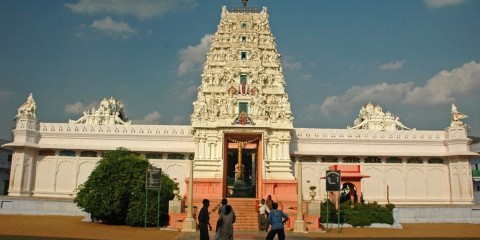
Rajasthan, North India, Architecture, Camal Safari, Fort, History, Miniature Paintings, Nature, Palace, Temple
Pushkar is a town in Rajasthan, India. It is one of the 5 sacred dhams for Hindu devotes. Pushkar is located on the shores of Pushkar Lake. This lake has 52 ghats. Pushkar means Blue Lotus Flower. Annual fair i.e Pushkar Camel Fair is famous at this place. This fair celebrates during November. Other fairs of this place are Blue Lotus Festival, Tejaji Fair, and Nagaur Fair.
What to see at Pushkar:
Brahma Temple: Lord Brahma, Creator of the World, is worshipped here. It is one of the sacred places to the Hindus. Inside the temple visitors can see Silver Carved Turtle and Life sized four armed idol of Lord Brahma. This temple was constructed in 14th century. Other attractions of this temple are Lord Brahma’s vehicle, image of swan, marble floors, stone slabs, red spire, and raised platform.
Pushkar Lake: It is considered as one of the most sacred lakes for Hindus. People believe that, origin of this lake is from the lotus petals of Lord Brahma. Visitors of this lake can see 52 bathing Ghats, 400 temples, 52 Palaces. It is believed that having bath in this lake will wipe off all the sins.
Savitri Temple: Temple is dedicated to Savitri, consort of Lord Brahma. Trekking is essential to reach this temple. From this place visitors can have spectacular view of Sand Dunes and Pushkar Lake.
Man Mahal: Rajasthani Architecture can be seen on this mahal. It was built by Raja Man Singh of Amber. Currently it is acting as tourist bungalow of the Rajasthan Tourism Development Corporation.
Rangji Temple: Lord Rangji who is the incarnation of Lord Vishnu is worshipped here. Mughal Architecture and South Indian Architectural styles can be seen here. Images of Lord Vishnu mount and Garuda can be seen here.
Pushkar Bazaar: This is the best place for shopping lovers. Major attractions of this place are handicraft items, glass lamps, brass utensils, embroidery shoes, Curios, decorative accessories and pieces, puppets, Rajasthani Costumes etc.
Other attractions of Pushkar: Other attractions of Pushkar are Mahadeva Temple, Varaha Temple, Aptaeswar Temple, Raghunath Temple, Naga Pahar, and Pap Mochani Temple.
What to see around Pushkar:
Ajmer: It is located 15kms away from Pushkar. . Aravalli Mountains covers this city. This is the holy place for both Hindus and Muslims. Ajmer Attractions are Dargarh Sharif, Taragarh, Archaeological Museum, Ana Sagar Lake, Rani Mahal, Nasiyan Jain temple, Akbar’s Palace.
Kishangarh: Rathores rules this place. This fort consists of Phool Mahal which is now converted into hotel. Major attractions of this fort is Kishangarh Art i.e. Miniature Painting style. Rich stone house of marbles can be seen here. It is located 42km away from Pushkar.
Roopangarh: In 1648, this fort was built by King Roop Singh of Kishangarh. It is nine turreted fort. Several architectural styles can be seen here. It is located 59kms away from Pushkar.
Merta: This place is famous for Palaces and Temples. Merta is founded 400 years ago. In the desert area it is major trading post. Major attractions of this place are Meera Bai Temple, Bhanwal Mata Temple, and Aurangzeb Mosque. It is located 51kms away from Pushkar.
Getting to Pushkar: Only way to reach this place is through road way. From Delhi, Udaipur, Jodhpur etc buses come to this place. Nearest railway station is located at Ajmer. Nearest airport is located at Jaipur.
Getting around Pushkar: Walking is the best way to visit the places of Pushkar . Bikes were available to visit the surrounding places of Pushkar. Buses and Taxis are also available to visit surrounding places of Pushkar.
Best time to visit Pushkar: Best time to visit Pushkar is between October to March.
Where to stay in Pushkar: Only budget hotels are available to stay in Pushkar.
Where to eat in Pushkar: Plenty of garden restaurants are available here. Famous foods of this place are mouth watering kormas, dal – bati- churma, papad ki Sabzi. Buffet meals are popular here.
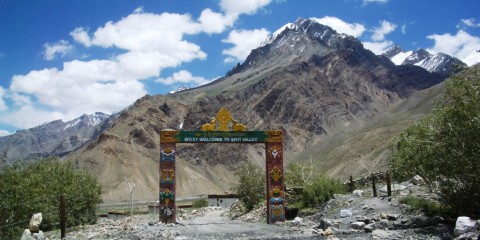
HP, North India, Adventurous sports, Architecture, Buddhist Monestery, Buddhist Stupas, Buddhist temples, Lahaul and Spiti district, Nature, Trekking, Valley, Wildlife Sanctuary
Spiti along with Lahaul forms a district in Himachal Pradesh. Spiti is famous for monasteries and adventurous activities. For Buddhism people this is one of the important places to visit.
What to see at Spiti:
Ki Monastery: In the Spiti Valley this is the largest monastery. This monastery is famous for wind instruments, stucco images, rare manuscripts, thangkas, and murals. This monastery is dates back to 1000 years. This is the best place for Pasada Style of architecture.
Tabo Monastery: It is known as Ajanta of Himalayas. Richen Zangpo, great scholar, founded this monastery. UNESCO declared this monastery as world heritage site. This monastery belongs to 10th century. Major attractions of this monastery are Stucco, Wall painting Tankhas, pieces of art, rare collection of scriptures.
Flora and Fauna: Flora and Fauna is another attraction of this valley. For the wildlife lovers major attractions are Snow leopard, Himalayan Blue Sheep, Musk deer, Himalayan Brown Bear, ibex etc. Wild flower species of this place are Krascheninikovia ceratoides, Caragana Brevifolia, Crepis Flexuosa, Seseli trilobum, Causinia thomsonii. 62 species of medicinal plants also can be seen here.
Yak Safari: It is one of the adventurous activities. This is most adventurous activity of this place. To see the flora and fauna of this region, people can hire Yaks. Horse safari also conducts here.
Skiing: In Spiti it is popular adventure sport. This game provides thrilling experience. In the recently this game developed very much in India.
To-do-Trails: Trekking is another major attraction of this place. Some of the popular trekking routes are Kaza- Tabo- Sumdo- Nako, kaza- Losar- Kunzum- La, Kaza- Ki- Kibber- Gete- Kaza, Kaza- Langza- Hikim- Komic- Kaza.
Kaza: It is the base point for trekking. Places to visit in Kaza are Hikkim Monastery and Sa Kya Pa Sect monastery. It is situated 13 kms away from Kibber.
Other attractions of Spiti: At the base of the Kunzam Range Spiti river originates. Spiti has number of monasteries such as Giu, Mane Gogma, Sagnam, Ki, Tabo, Gungri, Mud and Lidang.
What to see around Spiti:
Lahaul: Lahaul along with Spiti forms a district. Rohtang Pass connects Manali and Lahaul and Spiti districts. This place is famous for Buddhist monasteries and adventurous activities. Lahaul Attractions are Keylong, Kunzam Pass, Kibber, Gondla, Khardong Gompa, Udaipur,Triloknath Temple.
Pin Valley: It is located on the banks of river Pin. Major activities in this place are archery competitions and Horse racing. Most of the tourists attracts towards Chamurti Horses. It is a part of Spiti Valley. It is located 17kms away from Spiti.
Tandi: It is located 8 Kms away from Keylong. This is famous for Chitwan National park.
Kibber Wildlife Sanctuary: In India it is only cold desert wild life sanctuary which is located on the banks of River Spiti. Area covered by this sanctuary is 1400 sq.kms. Very rare animals such as blue sheep, snow leopard, ibex etc can be seen here. Bird species such as bearded eagle griffons, snow cock are major attraction in this sanctuary.
Getting to Spiti: Spiti is well connected with road. It is located 11kms away from Manali. From Kaza, Leh, Chandigarh, Delhi etc buses come to this place. Nearest railway head is located at Jogindernagar. From this station taxis are available to reach Spiti. Nearest airport is located at Bhuntar Airport.
Getting around Spiti: Taxis and cabs are available to visit the places in and around of Lahaul.
Best time to reach Spiti: Best time to visit this place is between mid may to mid October.
Where to stay in Spiti: Plenty of staying options are available at Kaza. Luxury accommodations are also available here. Few monasteries are providing rooms to stay. Best luxury hotels are Spiti Hotel, Delek House, Heavens Inn Spiti.
Where to eat in Spiti: plenty of restaurants are available here. Some restaurants are offering continental, Gujarati and Punjabi cuisines.
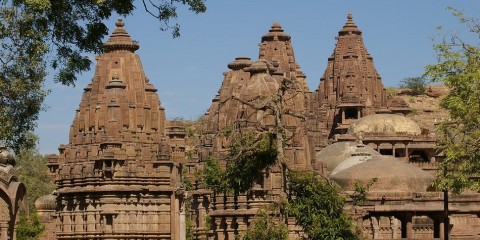
Rajasthan, North India, Architecture, Fort, History, Jodhpur, Musuem, Nature, Temple
Mandore is located in Rajasthan, India. It is one of the ancient towns in Rajasthan. In 6th century it was ruled by Gurjar Partihar dynasty. It is the birth place of several notable peoples such as Padma Sri Kailash Sankhala, Ashok Gehlot, Justice Shri Kan Singh Parihar. Major festivals of this place are Bhogishell Parikrama, Veerpuri Mela, Naag Panchami, Veerpuri Mela, Naag Panchami, Hariyali Amavasya, The Rao Festival.
What to see at Mandore:
Mandore Fort: This place has several historical monuments. Major attraction of this place is Madore Fort. This fort is famous for its architecture. Walls of this fort are very thick and substantial size. Major attraction of this fort is an ancient temple. Temple is carved with planets, animals, birds, botanical designs.
Madore Gardens: This garden consists of Charming temples and memorials. Another attraction of this place is high rock terraces. Chhatris of several rulers are placed here. Of all the Chhatris, major attraction of Chhatris is Chhatris of Maharaja Ajit Singh. It was built in 1793.
Government Museum: It is located in Mandore Garden. Plenty of artefacts can be seen here. Major attraction of this museum is The Temple of 33 crore Gods. Images of several Hindu Gods can be seen here.
What to see around Mandore:
Mehrangarh Fort: In India, this is one of the largest forts. Within the fort there are several palaces. Most famous palaces of the fort were Sheesh Mahal, Phool Mahal, Moti Mahal, Daulat Khana, Sileh Khana. Major attractions of this fort are impressive armoury, furniture, costumes, instruments, folk music, miniature paintings, royal cradles, howdas, and collection of palanquins. It is located in Jodhpur which is 6kms away from Mandore.
Jodhpur: Jodhpur is the second largest city of Rajasthan state, India. This place is famous for several temples, forts, Palaces. Jodhpur Attractions are Mehrangarh Fort, Girdikot & Sardarkot Market, Government Museum , Umaid Garden, Umaid Bhawan Palace, Jaswant Thada, Maha Mandir Temple. It is located 6kms away from the town.
Balsamand Lake & Palace: It is located 5kms away from this town. Lake is artificially made by man. It is one of the best picnic spot during the summer season.
Sardar Samand Lake and Palace: Earlier this place was acted as hunting spot by the royal families. Major attractions of this place are Chinkaras and black bucks. It is located 5kms away from this town.
Guda Bishnoi: It is located 21kms away from this town. This village is famous for flora and fauna. Local people worship Lord Vishnu and they lead vegetarian lifestyle. Major attractions of this place are Cranes, Peacocks, Chinkaras, antelopes, black bucks.
Rohetgarh: It is located 15kms away from Mandore. In 16th century this place was acted as Champawat Fort. Now it is converted into premium heritage hotels.
Getting to Mandore: Mandore is well connected with road. From Udaipur, Jaisalmer, Jaipur, Delhi, Ajmer, Ahmedabad, etc buses come to this place. Nearest railway station is located at Jodhpur. Jodhpur railways are well connected with Kota, Bangalore, Chennai, Delhi, Mumbai, Jaipur, Lucknow, Guwahati, Puri, Ahmedabad. Nearest airways is located at Jodhpur. Jodhpur airport is well connected with Mumbai, Delhi, Udaipur and Jaipur.
Getting around Mandore: Buses and autos are available to visit the places in and around places of Mandore.
Best time to visit Mandore: Best time to visit Mandore is between November to March.
Where to stay in Mandore: Plenty of accommodations are available at Mandore to stay. Budget, midrange, hotels are available to stay in Mandore.
Where to eat in Mandore: Plenty of restaurants in Mandore.
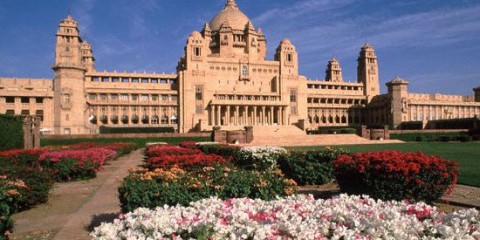
Rajasthan, North India, Architecture, Fort, History, Jodhpur, Musuem, Nature, Palace, Temple, Wildlife Sanctuary
Jodhpur is the second largest city of Rajasthan state, India. This place is famous for several temples, forts, Palaces. Other name of this city is Sun City. It was founded by Rao Jodha in 1459. He is the Rajput Chief of Rathore Clan. Major festivals of this place are Marwar festival, Jodhpur international Desert Kite Festival.
What to see in Jodhpur:
Mehrangarh Fort: In India, this is one of the largest forts. Within the fort there are several palaces. Most famous palaces of the fort were Sheesh Mahal, Phool Mahal, Moti Mahal, Daulat Khana, Sileh Khana. Major attractions of this fort are impressive armoury, furniture, costumes, instruments, folk music, miniature paintings, royal cradles, howdas, and collection of palanquins.
Girdikot & Sardarkot Market: This market is famous for fine Rajasthani Jewellery, marble knick knacks with decorative works, clay elephants, clay camels, handicrafts, Rajasthani Textiles.
Government Museum: It is located in the middle of Umaid Public Garden. This museum is famous for miniature paintings, local arts & crafts, textiles and ornaments. Other attractions of this museum are images of Jain Tirthankars, manuscripts, portraits of rulers.
Umaid Garden: Major attractions of this garden are fountains, seasonal flowers, roses, towering Ashoka Trees, Green Lawns. Area covered by this garden is 82 acres. Inside the garden visitors can see museum, a Zoo and a library.
Umaid Bhawan Palace: Maharaja Umaid Singh builds this palace with the intension to help the people who were suffering from famine. In 1977, part of this palace was converted into hotel. Remaining part was converted into museum.
Jaswant Thada: It was built in 19th century. White marble was used in the construction of Jaswant Thada. At this place visitors can see several portraits of Jodhpur rulers.
Maha Mandir Temple: Architecture of this temple is the major attraction of this temple. It was supported by 84 pillars. Pillars were decorated with several designs. Pictures of several Yogasanas can also be seen here.
What to see around Jodhpur:
Mandore: It is located 9kms away from the city. Earlier this place was acted as capital to Marwar. It is a true Oasis in the desert. This place is known as Hall of Heroes. Major attraction of this place is deities carved out of single rock.
Balsamand Lake & Palace: It is located 16kms away from the city. Lake is artificially made by man. It is one of the best picnic spot during the summer season.
Sardar Samand Lake and Palace: Earlier this place was acted as hunting spot by the royal families. Major attractions of this place are Chinkaras and black bucks.
Guda Bishnoi: It is located 25kms away from the city. This village is famous for flora and fauna. Local people worship Lord Vishnu and they lead vegetarian lifestyle. Major attractions of this place are Cranes, Peacocks, Chinkaras, antelopes, black bucks.
Rohetgarh: It is located 40kms away from Jodhpur. In 16th century this place was acted as Champawat Fort. Now it is converted into premium heritage hotels.
Getting to Jodhpur: Jodhpur is well connected with road, railway and airways. From Udaipur, Jaisalmer, Jaipur, Delhi, Ajmer, Ahmedabad, etc buses come to this place. Jodhpur railways are well connected with Kota, Bangalore, Chennai, Delhi, Mumbai, Jaipur, Lucknow, Guwahati, Puri, Ahmedabad. Jodhpur airport is well connected with Mumbai, Delhi, Udaipur and Jaipur.
Getting around Jodhpur: Buses and autos are available to visit the places in and around places of Jodhpur.
Best time to visit Jodhpur: Best time to visit Jodhpur is between November to March.
Where to stay in Jodhpur: Plenty of accommodations are available at Jodhpur to stay. Budget, midrange, luxury and heritage hotel are available to stay.
Where to eat in Jodhpur: Plenty of restaurants in Jodhpur. This place is famous for sweets. Famous sweets of this place are Maakhan Vade, Besan Ki Chaaki, and Mawa Kachori. Famous food is Mirchi Badas.
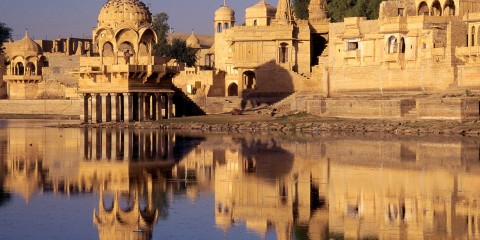
Rajasthan, North India, Camal Safari, Fort, Havelis, History, Nature, Sand Dunes, Temple
Jaisalmer is located in Rajasthan, India. Other name of this place is Golden City. It is situated on the heart of the Thar Desert. City is named after Maharawal Jaisal Singh who was the founder of the city. This city was founded in 1156AD. This city consists of yellow sand. Due to this city looks so beautifully in yellowish Golden shade. This city is famous for camel safaris and Sand Dunes. Worth buying things of this place are woven Jackets, leather items, textiles, wooden boxes, antique stone works etc.
What to see in Jaisalmer:
Jaisalmer Fort: Fort city played a major role in the trade with Africa, Egypt, Arabia and Persia. Fort is having 4 gateways. It was built in 1156 AD. Walls are made up of Yellow sand stone. Within the fort visitors can see several Jain Temples and beautiful havelis. All are dates back to 12th to 15th centuries.
Manak Chowk: It is the local market. This is the best place for shopping lovers. Narrow lanes from this market leads to some of the old Havelis.
Salim Singh Ki Haveli: Salim Singhji was the Prime Minister of Jaisalmer Princely state. This haveli is well known for murals painted on the walls. Cement and mortar are not used in the construction of this Haveli. Stones were joined by groove and tongue joints.
Patwon Ki Haveli: This haveli is well known for Rajputana architecture and carved pillars. One of the apartments of this Haveli is decorated with murals which depicted historical Scenes.
What to see around Jaisalmer:
Bara Bagh: It is located 6kms away from Jaisalmer. This is situated on the banks of Gadsisar Sagar Tank. Bara Bagh can be seen in the middle of the golden desert sands. It is little stretch of lush green Oasis.
Desert National Park: It is located 16kms away from Jaisalmer. This is one of the largest national parks of India. Area covered by this park is 3100 Sq.kms. Park is well known for unique flora and fauna and for delicate ecosystem.
Akal Wood Fossil Park: It is located 17kms away from Jaisalmer. Rare fossils can be seen here. Visitors can have a look at natural flora and fauna fossils. These are 160 million years old.
Sam Sand Dunes: It is located 39kms away from Jaisalmer. This is one of the major attractions near this city. Sam Sand Dunes is famous for Camel safaris. Sunset at this place is most attractive.
Tazia Tower: It is 5 floored towers. This is famous for carved balconies.
Gadsisar Sagar Tank: It is located just 2kms away from the city. This is one of the major attractions near Jaisalmer. It is famous picnic spot. During the winter season this is the best place for the natural and bird lovers. Plenty of migratory birds can be seen here.
Getting to Jaisalmer: Jaisalmer is well connected with road, railways and airways. From Barmer, Pokhran, Bikaner, Jodhpur etc buses come to this place. Along with ordinary buses, deluxe buses also come to this place. City is well connected with Mumbai, Delhi, Jaipur, Agra through railway lines. From the city centre, airport is 5kms away. This airport is well connected with Jodhpur, Jaipur, Delhi. Nearest international airport is located at New Delhi.
Getting around Jaisalmer: Rickshaws and Taxis are available to visit the places of this city. Buses and Taxis are available to visit the surrounding places of Jaisalmer.
Best time to visit Jaisalmer: Best time to visit this place is between October to March. During January and February, desert festival celebrates. At this time tourist rush is more.
Where to stay in Jaisalmer: Budget, midrange, luxury, heritage hotels are available to stay here. Desert camps are other attraction to stay here.
Where to eat in Jaisalmer: Plenty of restaurants are available here. Famous food items of this place are murgh-e-subz, ker sangri, bhanon aloo and Kadi Pakora.
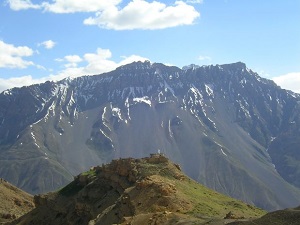
HP, North India, Buddhist Monestery, Hill station, Lahaul and Spiti district, Nature, Trekking
Koumik is the highest village in Asia. It is situated in Lahaul Spiti district, Himachal Pradesh, India. This village is surrounded with snowbound mountains.
What to see in Koumik: Koumik is famous for Lundup Tsemo Gompa. Other major attraction of this place is highest motorable Buddhist Monastery in the world. It is the double storied Buddhist Monastery. This place is famous for the natural and trekking lovers. Visitors of this place will be surprised to find the modern amenities that even the villages in other parts of the country enjoy missing. Festivals are the major attractions of this place. Mask dance is the major attraction of festivals. Lamas perform this dance. Worth buying things of this place are paintings, jackets, caps, Shawls, Carpets etc. Star gazing is so popular at this region. Carrying telescope is added thrilling experience.
What to see around Koumik:
Ki Monastery: In the Spiti Valley this is the largest monastery. This monastery is famous for wind instruments, stucco images, rare manuscripts, thangkas, and murals. This monastery is dates back to 1000 years. This is the best place for Pasada Style of architecture. It consists of 3 floors. Small rooms in the monastery are allotted to monks. Underground is used as storage and Ground Floor is used as assembly hall. It is located 21kms away from Koumik.
Kaza: It is the base point for trekking. Places to visit in Kaza are Hikkim Monastery and Sa Kya Pa Sect monastery. It is located 21kms away from Koumik.
Dhankar Monastery: Main intension to build this fort is to keep an eye on enemies and enjoy the Spiti Valley by seeing from this place. Old temple in Dhankar is known as Lha O Pa Gompa. It is located 54kms away from Koumik.
Pin Valley: It is located on the banks of river Pin. Major activities in this place are archery competitions and Horse racing. Most of the tourists attracts towards Chamurti Horses. It is a part of Spiti Valley.
Kunzam Pass: Height is 4590 meters above the sea level. It is the gateway to Spiti Valley. It offers best view of Shigri Parbat.
Langza: It is located 8kms away from Koumik. Langza is known as maritime fossils.
Lahaul Valley: Major attraction of this valley is Greenery. Gateway to Lahaul is Rohatang Pass.
Kibber: Kibber is a small village in the Spiti Valley in Himalayas. Kibber lies on summit of a limestone rock. Lush Green fields and agricultural forms are abundant. Major crops are Peas and Barley. This place is famous for monasteries, barren splendour, and scenic mountains. Plenty of fossils present in and around Kibber. It is located 31kms away from Koumik.
Getting to Koumik: Only way to reach this place is through road way. Bus services are available between shimla via kaza and Kinnaur. Route from Shimla to Kaza opens only between May to October. Komic and Kaza are 10kms away from Koumik. From Kaza regular buses are available. Nearest railway station is located Jogindernagar. Nearest broad gauge railway stations are Chandigarh and Shimla. Taxis and buses are available from the railway station to Lossar. By airways Spiti can be reached either from Shimla or from Manali. Nearest airports are located at Manali and Shimla.
Getting around Koumik: Koumik can be explored on foot. Buses and Jeeps are available to visit the surrounding places of Koumik.
Best time to visit Koumik: Best time to visit Koumik is between May to October. Due to snow fall Rohtang Pass which is the entry for koumik will remain closed during the remaining seasons.
Where to stay in Koumik: Only options to stay here is home stays. For budget, midrange and luxury hotels are available at Kaza.
Where to eat in Koumik: Locals provide food to the visitors of this place. No restaurants are available here.
After entering in Spiti Valley from Kunzum Pass, Lossar is the first village. It is located in Lahaul and Spiti district, Himachal Pradesh, India. It is located near Spiti River. Culture of this place is same that of Tibet. Buddhism culture dominates at this place. Tibetan Style of dresses can be seen here. This place is also known as Little Tibet.
What to see in Lossar: Major attraction of this place is Lossar Gompa. This is a sacred place for the Buddhist monks. During the festival season of this gompa tourists rush is more. Celebrations of this festival include music and dance of the villagers. Lamas and Monks also participate in this dance and music programmes. Other attraction of this festival is Yak dance.
This is one of the best places for natural lovers. It is surrounded by glacial mountain ranges, large spread meadows, Spiti River. This is the starting point for trekking to Chandra Tal. Shopping lovers can have wooden crafts, woollen jackets, Caps, Shawls and art works. Across India demand for Pure Pashmina Shawls is huge.
What to see around Lossar:
Ki Monastery: In the Spiti Valley this is the largest monastery. This monastery is famous for wind instruments, stucco images, rare manuscripts, thangkas, and murals. This monastery is dates back to 1000 years. This is the best place for Pasada Style of architecture. It consists of 3 floors. Small rooms in the monastery are allotted to monks. Underground is used as storage and Ground Floor is used as assembly hall. It is located 57kms away from Lossar.
Kaza: It is the base point for trekking. Places to visit in Kaza are Hikkim Monastery and Sa Kya Pa Sect monastery. It is located 57kms away from Lossar.
Dhankar Monastery: Main intension to build this fort is to to keep an eye on enemies and enjoy the Spiti Valley by seeing from this place. Old temple in Dhankar is known as Lha O Pa Gompa.
Pin Valley: It is located on the banks of river Pin. Major activities in this place are archery competitions and Horse racing. Most of the tourists attracts towards Chamurti Horses. It is a part of Spiti Valley.
Kunzam Pass: Height is 4590 meters above the sea level. It is the gateway to Spiti Valley. It offers best view of Shigri Parbat. It is located 17kms away from Lossar.
Langza: It is located 67kms away from Lossar. Langza is known as maritime fossils.
Lahaul Valley: Major attraction of this valley is Greenery. Gateway to Lahaul is Rohatang Pass. It is located 58kms away from Lossar
Getting to Lossar: There are two ways to reach Lossar, one way is from Manali and other way is from Shimla. The route from Shimla to kaza via Lossar remains open between May to October. Nearest railway station is located Jogindernagar. Nearest broad gauge railway stations are Chandigarh and Shimla. Taxis and buses are available from the railway station to Lossar. By airways Spiti can be reached either from Shimla or from Manali. Nearest airports are located at Manali and Shimla.
Getting around Lossar: Lossar can explore on foot. Buses and Jeeps are available to visit the surrounding places of Lossar.
Best time to visit Lossar: Best time to visit Lossar is from May to October.
Where to stay in Lossar: Budget hotels are available to stay in Lossar. HP tourism guest house is also available here.
Where to eat in Lossar: Limited restaurants are available here. Tibetan and Indian Food are available to eat.
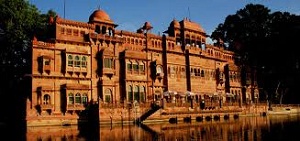
Rajasthan, North India, Architecture, Camal Safari, Fort, History, Musuem, Nature, Palace, Sand Dunes, Temple, Wildlife Sanctuary
Bikaner is a place in Rajasthan, India. Rao Bika was founded this city. This place is famous for snacks and sweets. Other name of this city is Camel Country. Major attraction of this place is Camel rides. Major festivals of this place are Camel Festival, Gangaur Festival, Kite festival, Kapil Muni fair, Holi, Jambeshwar Fair. This is one of the best places for shopping lovers also. Worth buying things are Nokha Quilts, wooden antiques, Kundan work fabrics, Lacquer Bangles, Jewellary, clothing’s etc.
What to see in Bikaner:
Jain Temple: This temple is dedicated to Shri Sumatinathji. He is the 5th Thirthankar. It was constructed in 15th century with white marble and sandstone. Major attractions of this temple are mirror work, fresco, leaf painting, Religious painting.
Junagarh Fort: Raja raj Singh founded this fort between 1588 to 1593. Major attractions of this place are Rang Mahal, Ganga Mahal, Dungar Mahal, Diwan-e-khas, Badal Mahal, Phool Mahal, Chandra Mahal, Hawa Mahal, Anup Mahal. Architecture of this fort is so beautiful.
Lalgarh Palace: In the memory of Maharaja Lal Singhji it was built by Maharaja Ganga Singh. European, Mughal, Rajput architecture can be seen on this palace.
Moolnayakji Temple: In Bikaner, this is the first Vaishnav Temple. It was built in 1486.
Ganga Golden Jubilee Museum: Major attractions of this place are antique carpets, Royal Bikaner Train, traditional Rajasthani musical instruments, terra cotta ware.
Laxminath Temple: It is one of the oldest temples of this place which was built by Rao Bikaji in 1488.
Deshnok Temples: Other name of this place is Karni Mata Temple. Silver door of this temple is one of the attractions of this temple. Rats feed here. In the temple premises rates can be seen.
Rajasthan State Archives: This place is well known for historical wealth records. Attractions of this place are Khatoot, Arzdasht , Vakil Report, Akbarat, Manshurs, Nishans, Persian Farmans.
Shiva Bari Temple: Major attractions of this place are Huge Idol of Lord Shiva and wall paintings of Nandi Bull facing Shiva lingam. Beautiful columns, Pavilions and domes are other attractions of this place.
Other attractions of Bikaner: Other attractions of Bikaner are Bhandeswari Jain Temple, Jain Havelis, Sadul Museum, Ganga Singh Museum, Prachina Museum, Gajneer Palace, and Camel Breeding Farm.
What to see around Bikaner:
Devi Kund: It is located 8kms away from Bikaner. Number of Cenotaphs can be seen here. Major attraction of this place is Chhatri of Maharaja Surat Singh. Rajput Paintings on the ceilings are also worth seeing.
Gajner Wildlife sanctuary: It is located 32kms away from Bikaner. Major attractions of this place are antelopes, desert foxes, wild boar, hares, wildfowl etc
Katariasar Village: It is located 45kms away from Bikaner. Herds of Partridges, Parrots, Peacocks, Rabbits etc can be seen here. Major attraction of this place is sand dunes. Fire dances looks so lovely.
Getting to Bikaner: Ways to reach this place is through road and railways. From Jaisalmer, Jodhpur, Jaipur etc buses come to this place. From Allahabad, Jaipur, Agra, Kolkata etc trains come to this place. Palace on Wheels so luxurious trains also connect this place. Nearest airport is located at Jodhpur which is 240kms away from Bikaner.
Getting around Bikaner: Tourists taxis, Rented Vehicles, Autos well connected different places of Bikaner. Buses and private vehicles are available to visit the surrounding places of Bikaner.
Best time to visit Bikaner: Best time to visit Bikaner is between November to February.
Where to stay in Bikaner: Plenty of hotels are available to stay in Bikaner. Forts, Havelis, Royal Palaces are available for royal treatment.
Where to eat in Bikaner: Plenty of restaurants are available to have food at Bikaner. Churma, Bati and Dal are famous food. Camel milk made sweets is also famous here.
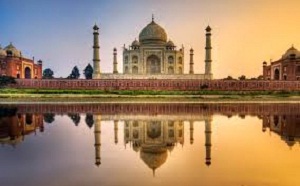
UP, North India, 7 Wonders, Architecture, Fort, History, Mughal, Nature, Palace, Shah Jahan, Temple, Tomb
Agra is a city in Uttar Pradesh, India. Once, this place acted as capital of Hindustan. It is located on the banks of Yamuna River. In the Epic Mahabharata, name of this city was Agrevana. This city was built in 1475. Lodhi and Mughals dominated this region during their reign. Shopping lovers can buy rare handicraft items, embroidery works, exquisite jewellery, leather bags, belts, shoes etc.
What to see in Agra:
Taj Mahal: It is the major attraction of Agra. This is one of the Seven Wonders of the World. In the memory of Mumtaz, this was built by her husband Shah Jahan, Mughal Emperor. This is the best example for the Mughal architecture. It was built with marble white stone.
Agra Fort: It is one of the attractions of Agra. This was built with brick. It was the residence place of Sikandar Lodi when he shifted his capital from Delhi to Agra.
Tomb of I’timad-ud-Daulah: In this city it is the Mughal mausoleum. It is also known as Baby Taj. Visitors of this place can see gardens and outbuildings along with main building. Mughal architecture can be seen here.
Tomb of Akbar: It was built between 1605 to 1613. This is situated at Sikandra. Minarets of this tomb are similar to Taj Mahal. It was built with Red Sandstone. This is one of the best examples for Mughal Architecture.
Mehtab Bagh: It is the garden complex consisting of 25 fountains. This is located opposite to Taj Mahal.
Chini Ka Rauza: At this place tomb of Allama Afzal Khan Mullah is situated. He was the Prime Minister of Shah Jahan. In 1635 this tomb was built.
Jama Masjid: It is one of the largest mosques in India which was built in 1648 by Shah Jahan. It is dedicated to his daughter Jahanara Begum.
Ram Bagah: It is oldest Mughal Garden. In 1528, this was built by Babur, Mughal Emperor. Babur was temporary buried here. Canals and pathways are attractions of this place.
Musamman Burj: It is located in Agra Fort. This is a beautiful octagonal tower. It is situated close to Diwan-e-Khas, Private Hall of Shah Jahan.
Mankameshwar Temple: Lord Shiva is worshipped here. It is one of the ancient temples in Agra. Shivalingam is covered with Silver Metal. It is believed that, When Lord Krishna born in Mathura this Shivalingam was found.
Tomb of Mariam-Uz-Zamani: Tomb of Mariam-Uz-Zamani is situated here. She was the mother of Jahangir, Mughal Emperor. It was built between 1623- 1627 CE. Architecture of this tomb is worth seeing.
What to see around Agra:
Fatehpur Sikri: It is a small town which is situated 40kms away from Agra. Several historical monuments can be seen here such as Birbal Bhavan, Sheikh Salim Chisti Tomb, Diwan-e-Khaas, Jama Masjid, Diwan-e-Aam, Panch Mahal, Buland Darwaza.
Getting to Agra: Agra is well connected with road, railways and airways. Agra has 2 major bus terminals. Both were well connected with Kanpur, Lucknow and Delhi. City has 4 main railway stations. They were Idgah Agra Junction, Agra Fort, Raja Ki Mandi and Agra Cantonment. All the stations are well connected with other important cities of India. Kheria airport is the Agra airport which is located 12kms away from the heart of the city. Airport is well connected with Khajuraho, Delhi and Varanasi.
Getting around Agra: Autos, Cycle Richshaws, Tempos, Tonga’s, electric buses are available to visit the places of Agra. Buses and Taxis are available to visit the surrounding places of Agra
Best time to visit Agra: Best time to visit Agra is between October to March.
Where to stay in Agra: All range of hotels are available to stay in Agra. Few resorts are available here. Budget hotels were ranging between Rs.100 to Rs.1000.
Where to eat in Agra: Plenty of restaurants are available here. Specialties of the city are Pethas, Dalmoth, Gajak, and Pedas.
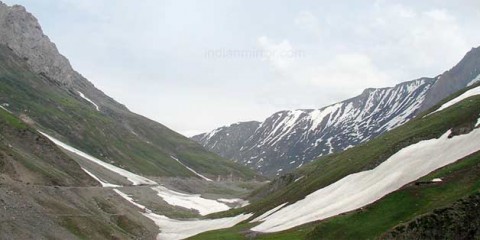
Jammu & Kashmir, North India, Adventurous sports, History, Ladakh, Mountain Passes, Nature, Trekking
Kargil is a town in Kagril district of Ladakh, Jammu & Kashmir, India. Kargil is derived from two words Gar and Khil. Gar means anywhere and Khil means Central place. In Ladakh this is the second largest town. This place became famous after Kargil war between India and Pakistan. Kargil is famous for adventurous activities such as River Rafting, Camping, High altitude Trekking, Mountaineering etc. Persian influence is more at this place. For the shopping lovers also this is the best place. Worth buying things of this place are Carpets, pashmina Shawls, handicrafts, brass vessels etc.
What to see in Kargil:
Suru Valley: This valley starts from kargil town and extends till Penzi La Watershed. Suru is most beautiful place. During the spring season apple and apricot trees are in full bloom. Throughout the valley visitors can see popular and willow trees. Visitors can see melting of ice at this place. Major crop of this valley is grapes. Radish, Barley, Wheat, Millets, Peas, turnip are also cultivated here. Trekking and rock climbing takes place here.
Adventure Activities: Very popular trekking trials through Sumdo Chinmu Village to Alchi via Stakspi La and from Padum to Lamayuru Gompa.
What to see around Kargil:
Lamayuru Monastery: It is a Tibetan monastery which is located in Kargil district. Major attractions of this monastery are Scriptures, Murals, Thangkas, Rich wall Paintings, Statues of different forms of Buddha. Along with statues of Buddha several other deities’ statues can also be seen here. It was founded in 11th century by Mahasiddhacharya Naropa.
Tiger Hill: This is the place where India and Pakistan war happened in 1999.
War Museum: Other name is wall of fame. This museum showcases the war effort and Sacrifice of the Indian Army in its war against Pakistan.
Zanskar Valley: This valley is famous for flora. Other attractions of this valley are meadows, streams, Drang Drung Glacier. Trekking conducts here.
Phuktal Gompa: It is constructed in the shape of beehive on the rock wall. Major attractions of this gompa are huge prayer hall and meditation room. This gompa is dates back to 11th century.
Zanskar River: Area of this river converted into U shape due to the glaciers. It originates at the north slope of the Great Himalayas.
Rangdum Monastery: It lies between Kargil and padum. Main attraction of this monastery is assembly hall. This hall has beautiful status.
Tagrimo Monastery: It lies in the plains of Padum. Other name is Kagyupa Monastery. It is the house to 30 monks. This place is famous for 17th century paintings.
Sani Monastery: This belongs to Drukpa Kargyu School of Tibetan Buddhism. This monastery is the only monastery in Zanskar which has nuns. This was built in Parts. Each part of this monastery belongs to different centuries. Oldest part of the monastery is Chorten. This belongs to 2nd century. In 17th century, assembly hall was built.
Getting to Kargil: Kargil is situated on the national highway 1D. This highway connects Srinagar to Leh. Buses and Taxis are available from Srinagar and Leh to reach kargil. Nearest railway head is located at Jammu. Jammu is well connected with Chandigarh, Kochi, Mumbai, Delhi, etc. Jeeps, cars, Buses are available to reach Kargil from Jammu. Nearest airport is located at Leh which is 204kms away from Kargil.
Getting around Kargil: Kargil can be discovered on foot. Buses, Taxis and Jeeps are available to visit the surrounding places of Kargil.
Best time to visit Kargil: Best time to visit Kargil is between April to September.
Where to stay in Kargil: Accommodations are very limited at this place. Only Budget and midrange hotels are available. Luxury hotels cannot be seen here.
Where to eat in Kargil: Eating options are Limited at this place. Tibetan, Punjabi and Kashmiri Food are available here.
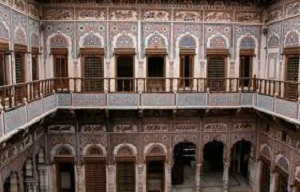
Rajasthan, North India, Architecture, Fort, Havelis, History, Jaipur, Masjid, Musuem, Nature, Palace, Temple
Shekhawati is a historical region in the northern part of the Rajasthan, India. This region consists of districts such as Nagaur, Churu, Sikar and Jhujhunu. History of these places dates back to 18th and 19th centuries. Grand Havelis in this region was constructed by Marwari Merchants. Shekhawati is derived from Rajput Kachwaha Chieftain Rao Shekha Ji. Rao Shekha ji decedents ruled this area. They were called as Shekhawats. This region is famous for hard working and brave people. Worth buying things of this place are metal utensils, Paintings, tie dye fabrics, wood carvings etc. Gangaur and Teej are the major festivals of this region.
What to see in Shekhawati:
Sikar: This is the major district of Shekhawati. Major Havelis of the town are Sanganeria, Kedia Haveli, Mirijamal Kyala, Bansidhar Rathi, and Sawant Ram Chokhani. Khatu Shyamji Temple is most famous in the village Khatu Shyamji. This temple is famous for shaving off the children’s hair for the first time. Other attractions of this district are jeen Mata Temple and Radha Murali Manohar Temple.
Churu: This place is famous for forts and Havelis. Traditional Rajasthani architectural style can be seen here. Major attraction is fort built by Thakur Khushal Singh. Other attractions are Raghunathji Temple, Aath Kambh Chhatri, Laxminarayanji Temple etc.
Nawalgarh: It is Golden city of Rajasthan. Major attractions of this place are Roop Niwas palace, Bansidhar Bhagat, Chokhani, Anandi Lal Poddar, Jodhraj Patodia etc.
Mandawa: Worth seeing havelis are Ganeriwala and Kanoria. It has good handicraft market.
Fatehpur: This place is famous for Singhania and Devra havelis. These were constructed in Western and Indian style. Other havelis of this place are Bharatiya, Jalan, Hukmi Chand Choudhri, Goenka.
Baggar: Piramal Haveli is famous here. Rajasthani Colonial style can be seen here.
Dundlod: This place is well known for havelis and forts. Impressive library and stained glass windows of the forts Diwan I Khas antiques are other attractions. Visitors should not miss to see Goenka haveli.
Lachhmangarh: Worth visiting place here are Sanganeria, Kedia, Rathi, Kyala, Chokhani Havelis.
Khetri: In Jaipur, this is the second wealthiest Thikana. Major attractions of this place are Panna Lal Shah Ka Talab, Bhopalgarh and Raghunath Temple.
Other attractions of this place are Churi ajitgarh, Parasrampura, Mehansar, Alsisar and Malsisar, Chirawa, Jhujhunu.
What to see around Shekhawati:
Chittorgarh: It is the ancient city in Rajasthan. A major attraction of this place is fort of Chittorgarh. It was built in 7th century AD. Height is 180metesrs tall. Other attractions are Rani Padmini Palace, Rana Kumbha Palace, Kalika Mata Temple.
Udaipur: It was founded by Maharana Udai Singh in 1559. Foreign tourist rush is more at this place. This place is known for its Palaces, Havelis and Temples. Other attraction is Azure Lakes.
Mount Abu: It is the only hill station in Rajasthan. Major attractions of this place are Dilwara Jain Temple which was constructed between 11th and 13th centuries. Other places are Achalagarh fort, Dattatreya Temple, Adhar Devi Temple, Ambika Mata Temple etc.
Getting to Shekhawati: Shekhawati is well connected with road and railways. Direct buses are available from Delhi. Places of Shekhawati are well connected with other cities. Trains are available from Jaipur and Delhi. It is easy to reach Shekhawati form Bikaner and Jaipur. Nearest airport is located at Jaipur which is 150kms away from Shekhawati.
Getting around Shekhawati: Private and government buses are available to visit the town and surrounding places of Shekhawati. Taxis and Autos are also available to visit in and around places of Shekhawati.
Best time to visit Shekhawati: Best time to visit Shekhawati is between October and March.
Where to stay at Shekhawati: Plenty of accommodations are available to stay at Shekhawati including luxury hotels. Resorts are also available to stay at this place.
Where to eat in Shekhawati: Plenty of eateries are available here. Though restaurants provide non vegetarian, Rajasthanis were basically vegetarians. Famous food is Lahsun Ki Kachori.
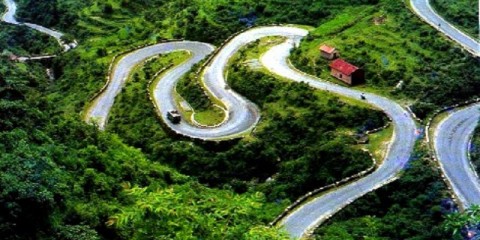
Uttarakhand, North India, Boating, Hill station, History, Nature, Temple, Valley, Water falls
Mussoorie is a hill station in Dehradun district, Uttarakhand, India. It is located in the foothills of the Garhwal Himalayan ranges. This place is famous for flora & fauna, green hills. Other name of this place is Honey moon capital of India and Queen of hills. Mussoorie plants are abundant in this place. So, this place is named after these plants. This place came into existence in 1820 after discovering by British army. This place is famous for gift items, wooden decorative, Oakwood walking sticks, brass statues, prayer wheels etc.
What to see in Mussoorie:
Landour: It is a cantonment town which is very close to Mussoorie. Mussoorie and Landours are also known as twin towns. This is British Raj era hill station. During the olden times, British used to set up recreation centres to enjoy the nature. This is pollution free area. Landour Bazaar is 150 years old bazaar. Earlier it serves the needs of British soldiers.
Lal Tibba: Lal Tibba is the highest point in Mussoorie. It is most stunning place. Doordarshan and All India Radio towers are situated on the top of this point. Other attraction of this place is Old Japanese telescope on a 20m tall tower standing on the edge of the cliff. From this telescope, visitors can have a spectacular view of Banderpunch, Kedarnath, Badrinath and other Himalayan Mountain peaks.
Gun Hill: In Mussoorie, it is the second highest peak. Gun hill can be reached using the rope car. This rope car is 400m long. Other option to reach this place is by bridle path. From this place visitors can have spectacular view of Doon Valley and Himalayan ranges.
Jwalaji Temple: It is located on the top of Benog hill. Temple is dedicated to Jwala Devi. From this place visitors can have a view of Yamuna Valley, Doon Valley, and Himalayan Peaks.
Happy Valley: This is also known as Mini Tibet. It is the home place to 5000 Tibetan Refugees. After fleeing from Chinese authorities in Tibet, Dalai Lama established Tibetan Government in Exile at this place. Buddhist temple can be seen here.
Cloud’s End: This was built by British Major in 1838. It is one of the four British buildings at this place. This place offers the view of flora & fauna, Yamuna River, Himalayas.
What to see around Mussoorie:
Mussoorie Lake: This is located 6kms away from this place. Boating is the major attraction of this place.
Kempty fall: These are the beautiful waterfalls and considered as one of the best picnic spot near Musssoorie. Boating is another attraction of this place. It is located 18kms away from Mussoorie.
Jharipani Fall: This is an ideal picnic spot. It is located 7kms away from Mussoorie.
Mossey Falls: This picnic spot is surrounded by beautiful dense forest. It is 7kms away from Mussorie.
Other attractions near Mussoorie: Other attractions near Mussoorie are Lake Mist, Children’s Lodge, Nag Devta Temple, Camel’s Back road, Municipal garden, Dehradun, Dhanaulti, and Surkanda Devi.
Getting to Mussoorie: Mussoorie is well connected with road. From Srinagar, Delhi, Hanuman Chatti, Old Tehri etc buses come to this place. Nearest railway station is located at Dehradun. From Indore, Lucknow, Allahabad etc trains come to this place. Nearest airport is also located in Dehradun.
Getting around Mussoorie: Buses and Taxis are available to visit in and around places of Mussoorie.
Best time to visit Mussoorie: Best time to visit this place is between April to June and again between September to November.
Where to stay in Mussoorie: Plenty of accommodations are available to stay in Mussoorie including luxury hotels.
Where to eat in Mussoorie: Plenty of restaurants are available to eat in Mussoorie. Cuisines ranging from south Indian to continental are available at this place.
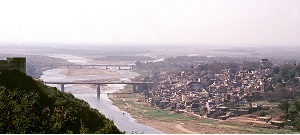
Jammu & Kashmir, North India, Fort, Musuem, Nature, Palace, Temple, Wildlife Sanctuary
Jammu is one of the 3 administrative divisions within Jammu & Kashmir. Most of the land at this place is hilly or mountains. Jammu Tawi is the official name of Jammu city. Other name of this city is City of Temples. In Northern India, it is the largest city. Pir Panjal Range separates Himalayas and Kashmir valley. This is acting as gateway to one of the popular pilgrimage Vaishno Devi temple. It is believed that, Raja Jambu has founded this city in 14th century BC. At that time this place was known as Jambu Nagar. For the shopping lovers also this is the best place. Worth buying things of this place is garments, electronics, footwear, dry fruits, handlooms, handicrafts etc. Major festivals of this place are Lohri, Baisakhi, Bahu Mela.
What to see in Jammu:
Bahu Fort: over 3000 years ago, this was built by Raja Bahulochan. Dogra rulers restored this fort in 19th century. Other attractions of this fort are Bahi Temple, Bhave Ki Bahu Garden, 8 octagonal towers. It was constructed with thick sandstone.
Amar Mahal Museum: Earlier this place was acted as residence place of Dogra dynasty. During 1890, this was built by King Raja Amar with Red Sand stone. Greek Structural style can be seen here. Major attractions are throne of Maharaja Hari Singh, Pahari Paintings, art galleries etc.
Mubark Mandi Complex: This is 150years old complex. It is the royal residence of Dogra rulers.
Bagh-e-Bahu: This is most beautiful garden and looks like Mughal garden. Acres of woods are surrounded this garden.
Dogra Art Museum: This museum is famous for 800 rare paintings and articles.
Shiv Khori: This cave is famous for 4 feet natural Shivalingam. Several Hindu deities and natural impressions can also be seen here.
Raghunath Mandir: In 1835, this was built by Maharaja Gulab Singh. This was dedicated to Lord Rama. It is famous for ancient books and manuscripts.
Bahu Temple: It is one of the ancient temples of this place. This was built by Raja Bahulochan about 3000 years ago.
Other attractions of Jammu: Other attractions of Jammu are Mansar Lake, Ranbireshwar Temple, Rani Charak Mahal, Mahamaya Temple, Dargah Garib Shah, Ziarat Baba Buddhan Shah, Poonch Fort, Peer Kho Cave Temple, Gadhadharji Temple, Aap Sambhu Temple.
What to see around Jammu:
Nandini Wildlife Sanctuary: It is located 28kms away from Jammu. It was established in thick forests area. Major attractions of this place are Chakor, Indian Peafowl, Blue Rock Pigeon, Cheer Pheasants, Red Jungle fowl, Indian Mynah etc.
Surinsar Lake: It is located 24kms away from Jammu. This is situated in the midst of thick forests with hilly terrains in the backdrop. Major attractions of this lake are lotus flower blossoms.
Akhnoor Fort: It is located 32kms away from Jammu. This is the ancient temple situated on the banks of Chenad River built in 19th century. It belongs to Harappan Civilisation. Along with this fort other attraction of this place is two storeyed Palace.
Getting to Jammu: Jammu is well connected with road, railways and airways. From Amritsar, Leh, Srinagar, Delhi etc buses are come to this place. Jammu Tawi railway station is well connected with Jhansi, Gwalior, Agra, Kochi, Indore, Bhatinda, Varanasi, Delhi, Mumbai etc. Jammu airport is well connected with airways also. It is located 7kms away from the city. Airways are well connected with Srinagar, Jaipur, Delhi, Mumbai etc.
Getting around Jammu: Minibuses are available to visit the places of Jammu. Autos and cycle rickshaws are also available to visit the places of Jammu. Buses and Taxis are available to visit the surrounding places of Jammu.
Best time to visit Jammu: Best time to visit Jammu is between March to October.
Where to stay in Jammu: Plenty of accommodations are available in Jammu including luxury hotels. Best Mid range holes are available at Residency Road.
Where to eat in Jammu: Plenty of restaurants are available to eat in Jammu. Continental, Indian and Kashmiri cuisines are available here.
Katra is a small town in Udhampur district, Jammu & Kashmir, India. This is famous for Shri Mata Vaishno Devi University. It is acting as gateway to Vaishno Devi Temple. In India it is second most important temple. It is situated on the national highway 1C. This place is the base camp for the devotees who were going to Vaishno Devi Temple. This is the best place to buy leather goods, garments and dry fruits. Kashmiri Embroidery garments are most famous of this place.
What to see in Katra:
Banganga: This River is associated with miracles of Mata Vaishno Devi. Except in the acute shortage of water, this river has full of water throughout the year. Before going to Vaishno temple, people take a dip in this river to wipe off the sins.
Darshani Darwaza: This is the gateway to Vaishno Devi Temple. People believe that at this place Goddess Vaishno Mata met Pandit Sridhar in the form of a small child. In this place army assistance counter is also situated here.
Himkoti: This is one of the best places for the natural lovers. It offers best scenic view of the valley. Major attractions of this place are a meditation centre, a garden and artificial pond. From Adhkunwari, it is located 3kms away.
What to see around Katra:
Vaishno Devi Temple: It is located 12kms away from Katra. Other names of this temple are Mata Rani and Vaishnavi Temple. Millions of people come to this place every year. Separate board was set up by the government to look after this temple. From katra several means of transport are available to visit this temple such as little ponies, Palkies, etc. From Jammu & Kashmir, helicopters are available to reach this temple.
Jhajjar Kotli: It is located 15kms away from Katra. Main attraction of this place is cold water of Jhajjar. This place is also well known for its natural beauty. It is one of the best picnic spots.
Baba Dhansar Temple: At this temple, waterfalls are the major attraction. It is located 15kms away from Katra. Another attraction of this place is natural formed Shivalingam.
Bhairon Temple: Journey to Vaishno temple will not complete without seeing this temple. It is located 2kms away from Bhawan. It is believed that Bhairon Nath was killed by Vaishno Devi at this place.
Sanjichhat: From this place visitors can have spectacular view of snow peaked Himalayas and beautiful valleys. It is located 3.25Kms away from Adhkunwari. This place is famous for helipad.
Getting to Katra: Only way to reach this place is through road way. Katra is situated between Jammu and Udhampur. Plenty of buses and taxis are available to reach from Jammu to Katra. Nearest railway station is located at Jammu Tawi which is 42kms away from Katra. Jammu is well connected with Jhansi, Gwalior, Kochi, Kolkata, Mumbai etc. Nearest airport is located at Jammu which is 40kms away from Katra. From these airport private vehicles, buses are available to reach Katra.
Getting around Katra: Main means of transport to visit the place of Katra is mini buses. Buses, autos and trains are available to visit the surrounding places of Katra.
Best time to visit Katra: Best time to visit this place is between March to October.
Where to stay in Katra: Budget and midrange hotels are available to stay in Katra. Best midrange hotels are available on Kashmir road. Only one luxury hotel is situated here. Few Guest houses and lodges are also available here.
Where to eat in Katra: Plenty of restaurants are available here. Rajma Rice, Puri Bhaaji and Chole Bhature are famous here.
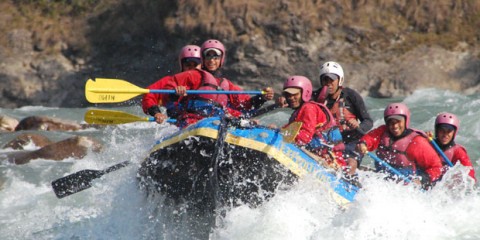
Jammu & Kashmir, North India, Adventurous sports, Buddhist Monestery, Buddhist Stupas, Buddhist temples, History, Ladakh, Lahaul and Spiti district, Musuem, Nature, Palace, Trekking, Valley
Ladakh is a beautiful region in Jammu and Kashmir, India. This place is also known as Land of High Passes. On the eastern side of the Ladakh Tibet is located, Lahaul and Spiti is situated in the South and Kashmir can be seen on the West. This place is dominated by Tibetan Buddhists and second majority religion of this place is Shia Muslims. This is one of the best places for the natural lovers. Plenty of Monasteries are situated here.
Ladakh is famous among the mountaineers and trekking lovers. Beauty of this region can be seen in barren mountains, clean blue sky and snow-capped peaks. For the first time Ladakhi Dynasty was founded here in 842 AD. This is the best place for shopping lovers also. Coral Jewellery, Pashmina, Hand woven blankets, wooden masks, copper samovars etc are worth buying at this place. Major festivals of this region are Spituk Gustor, Dosmoche Festival, Matho Nagrang, Stok Guru Tse Chu Festival, Buddha Purnima etc.
What to see in Ladakh:
Pangong Tso: This Lake is known for its scenic beauty. Last scene of the 3 idiots movie was shooted here.
Nubra Valley: It is high altitude desert which is well known for its beauty. This valley separates Karakoram and Ladakh.
Shanti Stupa: It has white domed monument with backdrop of brown mountains.
Leh Palace: This is the major attraction of this place. In 17th century this was acted as royal residence. Victory on the top of the Namgyal hill is another attraction. This tower was built as a mark of victory over Ballti Kashmir armies.
Stok: This is famous for its Buddhist Monastery. It also acts as gateway for several trekking activities. This is located 14kms away from Leh. Museum of this place attracts the tourists with collection of prayer instruments, copper coins, Precious heirlooms, and crown.
Magnetic Hill: Due to magnetic force of the hill cars will be pulled upwards. It is 27kms away from Leh.
What to see around Ladakh:
Leh: Leh is famous for pristine environment, Buddhist Palace and Scenic Locales. Tibet influence is more in this place. Leh Palace is looks like Potala Palace in Lhasa, Tibet. Major attraction of this place is Sankar Gompa.
Zanskar: This place is famous for flora and Fauna. In India it is one of the unexplored places. Zanskar is known for sparking rivers, snow capped Himalayan Mountains, Vistas of barren landscapes and pleasant climate. Other attractions of this place are river rafting, Paragliding and trekking.
Kargil: In the recent days this place became popular due to the war between India and Pakistan in 1999. It is located on the banks of Suru River.
Getting to Ladakh: Ladakh is well connected with Jammu and Srinagar through road. Buses of JKSRTC buses regularly come to this place. Visitors can reach Ladakh from Manali also. HRTC buses come to this place between July to October. Nearest railway station is located at Jammu Tawi. This is well connected with Mumbai, Kolkata and Delhi. Buses and cars are available to reach Ladakh from Jammu Tawi. Nearest airport is located at Leh.
Getting around Ladakh: Buses are available to visit the places in and around the region. Taxis and motorcycles are also available on rent to see the places of Ladakh.
Best time to visit Ladakh: Best time to visit Ladakh is between June to October.
Where to stay in Ladakh: Plenty of accommodations are available to stay in Ladakh. In Nubra Valley, hikers and camps are very common. In Korzok village, tourist’s camps can be seen.
Where to eat in Ladakh: Plenty of restaurants are available to eat in Ladakh. Marchwangan Korma and Momos are the specialities of Ladakh. Continental, Indian, Chinese, Korean, Tibetan cuisines are available.
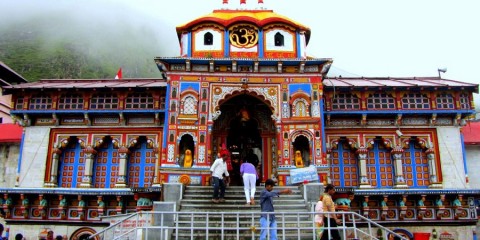
Uttarakhand, North India, History, Hot Springs, Nature, Temple, Trekking, Valley, Water falls
Badrinath is a holy town in Chamoli district, Uttarakhand, India. Major attraction of this town is Badrinath Temple. According to the legend, image of Lord Badrinarayan discovered by Shankara at this place. This was made of Saligram stone. Earlier it was placed in a cave near Tapt Kund Hot springs. King of Garhwal moved this image from this cave to the present temple in 16th century. Badrinath along with Kedarnath, Gangotri, and Yamunotri form Chota Char Dham. Major festivals of this place are Badri Kedar Festival, Janmashtami, Mata Murti Ka Mela. Wall paintings, Stone carvings and woollen clothes are worth buying of this place.
What to see in Badrinath:
Badrinath Temple: This is the major attraction of this town. Lord Vishnu is worshipped here. In 8th century it was built by Adi Guru Shankaracharya. Main attraction of this temple is entrance gate i.e. Singh Dwara. Temple is divided into 3 sections namely Darshan mandap, Sabha Mandap and garbha griba. In the temple, 15 idols of several shrines can be seen.
Tapt Kund: This is abode to Lord Agni. It is famous for its medicinal properties. Before entering into the temple devotees take a dip in this kund.
Surya Kund: It is situated besides the Tapt Kund. Idol of Lord Vishnu found here. People take holy dip at this place.
Charanpaduka: It is a famous rock in which footprints of Lord Vishnu can be seen here. Caves leads to Charanpaduka.
Brahma Kapal: It is situated on the banks of river Alaknanda. It is believed that Lord Brahma resides at this place.
Narada Kund: It is named after Saint Narada Muni. At this place idol of lord Vishnu was recovered by Adi Shankaracharya.
What to see around Badrinath:
Mata Murti Temple: It is located 3kms from Badrinath. Mata Murti is worshipped here. She is the mother of two sons Nara and Narayana. Mata grants Vairagya to the devotees.
Sheshnetra: It is located 1.5kms from Badrinath. This is a large stone marked with the eye of a legendary snake. It is believed that Sheshnetra safe guards the temple Badrinath.
Mt. Neelakanth: Other name is Garhwal Queen. It is located 16kms away from the town. This is the background of Badrinath. Trekking conducts here.
Vasudhara Falls: It is located 7kms away from Badrinath. These falls look like milk when it is falling. It is located in Mana Village. If visitors of this place are not pure at heart, these falls will turn away.
Yogadhyan Badri: It is located 13kms away from Badrinath. It is believed that Father of Pandavas meditated here. This is the birth place of Pandavas.
Alka Puri: It is the home place of Yakshas which is located 15kms away from Badrinath. This the origin place of River Alaknanda from Satopanth glacier.
Satopanth: It is a triangular lake which is located 25kms away from Badrinath. It is believed that Lord Brahma, Vishnu, Maheshwar stands on the 3 corners of the lake. It is surrounded by snow Peak Mountains.
Getting to Badrinath: Only way to reach this place is through road. From Haridwar, Rishikesh, Delhi etc buses come to this place. Nearest railway station is located at Haridwar which is 137kms away from Badrinath. Nearest airport is located at Dehradun which is 317kms away from Badrinath.
Getting around Badrinath: Buses are available to visit the surrounding places of Badrinath. It is recommended to travel in terrain vehicles.
Best time to visit Badrinath: Best time to visit Badrinath is between May to October.
Where to stay in Badrinath: Plenty of budget, midrange and luxury hotels are available to stay in Badrinath along with Ashrams. Visitors can prepare their own tents.
Where to eat in Badrinath: Plenty of restaurants are available to have food at Badrinath.
Sarnath is a small village in Uttar Pradesh, India. Other name of this place is Isipatana. This place is most famous among the followers of Lord Buddha. At this place, Gautam Buddha first taught the Dharma. Original Sangha was formed at this place. It is one of the 4 major Buddhist destinations. People from Myanmar, Sri Lanka, Tibet, Japan, Thailand comes to this place. Deer Park is the major attraction of this place. This was built by Jataka King of Benaras. Major festivals celebrates at this place are Buddha Poornima, Basant Panchami, Maha Shivarathri and Makara Sankranti.
What to see in Sarnath:
Ashoka Pillar: This is one of the major attractions of this place. Height of this pillar is 50meters. This pillar is carved out of stone. On the top of the pillar 4 lions are situated. All are standing back to back. Pillar also consists of a horse, an elephant, a lion and a bull. This are symbols for the 4 different phases of life of Lord Buddha.
Archaeological Museum: This is famous for best collection of artifacts which are excavated from Archaeologists at this site. It was built in 1910 with 5 galleries. Those galleries are Ashutosh Gallery, Trimurti, Shakyasimha, Triratna and Tathagata Galleries. In this museum one can see the images of Lord Krishna, Lord Buddha, lord Ganesha etc.
Chaukhandi Stupa: This was built by Gupta dynasty in 5th century. This was built to mark the visit of Buddha to this place and he visited his first disciple at this place.
Deer Park: It is believed that at this place Lord Buddha proclaimed Dharma. King of Baneras gifted this forest area to build a park. Buddha taught two discourses at this place. They are Anattalakhana Sutta and Dhammacakkapavathana Sutta.
Thai Temple: This was built in Thai architectural style and it is surrounded by extensive gardens. It is administered by Thai Buddhist monks.
Tibetan Temple: Tibetan architectural style can be seen on this temple. Statue of Shakyamuni is situated here.
Mulagandha Kuti Vihar: This is the modern temple which was built by Mahabodhi Society. This is well known for frescoes from Buddhist literature.
Dhammek Stupa: It was built during Maurya Dynasty. Height is 43.6m. Floral carvings can be seen at the lower part of this stupa.
What to see around Sarnath:
Varanasi: This is most sacred place to Jains and Hindus. Varanasi exists before 3000 years ago. This place is famous for its Ghats and temples. Varanasi Attractions are Jantar Mantar, Bharat Mata Temple, Kashi Vishwanath Temple, Manikarnika Ghat, Durga Temple, Ramnagar Fort, Alamgir Mosque. It is located 11kms away from Sarnath.
Ramnagar: It is located 15kms away from Sarnath. This place is famous for fort museum. It consists of royal collections like antique clocks, ivory works, royal armour, royal palanquins, vintage cars.
Chunars: It is located 43kms away from Sarnath. This was famous for Chunars fort. It was built by Maharaja Vikramaditya. Major attractions of this fort are huge well, sun dial and Sonwa Mandap.
Getting to Sarnath: Sarnath is well connected with road. From Allahabad, Agra, Mathura, Kanpur, Lucknow buses come to this place. Nearest railway station is located at Varanasi which is 11kms away from Sarnath. Varanasi is well connected with all the major cities of India. Nearest domestic airport is located at Varanasi which is located 30kms away from Sarnath.
Getting around Sarnath: To explore the village there is no means of transport. One has to explore on foot. Taxis can hire from Varanasi to visit the places of Sarnath. Buses and taxis are available to visit the surrounding places of Sarnath.
Best time to visit Sarnath: Best time to visit this place is between October to March.
Where to stay in Sarnath: only budget and midrange hotels are available at this place. Ashrams provide accommodations along with food facility.
Where to eat in Sarnath: Good restaurants are available around the Sarnath temple.
Kanatal is a city in Tehri district, Uttarakhand, India. It is located 12kms from Chamba. Earlier Kanatal Lake was situated here. This place was named after this lake. It is a hill station near Mussoorie. Dussheehra festival celebrates so grandly at this place.
What to see in kanatal: Kanatal is famous for tranquil weather, invigorating, Verdant forests, beautiful sights and mesmerising natural beauty. Poet Robert Frost had written several poems about the beauty of the Kanatal. This place has history importance. It is believed that Lord Shiva brought the charred remains of Sati after she immolated herself. This place is also famous for sunsets. Prime attractions of this place are scenic view and landscape.
What to see around Kanatal:
Surkanda Devi Temple: This is dedicated to Goddess Sati. She was the wife of Lord Shiva. 2kms trekking is essential to reach this place. Other way to reach this place is by riding on the pony.
Kodia Jungle: This is the major attraction near this city. It is known for natural springs. Major attractions of this jungle are musk deer, boar ghorals, barking deer. Jeep Safaris are used to visit the jungle. It is located 1km away from the city. While reaching to this place, visitors can enjoy natural springs.
Chamba: This town is famous for several Palaces and Temples. This is the most beautiful hill station. Chamba Attractions are Hariraya Temple, Bhuri Singh Museum, Church of Scotland, Laxmi Narayana Temple, Trekking views. It is located 16kms away from kanatal.
Dhanaulti: It is located 12kms away from Kanatal. This place is famous for winter cool breezes. Major attractions of this pale are fruit orchards, Pony rides and treks. This is one of the best places for natural lovers.
Rishikesh: This is the sacred place for the Hindus. It is located at the foothill of the lower Himalayas in Uttarakhand. Lord Vishnu is worshipped here. People believe that visiting this place gives Mukthi after death.
Mussoorie: It is located 37kms away from Kanatal. This place is also known as Queen of hills. This is the favourite place to the nearby area people and to the Delhi people. Major attractions of this place are local shops, restaurants and game centres.
Tehri Dam: This was constructed at the place where Bhilangna and Bhagirathi Rivers Confluence. It is located at New Tehri. Visitors can also see various kinds of flowers and fruits at new Tehri. These flower and fruit plants can be seen in Pant Research institute. It is located 12kms away from Kanatal.
Getting to Kanatal: Kanatal is well connected through road way. From Haridwar, Rishikesh, Dehradun, etc buses come to this place. Nearest railway station is located at Rishikesh which is 75kms away from Kanatal. Buses and Taxis are available to reach Kanatal from Rishikesh. Nearest airport is located at Dehradun which is 90kms from Kanatal. Dehradun- Jolly Grant airport is well connected with Kolkata, Mumbai and Delhi.
Getting around Kanatal: Kanatal can explore on foot. Share taxis, Private Taxis and Public transport are available to visit the surrounding places of Kanatal.
Best time to visit Kanatal: Kanatal welcomes the visitors throughout the year. Snow fall is heavy during the winter season. It is advisable to carry woollen clothes in the months of January and February.
Where to stay in Kanatal: Few hotels and resorts are available to stay in Kanatal. Jungle Camps are well known at this place. Camps offer tented accommodation.
Where to eat in Kanatal: Limited restaurants are available to have food in kanatal. North Indian, Continental and Chinese cuisines are available here.
Kunzum Pass is a high mountain pass on the eastern Kunzum Range of the Himalayas. This is acting as gate way to Lahaul and Spiti Valley. In Himachal Pradesh it is one of the highest motorable mountain pass. It is located at a higher altitude than Rohtang Pass.
What to see in Kunzum Pass: This is well known to the tourists of Manali, Lahaul and Spiti. It is the second longest glacier in the world. This pass offers the best view of Bara Sigri Glacier. In and around this pass, Buddhist influence is more. While Visitors passing through this pass, they can see Kunzum Devi Temple. All the vehicles travelling through this pass will stop at this temple and pay obeisance to the deity. Other major attraction of this place is Trekking. Popular trekking trail from this place is 12kms trek to Chandratal.
What to see around Kunzum Pass:
Pin Valley: It is located on the banks of river Pin. Major activities in this place are archery competitions and Horse racing. Most of the tourists attracts towards Chamurti Horses. It is a part of Spiti Valley. This is situated 16kms away from Kibber.
Kibber: Kibber is a small village in the Spiti Valley in Himalayas. Kibber lies on summit of a limestone rock. Kibber Attractions are Ki Monastery, Kibber Wildlife Sanctuary.
Manali: Manali is popular honeymoon spot. Visitors can enjoy the place by seeing slopes and snow covered peaks. Manali is famous for its culture, history, scenic beauty, snow covered by mountains. This valley is known as Valley of Gods. Manali Attractions are Manu Temple, Hadimba Temple, Paragliding, Trekking and Adventures sports, Solang Valley.
Spiti: Other name of this place is Little Tibet. It is located in Himalayan Mountain ranges in Himachal Pradesh. This place is famous for rare wild animals such as ibex, snow leopard etc. It is accessible only during the summer season.
Lossar: It is situated between Spiti and Manali. This is the first inhabitant village. Some of the trekking trails start from this place. Other attractions of this place are animals, vegetation, quaint houses in the village. Trekking to Chandrataal and other trekking places start from Lossar.
Dhankar: This place is famous for its fort. It was built to have the hidden views of Spiti Valley and too keep an eye on enemies. Other attraction of this place is Lha-O-pa Gompa. It was in the shape of fortess.
Key Monastery: In Spiti Valley, this monastery is the largest monastery. This is known for wind instruments, stucco images, rare manuscripts, thankas, and murals.
Koumik Village: This is the highest villages in the Himalayas.
Getting to Kunzum Pass: Kunzum Pass is well connected with road. This place can be reached from Chandigarh and Delhi via Manali. Nearest railway station is located at Joginder Nagar. This station is 50kms away from Manali. It is the narrow gauge railway station. This station is well connected with Ambala and Chandigarh. Nearest airport is located at Bhuntar town which is 170kms from Kunzum Pass and 50kms from Manali. Jeeps and buses are available to reach Kunzum Pass from Manali.
Getting around Kunzum Pass: Kunzum Pass can be explored on foot. Jeeps and buses are available to visit the surrounding places of Kunzum Pass.
Best time to visit Kunzum Pass: Best time to visit this place is between June to September.
Where to stay in Kunzum Pass: Hotels, Resorts and lodges are not available to stay in Kunzum Pass. Only way to stay in Kunzum Pass is Home stay providing by the local people.
Where to eat in Kunzum Pass: Very limited options at this place.
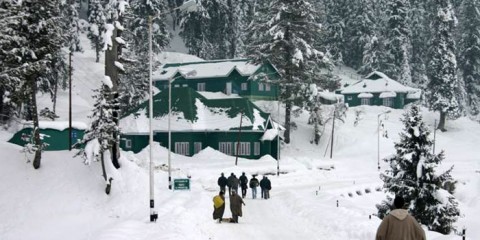
Jammu & Kashmir, North India, Adventurous sports, Hill station, History, Nature, Skiing, Snorkelling, Temple, Valley, Wildlife Sanctuary
Gulmarg is a town and hill station in Baramula district of Jammu and Kashmir, India. This is one of the Skiing destinations. Name of this town was given in 16th century by Sultan Yusuf Shah. This was the favourite hangout for Jahangir, Mughal Emperor. Once he collected 21 different varieties of flowers from this place. Beauty of this place is exceptional. Highest Golf course in the world is located here.
What to see in Gulmarg:
Golf Course: Golf Course located in Gulmarg is the highest green golf course in the world. It is 18 whole golf courses. This is managed by Jammu and Kashmir Tourism Development Corporation. In India, this is the most beautiful golf course. It was opened in 1904. This consists of inclines and slopes.
Gulmarg Ski Area: In this region, snow fall is heavy. This makes it a favourite ski area for Indian as well as to the foreigners. Other activists of this place are snow bobbing, snow scooters, tobogganing. Apart from adventurous activities, this region is also famous for Apharwat Peak, Golf Course, Baba Reshi Shrine, Gulmarg Biosphere Reserve, St.Mary’s Church, Alpather Lake, Imambara Goom etc.
Gondola Lift: It is the only cable car system in Asia. This is located in Gondola village of Gulmarg with a backdrop of Himalayan Peaks.
Khilanmarg: It is the small valley where Gulmarg’s winter ski runs. During the spring season, Carpeted flowers can be seen here. Meadow offers beauty of Kashmir Valley and surrounding peaks.
Baba Reshi Shrine: This is dedicated to Baba Reshi. During the reign of King Zain-ul-Abidin, he acted as major courtier. This mosque dates back to 1480.
Other attractions in Gulmarg: Other attractions in Gulmarg are Gulmarg Biosphere Reserves, Maharani Temple, Cable car to Kongdoor, Fishing pond, St.Mary’s Church.
What to see around Gulmarg:
Alpather Lake: It is located 13kms away from Gulmarg. This is in triangle shape. Snow capped terrains and scenic hills can be seen on the backdrop of the lake.
Tangmarg: It is famous for handicrafts works. Other attractions of this place are Baba Reshi Shrine, Waters meet and Ferozpore Nallah. It is located 13kms away from Gulmarg.
Magam: It is located in Budgam district which is situated 18kms away from Gulmarg. Library situated here is the largest and biggest library in Jammu and Kashmir. Best collection of audio cassettes, CD’s, Literature books, Islamic books can be seen here. Library also helps poor and orphans. Market in Magam is the largest market in Budgam district.
Pattam: It is a historical town which was established in 9th century by famous Hindu Raja Shankarvarman. It is located 40kms away from Gulmarg. This town has largest market of fruits, cattle and cotton.
Palhalan: During the British period of Independence struggle this place also played a major role. It is located 42kms away from Gulmarg.
Other attractions near Gulmarg: Other attractions near Gulmarg are Drung, Apharwat Peak, Ningle Nallah, Outer Circle walk, Banibal Nag, Kookernag.
Getting to Gulmarg: Gulmarg is well connected with road ways. From all the major cities of Jammu and Kashmir, buses come to this place. Nearest railway head is located in Jammu. Nearest airport is located in Srinagar which is 57kms away from Gulmarg. All the major city airports are well connected with Srinagar airport.
Getting around Gulmarg: Best way to explore the place is on foot. Nearby places of Gulmarg can be seen through bus or by using Taxis.
Best time to Visit Gulmarg: Best time to visit Gulmarg is from May to September. Best time for Skiing and other activities are between November to February.
Where to stay in Gulmarg: Plenty of accommodations available including luxury hotels. During the peak season it is advisable to book the rooms in advance.
Where to eat in Gulmarg: Plenty of restaurants are available to have food in Gulmarg. Famous food of this place is Rogan Josh.
Padum is the only town in Zanskar, Jammu and Kashmir, India. This is named after Padmasambhava. For the tri armed Zanskar Valley, Padum is the centre. Tibetan culture is dominating this place. This is the starting point to several trekking trails of Ladakh Region in Jammu and Kashmir. This is the favourites spot for the professional photographs. Scenic beauty of this place is extraordinary. In the Zanskar Region, this is the most populous place.
What to see in Padum: Major attraction of this place is view of Drang – Drung Glacier. It is a long and wide river of snow and ice. In Ladakh region, this is the largest glacier. Other major attractions of this place are trekking. This is the starting point to several monasteries such as Phuktal, Bardan, Stongdey and Karsha. Besides Buddhist population, plenty of Muslim people can also be seen here. Eid and Monastic festivals celebrates so grandly. Most popular festival of this place is Gustor.
What to see around Padum:
Sani Monastery: It is located 6kms away from Padum. In Zanskar it is one of the oldest monasteries. Major attractions of this monastery are Buddha Idols, Stone carvings and Ancient murals. Other attraction of this place is Chortens which belongs to 2nd Century.
Rangdum Monastery: It lies between Kargil and padum. Main attraction of this monastery is assembly hall. This hall has beautiful status.
Padum Trekking Trails: Popular activities of Padum are river rafting and trekking. Trekking trails ranges from 1 day to 20 day trail.
Karsha: In this region this is the largest Gompa. In 10th century this was founded by Phagspa Shesrab. According to the Tibetan Calendar, a festival celebrates on 28th and 29th of 6th month. At that time sacred dance will be performed by the Monks. Other attractions of this place are Chukshik –Jal, Dorje – Dzong nursery.
Drang Drung Glacier: This is situated across Suru Valley in Jammu and Kashmir. It is surrounded by two small alpine lakes and snow covered peaks.
Pipiting: This place is famous for several ancient temples and stupas. Other attraction near this place is Sani. This monastery has ancient chortens. It is constructed by Emperor Kanishka. Attractions of this Gompa are idols, paintings and murals of Saint Padmasambhava.
Phuktal Gompa: It is constructed in the shape of beehive on the rock wall. Major attractions of this gompa are huge prayer hall and meditation room. This gompa is dates back to 11th century.
Getting to Padum: Visitors can reach this place either from Jammu or from Srinagar or from Leh via Kargil through road. Nearest railway station is located at Jammu which is 735kms from padum. Nearest airports are located at Srinagar which is 431kms away form padum and Leh which is 487kms away from Padum.
Getting around Padum: Travelling through Jeeps is the best way to explore the places of Padum and surrounding places of Padum.
Best time to visit Padum: Best time to visit this place is between July to September. During other season’s road of Kargil and Padum will be closed due to heavy snowfall.
Where to stay in Padum: Private hotels along with Tourists complex are available to stay in Padum. Complex provide food to the residents of this place and as well as to the visitors of this place. Basic accommodations will also available at Karsha.
Where to eat in Padum: Plenty of restaurants are available to eat in Padum. Complex also provide food to the residents of this place and as well as to the visitors of this place.
Zanskar is a sub district of Kargil district of Jammu & Kashmir, India. Mountain range in Zanskar separates Ladakh from Zanskar. Zanskar Range is the highest peak of Himachal. This place is famous for flora and Fauna. In India it is one of the unexplored places. Zanskar is known for sparking rivers, snow capped Himalayan Mountains, Vistas of barren landscapes and pleasant climate. Other attractions of this place are river rafting, Paragliding and trekking. Popular trekking trails around Zanskar are Lamayuru- Padum, Lamayuru- Darcha. Tibetan Buddhists dominates this place. Losar is famous festival celebrates here.
What to see in Zanskar:
Zanskar River: Area of this river converted into U shape due to the glaciers. It originates at the north slope of the Great Himalayas.
Zanskar Valley: This valley is famous for flora. Other attractions of this valley are meadows, streams, Drang Drung Glacier. Trekking conducts here.
Penzella Pass: In the Zanskar Range, it is one of the important grounds. This separates suru valley from Zanskar. Along with suru Valley this also separates the Zanskar from other parts of the Ladakh. Commonly seen animals of this place are Marmots and brown Bears.
Shagma Karphu: This place is famous for maintaining peaks, Zanskar Valley, sunset and sunrise. Buddhist culture is dominating at this place. By melting the snow, doted marshy lands are formed.
What to see around Zanskar:
Padum: It was once acted as capital to Zanskar. Padum Valley is the major attraction of this place. Other attractions of this place are Starrimo Monastery and Trekking. It is located 16kms away from Zanskar.
Karsha: It is located 21kms away from Zanskar. In this region this is the largest Gompa. In 10th century this was founded by Phagspa Shesrab. According to the Tibetan Calendar, a festival celebrates on 28th and 29th of 6th month. At that time sacred dance will be performed by the Monks. Other attractions of this place are Chukshik –Jal, Dorje – Dzong nursery.
Drang Drung Glacier: It is located 41kms away from Zanskar. This is situated across Suru Valley in Jammu and Kashmir. It is surrounded by two small alpine lakes and snow covered peaks.
Pipiting: It is located very near to Zanskar. This place is famous for several ancient temples and stupas. Other attraction near this place is Sani. This monastery has ancient chortens. It is constructed by Emperor Kanishka. Attractions of this Gompa are idols, paintings and murals of Saint Padmasambhava.
Phuktal Gompa: It is constructed in the shape of beehive on the rock wall. Major attractions of this gompa are huge prayer hall and meditation room. This gompa is dates back to 11th century.
Leh: This place is known as land of Lamas. It is one of the most beautiful places in India which is situated near the banks of Indus River. It is located 105kms away from Zanskar.
Getting to Zanskar: Zanskar is well connected through road way. It is located between Srinagar and Leh Highway. From Padum, Srinagar, Jammu, Kargil etc JKSTC buses come to this place. From Leh and Kargil Taxis are also available to reach Zanskar. Nearest railway station is located at Jammu which is 730kms away from Zanskar. This railway station is well connected with Rishikesh, Jabalpur, Indore, Pune, Ahmedabad, Chennai, Kolkata, Delhi etc. Nearest airport is located at Leh which is 105kms away from this place.
Getting around Zanskar: Taxis and Shared Jeeps are available to visit the surrounding places of Zanskar.
Best time to visit Zanskar: Winter at this place is so cold. Best time to visit this place is between April to August.
Where to stay in Zanskar: Accommodations are not available in Zanskar. Few visitors prefer to set their own tents. Accommodations available in the nearby places like Padum.
Where to eat in Zanskar: Only Limited restaurants are available to eat in Zanskar. Continental, Indian, Tibetan and Chinese Cuisines are available.
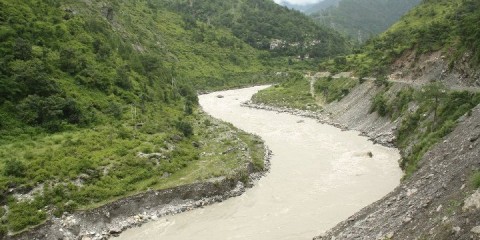
Uttarakhand, North India, Hill station, Hot Springs, Nature, Temple, Trekking, Valley
Jyotirmath is a city in Chamoli district, Uttarakhand, India. Other name of this place is Joshimath. For several Himalayan trekking trails this is the gateway. Adi Shankara established a peetha at this place. Other peethas established by Adi Shankara are located at Dwaraka, Puri and Shringeri. Jyotirmath is located very near to Badrinath. It is the base for travellers visiting Valley of flowers and Hemkund Sahib. Auli and Joshimath are well connected with Cable Car. It is the highest and longest trolley of Asia. Auli Skiing Festival celebrates so grandly in February / March. Auli is the winter destination.
What to see in Jyotirmath:
Narsimh Temple: Lord Narshima is worshipped here. Lord Narshima is the incarnation of Lord Vishnu. It is believed that daily the statue of the idol is decreasing in Length and it is also believed that road to Badrinath would also get blocked soon. People also believe that, right hand of the Idol with become thin like a hair and one day it will break. At that time Jay and Vijay Mountains will get join and Lord will disappear from this temple. But Lord will re-appear at Bhavishya Badri which is located 10kms away from this hill station. During the winter season this temple will be closed.
Ropeway: Ropeway form Jyotirmath to Auli is one of the Asia’s longest ropeways.
Kalpavriksha: People believed that Adi Shankara meditated under this tree. This tree has more than 1200 years old.
What to see around Jyotirmath:
Bhavishya Kedar Temple: Lord Shiva is worshipped here. People believe that in future when Jay and Vijay Mountains will get join and Lord will disappear from present temple then Lord will re-appear in this temple. It is located 10kms away from Jyotirmath.
Tapovan: It is located 10 kms away from the city. This place is famous for natural hot springs. Other attraction of this place is Dhauliganga River.
NandaDevi National Park: It was established in 1982. In 1988, this was announced as National Park. It is located at 23kms away from the park.
Valley of Flowers: It is located 16kms away from the city. In 1988, this was declared as world heritage site. Valley is covered with blooming flowers. Major attractions of this place are Cobra lily, Blue Poppy and Brahmakamal.
Auli: It is located 16kms away from the city. This is the winter destination for the tourists. Only way to reach this place from Jyotirmath is through ropeway.
Badrinath: It is located 46kms away from the city. In 9th century this was established by Adi Shankaracharya. Due to heavy snowfall this temple remains closed during winter season.
Getting to Jyotirmath: This is well connected with road way. From various parts of Uttarakhand, plenty of taxis and buses are available to reach Jyotirmath. Nearest railway station is located at Rishikesh which is located 250kms away from this hill station. Plenty of buses and taxis are available to reach Jyotirmath from Rishikesh.
Getting around Jyotirmath: Jyotirmath can be seen on foot. Ponies are also available to visit this hill station. Buses and Taxis are available to visit these surrounding places of Jyotirmath.
Best time to visit Jyotirmath: This place is cold throughout the year. Even in the summer season temperature is so cool. During the winter season snowfall can be seen here. So, best time to visit this place is between April to November.
Where to stay in Jyotirmath: Plenty of hotels are available to stay in this place including luxury hotels. Cost of luxury hotels ranges around Rs.3000 to Rs.4000. Cost of average hotels is between Rs.600 to Rs.800.
Where to eat in Jyotirmath: Plenty of dhabas are available to eat in Jyotirmath. Continental, Chinese, South Indian and North Indian Cuisines are available here.
Champawat is a town in Champawat district, Uttarakhand, India. Earlier this place was acted as capital of Chand dynasty rulers. It is also beautiful hill station in the Kumaon region in Himalayan Ranges. Architecture styles of the temples located in this town are so beautiful. For the devotees of Vishnu, this is the important pilgrim place. Most beautiful attractions of this place are clean flowing river, lush green landscape and Snow Clad Mountains. Trekking activity is also most popular at this place. Trekking trails from this town leads to Kanteshwar Manch, Purnagiri, Vyasthura, Vasanur, Lohaghat, Tanakpur, Pancheshwar.
What to see in Champawat:
Nagnath Temple: It is one of the oldest shrines of the town. This temple is dedicated to Lord Shiva. Traditional Kumaoni Architecture style can be seen on the temple. This was constructed of 18th century. Temple was partially destroyed during the invasion of Rohilla and Gorkha invaders.
Baleshwar Temple: It is one of the oldest temples of the town. This was constructed by Chand Dynasty Rulers. It is famous for carvings on its ceilings. Other structural features of this temple are so attractive.
Mayawati Ashram: Other name of this Ashram is Advaita Ashram. Every year thousands of visitors come to this place. Visitors can experience peaceful and calm atmosphere. It is the major publication centre for books prepared by Ramakrishna Mission.
What to see around Champawat:
Ek Hathiya Ka Naula: It is situated 4kms away from Champawat. People believe that this was built by one handed artisan in one night.
Kranteshwar Mahadev Temple: It is located 6kms away from Champawat. Lord Shiva is worshipped at this place. This place is popularly known as Kurmapad and Kandev.
Abbott Mount: This was discovered by the Birtish officer John Abbott. Best Scenic view of surrounding places is possible from Abbott Mount. It is located 18kms away from Champawat.
Lohaghat: It is located 14kms away from Champawat. This is situated on the banks of Lohawati River. This place is known for Burans Flowers. These flowers blossom during the summer season.
Pancheshwar: It is located 49kms away from Champawat. Chaumu Temple is the major attraction of this place. In this temple, local inhabitants worship the Jaat of Chaumu.
Devidhura: It is located 56kms away from Champawat. This is one of the oldest towns of India. Major attractions of this place are deodar trees and Oak trees. Barahi Temple is one of the major attractions of this place. Raksha Bandhan celebrates so grandly at this place.
Barani Temple: It is located 58kms away from Champawat. Goddess Barahi is worshipped here. Huge stones can be seen at this place. These are used by Pandavas as balls to play games.
Banasur Ka Kila: It is located 20kms away from Champawat. This was constructed during the medieval age. People belive that this was built after Banasur. He was the eldest son of King Bali. This is the origin place of Lohawati River.
Getting to Champawat: Champawat is well connected with road. Both state run buses and private buses come to this place. From Haldwani, Tanakpur, Pithoragarh, Nainital etc buses come to this place. Nearest railway station is located at Tanakpur which is located 75kms away from the town. Major railway head is located at Kathgodam which is located 130kms away from Champawat. Plenty of taxis available to reach Champawat from Kathgodam. Nearest airport is located at Pantnagar which is located 155 kms away from Champawat.
Getting around Champawat: Best way to explore the town is on foot as it is very small. Taxis and buses are available to visit the surrounding places of Champawat.
Best time to visit Champawat: Best time to visit Champawat is October to March. Best avoiding time to visit this place is between July and September.
Where to stay in Champawat: Only limited accommodation are available to stay in Champawat. Along with budget and midrange hotels, few resorts are available to stay. Luxury hotels or resorts are not available.
Where to eat in Champawat: Only limited eateries are available to eat in Champawat. Hotels are having In-house restaurants. This is the best option to have food. Both Chinese and North Indian Cuisines are available.
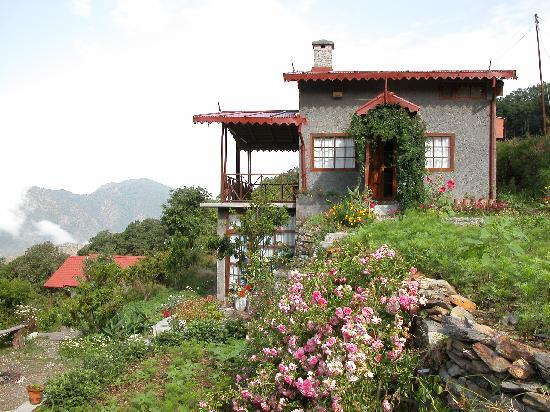
Uttarakhand, North India, Bird Sanctuary, Hill station, Lake district of India, Nature, Trekking, Valley, Wildlife Sanctuary
Pangot is a popular hill station which is located 15kms away from Nainital, Uttarakhand, India. Major attraction of this place is bird watching. Nainital and Dehradun are most popular places in Uttarakhand. When compared with these places this place is quiet and it is developing. This is the ideal destination for honeymooners. Natural beauty of the hill station is so attractive. This place is surrounding by seasonal streams and several Perennial.
What to see in Pangot: This is one of the best places for natural lovers as well as to the bird watchers. More than 580 birds can be seen here. Several varieties of Himalayan Species along with other species such as Khalij Pheasant spotted & slaty backed forktail, blue winged minla, variety of thrushes etc. In the surrounding areas of Pangot people can see nearly 150 bird species. Plenty of animals are also can be seen here. Major animal attractions of this place are Sambhar, barking deer, ghorals, Himalayan Palm Civets, yellow throaned Himalayan Martens, leopards etc.
Pangot is surrounded by several lakes such as Naukuchia Tal, Saat Tal, Naini Tal etc. Short easy treks are possible here. Most popular trekking trails in Pangot from this place to Naina peak via Kilbury. Other popular trekking places to go from this hill station are Nanda Devi, Pindari, Namik.
What to see around Pangot:
Nainital: Nainital is a popular hill station of Uttarakhand. Nainital Attractions are Nainital Lake, Naina Devi Temple, Governors House, Eco Cave Gardens, Pt.GB Pant High Altitude Zoo, Naini Peak, Snow View. It is one of 12 jyothirlingas. It is located 13kms away from Pangot.
Bhimtal: This place is named after Bhima of Mahabharata. Bhimtal is known for Bhimtal Lake. At the banks of this lake, visitors can see Bhimeshwara Mahadev Temple. Bhimtal Attractions are Bhimeshwara Mahadev Temple, Folk Culture Museum, Victoria Dam, Aquarium, Paragliding, Rappelling, Trekking, Angling. It is located 23kms away from Pangot.
Jeolikote: It is located 30kms away from Pangot. This is the best place for the people who are interested in spotting butterflies and Floriculture. In this place Sri Aurobindo Ghosh and Swami Vivekananda meditated here.
Naukuchia Tal: It is a beautiful lake. Naukuchia means nine cornered lake. It is possible to see all the 9 corners at a time. For yachting, Peddling, rowing this is the best place. It is located 38kms away from Pangot.
Ramgarh: This place is well known for its orchards of apricots, peach, pear, apple etc. This place is also known as Fruit bowl of Kumaon. It is located 47kms away from Pangot.
Mukteshwar: This place is named after the temple Mukteshwar Dham temple. Mukteshwar Attractions are Shiva Temple, Sitla, Indian Veterinary Research Institute, Chauthi ki Jaali, Raja Rani Temple, Brahmeshwara Temple, Trekking.
Getting to Pangot: Pangot is well connected with road. From the cities such as Ramnagar, Haldwani, Delhi, Dehradun, etc buses come to this place. Nearest railway station is located at Kathgodam which is 50kms away from Pangot. From cities such as Kanpur, Jammu, Delhi, Kolkata etc trains come to this place. Nearest airport is located at Pantnagar which is 78kms away from Pangot.
Getting around Pangot: As this is the small hill station one can enjoy this natural beauty by having walk. Buses and taxis are available to visit the surrounding places of Pangot.
Best time to visit Pangot: Best time to visit Pangot is between March to June and again between September to November.
Where to stay in Pangot: Limited accommodations are available to stay in Pangot. Along with budget and mid range hotels, lodges are also available to stay in Pangot.
Where to eat in Pangot: Limited eateries are available to have food in Pangot. Pahari Tea taste of this place is unforgettable.
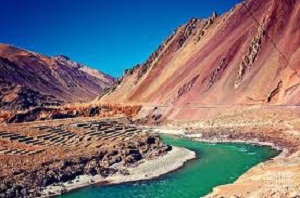
Jammu & Kashmir, North India, Adventurous sports, Buddhist Monestery, Buddhist Stupas, Buddhist temples, Fort, History, Musuem, Nature, Temple, Trekking
Leh is located in Leh district of Jammu and Kashmir, India. Leh is famous for pristine environment, Buddhist Palace and Scenic Locales. Tibet influence is more in this place. So Leh is also known as Little Tibet. It was once acted as Himalayan Kingdom of Ladakh. Leh Palace is looks like Potala Palace in Lhasa, Tibet. Major attractions of this place are Sankar Gompa and Shanti Stupa. It is one of the best places for adventurous sports. This is the best place for shopping lovers also. Worth buying things of this place are Thangka Paintings, Buddhist masks, Prayer Wheels, Ladakhi Jewellery, Knitted carpets, Chang Vessels, Cups, Shawls, Carpets, Hand-woven rugs, Ladakhi traditional dresses, etc. Major festivals of this place are Tak Tok, Harvest Festival, Sindhu Darshan, Dosmoche Festival, Hemis Festival, Losar.
What to see in Leh:
Leh Palace: This is the major attraction of this place. In 17th century this was acted as royal residence. Victory on the top of the Namgyal hill is another attraction. This tower was built as a mark of victory over Ballti Kashmir armies.
Namgyal Tsemo Gompa: It was built in 1430. Major attraction of this place are Frescoes, ancient manuscripts, 3 story high Buddha Statue.
War Museum: Other name is wall of fame. This museum showcases the war effort and Sacrifice of the Indian Army in its war against Pakistan.
Sankar Gompa: This place is famous for the statue of Avalokiteshwara Padmahari or Chenresig. This statue has thousands of heads and arms.
Chamba Temple: Maitreya is worshipped here. Statue of Maitreya is 14meters height.
Alchi Gompa: It is one of the largest gompa in Leh which is situated on the banks of river Indus. Best collection of paintings can be seen here.
Shanti Stupa: It has white domed monument with backdrop of brown mountains.
Zorawar Fort: It is above the Leh Palace and the Namgyal Tsemo Gompa stands the imposing Zorawar Fort overlooking the valley of Leh. Other name of this fort is Riasi Fort.
What to see around Leh:
Stok Palace: It is located 14kms away from Leh. Height is equal to 4 stories.
Hemis Gompa: In 1672 AD this was founded by King Senge Nampar Gyalva. Colourful festival celebrates in the month of July every year. Thousands of tourists come to this place, from across the world. It is located 40kms away from Leh.
Getting to Leh: Leh is well connected with road. To reach Leh there are two popular routes. One is from Srinagar via Kargil on Srinagar Leh Highway and other route is from Manali via Sarchu and Dharchu on the Manali Leh highway. Nearest railway station is located at Kalka. From this railway station, visitors have to reach to Manali via Shimla. From Leh, regular buses and taxis are available to reach Manali. Leh is having airport facility. This airport is well connected with Srinagar, Jammu, Delhi.
Getting around Leh: Best way to see the Leh is Trekking. Local buses are not available to visit the places of Leh. Bikes will be given for rent to explore Leh. Taxis and Jeeps are available to visit the surrounding places of Leh.
Best time to Visit Leh: Best time to visit Leh is between May and September. Most of the trekking routes closed during the winter season.
Where to stay in Leh: Plenty of accommodations are available to stay in Leh. Along with hotels, local guest houses, hiker’s huts, tourists complex, guest houses are also available to stay in Leh.
Where to eat in Leh: Plenty of restaurants are available to have food in Leh. Kashmiri dishes are famous at this place.
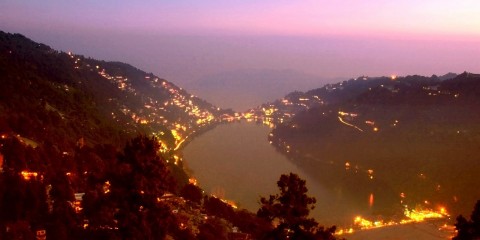
Uttarakhand, North India, Caves, History, Musuem, Nature, Shakti peethas, Temple, Trekking, Valley, Wildlife Sanctuary
Nainital is a popular hill station of Uttarakhand, India. Nainital is having its own place in the history. According to Skand Puranas, Nainital Lake is also known as Tri Rishi Sarovar. Three Sages are Pulaha, Pulastya and Atri. When these sages come to this place there are no water at this place, then they have kept a hole to have water.
What to see in Nainital:
Nainital Lake: It is located at the heart of the city. Town is derived its place due to this lake. Northern end of the lake is called Mallital and southern end is known as Tallital. Bridges connects these two ends of the lakes. It is eye shaped lake.
Naina Devi Temple: It is located at the banks of river Nainital. Major shrines of this temple are Lord Ganesha and Goddess Mata Kali. When Lord Shiva carrying the body of Goddess Sati, one of the body part of sati fell at this place. So this is considered as one of the Shakti peethas.
Governors House: Visitors can see Victorian Gothic Domestic style architecture at this place. It was built in 1899. FW Steven is the architecture of this House. It is two storied complex consists of golf links, a swimming pool, large garden and 113 rooms.
Eco Cave Gardens: It consists of musical fountain and 6 caves. This is the natural Garden.
Gurney House: Earlier this was the residence house of Jim Corbett. Museum of Corbett can be seen in this house.
Pt.GB Pant High Altitude Zoo: In India this is one of the high altitude zoo. Major attractions of this place are Serao, Snow Leopard, Siberian Tiger etc.
Tiffin Top: Other name is Dorothy’s seat. It is located on Ayarpatta hill. From this place visitors can have the best view of surrounding country side. It is a stone work picnic perch.
Naini Peak: It is the highest peak of the town.
Snow View: It is located on Sher-ka-danda Ridge. Visitors can reach this place by cable car. From this place visitors can have best view of Nanada Kot, Trisul, Nanda Devi and Snow peaked Himalayas.
What to see around Nainital:
Bhimtal Lake: It is located 22kms away from the town. This is the biggest lake of Nainital district. It is named after Bhima, one of the Pandavas. At this place one can see 17th century temple complex.
Khurpa Tal: It is located 10kms away from Nainital. This place is famous for angling. It is surrounded by terraced fields.
Sattal: It is located 23kms away from Nainital. Sattal means Seven Lakes. Each one is interconnected with each other. Most popular lakes are Ram, Sita and Laxman lakes.
Naukuchia Tal: It is located 26kms from Nainital. It is believed that if one takes in all nine corners in one glimpse, they can disappear into the smoke of clouds.
Jim Corbett National Park: It is located 63kms away from Nainital. Major attractions of this place are Common musk Shrew, Wild Boar, Chital, Tiger, Elephant etc.
Getting to Nainital: Nainital is well connected with road. From all the nearest cities buses come to this place. Nearest railway station is located at Kathgodam which is 34kms away from the town. From all the major cities trains come to this place. Pantnagar is the nearest airport located at 71kms away from the town. Taxis are available to reach Nainital from airport.
Getting around Nainital: Buses and Taxis are available to visit the surrounding places of Nainital.
Best time to visit Nainital: Nainital welcomes the tourists throughout the year.
Where to stay in Nainital: Plenty of accommodations available to stay in Nainital including luxury hotels. Best hotels are Classic The Mall, Balrampur House, Hotel Maharaja. Few resorts are also available here.
Where to eat in Nainital: Plenty of restaurants are available to eat in Nainital.
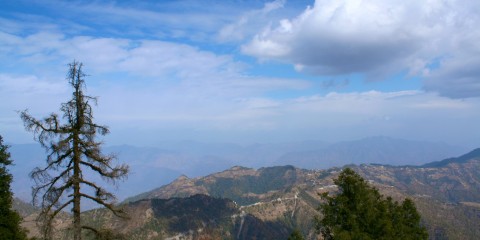
Uttarakhand, North India, Dussehra, Hill station, Mountian Biking, Nature, Temple, Trekking, Valley
Dhanaulti is a hill station situated between Mussoorie hill station and Chamba. This hill station is known for alpine forests of Oak, Rhododendron, and Deodar. Around this hill station, trekking activity takes place. This is best place for shopping lovers also. Major market can be seen on Dhanaulti and Mussoorie road. Best products to buy at this place are Stoles made using silk wool, natural dyes, Pashmina, Scarves, hand woven shawls etc.
What to see in Dhanaulti:
Aaloo Khet: This place is famous for Sunrise. Fields belongs to Government. Few are owned by Private Farmer also. Huge production of Potatoes is cultivated here. Potatoes will be exported to other states of Uttarakhand. Doon Valley Market can be Cleary seen from this place. Visitors can have a walk around the fields. Horse rides are also allowed to see around the fields.
Eco Park: This is the major attraction of Dhanaulti. In this hill station two Eco parks are located. They are Dhara and Amber. In the recent days these are developed by Forest Department. Forest Department has taken the help of local youth to develop this place as Eco Parks. This area houses a protected patch of small forest containing Deodar Trees. To enjoy the landscapes of this hill station, Eco huts are maintaining by forest department.
Jain Temples: These are located near Kanali Fort in the Dhanaulti hills. There are 31 temples at this place. Jain temples are situated at the banks of Betwa River. All are constructing like Lord Vishnu Temple. But architecture of each temple is unique of each other. On the temples, visitors can see images of Tirthankaras. These temples are built between 6th to 17th centuries.
Waterfalls: Water Falls are other major attraction of this hill station. Popular falls of this place are Joranda whose height is 150 meters and Barehipani whose height is 400 meters.
What to see around Dhanaulti:
Surkanda Devi Temple: It is located 8kms away from Dhanaulti. In autumn season, Ganga Dussehra fair celebrates grandly. Trekking opportunity from Dhanaulti to Kunjapuri, Chandrabadni and Surkanda Devi is possible. It is believed that Lord Shiva dropped the remains of Goddess Sati.
Camp Thangdhar: It is located in Thangdhar Village which is 14kms away from Dhanaulti. This place is so attractive to the mountain adventure lovers. Accommodations are also available at this camp. Major activities conducts at this place are snow camping, bonfire, rock climbing, mountain biking, golf, Trekking etc.
Chamba: Chamba is the ancient town in Himachal Pradesh. This town is famous for several Palaces and Temples. Chamba Attractions are Hariraya Temple, Bhuri Singh Museum, Church of Scotland, Laxmi Narayana Temple, Trekking views. It is located 27kms away from this hill station.
Getting to Dhanaulti: Dhanaulti is well connected with road. From Rishikesh, Roorkee, Haridwar, Nainital, Dehradun, etc buses come to this place. Nearest railway station is located at Dehradun which is 82kms away from the hill station. Dehradun is well connected with cities such as Varanasi, Indore, Kolkata, Amritsar, Chennai, Delhi, Mumbai; Ujjain etc trains come to this place. Nearest airport is also located at Dehradun. Name of this airport is Jolly Grant airport. Flights come to Dehradun from Delhi. Taxis are available to reach this hill station from Dehradun airport.
Getting around Dhanaulti: It is easily explored on foot. Horses and taxis are available to see the places of Dhanaulti. Taxis and buses are available to visit the surrounding places of this hill station.
Best time to visit Dhanaulti: During the winter season climate is so cold. Best time to visit this place is between February to May.
Where to stay in Dhanaulti: only limited accommodations are available to stay in Dhanaulti. Tourist’s bungalows and forest rest houses are also available to stay in Dhanaulti.
Where to eat in Dhanaulti: Only limited restaurants are available to eat in Dhanaulti. All restaurants serve Continental, Italian, Chinese and Indian Cuisines.
Jageshwar is a Hindu Pilgrimage. It is located in Almora district, Uttarakhand, India. Jageshwar is located in Kumaon region of Uttarkhand. This place is famous for temples dates back to 9th to 13th century. Town consists of 124 large and small stone temples. It is place of one of the 12 Jyotirlingas. Major festivals celebrates in this place are Jageshwar Monsoon Festival and Maha Shivratri Mela. Other name of this city is Temple city.
Temples of Jageshwar belongs to Pre- Medieval era and Post Gupta Era, according to Archaeological Survey of India. Based on this analysis temples of this place are 2500 years ago temples. In the temple complex of Jageshwar, once there were 400 temples but now visitors can see only 108 temples.
What to see in Jageshwar:
Jageshwar Temple: Lord Shiva Worshipped here in the form of Child. According to Hindu Mythology, Lord Shiva meditated here. When Lord to come to meditate here all the women wants to catch him, so all the men are jealous of this scene. To control the situation Lord took the form of a child.
Dandeshwar Temple: In the kumaon region, this is the biggest and largest temple. Major attraction of this temple is Dancing Shiva made out of rock which belongs to 18th century.
Vriddha Jageshwar: Lord Shiva can be seen in the form of age old person.
Vinayak Kshetra: This is the starting temple of Jageshwar.
Jhanker Sam Mahadev: It is believed that at this place Lord Shiva meditated. When Shiva was meditating demos try to disturb him then God Jhanker Sam sent his Ganas to kill demons.
Pushti Devi Temple: Other name of this temple is Pushti Bhagawati Maa Temple. Goddess Devi is worshipped here. It is located in the main premises of Jageshwar.
Kot Ling Mahadev: It is believed that Lord Shiva originally selected this place for meditation. This is 2kms away from Jageshwar Temple. Small Mountain is located here. Trekking activity leads to this temple.
Mahamrityunjaya Temple: This is the oldest temple in the temple complex. Entrance of this temple is so unique. It is in eye shape. Mahamrityunjaya Chant can be heard in this temple.
Archaeological Museum: Museum consists of 194 sculpture dates back to 13th century. Major sculptures are Navagraha, Surya and Uma Maheshwar Sculptures. Other attractive sculpture is Pona Raja. He was the local king. Raja is most respectable in Kumaon region.
What to see around Jageshwar:
Chitai Temple: Temple is dedicated to Golu Devta an incarnation of Gaur Bhairav. Thousands of bells can be seen in the temple. To fulfil the wishes, devotees donate brass bells to the Lord. It is located 29kms away from the town.
Binsar: This place is famous for Lord Shiva temple. Spectacular view of Nanda Devi is possible from here. It is located 54kms away from the town.
Getting to Jageshwar: Jageshwar is well connected with road. Plenty of buses come to this place from several cities. One bus route is through Kathgodam and Haldwani and other route is through Jim Corbett National Park. Nearest railway station is located at Kathgodam which is 128kms away from the town. Buses and Taxis are available to reach the town from Kathgodam. Nearest airport is located at Pantnagar which is 165kms away from the town.
Getting around Jageshwar: Temples of the village can be explored on foot. Taxis and buses are available to visit the surrounding places of Jageshwar.
Best time to visit Jageshwar: Best time to visit this place is from March to June and from September to November.
Where to stay in Jageshwar: Only few accommodations are available to stay in Jageshwar. Few Guest houses, a hotel, a forest lodge and a tourist rest house are available in Jageshwar.
Where to eat in Jageshwar: Only limited eateries are available to have food in this place. Famous foods of this place are Thalis and aloo Puri.
Hunder is located in Nubra Valley of Jammu and Kashmir. Nubra is famous for sand dunes. Hunder is located 7kms away from Diskit Monastery. Diskit is famous for Buddhist Monastery. Major attractions of Hunder are natural beauty and Bactrian camel. To reach this place visitors have to pass through Khardung La. Khardung La is the world’s highest motorable pass.
What to see in Hunder: Natural beauty is the major attraction of this place. Another attraction of this place is Bactrian camels. In Rajasthan, visitors can see only single humped camels where as in Hunder visitors can see two humps Bactrian camel. Most memorable incident in this region is Joyrides on the Bactrian Camels through sand dunes.
Medicinal Plants with Nutritive Properties, Vitamin Properties, Bio Molecules properties and Sea buckthorn can be seen in the forests of Hunder. The place where these plants can be seen is known as Leh Berry. Horticulture products such as flowers, different fruits, apples, almonds, walnuts, apricots can be seen here. Hunder is famous for campers.
Other major attraction of this place is oldest Buddhist Monastery. This monastery is also known as Hunder Gompa. It is located very near to Diskit Monastery. Ancient culture of the Hunder People can be seen through the festivals celebrated in Hunder. Major attraction of this place is traditional sports, arts, Cham dance.
What to see around Hunder:
Leh: This place is famous for traditional houses, royal Palaces, stupas, gompas and old monasteries. This is second largest district in India. Leh was once acted as very important stopover as it lay on the silk route connecting central Asia.
Shey Palace: For the Ladakh monsters this was the summer residence. Palace was built in 1655 AD by Ladakh King Deldan Namgyal. In the Bollywood movie 3 idiots, Rancho’s School is situated in Shey village. In the Shey village scenic beauty is most memorable.
Sani Monastery: In Zanskar, this is one of the oldest monasteries. Other major attractions of this place are Buddha Idols, stone carvings, ancient murals.
Chamba Temple: Maitreya is worshipped here. Temple is having 14 meters high statue of Maitreya.
War Museum: Other name of this museum is Hall of fame. It showcases the war effort and sacrifice of the Indian Army in its wars against Pakistan.
Sankar Gompa: Avalokiteshwara Padmahari statue is the major attraction of this gompa. This statue is having thousand heads and thousand arms.
Nubra Valley: This valley is known as Valley of flowers. Khardung La Pass is the entry way to the valley. To enter into this valley, visitors have to cross Shyok River.
Getting to Hunder: Hunder can be reached from Leh. Khardung La Pass is the entry way to the Valley. Inner permission to enter into the Khardung La pass in essential. From Sumur, one road goes to Panamik and other road goes to Hunder and Diskit. Diskit is the last bus stop. From this place jeeps and camels are available to reach Hunder. Nearest railway station is located at Jammu. Taxis and buses are available to reach Leh and then Jeeps are available to reach Hunder. Nearest airport is located at Leh.
Getting around Hunder: Jeeps and Bactrian Camels are the best way to visit the places of Hunder as well as to reach the surrounding places of Hunder.
Best time to visit Hunder: During the winter season gateway will be closed due to heavy snow fall. Best time to visit this place is between June to August.
Where to stay in Hunder: Private hotels and guest houses are available to stay in Hunder. Home stays are also available to stay in Hunder.
Where to eat in Hunder: Home stays offer food to the visitors of Hunder. Several restaurants are also available to eat in Hunder. Only basic meals are available to eat.
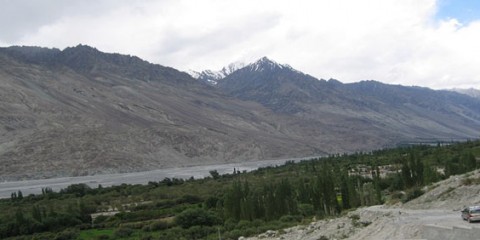
Jammu & Kashmir, North India, Camal Safari, Hot Springs, Mountain Passes, Nature, Trekking, Valley
Panamik is a beautiful village in Nubra Valley of Jammu & Kashmir. At the frontiers of India before the Tibetan territory this is the last village. Panamik is surrounded by lush green trees and snow clad peaks. This place is most famous for hot water springs. It is located very close to Siachen glacier. Siachen glacier is the highest battlefield in the world. Foreigners are also allowed to visit this place.
What to see in Panamik:
Hot water springs: It is situated at an elevation of 10442ft above the sea level. This is major attraction of this palace. Water in the hot springs consists of high sulphur. It is believed that this water will be used to cure rheumatism and other ailments.
Other attractions of Panamik: Other attractions of Panamik are Pashmina goats and Bactrian Camels. Snow capped mountains surrounding to the village are other major attraction for the natural lovers. Tourists are attracting to this place for Sulphur springs and Scenic Beauty. In the Ladakh region main mode of transportation is Bactrian Camels. Pashmina shawls are most famous in this place. These are made up of wool from Pashmina goats. Trekking is another attraction of this place. It is the base for trek to Ensa Gompa.
Woollen Socks, Pashmina Shawls and Kashmiri Carpet are worth buying at this place. Other worth buying things of this place is almonds, apples, walnuts, apricots.
What to see around Panamik:
Diskit Monastery: It is the oldest and largest Buddhist Monastery in the Nubra Valley. Monastery is the house for more than 100 monks. Monastery consists of Prayer hall. This hall is having several images of fierce guardian deities and a statue of Maitreya Buddha. Other attractions of this place are Lachung Temple and double humped Bactrian camel. It is 350 years old monastery.
Ensa Gompa: From this Gompa visitors can have the spectacular view of Nubra Valley. This gompa is 250 years old gompa. From Panamik Village it will take 6 hours to reach this gompa through trekking. This gompa is famous for scriptures and Buddhist Murals.
Samstemling Gompa: In 1962, this was inaugurated by Dalai Lama. It is located in Sumur village. Major attractions of this gompa are collection of seven shrines, thangkas, murals and Buddhist idols.
Hunder: This is one of the popular Buddhist Monasteries. Major attractions of this place are camel rides, sand dunes, water streams.
Likir Gompa: It is one of the old monasteries in Ladakh district. Major attractions of this gompa are Stupas, thangkas, murals, architecture of 75 feet Buddha statue.
Leh Palace: It is Potala Palace in Lhasa. This is 17th century royal residence. Near to this palace, victory tower was built on Namgyal hill. This was built to symbolise the victory over Balti Kashmir armies in 16th century.
Khardung La: This is the only way to enter into Nubra Valley. Other name of this place is K-Top. In the world, this is one of the highest motorable roads. During the winter season this way will be closed due to heavy snow fall.
Getting to Panamik: Panamik can be reached from Leh by Jeep. Visitors require inner line permit to enter into the Nubra Valley. After Khalsar, one road leads to Diskit and other road leads to Sumur till Panamik. Nearest railway station is located in Jammu. Taxis are available to reach Leh. Nearest airport is located at Leh. Taxis are available to from the airport to reach Diskit. Then visitors can reach to Panamik.
Getting around Panamik: Best way to visit the places in and around Panamik is by own vehicle or by Jeep.
Best time to visit Panamik: As snowfall is heavy in this place, best time to visit this place is between June to August.
Where to stay in Panamik: Very limited options to stay in Panamik. Only few rest houses are available. Visitors cannot think of luxury hotels.
Where to eat in Panamik: In Panamik there are only limited options to eat. There are no spate restaurants at this place. Only rest houses provide meals to the visitors.
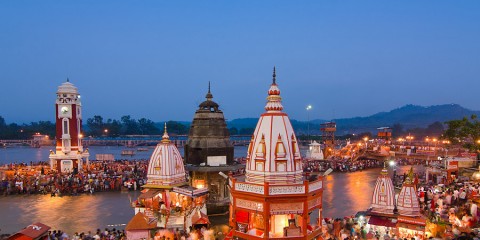
Uttarakhand, North India, History, Mahabharata, Nature, Temple, Wildlife Sanctuary
Haridwar is a city in Haridwar district of Uttarakhand, India. It is one of the seven holiest places for the Hindus. This city is located on the banks of River Ganga at the foothill of Shivalik Range. It is one of the 4 sites where Kumbh Mela held every 12 years. Journey of River Ganga starts from this place. It is the major Shaktipeeth. During Kumbh Mela period thousands of devotees come to this place. People believe that taking the dip at this place during Kumbh Mela will wipe off all the sins. Along with Hindus, Haridwar is sacred place to Sikhs also as founder of the religion, Guru Nanak come to this place for 2times.
What to see in Haridwar:
Kumbh Mela: It is a mass Hindu pilgrimage of faith in which Hindus gather to bath in a sacred river. Kumbh Mela conducts here for every 12 years in Haridwar.
Hari Ki Pauri: It is one of the most sacred Ghats. Other name of this place is Brahmakund. It is believed that, in the memory of brother Bhartrihari, this was built by King Vikramaditya.
Mansa Devi Temple: It is one of the Siddhpeerthas. Mansa Devi is worshipped here. It is located at the top of the Bilwa Parwat.
Chandi Devi: It is believed that, in 8th century main idol was kept by Adi Shankracharya. This was constructed by King of Kashmir Suchat Singh in 1929 AD.
Kankhal: In Haridwar this is a small colony. This place was mentioned as Kanakhala in Mahabharata and Vayu Purana. It is one of the Panch Tirth.
Daksheswara Mahadev Temple: Lord Shiva worshipped in this temple. It is located in Kankhal. This temple was built in 1810 by Queen Dhankaur. In 1962, a temple was rebuilt.
Maya Devi Temple: This temple is dedicated to Goddess Maya Devi. It is sometimes referred to as Shakti Peetha. Deity of the temple has 4 arms and 3 heads. Temple was dates back to 11th century.
Doodhadhari Barfani Temple: It is one of the beautiful temples of Haridwar. This temple complex consists of Hanuman Temple, Rama Sita temple. All are built with white marble.
What to see around Haridwar:
Rajaji National Park: It is located 10kms away from Haridwar. This park covers 3 district of Uttarakhand. Those 3 districts are Pauri Garhwal, Dehradun and Haridwar. Earlier there are 3 sanctuaries namely Rajaji, Motichur and Chilla. Now these are merged as one sanctuary with the name Rajaji National Park. Major fauna attractions of this park are Asian Elephant, leopard, Jungle Cat, Goral, Indian Hare etc. Major flora attractions of this place are acacia, dalbergia, bridelia, terminalia, Adina, Mallotus etc.
Rishikesh: It is located 24kms away from Haridwar. This is the gateway to Chota Char Dham Pilgrimage. Chota Char Dham includes Yamunotri, Badrinath, Gangotri and kedarnath. This place revolves around festivals and prayers. International Yoga festival celebrates annually in the month of February.
Sureshvari Devi Temple: It is located in Ranipur which is located 10kms away from Haridwar. Goddess Sureshwari is worshipped here.
Getting to Haridwar: Haridwar is well connected with road and railways. From Delhi, Gangotri, Yamnotri, Uttarkashi, Tehri, Mussoorie, Dehradun etc buses come to this place. From all the major cities trains come to this place. Nearest airport is located at Dehradun i.e. Jolly Grant which is 226kms away from the city.
Getting around Haridwar: Taxis, Autos, Buses, cycle rickshaws are available to visit in and around places of Haridwar.
Best time to visit Haridwar: Best time to visit this place is between September to June.
Where to stay in Haridwar: Plenty of hotels are available to stay in Haridwar. Few luxury hotels are also available here. Along with hotels, Dharmasalas are also available to stay in this place.
Where to eat in Haridwar: Limited restaurants are available to eat in Haridwar. Only vegetarian food is available.
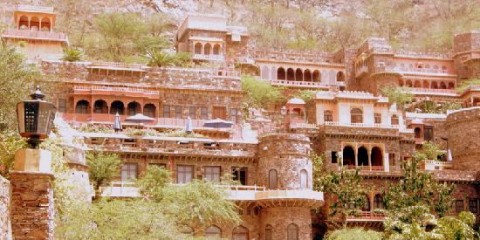
Rajasthan, North India, Architecture, Fort, History, Mughal, Musuem, Nature, Palace, Tomb, Wildlife Sanctuary
Alwar is a city of Alwar district of Rajasthan, India. Formally Alwar was the capital of Princely state of Alwar. In 1770, Pratap Singh has founded the princely state. Major attraction of this place is Sariska Tiger Reserve. To see this reserve both national and international tourists come to this place. For the shopping lovers also this is the best place. Double dyed Saris, Colourful bangles, artefacts, silver jewellery etc are worth buying at this place. Roaming through the old avenues in the town is most memorable experience.
What to see in Alwar:
City Palace: This was built by Raja Bhaktawar in 1793 AD. Mughal and Rajput style can be seen in this palace. In large central courtyard, bases are made up of lotus flower. Major attractions of this place are emerald cut drinking cup, Maharaja’s personal belongings, trinkets, artworks, etc.
Bala Quila: Bala Quila means young fort. Other name of this fort is Alwar fort. There are 446 holes for firing guns from this quila. It consists of 51 small towers and 15 large towers. Nikumbha Mahal Palace is located inside the quila.
City Palace Museum: This is located inside the city Palace. Royal elegance is preserved at this place. It is divided into 3 sections. Major attractions of this place are Mughal Paintings, Rajput Paintings, objects made up of Silver, Jade, Ivory, Rajput weapons etc.
Moti Doongri: This is famous for Lakshmi Narayan Temple, Ganesh temple and Swank Palace. It was once the residence place of Rajmata Gayatri Devi. Architecture of this structure is so unique.
Siliserh Lake: In 1845 AD this was constructed by Maharaja Vinay Singh. Now it was converted into heritage hotel. Plenty of migratory birds can be seen here. This is one of the best spots for anglers.
Vinay Vilas Palace: It is located near Alwar Fort. Earlier it was the residence of Maharaja Vinay Singh. Other name of this palace is Garden Palace. This was built in Mughal and Rajasthani Styles. Carved structures of this palace are so attraction.
Other places to visit in Alwar: Other places to visit in Alwar are Company Bagh, Bhangarh Fort, Moosi Maharani Ki Chhatri, Tomb of Fateh Jung, Vijay Mandir Palace, Purjan Vihar, Choohar Sidh Falls, Tripolia Imperial Mausoleum, Cenotaph of Maharaja Bakhtawar Singh.
What to see around Alwar:
Sariska Tiger Reserve: It is located 53kms away from Alwar city. This area is Rich in mineral resources such as copper. In the world this is the first tiger reserve. Major attractions of this place are Bengal tiger, Golden Jackal, Striped hyena, Caracal, Jungle cat, Leopard etc.
Karni Mata Temple: This temple is dedicated to Karni Mata who is an incarnation of Goddess Durga. Other name of this temple is Rats Temple. Nearly 20,000 rats can be seen here. Devotees offer sweets and milk to the rats.
Natni Ka Baran: This place is famous for ancient Shiva Temple. It is the ideal place for relaxation.
Other attractions near Alwar: other attraction near Alwar Garbhaji Falls, Krishna Temples, Talvriksha.
Getting to Alwar: Alwar is well connected with road and railways. From all the major cities state run buses and private buses come to this place. Alwar railway station is well connected with Delhi and Jaipur. Sanganer airport in Jaipur is the nearest airport to Alwar. This airport is located 162kms away from the city. Airport is well connected with Delhi and Mumbai. Taxis are available to reach Alwar from the airport.
Getting around Alwar: Autos and buses are available to visit the surrounding places of Alwar.
Best time to visit Alwar: Mild showers and moderate climate can be enjoyed between July to September. Best time to visit this place is between October to March.
Where to stay in Alwar: Plenty of hotels including luxury hotels are available to stay in Alwar. Cost of budget hotels is Rs.500 per day and cost of luxury hotels is between Rs.3000 to Rs.5000 per day.
Where to eat in Alwar: Plenty of eateries are available to have food at Alwar. Jain food is also available at this place. Famous food of this place is mirchi ka achaar, gajar ka halwa in pure ghee, allu parathas.
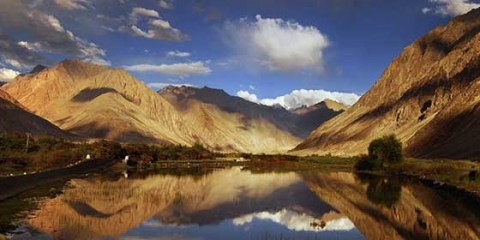
Jammu & Kashmir, North India, Architecture, Buddhist Monestery, Buddhist Stupas, Camal Safari, Hot Springs, Nature, Orchards, Sand Dunes
Nubra Valley is a tri armed Valley. It is located to the north east of Ladakh Valley, Jammu and Kashmir. Nubra is the capital of Diskit. Earlier name of this valley is Ldumra. Ldumra means valley of flowers. This valley is famous for monasteries, Bactrian camels, Scenic Vistas and Orchards. Another attraction of this place is cold desert which lies between Hunder and Diskit. Tourists come to this place to enjoy the joy rides of Bactrian camels and sand dunes. It is surrounded by snow covered Himalayan ranges. This is the best place to purchase Socks, Pashmina Shawls and Kashmiri Carpets.
What to see in Nubra Valley:
Diskit Monastery: It is the oldest and largest Buddhist Monastery in the Nubra Valley. Monastery is the house for more than 100 monks. Monastery consists of Prayer hall. This hall is having several images of fierce guardian deities and a statue of Maitreya Buddha. Other attractions of this place are Lachung Temple and double humped Bactrian camel. It is 350 years old monastery.
Ensa Gompa: From this Gompa visitors can have the spectacular view of Nubra Valley. This gompa is 250 years old gompa. From Panamik Village it will take 6 hours to reach this gompa through trekking. This gompa is famous for scriptures and Buddhist Murals.
Samstemling Gompa: In 1962, this was inaugurated by Dalai Lama. It is located in Sumur village. Major attractions of this gompa are collection of seven shrines, thangkas, murals and Buddhist idols.
Hunder: This is one of the popular Buddhist Monasteries. Major attractions of this place are camel rides, sand dunes, water streams.
Panamik: This is one of the popular picnic spots of the place. It is India’s final frontier towards Tibet. This place is famous for hot water springs.
What to see around Nubra Monastery:
Likir Gompa: It is one of the old monasteries in Ladakh district. Major attractions of this gompa are Stupas, thangkas, murals, architecture of 75 feet Buddha statue.
Leh Palace: It is Potala Palace in Lhasa. This is 17th century royal residence. Near to this palace, victory tower was built on Namgyal hill. This was built to symbolise the victory over Balti Kashmir armies in 16th century.
Matho Monastery: Major attractions of this monastery are art works, stupas, murals and festivals. It is located at the mouth of gorge in Zanskar range. This was constructed in 16th century.
Hemis Gompa: In 1672AD this was constructed. Every year colourful festival celebrates here in the month of July.
Khardung La: This is the only way to enter into Nubra Valley. Other name of this place is K-Top. In the world, this is one of the highest motorable roads. During the winter season this way will be closed due to heavy snow fall.
Getting to Nubra Valley: It is well connected with road. Visitors can be reached to this place from Leh by jeep or by bus. Visitors require inner line permit to enter into the Nubra Valley. After Khalsar, one road leads to Diskit and other road leads to Sumur till Panamik. Nearest railway station is located in Jammu. Taxis are available to reach Leh. Nearest airport is located at Leh. Taxis are available to from the airport to reach Diskit monastery.
Getting around Nubra Valley: Best way to visit the places in and around Nubra Valley is by own vehicle or by Jeep.
Best time to visit Nubra Valley: As snowfall is heavy in this place, best time to visit this place is between June to August.
Where to stay in Nubra Valley: Midrange guest houses are available at Diskit. Good hotels are available at Hunder. Sumur has deluxe camps to stay in Nubra Valley.
Where to eat in Nubra Valley: Both guest houses and hotels situated in this valley provides European, Continental, Chinese and Indian meals.
Amritsar is one of the largest cities of Punjab, India. Guru Ramdas founded this city in 16th century. He was the 4th Sikh Guru. This is most sacred place for Sikhs due to the establishment of Golden temple. Along with Sikhs this place is popular among Hindus also as plenty of sacred temple are located here. City is named after Amrit Sarovar which is surrounding the Golden temple. Punjabi Juttis, woollen textiles, bangles, durries, carpets etc are worth buying at this place.
What to see in Amritsar:
Golden Temple: Golden Temple is the most sacred place to the Sikhs. Other name of this temple is Harmandir Sahib. Original temple was built by Guru Arjun, 5th Sikh Guru. Golden Temple Attractions are Central Sikh Museum, Amrit Sarovar, Marble Work, Holy Trees, and Shrines of Sikh Guru’s.
Akal Takht: It is located in Golden temple complex. Akal Takht means throne of immortal. It stands as a witness to Sikh idea of sovereignty.
Jallianwala Bagh: During the period of Independence struggle sad incident happened in this place. This is also known as Amritsar Massacre. On 13th April 1919, British troops fired on peaceful protestors. In this incident nearly 1100 people were killed.
Maharaja Ranjit Singh Museum: It is the summer palace of Maharaja Ranjit Singh. He is the first king of Sikh Empire. Major attractions of manuscripts, old coins, paintings, armours, arms belong to Maharaja Ranjit Singh.
Santokhsar Sahib: This Gurdwara is famous for Sarovar. In the history of Sikh this is the first Sarovar of its kind.
Bathinda Fort: It is one of the major attractions of Amritsar which was built by Bhatti Reo before 1800 years ago.
Bar Baba Buddha: It is inside the Golden temple. Under the tree Baba Buddha sits and meditated here.
Gurdwara Baba Atal Rai: It is 33m high nine storied octagonal tower. This is the tallest tower in Amritsar.
Rambagh Gardens: It was the summer palace of Maharaja Ranjit Singh. Major attractions of this park golden fish and fountains. It is now converted into Museum.
Gurudwara Guru Ka Mahal: This was the birth place of Baba Atal Rai.
Ram Tirth: This was the residence place of Saint Valmiki. Goddess Sita Given Birth to her sons Luv and Kush. Hut of the saint can be seen even now.
Gurdwara Santokhsar Sahib: It is one of the five historical sarovers constructed by Guru Arjan Dev Ji.
Other attractions of Amritsar: Other attractions of Amritsar Khalsa College, Hall Bazaar, Hanuman Mandir, Durgiana Temple, Maharajah Ranjit Singh Panorama, Gurdwara Pipli Sahib, Gurdwara Mata Kaulan, Khair-ud—Din Masjid, Gobindgrah Fort, Lal Devi Mata Mandir.
What to see around Amritsar:
Tarn Taran: It is located 22kms away from Amritsar. 5th Sikh Guru, Guru Arjan Dev ji built this Gurdwara. This place is famous for its sarovar. This sarovar is largest holy tank in the world.
Wagah Border: It is located 28kms away from Amritsar. Every evening before sunset, 40 to 45 minutes ceremony takes place here. It is the road border between India and Pakistan.
Gurudwara Chheharta Sahib: It is located 7kms away from the city. This was the birth place of 6th Guru of Sikh, Guru Hargobind Singh.
Getting to Amritsar: Amritsar is well connected with road, railways and airways. From Dharmasala, Chamba, Dalhousie, Chandigarh etc buses come to this place. From Delhi, Mumbai, Hyderabad etc trains come to hits place. Airport located in Amritsar is Sri Guru Ram Das jee Airport which is located 11kms away from the city centre.
Getting around Amritsar: Common modes of transport in the city of Amritsar are Cycle rickshaws and Autos. Golden temple trust is providing free bus service from the railway station to reach Golden temple.
Best time to visit Amritsar: Best time to visit this place is between November to March.
Where to stay in Amritsar: Plenty of accommodations are available at Amritsar.
Where to eat in Amritsar: Plenty of restaurants are available at Amritsar. Golden temple serves free food to nearly 40,000 people per day. Famous delicacies of this place are Chicken Tikka, Tandoori Chicken.
Nathdwara is a town in Rajasthan, India. It is located on the banks of Banas River. This place is well known for Krishna Temple which is dates back to 12th century. Lord Krishna worshipped here in the form of Shrinathji. Architecture of this temple is so attractive. Idol was originally located at Mathura but later shifted from Govardhna hill with the intention to protect from anti Hindu Islamic Polices of Aurangzeb. Nathdwara means gate way to the lord.
This town is well known for terracotta products and Pichhwai Paintings. From more than 2000 years old this tradition of making these products is following by the local people. Meena work of Nathdwara must buy thing though it is expensive. Silver ornaments will be available at reasonable price. Janmashtami, Holi and Diwali celebrate so grandly in Nathdwara.
What to see in Nathdwara:
Shrinathji Temple: Lord Shrinathji incarnation of lord Krishna is worshipped here. Idol is 7 years old infant with Govardhan Hill on his hand. This temple was built in the shape of a house but not in the shape of the temple. Live Concerts present at this place at regular intervals to entertain the infant Lord. One of the most interesting this at this place is, during Royal Darshan in the noon, trumpets and drums will rang like old days and give the announcement as king entering into the court. Between 3.30 to 4.00 PM , visitors rush will be more as people believe that at this time lord Krishna wakes up at this time.
Eklingji: This temple belongs to Lord Shiva. It is best example for beautiful carvings, artistic work. It is one of the manifestations of Lord Shiva. 4 faced idol of Lord Shiva can be seen here. This temple belongs to 15th century. In the temple premises, 108 temples can be seen.
What to see around Nathdwara:
Charbhuja: It is located 14kms away from the town. Other name of this place is Gadbor. This is well known for its history. Charbhuja temple is the major attraction of this place. Structural designs of this temple are most beautiful. Temple is dedicated to Lord Vishnu. This place is also famous for Victorian Past.
Kankroli dam: Major attractions of this place are marvellous chhathris of the former royal families. It is the best picnic spot for the natural lovers. It is located 72kms away from the town.
Dwarkadheesh: Major attraction of this place is Dwarkadheesh temple. Lord Dwarkadheesh incarnation of Lord Krishna is worshipped here. For the vaishnavites this is most famous place. It is located 20kms away from the town.
Getting to Nathdwara: Nathdwara is well connected with roadways. Both state run buses as well as private buses reach to this place. From Jaipur, Ajmer, Delhi, Pushkar, Udaipur etc buses reach to this place. Nearest railway head is located at Udaipur. This place is well connected with North India, Delhi and Jaipur. Taxis are available to reach the town from the railway station. Nearest airport is also located at Udaipur. From Udaipur to Rajasthan buses reach at regular intervals. Airport is well connected with Mumbai, Delhi, Jaipur, and Kolkata. Taxis are also available to reach the destination from the airport.
Getting around Nathdwara: Walking is the best way to see the town. Buses and Taxis are available to visit the surrounding places of Nathdwara.
Best time to visit Nathdwara: Best time to visit this place is between July to September.
Where to stay in Nathdwara: Plenty of accommodations are available to stay at this place. Along with hotels, Dharmashalas are also available to stay. Cost of deluxe rooms is Rs.1800. Cost of affordable rooms is Rs.20 to Rs.50. Luxury hotels is available at the cost of Rs.2500 to Rs.3500 per day.
Where to eat in Nathdwara: Restaurants are available to eat in Nathdwara. Most famous food of this place is Phaphda, Kand, Khaman. All sorts of jeera Golis are available here.
Osian is an ancient town in Jodhpur district of Rajasthan, India. Other name of this place is Khajuraho of Rajasthan. This is an Oasis in the Thar Desert. Major attractions of this place are Jain and Brahmanical temples dates back to 8th and 11th centuries. Golden sand dunes surround this place. Architectures and carvings of this place are so attractive. Camel Safari is most famous in the desert.
What to see in Osian:
Kali Temple: Devi Kali is worshipped here. Devi Kali is an incarnation of Goddess Durga. This is most ancient temple which dates back to 8th century.
Sun Temple: Lord Sun is worshipped here. This temple is dates back to 10th century. Images of Serpents coiled around lotus flowers on the ceiling of the temple. This temple looks like temple at Ranakpur.
Harihara Hindu Temples: Harihara Temples are located in the southern part of the Osian. It is group of 3 temples. Two temples are constructed in 8th century and one was constructed in 9th century. When compared with other temples of Osian, architectures of these temples were so advanced. Lord Krishna and Radha dancing postures on the walls of the temples are so attractive.
Sachiya Mata Temple: Goddess Sachi Mata is worshipped here. She is the wife of Lord Indra. This temple is most popular among Jains also and they conduct Mundan Sansakar at this temple. Oswal Jains also worshipped Goddess Sachi. Other two shrines of the temple are Amba Mata Mandir, Chandi Ka Mandir. At the east end of the temple complex, Lakshmi and Vishnu images can be seen and at the north end to the temple, Varaha sculpture can be seen who is an incarnation of Lord Vishnu.
Pipplala Temples: It is a small temple of Osian which was constructed dates back to 9th century. Major attractions of this temple are 30 pillars assembly hall, large sabha Mandap and columns.
Jain Mahavira Temple: This temple was dedicated to Lord Mahavira, 24th Jain Thirthankara. In 783AD this was constructed by Gurjara Pratihara King Vatsaraja. Architecture of this temple is so attractive. Young Maidens impressions can be seen at the main door of the temple. Height of this temple statue is 32inches.
What to see around Osian:
Shri Mandore Bherji: It is located in Mandore which is 51kms away from Osian. This is the temple of Oswal Community people. Lord Bherji is worshipped here. This temple also consists of 33 crores god shrines.
Jodhpur: It is located 67kms away from Osian. This place is famous for temples and forts. History of Jodhpur dates back to 1100 BC. Rajasthani Textiles, Jewelleries, handicrafts are most popular at this place. This place is known as Golden city of Rajasthan.
Khimsar: It is located 65kms away from Osian. This is converted into heritage hotel. It was 16th century fort. This place is famous for birds.
Getting to Osian: Osian is well connected with road ways. From Jaipur, Jodhpur, Bikaner etc buses come to this place. Nearest railway station is located at Jodhpur which is 67kms away from Osian. From Kota, Jaipur, Bikaner, Guwahati etc trains come to this place. Nearest airport is located at Jodhpur. This airport is well connected with Udaipur, Mumbai and Delhi.
Getting around Osian: This place can be explored through foot. Camel safari in this town is one of the attractions of this place. Buses and Taxis are available to visit the surrounding places of Osian.
Best time to visit Osian: Best time to visit this place is between November to March.
Where to stay in Osian: Accommodations are limited at this place. Plenty of accommodations are available at Jodhpur. Luxury hotels provide camel safaris.
Where to eat in Osian: Eateries are limited in Osian. Almost all the eateries serve local Rajasthani food.
Kedarnath is a town located in Uttarakand, India. Major attraction of this place is Kedarnath Temple. Kedarnath along with Yamunotri, Gangotri, and Badrinath form Chota Dham Pilgrimage. This temple remains closed on the first day of Karthik and reopens on Vaishakh every year. According to Hindu mythology, Lord Shiva forgive the sins of Pandavas for killing Kuravas in Kurukshetra war and allowed them to worship him at Kedarnath. Major festivals of this place are Diwali and Vinayak Chathuthi.
What to see in Kedarnath:
Kedarnath Temple: This is the major attraction of the place. It is believed that this was built by Sankaracharya. Lord Shiva is worshipped here. Some people popularly believed that, this was constructed by Pandavas. Shape of Shiva Lingam in the temple is Pyramidal shape.
Bhairavnath Temple: It is located inside the temple complex of Kedarnath temple. Lord Bhairav is worshipped here. During the winter months when main temple closed, Lord Bhairav guards the main temple.
Shankaracharya Samadhi: It is located close to Kedarnath Temple. He is famous Hindu Philosopher. He established four mathas. Shankaracharya came to this place in 8th century. It is believed that hot springs of this place created by him. This water used to remove the sufferings of the disciples.
What to see around Kedarnath:
Chorbari: It is located just 1km from kedarnath. It is believed that Dharmaraja, eldest one of Pandavas went to heaven from this place.
Rambara: It is located 7kms away form kedarnath. Trekking is the major activity of this place.
Son Prayag: It is located 19kms away from Kedarnath. People believe that taking a dip at this place can attain Nirvana.
Vasuki Tal: It is located 8kms away from Kedarnath. This is surrounded by the ranges of Himalayas.
Kedarnath Wild Life Sanctuary: It is located in Bhinlgana Range at the district of Chamoli which is located 54kms away from Kedarnath. Major attraction of this place is musk deer, bharal, serow, goral, sambar, etc. Bird attractions of this place are monal, flycatchers, warbler etc.
Guptkashi: This place is famous for Viswanath and Ardhanareeshwar Temples. It is believed that Lord Shiva hid at this place for some time. It is located 25kms away from the town.
Gauri Kund: It is believed that Goddess Parvati meditated in this place to win the heart of Lord Shiava and to make him accept her as his wife. Hot water spring is famous at this place. Trekking is one of the most attractions of this place.
Getting to kedarnath: Kedarnath is well connected with road. From Haridwar, Kotdwara, Dehradun, Rishikesh, etc buses come to this place. Nearest railway station is located at Haridwar which is located 121kms away from the town. From Kanpur, Bhubaneswar, Chennai, Mumbai, Kolkata, Pune, Delhi, Hyderabad etc trains come to this place. Jolly Grant airport at Dehradun is the nearest airport located at Dehradun. This air port is located 239kms away from Kedarnath. Delhi is the nearest international airport.
Getting around Kedarnath: From Gaurikund, Ponies and Horses are available to reach kedarnath. Kedarnath is the small town so one can see this place on foot. Trekking, buses are available to visit the surrounding places of Kedarnath.
Best time to visit Kedarnath: Heavy woollen is required to carry at the time to visiting Kedarnath as during the night times temperature is so cold. Best time to visit this place is between May to October.
Where to stay in Kedarnath: All range of hotels are available to stay in Kedarnath. Budget and midrange hotels are more. Luxury hotels are very limited. Along with hotels, dharmashalas are also available to stay at this place.
Where to eat in Kedarnath: Only Vegetarian food is allowed at this place. Few hotels and dhabas are located on the way to the temple. These serve basic Indian food. It is preferred to cook food and boiled vegetables.
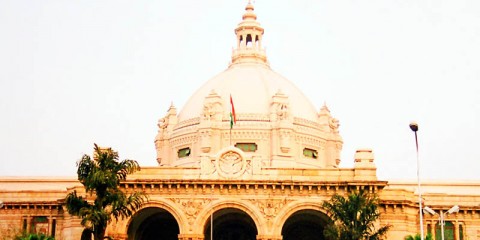
UP, North India, Architecture, Masjid, Musuem, Nature, Palace, Temple, Tomb, Wildlife Sanctuary
Lucknow is a city of Uttar Pradesh, India. It is a metro city. This place was nourished during the Nawabs period. Culture of Nawabs can be seen here. This place is also known as Golden City of the East. It is believed that city is named after Lakshman, brother of Lord Rama. Rama ordered Lakshman to rebuild a town. Now this is known as Lucknow. Chikan Embroidery is most famous at this place. Waist bands, nose pins, colorful bands etc are worth buying in this place.
What to see in Lucknow:
Chowk: It is the market place of Old Lucknow. This is the best place for the shopping lover.
Aminabad: This is another attraction for the shopping lovers. Major attractions of this place are fancy items, men’s chikan wear, ladies wear, fashion garments etc.
Bara Imambara: This place is well known for its Nawab architecture. In 1784, this was built by Asaf-ud-Daula. This complex consists of Step wells, gate ways, courtyards, mosques.
The Residency: To serve as the residence of the British Resident General this was established in 1800 AD. This became famous after Sepoy Mutiny in 1857. At that time 2000 soldiers died in this place. Graves of these soldiers are placed here.
Chattar Manzil: Beautiful European architecture can be seen here. As its dome is in the shape of umbrella it was named as Chattar Manzil.
Moti Mahal: Other name is Pearl Palace. This was built by Nawab Saadat Ali Khan during 1798- 1814. It was constructed as citadel, for watching enemy operations and for bird watching purpose.
Lucknow Zoo: Major attractions of this zoo are 97 different species of wild animals, 57 reptiles, 348 birds, 447 mammals. Indian Rhinoceros, Hoolock, Gibbons, Himalayan Black Bear, Royal Bengal tiger etc also can be seen here.
Ramakrishna Math: This is functioning from past 7 decades. Idols of this math are Swami Vivekananda, Mother Sarada Devi and Sri Ramakrishna. This math consists of garden. It was made up of Marble.
Aurangzeb’s Mosque: This is best example for Indo Muslim architecture.
Other attractions of Lucknow: Other attractions of Lucknow are Constania, Rumi Darwaza, Hazratganj Market, Shaheed Smarak, Begum Hazrat Mahal Park, Council house, 1857 Memorial Musuem, Chota Imambara, Gautam Buddha park, Juma Masjid, Husainabad Clock Tower, Satkhanda, Farangi Mahal, Shah Najaf Imambara, Dilkusha Kothi Palace, Sikander Bagh.
What to se around Lucknow:
Kukrail Forest Reserve: It is located 15kms away from Lucknow which was developed by Forest department. This place is famous for Crocodile Nursery and Deer farm. Rest house, Cafeteria, Children’s Park are other attractions of this place.
Nawabganj Bird Sanctuary: This is one of the best places for natural lovers as well as for the bird lovers. It is located 43kms away from Lucknow.
Crocodile Nursery: It is located 15kms away from Lucknow. This was established in 1978. Aim of this nursery was to protect the endangered crocodiles of the river.
Getting to Lucknow: Lucknow is well connected with road, railways and airways. From Dehradun, Delhi, Allahabad, Kanpur etc buses come to this place. From Kolkata, Chennai, Delhi, Bangalore, Mumbai, Thiruvananthapuram etc trains come to this place. From Mumbai, Jaipur, Bangalore, Chennai, Kolkata, Delhi flights come to Lucknow. Airport is located 14kms away from the city. Nearest international airport is located at Delhi which is located 497 kms away from the city.
Getting around Lucknow: Buses, Taxis, Autos and Tempos are available to see the places of Lucknow. Buses and Taxis are available to visit the surrounding places of Lucknow.
Best time to visit Lucknow: Best time to visit this place is between October to March.
Where to stay in Lucknow: Plenty of accommodations available to stay in Lucknow including luxury hotels. Along with hotels, guest houses are also available to stay at this place.
Where to eat in Lucknow: Plenty of restaurants are available to have food in Lucknow. Tundey Kebab is most famous food in Lucknow. Lucknawi Chat is world famous chat. Along with Indian, international cuisines are also available.
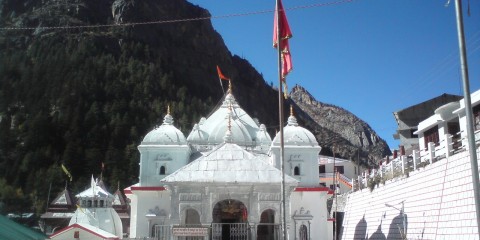
Uttarakhand, North India, Mahabharata, Nature, Temple, Trekking, Valley, Water falls
Gangotri is a town in Uttarkashi district in Uttarakhand, India. This is the origin place of river Ganga. It is most sacred place to Hindus. Gangotri along with Yamunotri, Kedarnath, and Badrinath form Chota Char Dham. This place is most famous for Gangori temple. During the winter season this temple remains close. Idol of this temple will be shifted to the village Mukbha and placed it in the Mukhyamath Temple. According to Hindu Mythoogy, King Bhagirath meditated here to bring river Ganga to the earth. According to another legend, Pandavas performed great Deva Yagya at this place.
What to see Gangotri:
Gangotri Temple: This was built by Amar Singh Thapa, Gorkha Commander. In the 19th century this was again renovated by Jaipur king. This temple is 300 years old temple. Vishwanath and Kuteti Devi temples are also located in this place. Goddess Ganga is worshipped here. Every year nearly 3lakhs of devotees come this place. Temple opens on Akshay Tirth and closes on Diwali.
Bhagirathi Shila: Here King Bhagirath meditated to bring river Ganga to the earth. This is situated near the temple of Ganga. It is believed that Goddess Ganga kept her first step on the earth on this rock.
Jalmagna Shivaling: This is also known as submerged Shivaling. It is one of the major attractions of Gangotri. It is natural Shivalinga located near Gangotri temple. This can be seen only during the winter seasons when the water levels go down.
Gauri Kund and Surya Kund: These are located on either sides of the iron bridge which is located near Gangotri temple. Other name of Surya Kund is Surya Kund waterfalls.
Dodi Tal: It is enveloped by dense forest of deodhar, pine and oak forests.
What to see around Gangotri:
Pandav Gufa: It is located just 2kms away from Gangotri. It is believed that in this place Pandavas meditated on their way to Kailash.
Nanadanvan: It is sylvan Tapovan across Gangotri glacier. Along the glacier 6kms trekking is essential to reach this place.
Gaumuth: It is located 19kms away from Gangotri. This is situated at the height of 12,960feet. Gaumuth is the source of river Ganga.
Harsil: It is located 26kms away from the town. This place is famous for apples. For the natural lovers this is one of the best places.
Gangnani: It is located 55kms from the town. This place is famous for natural beauty and thermal springs. It is the best place to do meditation.
Getting to Gangotri: Gangotri is well connected with road. From Dehradun, Haridwar, Rishikesh etc buses come to this place. From Rishikesh, jeeps and tempos are available to reach Gangotri. Nearest railway station is located at Rishikesh. From Delhi, Rajkot, Jalandar, Bangalore, Noida, Chennai, Kanpur, Raipur etc trains come to Rishikesh. Rishikesh is located 86kms away from Gangotri. Jolly Grant at Dehradun is the nearest airport which is located 226kms away from the town Gangotri. Taxis, cars, transport buses are available to reach Gangotri from the airport.
Getting around Gangotri: Local taxis, buses and ponies are available to visit the places in Gangotri. Taxis and buses are available to visit the surrounding places of Gangotri.
Best time to visit Gangotri: It is essential to known the best time to visit any place before going there to avoid inconvenience. During the winter season snow fall is very heavy. Best time to visit this place is between April to October.
Where to stay in Gangotri: Plenty of hotels are available to stay in Gangotri. Few luxury hotels are also available here. Along with hotels, Dharmasalas are also available to stay in this place. These are managed by the Government. Booking in advance is essential before reaching this place.
Where to eat in Gangotri: Limited restaurants are available to eat in Gangotri. Only vegetarian food is available.
Mathura is located in North India, Uttar Pradesh, India. This was the birth place of Lord Krishna. Mathura has very important place in ancient history. According to Epic Mahabharata, Mathura was the capital of Surasena Kingdom. This kingdom was ruled by Kansa, uncle of Krishna. According to Garuda Purana, this place provides Moksha. Holi and Jamashtami celebrate so grandly in this place. Along with Hindus this place is prominent to Buddhists and Jains. Mathura Peda is most popular. Silver ornament is worth buying from this place.
What to see in Mathura:
Ghats: This place is most famous for Ghats. At present more than 25 Ghats can be seen here. All Ghats are associated with the life of Lord Krishna. People believe that dip taken in the Ghats will wipe of all the sins.
Jama Masjid: Architecture of this masjid is best example for the Mughals style. It was built in 1661 by Abo-in-Nabir-Khan.
Kusuma Sarovar: It is believed to be place where Radha along with gopikas used to collect flowers and meet Krishna. Visitors conduct aarthi in the evening at this place. Ghats consist of plenty of flora and fauna.
Rangbhoomi: It is located opposite to the post office of Mathura. In this place war took place between King Kansa and Lord Krishna.
Bhuteshwar Mahadev Temple: It is one of the oldest temples of Mathura. This temple was dedicated to Lord Shiva. Temple consists of cave of Patal Devi. She was worshipped by King Kansa.
Mathura Museum: Major attractions of this museum are copper, gold and silver coins, terracotta, sculptures, artefacts belongs to Gupta and Kushan period dates back to 400 BC to 1200 AD.
Sri Krishna Janmasthan: It is the birth place of Lord Krishna. Temple is divided into 3 parts. They are Bhagvata Bhavan, Keshavadeva and Garbha Griha.
Jai Gurudev Ashram: It is one of the famous tourist’s spot of Mathura. Architecture of this temple looks like Taj Mahal.
Other attractions of Mathura: Other attractions of Mathura are Vishram Ghat, Sri Keshavji Gaudiya Math, Kans Qila, Mathura Jain Chorasi, Govinddeo Temple, Potara Kund, Dwarikadheesh Temple, Krishnajanmabhoomi Temple, Raja Bharapuras Palace.
What to see around Mathura:
Radha Kund: It is located 25kms away from Mathura. It is believed that, in this place Krishna and Radha spent their happy time. In this place Krishna killed bull demon.
Govardhan Hill: According to the legends, Lord Krishna lifted the hill for seven days during the great flood. It is located 25kms away from Mathura.
Shyam Sunder Temple: It is located 11kms away from Mathura. Idol of this temple is self manifested image of Radha.
Vrindavan: It is located 11kms away from Mathura. According to Hindu Mythology, Lord Krishna spent his childhood place in this town. Vrindavan Attractions are ISKCON Temple, Bankey Bihari Temple, Yamuna River, Seva Kunj and Nidhuban, Kesi Ghat, Shahji Temple.
Other attractions near Mathura: Other attractions near Mathura are Gopishvar Mahadev temple of Vrindavan, Sri Radhavallabh Vrindavan Temple, Gita Temple.
Getting to Mathura: Mathura is well connected with road and railways. From Kolkata, Pune, Mumbai, Nagpur, Gurgaon, Jaipur, Lucknow etc buses and trains come to this place. Nearest airport is Kheria in Agra which is located 57kms away from Mathura.
Getting around Mathura: Buses and Taxis are available to visit the surrounding places of Mathura.
Best time to visit Mathura: Best time to visit this place is between October to March. During the summer season temperature is too hot.
Where to stay in Mathura: Few budget and mid range hotels are available in Mathura. Few lodges are also available near railway station. Apart from lodges, hotels, Dharmasalas are also available in Mathura.
Where to eat in Mathura: Best restaurants are available to eat in Mathura. Only Vegetarian food is available. Mathura Peda and Chaat are most famous in Mathura.
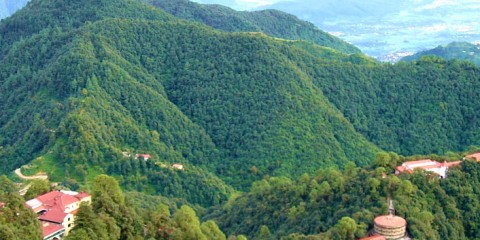
Uttarakhand, North India, Architecture, Hill station, History, Musuem, Nature, Temple, Trekking, Valley, Wildlife Sanctuary
Almora is a cantonment region in Almora district of Uttarakhand, India. This place is considered as cultural heart of Kumaon region. It is most popular hill station situated at a height of 6000meter above the sea level. This place is starting point for trekking to Ranikhet, Binsar, Mukteshwar, etc. During the rule of Chand dynasty, Almora was founded by Kalyan Chand in 1568. Nanda Devi festival, Uttaryani Festival, Jageshwar Monsoon festivals are most famous festivals in this place.
What to see in Almora:
State Museum: Other name of this museum is Govind Ballabh Pant Museum. Major attractions of this museum are artifacts belong to Katyuri dynasty and Chand dynasty. Another attraction of this museum is folk paintings. Two galleries can be seen here. One is Manav Vikas Ki Katha and Ganga River Culture Gallery.
Chaitai Temple: This temple is dedicated to Lord Gollu who is an incarnation of Gaur Bhairav. Wishes of devotees write on the paper and they will keep on the foot of the Lord. People believe all their wishes will fulfil.
Nanda Devi Temple: In the Kumaon region it is one of the most famous temples. Kumaoni style can be seen in the temple. This temple is dates back to 1000 years. Stone carvings on the walls of the temple are another attraction of this temple.
What to see around Almora:
Deer Park: It is located just 3kms away from Almora. This the best place for evening walk. Major attractions of this park are Himalayan Black bear, Leopard and deer. Pine trees welcome the visitors to this place.
Bright End Corner: It is located 2kms away from Almora. Sunrise and sunset are most beautiful from this place. Shri Ramakrishna Kutir Ashram is a centre for meditation is so famous. Vivekananda Library is another attraction of this place.
Simtola: It is located 3kms away from Almora. Once granite hill and diamond mining are attractions of this place but now this place was covered with fur and pine trees.
Kalimath: It is located 5kms away from Almora. Name is derived from the words Kali and Math. Kali means black and Math means soil. Spectacular view of Himalayas is possible from this place. Another attraction of this place is Kasar Devi temple which is dedicated to Goddess Kali. This temple dates back to 2nd century.
Katarmal Sun Temple: This temple is dedicated to Lord Sun which is located 16kms away from ALmora. After sun temple in Konark, this temple got second importance. This temple dates back to 800 years. Architecture is so attractive.
Jageshwar: It is located 24kms away from Almora. This is one of the 12 Jyothirlingas. Main temple is dedicated to Lord Shiva. This place consists of 124 shrines. Temple complex consists of 104 shrines dates back to 8th century to 18th century.
Sadar Bazaar: It is situated in Ranikhet which is located 53kms away from Almora. This is the best place for shopping lovers. Major attractions of this place are dry fruits, traditional jewellery, wooden bangles, garwali shawls, blankets, carpets, readymade garments, handicrafts etc. Apart from shops, plenty of hotels and restaurants are also located here.
Getting to Almora: Almora is well connected with road and railways. From Ghaziabad, Thane, Ludhiana, Mumbai, Delhi, Kanpur, Jaipur etc buses and trains come to this place. Nearest airport is located at Pantnagar which is 125kms away from Almora. This airport is well connected with Delhi. Nearest international airport is at Delhi.
Getting around Almora: As Almora is very small town, visitors can see the places on foot. Buses and taxis are available to visit the surrounding places of Almora.
Best time to visit Almora: Best time to visit this place is between March to November.
Where to stay in Almora: Only Budget and midrange hotels are available to stay in Almora. Almost all the hotels are located in Link road and Mall Road.
Where to eat in Almora: Eating options are limited in Almora. Most famous sweet of this place is Bal Mithai.
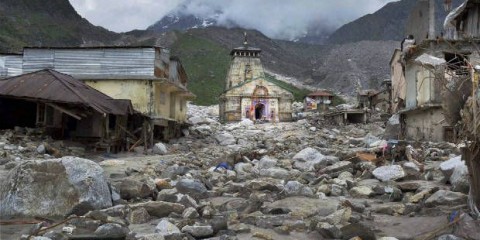
Uttarakhand, North India, Adventurous sports, Nature, Temple, Valley, Water falls
Uttarkashi is a town in Uttarakhand, India. It is located on the banks of river Bhagrathi. Uttarkashi means Kashi of the North. It is the home to plenty of temples and Ashrams. According to Epic Mahabharata, Jada Bharatha performed Penance at this place. Another attraction of this place is adventurous sports.
What to see in Uttarkashi:
Vishwanath Temple: Lord Shiva worshipped here. Temple was renovated by Sudarshan Shah’s wife Maharani Khaneti in 1857. Height of this Linga is 60cms and width is 90cms.
Nehru Institute of Mountaineering: In the memory of Jawaharlal Nehru, this institute was founded in 1965. It has beautiful natural surroundings. Adventure sports are learnt at this place by the chief concern.
Shakti Temple: It is located in front of Vishwanath temple. Trishul is placed in front of the temple. Upper portion of the trishul is made up of Iron and lower portion of the trishul is made up of copper. It is believed that Goddess Durga thrown this trishul on devils.
What to see around Uttarkashi:
Kuteti Devi Temple: It is located 2kms away from Uttarkashi. This temple is having historical significance. Trekking takes place here. Other attractions of this place are waterfalls, landscapes, beautiful lakes.
Nandanvan and Tapovan: It is located 6kms away from Uttarkashi. Shivainga peaks can be seen from here. It is located opposite to Gangotri Glacier. This is the best place to setup base camps for the peaks such as Kedardom, Meru, Kalindi Khal, Shivling, Kharchakund, Satopant etc.
Dayara Bugyal: Bugyal means high altitude meado. It is located 32kms away from the town. Only till Barsu, vehicles are allowed. From that place visitors have to reach Dayara only through trekking. This place is famous for natural surroundings and Dodi Tal.
Nachiketa Tal: It is located 32kms away from Uttarkashi. Visitors have to go through terraced fields to Chaurangi khal. From that place trekking of 3kms is essential to reach Nachiketa Tal.
Gangnani: This place is famous for hot water springs. It is located 41kms away from Uttarkashi.
Harsil: It is located 72kms from the town. In the Bhagirathi valley, it is a small village. This place is famous for apples and natural surroundings.
Dodi Tal: It is a beautiful lake. This was surrounded by deodar trees and tall majestic oak trees. Dodi is the name of the rare species of fish. Trekking takes place here. From this spot, visitors can reach to Hanuman Chatti and Yamunotri. It is located 10kms away from Uttarkashi.
Getting to Uttarkashi: Uttarkashi is well connected with road and railways. From Mussoorie, Rishikesh, Haridwar, Dehradun, etc buses come to this place. From Chennai, Hyderabad, Nagpur, Jamshedpur, Indore, Jabalpur, Noida etc trains come to this place. Nearest airport is Jolly Grant which is located at Dehradun. This airport is located 162kms away from the town. Taxis are available to reach the town from Dehradun.
Getting around Uttarkashi: Places of Uttarkashi can be seen on foot. Public transport and private taxis are available to visit the surrounding places of Uttarkashi.
Best time to visit Uttarkashi: It is essential to known the best time before visiting any place. Winter is too cold at this place. Best time to visit this place is between February to May.
Where to stay in Uttarkashi: Best accommodation facility available at Uttarkashi. Ashram offer free accommodation facilities. Starting price for luxury hotels is Rs.4200. Midrange hotels cost is ranging between Rs.1000 to Rs.2500 per day.
Where to eat in Uttarkashi: Limited eateries are available to eat in Uttarkashi. Luxury hotels are not available in this place.
Vrindavan is a town in Mathura district of Uttar Pradesh, India. Vrindavan is derived from the word Vrinda which means Tulsi. This place was having plenty of Tulsi plants. Two small groves of Vrinda still exists namely Seva Kunj and Nidhivan. According to Hindu Mythology, Lord Krishna spent his childhood place in this town. This place is famous for temples.
Ancient name of this town is Brindavana. In 1515, this place was rediscovered by Chaitanya Maharprabu when he was in search of places relating to Lord Krishna. Plenty of Ashrams are located here. Loi Bazaar is the best shopping place of Vrindavan. Cloths, Incense, fruits, handicrafts are worth buying in this place. Necklaces, Finger rings, Paintings, Portraits, Sculptures with the image of Lord Krishna can be seen here.
What to see in Vrindavan:
ISKCON Temple: This is the first temple constructed by ISKCON. It was built by Swami Prabhupada in 1966. This was established with the intension to spread Vedic scriptures and teachings of Bhagawad Gita.
Bankey Bihari Temple: In this temple posture of Tribhanga of Lord Krishna can be seen. During Jhulan yatra, Lord Krishna is placed in golden swing. For every few minutes curtain of the temple arises and shut down. It is believed that power of the god seems for the long time devotees will be unconscious.
Madan Mohan Temple: It is one of the oldest temples of this place. Lord Madan Gopal worshipped here. Aurangzeb shifted main deity to Karauli in Rajasthan. Only replica can be seen here.
Yamuna River: This River considered as Holy River as it flows from Mathura and Vrindavan. To purify from the sins, devotees take bath in this river.
Prem Mandir: This is two storied temple which was constructed with Italian Marble. Fountains are the major attractions of this place.
Seva Kunj and Nidhuban: In this place Lord Krishna Performed Raslila with Radha. It is believed that Krishna comes to this place during the night time. So entry restricted in the night.
Kesi Ghat: It is located near the banks if Yamuna River. It is believed that after killing demon Kesi, Lord Krishna had taken bath here.
Rangaji Temple: It is Dravidian style structure. Temple is dedicated to Lord Rangaji. Major attractions are six storey long gopuram, gold plated 50ft high Dhwaja Stambha.
Shahji Temple: This temple is known for beautiful sculpture and architecture. Another attraction of this place is Darbar Hall. This consists of beautiful paintings along with Belgian glass chandeliers.
What to see around Vrindavan:
Gokul: It is located 15kms away from Vrindavan. Gokul Nathji Temple is most famous at this place. Lord Krishna was brought up in secrecy here by his foster parents.
Government Museum: It is located in Mathura which is 11kms away from Vrindavan. Major attraction of this museum is Red sandstone sculptures. Another attraction is two Buddha statues belong to 4th and 5th centuries.
Mathura: It is located 10kms away from Vrindavan. It is the birth place of Lord Krishna.
Getting to Vrindavan: Vrindavan is well connected with road and railways. From Agra, Mathura, Haridwar etc buses come to this place. At Vrindavan railway station all trains do not stop. Nearest railway station is located at Mathura which is 14kms away from Vrindavan. Taxis are available from Mathura to Vrindavan. Nearest airport is located at Delhi i.e Indira Gandhi International Airport which is 150kms away from Vrindavan.
Getting around Vrindavan: Cycle rickshaws are available to visit the place in the city. Buses and Taxis are available to visit the surrounding places of Vrindavan.
Best time to visit Vrindavan: Best time to visit this place is between October to March.
Where to stay in Vrindavan: Limited staying options in Vrindavan. Best option to stay at this place is ISKCON temple guest houses. Plenty of accommodations are available at Mathura.
Where to eat in Vrindavan: Limited options to eat in Vrindavan. Best vegetarian food available at Govindas Restaurant. Lassi and Jal Jeera drink are most famous at this place.
Varanasi is a city in Uttar Pradesh India. Other name of this place is Banaras. This is most sacred place to Jains and Hindus. Hindu devotees believe that death in Varanasi leads to salvation. According to Hindu Mythology, this city was founded by Lord Shiva. This place is considered as oldest Living city on the earth. This is the birth place for 7th Jain Thithankar Suparshv Nath Ji and 23rd Tirthankar Parshva Nath Ji. Varanasi exists before 3000 years ago. This place is famous for its Ghats and temples.
What to see in Varanasi:
Jantar Mantar: In 1737 this was constructed by Jai Singh, Maharaja of Jaipur. He was so passionate towards science and technology. To determine eclipse, declination of stars, sun and planets and to measure the local time this was constructed.
Bharat Mata Temple: It is located in Mahatma Gandhi Kashi Vidyapeeth. Mother India worshipped here. Idol was built with marble and it was inaugurated by Mahatma Gandhi. Architecture of this temple is so beautiful.
Kashi Vishwanath Temple: This is the major attraction of this place. Kashi Vishwanath incarnation of Lord Shiva is worshipped here. In 1780 this was constructed by Late Maharani Ahilyabai Holkar. Domes of the temple covered by Gold.
Manikarnika Ghat: It is one of the oldest Ghats of the city. Shiva Durga temple near this ghat is so famous. Footprints of Vishnu, Charanapaduka, can be seen here.
Dasaswamedh Ghat: This is one of the most important Ghats on the banks of river Ganges. Evening Aarti at the Ghats attracts many devotees.
Durga Temple: Nagara style of architecture can be seen on this temple. Other name is monkey temple. Durga Ghat is located very near this temple.
Ramnagar Fort: This was built by Maharaja Balwant Singh in 18th century. Red stone was used to build this fort. Museum and temples are located inside the fort premises. One of the Temples is dedicated to Ved Vyasa, author of Epic Mahabharata.
Alamgir Mosque: It is the largest structure on the banks of river Ganga. It is believed that, earlier Lord Krishna temple was situated in this place.
Other attractions of Varanasi: Other attractions of Varanasi are Banaras Vidya Mandir, Assi Ghat, Tulsi Ghat, kedar Ghat, Shivala Ghat, Harishchandra Ghat, Panchaganga Ghat, Hanuman Ghat, New Vishwanath Temple, Alamgir Ghat, Man Mandir Ghat, Darbhanga Ghat, Ramnagar Museum, Gyan Kup well, Vishnu Charanapaduka, Tulasi Mana Temple.
What to see around Varanasi:
Dhamek Stupa: It is located 13kms away from Varanasi. This was built in 500 CE. In this place, Buddha gave the first Sermon to his five disciples after attaining enlightment.
Chaukhandi Stupa: It is one of the famous stupas of Buddhism. This is located in Sarnath. It is located 13kms away from the city. This was constructed between 4th to 6th centuries. In this place, Lord Buddha’s first disciples met travelling from Bodh Gaya to Sarnath.
Getting to Varanasi: Varanasi is well connected with road and railways. From Kolkata, Bangalore, Chennai, Patna, Ranchi, Noida, etc trains come to this place. From Allahabad, Vijayawada, Baroda, Noida, Patna, Ranchi etc buses come to this place. Best flight facility is also available to Varanasi. From Visakhapatnam, Lucknow, Chennai, Bangalore, Hyderabad, pune, Vijayawada etc flights come to Varanasi.
Getting around Varanasi: Buses and Private vehicles are available to visit the surrounding places of Varanasi.
Best time to visit Varanasi: Varanasi welcomes the visitors throughout the year.
Where to stay in Varanasi: Plenty of accommodations available to stay in Varanasi including luxury hotels. Best hotels in Varanasi are Siddhartha Hotel, Gateway Hotel Ganges, Surabhi International, Pradeep Hotels.
Where to eat in Varanasi: Plenty of restaurants are available to have food in Varanasi. Indian, Chinese, Continental cuisines are available along with local cuisines. Only vegetarian food is available.
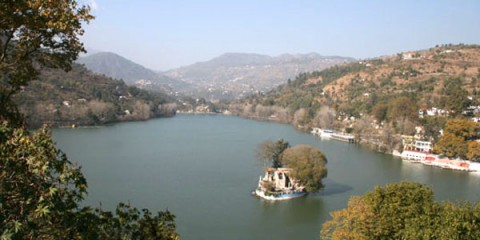
Uttarakhand, North India, Adventurous sports, Lake district of India, Musuem, Nature, Temple, Trekking
Bhimtal is a small town in Nainital district of Uttarakhand, India. This place is named after Bhima of Mahabharata. Bhimtal is known for Bhimtal Lake. At the banks of this lake, visitors can see Bhimeshwara Mahadev Temple. It is believed that this was built by Bhima when he was visited this period during their exile. After Anglo Nepalese War this place came under the rule of Britishers.
Visitors can enjoy the beauty of this place. Climate is so pleasant throughout the year. Boating is one of the major attractions of this place. Other activities of this place are Paragliding, Rappelling, Trekking, and Angling. Fishing can be enjoyed here. Worth buying things of this place are Wood carvings and handmade candles. Unique designs of bead Jewellery can be seen here. Other shopping attractions of this place are carpets, statues, Garhwali Paintings.
What to see in Bhimtal:
Bhimeshwara Mahadev Temple: This temple is dedicated to Lord Shiva. It is believed that this was built by Bhima, one of the brothers of Pandavas. But present temple was built by Baz Bahadur with the help of Raja of Kumaon in 17th century. Baza Bahadur was the king of Chand dynasty.
Folk Culture Museum: In this museum information about rituals, traditional rites, stone implements is available. Major attractions of this place are reproduction of rock art, Photographs, artefacts. Other name of this museum is Lok Sanskriti Sangrahlaya.
Victoria Dam: It is located on Bhimtal Lake. On either side of the dam one can see beautiful flower gardens. Near to this , visitors can find Bhimeshwar Temple. Visitors can have a walk at huge forests. Height of the dam is 40 feet. Wild flowers used to decorate gorge. Thousands of the tourists come to this place every year.
Aquarium on the Island on Bhimtal: Bhimtal Lake has an Island. Earlier one restaurant located in this island. Now it was closed due to pollution reasons. At present aquarium was created in that place. Fishes of the aquarium brought from Mexico, South Africa and China.
What to see around Bhimtal:
Hanuman Garhi: It is located in Nainital of Tallital which is located 21kms away from the town. Main deity of this temple is Lord Hanuman. Sun set over Himalayan can be seen from this place.
Hidimba Parvat: It is located 5kms away from Bhimtal. This place is named after Hidimbi who was the demon wife of Bhima (one of the Pandavas). Vankhandi Maharaj developed refuge for wild animals. He was a monk and an environmentalist.
Nag Temple: During Rishi Panchami thousands of devotees come to this place. In Uttarakand this is one of the Nag Temples. It is located 2kms from Bhimtal.
Sat Tal: It is located 14kms away from the town. This is compared with Westmoreland area of England. Hill near this lake is known as Hidimba Parvat.
Nal Damyanti Tal: It is natural and most sacred lake which is located 2kms away from the town. It is believed that King Nal lost his palace into this lake.
Getting to Bhimtal: Bhimtal is well connected with road and railways. From Kathgodam, Delhi private and government run buses are available to reach Bhimtal. From Hyderabad, Agra, Ghaziabad, Gurgaon, Delhi etc trains come to this place. Nearest airport is located at Pantnagar which is 56kms away from the town.
Getting around Bhimtal: Dollies, Cycle rickshaws are available to visit the place of Bhimtal. Private Taxis are available to visit the surrounding places of Bhimtal.
Best time to visit Bhimtal: Best time to visit Bhimtal is between March to June and between September to December.
Where to stay in Bhimtal: Good accommodations are available to stay in Bhimtal including luxury hotels. Near Satvik Sadan, midrange hotels are available.
Where to eat in Bhimtal: Plenty of eating options in Bhimtal. Indian, Italian, Chinese, Continental cuisines are available.
Baijnath is a small town in the Bageshwar district of Uttarakhand, India. It is located near the banks of River Gomti. This place is famous for ancient temples. Baijnath is the capital of Katyuri Kings. They ruled this place between 7th century to 11th century AD. Trekking is another major attraction of this place. In the Kumaon Region, this is the most famous pilgrim place. Town is named after Baijnath temple. Lord Shiva is worshipped here. During Mahashivratri, tourists rush is more in this place.
Temple was constructed during Katyuri dynasty was in rule. Architecture of this temple is so attractive. According to Hindu Mythology, Lord Shiva and Parvati got married at the place where River Gomti River and Garur River got confluence.
What to see in Baijnath:
Baijnath Temple: This temple complex was built during Katyuari dynasty in 1150. Lord Vaidyanatha incarnation of Lord Shiva is worshipped in this temple. Idol of Goddess Parvati is also worshipped here. This was made up of Black stone. This place has most historical significance. Other idols of this temple are Brahma, Surya, Kuber, Chandika, Parvati, and Ganesha. People believe that temple was constructed by Brahmin woman who built this temple. She was the devotee of Lord Shiva.
Bamani Temple: It is another attraction of Baijnath. This temple can be seen on the way to the main temple.
What to see around Baijnath:
Kot Bhramri Devi Temple: It is located just 2kms away from the Baijnath. Other name of this temple is Kota ka Mandir. It was once the fort of Katyuri Kings. It is also says that, Shankaracharya, Adi Guru, stayed at this place while he is travelling to Badrinath. Face of Goddess Bhramri should be seen by the priest itself. It this rule is not followed, Katur valley has to face serious disasters. Hence people see only backside of the Goddess. Radha Ashtami celebrates grandly during the month of September. Once in 12years, Raj Jaat Yatra celebrates here.
Bageshwar: It is located 26kms away from the town. During Makara Sankranti Season, big fair conducts here. This temple is situated at the place where confluence of River Gomti and River Sarayu takes place.
Kausani: It is located 17kms away from Baijnath. This place is famous for its scenic beauty. Mahatma Gandhi called this place as Switzerland of India. Kausani Attractions are Anasakti Ashram, Lakshmi Ashram, Sumitranandan Pant Gallery, Planet Show, Rudradhari Falls and Caves, Trekking.
Pant Museum: It is located 15kms away from Baijnath. Sumitranandan Pant, Hindi Literature’s home is now converted into museum. Museum consists of awards he received, his poet’s and manuscripts of literary works. Uttarakhand Archaeology department is managing this museum.
Getting to Baijnath: Baijnath is well connected with road ways. From Kausani, Pithoragarh, Nainital, Ranikhet, Almora etc buses come to this place. Rush is more to the buses. So visitors can opt for Tongas from Kausani. Nearest railway head is located at Kathgodam which is located 160kms away from the town. From Delhi, Jammu, Kanpur, Dehradun etc trains come to this place. Taxis are available to reach Baijnath from the railway station. Nearest airport is located at Pantnagar which is 175kms away from the town.
Getting around Baijnath: Baijnath can be explored on foot as it a small town. Buses and Taxis are available to visit the surrounding places to Baijnath.
Best time to visit Baijnath: It is advisable to avoid visit this place during the rainy season as this place is so slippery. Best time to visit this place is between September to May.
Where to stay in Baijnath: Limited accommodations are available to stay in Baijnath. Only Budget hotels are available. Visitors usually prefer to stay at Kausani which is 17kms away from the town.
Where to eat in Baijnath: Limited option to have food in Baijnath. In-house restaurants of the hotels are the best option to eat in Baijnath. Only vegetarian food is available. Continental, Indian and Chinese cuisines are available.
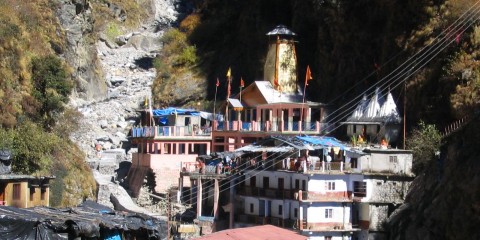
Uttarakhand, North India, History, Hot Springs, Nature, Temple, Valley, Water falls
Yamunotri is located in Uttarkashi district of Uttarakhand. Yamunotri along with Gangotri, Kedarnath, and Badrinath form Chota Char Dham Pilgrim. This is the sacred place for Hindus. For Yamuna River it is the source. This river plays a crucial role in the development of Hindu civilisation. People worship Yamuna River and believe that if they worship River Yamuna they will die without any pain. Temple in the Yamunotri closed on Diwali day. Again this temple will reopen on Akshaye Tritiya. Temple was first built by Maharani Gularia of Jaipur. Due to earthquake it was damaged in the early 19th century. It was reconstructed by Maharaja Pratap Shah of Tehri Garhwal.
What to see in Yamunotri:
Yamunotri Temple: It is the major attraction of Yamunotri. Temple is dedicated to River Yamuna. River Yamuna is considered as sister of Yama. Idols of Yama and Yamuna can be seen in this temple. During the winter season, idol will take away to the village Kharsali. So it remains closed during the winter season. Temple opens at 6.00AM and closes on 8.00 PM.
Surya Kund: It is located near Yamunotri Temple. This is one of the important thermal springs. Temperature of the spring is hot. This is used to prepare Prasad for the temple. Prasad is Rice and Potatoes. Rice along with potatoes and salt will tied up in the cloth and dipped into the spring to get boiled.
Divya Shila: It is located near the temple of Yamunotri. This is a pillar. Devotees offer pooja to this shila before entering into the temple.
What to see around Yamunotri:
Kharsali: It is located just 1km away from Yamunotri. Water falls and Natural Springs welcomes the travellers to this place. Another attraction of this village is an ancient temple which is dedicated to Lord Shiva. Wooden work and stone carvings of the temple are the major attraction of this temple.
Hanuman Chatti: It is located 13kms away from the city. This place is famous for trekking.
Barkot: It is one of the major attractions of Uttarakashi district tourism. It is located 49kms away from Yamunotri. This place is famous for ancient temple.
Getting to Yamunotri: Yamunotri is well connected with road and railways. From Badtok, Gangotri, Uttarkashi, Mussoorie, Rishikesh etc buses come to this place. Form the cities such as Dehradun, Ahmedabad, Delhi, Noida, Jodhpur, Mumbai, Gurgaon, Bangalore etc trains come to this place. Nearest railway head is located at Dehradun which is 172kms away from Yamunotri and Rishikesh which is 213kms away from Yamunotri. Nearest airport is Jolly Grant which is located near Dehradun. This airport is located 192kms away from Yamunotri. Taxis are available to reach Yamunotri from airport.
Getting around Yamunotri: Ponies are available to reach the temple from Janaki Chatti. It will take 2 hours to reach the temple through Ponies. Visitors can also climb to the temple. As temple opens only during particular seasons, local transport is not much available. Buses reach only till Sayana Chatti of Yamunotri. From then Jeeps are available to reach Janaki Chatti. Jeeps and buses are available to visit the surrounding places of Yamunotri.
Best time to visit Yamunotri: Due to heavy snowfall, temple closes during the winter season. Best time to visit this temple is between April to October.
Where to stay in Yamunotri: Rest houses, Dharmasalas and Ashrams are available to stay in Yamunotri. Rest Houses of Janki Chatti, Hanuman Chatti and Yamunotri are maintained by Garhwal Mandal Vikas Nigam. In Barkot, Char Dham Camp is situated.
Where to eat in Yamunotri: Only vegetarian food is available. Alcohol and Non vegetarian food is restricted. Limited option to have food in this place. Luxury hotels and restaurants cannot be found here.
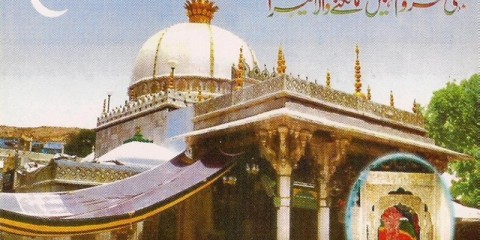
Rajasthan, North India, Fort, History, Masjid, Miniature Paintings, Musuem, Nature, Palace, Temple, Tomb
Ajmer is 5th largest city in Rajasthan, India. Aravalli Mountains covers this city. This is the holy place for both Hindus and Muslims. For Muslims, this place is famous for Dargah of Sufi Saint Khwaja Moin-Ud-Din Chishti. For Hindus this place is well known for several ancient temples. Other attractions of this place are Palaces, Museums, Lakes and forts. This place was founded by Ajaipal Chauhan in 7th century. He belongs to Chauhan dynasty. Most famous for shopping at this place is Bandhani Sari. Major Shopping centres of this place are Dargarh bazaar, Kesarganj, Chudi Bazaar, Naya Bazaar, Mandar Gate.
What to see in Ajmer:
Dargarh Sharif: Tomb of Khwaja Muin-ud-din Chishti is placed here. Silver doors welcome the visitors. It was constructed by Humayun with white marble. Tomb has inscriptions and 11 arches.
Taragarh: It is located on Nagarjuna hill of Ajmer. This is first hill fort of Asia. It is one of the oldest hill forts of the world. 3 gateways to the fort. Major attraction of this fort is Canons. Many reservoirs are placed in the fort.
Archaeological Museum: It is located in Dil-e-Aaram Gardens. Collection of sculptures is the major attractions of this museum.
Ana Sagar Lake: This is an artificial lake built by Anaji Chauhan dates back to 1135 – 1150 AD. Daulat Bagh Gardens located near this lake is so beautiful.
Foy Sagar Lake: It is another artificial lake constructed in 1891. This is the best place for the natural lovers.
Rani Mahal: It is located in Taragarh Fort. Typical Rajasthani Architecture style can be seen here.
Nasiyan Jain temple: This temple is popularly known as Red Temple which is decorated with Silver and gold plates. Rishabh, First Jain Tirthankar is worshipped here.
Akbar’s Palace and Museum: Akbar Palace converted into Museum. Major attractions of this museum are arms, stone sculptures and paintings of the medieval period.
Other attractions of Ajmer: Other attractions of Ajmer are Mayo College and Museum, Adhai-din-ka Jhopra, Ajmer government Museum, Bhagchand Ki Kothi, Anted Ki Mata Temple, Akbarki Masjid, Sola Khamba.
What to see around Ajmer:
Pushkar Lake: It is located in Pushkar which is located 14kms away from Ajmer. People believe that dip in this lake will wipe off all the sins and skin diseases.
Brahma Temple: It lies in Pushkar Valley which is located 14kms away from the city. Temple is decorated with silver coins. This was built of marble and stone stabs. Constructed in 14th century. Lord Brahma Worshiped here.
Kishangarh: This town is located 27kms away from the city. Miniature paintings are the major attractions of this place. Roopangarh fort is another attraction which was built by Maharaja Roop Singh in 1649. Fort consists of several palaces. It is known for its architectural style.
Other attractions near Ajmer: Other attractions near Ajmer are Savitri Temple near Brahma Temple, Mahadev Temple, Mangliyawas, Varah Temple.
Getting to Ajmer: Amer is well connected with road and railways. From the cities such as Bharatpur, Jaisalmer, Jodhpur, Udaipur, jaipur etc buses come to this place. From Udaipur, Gwalior, Bhuj, Mumbai, Haridwar, Indore, Delhi, Ahmedabad etc trains come to this place. Nearest airport is located at Jaipur which is 137kms away from Ajmer. Airport is well connected with Nanded, Hyderabad, Kolkata, Mumbai, Delhi, Chandigarh, Chennai etc.
Getting around Ajmer: Tempos are available to visit the city. Buses, Taxis are available to visit the surrounding places of Ajmer.
Best time to visit Ajmer: Best time to visit Ajmer is between October to March.
Where to stay in Ajmer: Plenty of accommodations available in Ajmer. Along with hotels tourists bungalows are also available to stay in Ajmer.
Where to eat in Ajmer: Plenty of restaurants are available to have food in Ajmer. Italian, Continental, Chinese, Mughalai cuisines are also available to have along with local cuisines.
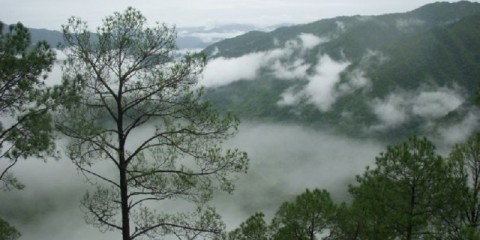
Uttarakhand, North India, Boating, History, Musuem, Nature, Temple, Trekking, Valley
Lansdowne is a cantonment town in Pauri Garhwal district of Uttarakhand, India. This place is named after Lord Lansdowne, Viceroy of India in 1887. For the recruit training centres of Garhwal Rifles this place was developed by the Britishers. It is one of the hill stations in India. This place is surrounded by thick pine and oak forests. Earlier name of this place is Kaludanda. Most ancient temples are located here. One of those famous temples is Tarkeshwar Mahadev Temple. This is the best place for natural lovers. Boating, Bird watching, Trekking can enjoy here. Mahashivratri celebrates so grandly here.
What to see in Lansdowne:
Tip In Top: This is situated near St.Mary’s Church. Spectacular view of snow covered Himalayas can enjoy from here. Trekking takes place here.
The Garhwal Rifles Regimental War Memorial: This museum was founded by Lord Rawlinson of Trent on 11th November 1923. Major attraction of this place is war Memorial in the Parade Ground.
Tarkeshwar Mahadev Temple: It is one of the most ancient temples of the country. Lord Shiva is worshipped here.
Regimental Museum: This was established in 1983. It is named after Darban Singh Negi. Major attractions of this place are antique pieces belongings to Garhwal Rifles.
Bhulla Tal: This is an artificial lake. Bhulla means younger brother. Paddling and Boating can be enjoyed here. Other attractions of this place are fountains, bamboo machan and Children Park.
Garhwali Mess: In 1988, this was built by the Britishers. It is one of the oldest buildings in this hill station. This is the important museum in Asia. Major attractions of this museum are trophies, furnishings, skin of wild animals.
Lover’s Lane: It is one of the best trekking places. From these places visitors can enjoy the beauty of Himalayan peaks on one side and beauty of blue pine trees and oak trees on other side.
Hawaghar: It one of the beautiful places in the town. For Trekking this is the best place. To enjoy the beauty of the nature this is the best place.
St.Mary’s Church: This was constructed in 1895. Now this is converted into museum. Major attractions of this place are Pictures of Pre-independence era and audio visual displays of the history of the regiment.
What to see around Lansdowne:
Durga Devi Temple: It is located 25kms away from the town. Goddess Durga is worshipped here. Temple is situated inside the cave. It is one of the oldest Sidh Peeths.
Bhim Pakora: It is located in Dhura which is 14kms away from the town. It is believed that, during the period of exile, Pandavas stopped here and cooked food. Bhim placed one rock on other. It is so balancing.
Getting to Lansdowne: Only way to reach this place is through road way. From Pauri, Gopeshwar, Nainital etc buses come to this place. Nearest railway station is located at Kotdwar which is 37kms away from the town. From Puir, Bangalore, Kolkata, etc trains come to this place. Taxis are available to reach the Lansdowne town from Kotdwar. Jolly Grant airport at Dehradun is the nearest airport which is 150kms away from the town. Taxis are available to reach the Lansdowne town from airport.
Getting around Lansdowne: Seeing the town on foot is the best option. Cabs are also available to see the places in the town. Buses and taxis are available to visit the surrounding places of the town.
Best time to visit Lansdowne: Town welcomes the visitors throughout the year. But winter is too cold. Best time to visit this place is between March to November.
Where to stay in Lansdowne: Limited accommodations are available to stay in this town. Apart from hotels, Dharmasalas maintained by the Mahadev temple management, Army Welfare board rest house are also available to stay in the town. Tourist rush is more between May and June. Advance booking is essential in those days
Where to eat in Lansdowne: Limited eating options in the town. Continental, Chinese and Indian cuisines are available. Parathas and Momos are popular at this place.
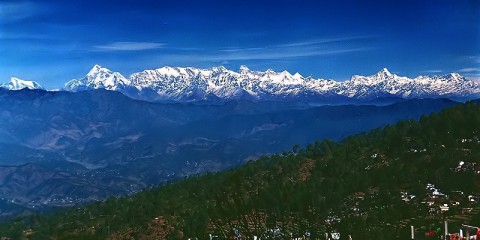
Uttarakhand, North India, Caves, Hill station, History, Hot Springs, Musuem, Nature, Tea Garden, Temple, Trekking,Valley, Water falls
Kausani is a hill station in Bageswar district of Uttarakhand, India. This place is famous for its scenic beauty. Mahatma Gandhi called this place as Switzerland of India. On either side of the Kasauni, visitors can see the beauty of Gomti River and Kosi River. Visitors can have the spectacular view of Panchuli, Nandadevi, Trishul peaks of Himalayas. Trekking and high flavour tea is most famous in this place.
What to see in Kausani:
Anasakti Ashram: Mahatma Gandhi stayed at this place. He penned the commentary on Anashkti Yog. Other name of this Ashram is Gandhi Ashram. Now it is converted into Study cum Research centre.
Lakshmi Ashram: In the year 1948, this Ashram was founded by Catherine Hillman. He became most popular with the name Sarlaben. He was the disciple of Mahatma Gandhi. Ashram is running boarding school for the girls at the foot hill of Kausani. Other name of this Ashram is Sarla Ashram.
Sumitranandan Pant Gallery: This is dedicated to Hindi Poet Sumitranandan Pant. Kausani is the birth place of this poet. Museum consists of awards received by him, manuscripts of the poems and draft copies of his literacy.
Planet Show: It is a planetarium cum internet cafe. Stargazing is an option for the tourists, when clear night sky is available. In the show astronomers explain about astronomy to the visitors of this place.
What to see around Kausani:
Pinnath: It is located 5kms away from the town. This place can be reached by trekking. Indian arch which has representations of the Pandavas on its sides, form the roof of the portico.
Rudrahari Mahadev Temple: It is located 8kms away from the town. It is an ancient cave temple. It is believed that Rishi Kaushik meditated here for a long time.
Kausani Tea Estate: World famous Kausani Tea is produced here. Major exports of this tea are to United States, Korea, Germany and Australia. Visitors can see the manufacturing process of tea. Area covered by this estate is 208 hectares.
Rudradhari Falls and Caves: It is located 12kms away from the town. Trekking can be used to reach this place. Valley flows as small springs and rivers.
Someshwar: Lord Shiva temple of this place is most famous. Beauty of Someshwar Valley can be enjoyed from here. It is located 12kms away from the town.
Baijnath Temple: It is located 16kms away from the town. This temple was constructed in 12th century which is situated at the town Baijnath and on the banks of Gomti River. According to Hindu Mythology, Lord Shiva and Parvati got married at the confluence of River Gomti and Garur Ganga. Other attraction of this town is Maheshsur Mardini.
Getting to Kausani: Kausani is well connected with road and railways. From Pithoragarh, Nainital, Ranikhet, Almora etc buses come to this place. From Delhi, Lucknow, Jaipur, Ghaziabad, Kanpur etc trains come to this place. Nearest airport is Naini Saini airport at Pithoragarh which is located 112kms away from the town. Taxis are available to reach the town from the airport.
Getting around Kausani: Horse drawn Carriage or Tonga is the best means of transport in Kausani. Places in Kausani can see on foot. Buses and taxis are available to visit the surrounding places of Kausani.
Best time to visit Kausani: As the region is so slippery it is advisable not to reach this place during rainy season. Best time to visit this place is between September to May.
Where to stay in Kausani: Resorts, midrange and budget hotels are available to stay at this place. Rest house is maintained by Kumaon Mandal Vikas Nigam. Accommodation is also available in Ashrams.
Where to eat in Kausani: Eating options are very limited in the town. In-house restaurants of hotels are the best option to have food in Kausani.
Barmer is located in Rajasthan, India. Name Barmer is derived from Bar Rao Parmar. He was the founder of the town in 13th century. Western part of the state forms part of Thar Desert. This place is known for historical sites. Barmer is also famous for music, dance and crafts. When visitors are approaching to this place, visitors can enjoy the atmosphere of rural Rajasthan. Colourfully attired people, mud houses decorated with folk motifs can also be seen on the way to this place. Oil fields were discovered recently at this place. Worth buying things of this place are hand block printed textiles, carved wooden furniture, wood carvings.
What to see in Barmer:
Juna Barmer: It is small place located between mountain peaks. Major attraction of this place is Jain Temple. This was built in 12th or 13th century.
Safed Akhara: It is a garden. This offers temporary accommodation and cooking facility.
Chintamani Parasnath Jain Temple: It is located in west Barmer. This temple is dedicated to Parasvanath. He is a Jain Tirthankara. This temple was built in 12th century. Ornamental Paintings and sculptures are more attractive.
Mahavir Park: This is so beautiful with manicured greeneries. It consists of small museum. Major attractions of this museum are ancient stone carved statues.
Other attractions of Barmer: Other attractions of Barmer are 3 Jain Temples, Temple of the ruler Bahadmera, Maharaja Kula Sri Samanta Sinha Deva Temple.
What to see around Barmer:
Neemari: Major attraction of this place is swimming pool. It is located 23kms away from Barmer.
Kiradu Ancient Temples: It is located 39kms away from the city. These temples are located in Hathma Village. 5 temples are situated in this complex. Major attraction of this place is multi turreted tower. This tower consists of sculptures of Hindu mythology Gods and Goddesses. Temples are dedicated to Lord Shiva and Lord Vishnu. Someshvara temple is the largest temple of all the five temples. This was built in 11th century.
Balark Sun temple: Balark means Rising Sun. Golden colour statue of Sun God at the entrance is the one of the major attractions of this place. This is located on the top of the hill rock. Photographers, Archaeological students love this place so much. Other attractions near this sun temple are Safed Akhara, Juna Jain, Devka Sun Temple, Jain Temples. It is located 42kms away from Barmer.
Devka Sun Temple: This temple is well known for its architecture. It was built in 12th century or 13th century. This temple is located in Devka village which is 62kms away from the Barmer. Other two ancient temples can also be seen at this place. But they were in ruin stage.
Getting to Barmer: Barmer is well connected with road and railways. From Udaipur, Jaipur, Jodhpur etc buses come to this place. Barmer railway station is well connected with Jodhpur. Jodhpur railway station is well connected with all the major cities of India. Nearest airport is at Jodhpur which is 220kms away from the city. From Udaipur, Jaipur, Mumbai and Delhi flights come to Jodhpur. From Jodhpur airport, taxis are available to reach Barmer.
Getting around Barmer: Camels are the major means of transport in the desert. Terrain Vehicles are used to visit the surrounding places of Barmer. These are maintained by the Government.
Best time to visit Barmer: Best time to visit this place is between October to March.
Where to stay in Barmer: Major rest houses of this place are small Barmer hotels. Cost of these rest houses is below Rs.200. Near oil wells some good hotels can be found. Few luxury hotels are available.
Where to eat in Barmer: Best food is available at luxury hotels. On the highway Dhabas, traditional Rajasthani food is available.
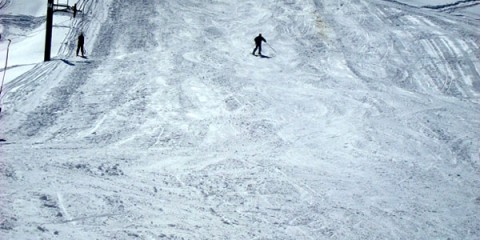
Uttarakhand, North India, Hill station, Hot Springs, Nature, Skiing, Temple, Trekking
Auli is a ski destination in Himalayan Mountains of Uttarakhand, India. In the world, this is one of the best ski resorts. It is situated on the way to the Badrinath destination. Major attraction of this place is Trekking and Ski. In 2000, after the creation of Uttarakhand, importance to this place has started. Within very short span of time this place became very famous hill resort.
Route from Auli to Joshimath through Cable car is the longest and highest cable car route. This route is 4kms long. This place is acting as training place to Indo Tibetan Border Police. Skiing festival is the famous festival of this place. This festival held between January to March. Winter Games Federation of India organises this festival.
What to see in Auli:
Winter Ski Resort: Auli gets transformed into winter ski resort from January to march every year. 3 meters deep snow covers the slopes. Auli is surrounded by the peaks such as Dunagiri, Kamet, Nanda Devi. These peaks are covered with snow. This place is also known as Switzerland of India.
Auli Artificial Lake: It is one of the world’s highest manmade lakes. With the view of creating artificial snow on the new ski slopes at the time of low snow fall, this was developed by the Government.
Other attractions of Auli: Other attractions of Auli are Skiing, Trekking.
What to see around Auli:
Joshimath: It is located 14kms away from Auli. Plenty of ancient temples can be seen here. Shakaracharya, Adi Guru, established Peetham at this place. This peetham is one of the 4 peethams established by him. This place is acting as a resting place to the travellers of Badrinath. Sankaracharya Tapastali and Narasimha Temple are other major attractions of this place.
Bhavishya Badri: It is located 10kms away from Auli. It is one of the 5 Badri Shrines. In the temple, tourists can find the lion head image of Narasimha. This place can be reached through the river Dhauliganga and Trekking.
Gurso Bugyal: It is located 3kms away from Auli. Oaks and Conifers forests surround this place. Ropeway can be used to reach this place. Chattarkund near this place is famous for sweet water.
Salidhar Tapovan: It is located 15kms away from Auli. This place is famous for natural hot water springs. Near this place Salidhar place is located which is 3kms away from Salidhar Tapovan. This Salidhar is famous for Hot water fountain. Water at this fountain is always at boiling point.
Getting to Auli: Auli is well connected with road ways. From cities such as Karnaprayag, Rudraprayag, Pauri, Rishikesh etc buses come to this place. Nearest railway head is Haridwar. From the cities such as Meerut, Lucknow, Agra etc trains come to this place. Nearest railway station is Rishikesh. Nearest airport is located at Dehradun which is 279kms away from Auli. Nearest international airport is located at Delhi.
Getting around Auli: Buses and Cable cars are available to visit the surrounding places of Auli. Best option to see the places within the Auli is bus.
Best time to visit Auli: Best time to visit Auli is between November to March .
Where to stay in Auli: Plenty of accommodations are available to stay in Auli including luxury hotels. Guest houses of GMVN (Garhwal Mandal Nigam Limited) are available at very reasonable price. Cost of 3 star hotels is Rs.7500 per day.
Where to eat in Auli: Eating options are very limited in Auli. GMVN is also running restaurants. These restaurants serve variety of cuisines.
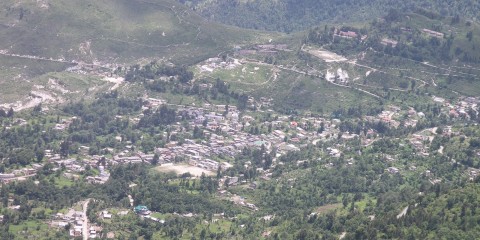
Uttarakhand, North India, Hill station, Mountain Passes, Musuem, Nature, Temple, Trekking, Valley, Water falls, Wildlife Sanctuary
Munsyari is a town in Pithoragarh district in Uttarakhand, India. Munsyari means place with Snow. This is best place for natural lovers, trekkers, glacier and mountaineers. Snow capped peaks surrounded the town. This is also known for flora and fauna. Major festivals celebrates in this place are Olgia, Phool De, Jauljibi, Khataruao, Basant Panchami, Makar Sankranti.
What to see in Munsyari:
Maheshwari Kund: It is the natural lake. Local people called this kund as Mehsar Kund. This place is surrounded by rhododendron. Visitors can enjoy the spectacular view of Panchchuli Peak.
Balati Farm: Visitors can have spectacular view of Ralam Glacier, Snow covered Himalayan Peaks and Balati Glacier. Dense rhododendron shrubs covered this farm.
Thamari Kund: It is a natural lake. Musk deers come to this place to drink water. This lake is surrounded by Paper trees.
Betulidhar: This place is famous to enjoy sunset. It has large garden with rhododendrons.
Khaliya Top: This is the highest peak which surrounds Munsyari. Visitors can have spectacular view of Panchuli Peaks. Skiing is famous in this place.
Masterji Museum: Earlier this was the residence place of Dr.SS Panghti. Now it is converted into museum. Documents that enabled trade between the Tibet and Johar Valley and antiques can be seen here.
What to see around Munsyari:
Kalamuni Temple: It is located 15kms away from the town. Naga God is worshipped here. Visitors can enjoy the spectacular view of Panchchuli Peak. Pine forests surround this temple.
Milam Glacier: River Milam originated here. Milam Glacier originates from the slope of Trishul and Kohli peaks. It is 16kms long. It is located 26kms away from Munsyari.
Ralam Glacier: It is located 28kms away from the town. Best time to visit this place is between April to June and September to November. This place can be reached by trekking from Pithoragarh and Bageshwar.
Birthi Falls: It is located 33kms away from Munsyari. It can be reached via Kalamuni Pass. These falls are surrounded by Himalayas and Dense forests.
Namik Glacier: It is situated in Nachani Village which is 58kms away from the town. This place is famous for waterfalls and sulphur springs.
Kalamuni Top: It is the route from Birthi Falls to Munsyari. On this hill visitors can find most ancient Kali Temple. It is located 34kms away from the town.
Getting to Munsiyari: Munsiyari is well connected with road ways. From Tankpur, Haldwani, Almora, Kathgodam buses come to this place. Nearest railway station is located at Kathgodam. From Jammu, Kanpur, Dehradun, Kolkata, Delhi etc trains come to this place. This place is 218 kms away from the town. Pantnagar is the nearest airport which is 250kms away from the town. Delhi flights come to this place regularly. Taxis are available to visit to Munsiyari.
Getting around Munsiyari: As it is a small town, visitors can see this place on foot. Share taxis are available to visit the surrounding places of Munsiyari.
Best time to visit Munsiyari: As it is a hill station, winter season is too cold. Temperature goes below zero degrees. Best time to visit this place is between March to June.
Where to stay in Munsiyari: Very limited accommodations available in Munsiyari. Only budget and midrange hotels are available to stay in Munsiyari. Resorts and lodges are also available to stay at this place. All the hotels arrange skiing, river rafting, paragliding, trekking etc.
Where to eat in Munsiyari: Limited eateries are available in Munsiyari. All the restaurants offer Kumaoni, Continental, Chinese, Indian cuisines. In-house restaurants of the hotels are the best option to eat. Most famous dish of this place is Kulka.
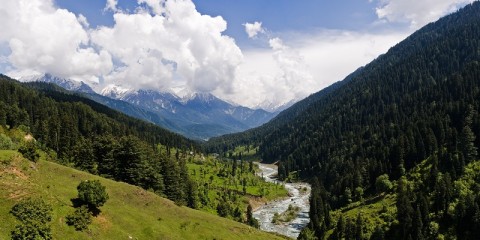
Jammu & Kashmir, North India, Hill station, History, Nature, Temple, Trekking, Wildlife Sanctuary
Pahalgam is a town and hill station in Anantnag district of Jammu and Kashmir, India. This hill station is famous across the world. It is situated on the banks of Lidder River. Several Bollywood movies shooted at this place. Every year thousands of people come to this place. Plenty of trekking trails start from this place. This place is the starting point for the Amarnath Yatra. Amarnath cave is just 6kms away from this town. This place is also famous for flora and fauna. Along with trekkers this place is famous for anglers and golfers.
What to see in Pahalgam:
Mamaleshwar Temple: This is most ancient temple in this town. As per the historical records this temple belongs to 12th century. Lord Shiva is worshipped here. It is situated on the banks of river Lidder. This temple was built by Jayasimha.
Shikargha: It is a small wildlife reserve situated at this place. This is one of the famous tourist’s attractions of Pahalgam.
Betaab Hill: Earlier name of this place is Hajan Valley. Betaab movie was shooted here. So this hill was renamed as Betaab Hill. Flowing streams and Snow covered mountains looks so beautiful at this place.
What to see around Pahalgam:
Mattan: It is located 34kms away from Pahalgam. In Jammu & Kashmir this is one of the most important pilgrim places for Hindus. To Worship Lord Sun, huge number of pundits and priests come to this place. Beautiful brick structure Shiva Lingam can be seen here. It is surrounded by clear water.
Aru: It is located 11kms away from Pahalgam. This meadows leads to trek via Lidderwat. Visitors can reach this place by walking on the mountain path.
Chandanwari: It is located 16kms away from Pahalgam. This is the starting point of Amarnath Yatra. This place is famous for Snow Bridge. Amarnath Yatra takes place between July to August. Tourists rush is more during this period.
Sun Temple: It is located 36kms away from Pahalgam. This temple belongs to Pandavas era. Some people believe that foundation stone laid between 370 – 500 AD. Some believed that this was built by Lalitaditya Muktapida during 699 – 739 AD.
Panchtarni: It is located 40kms away from Pahalgam. This is situated at the confluence of five rivers. It is the last stop to Amarnath Yatra.
Tulian Lake: It is located 16kms away from the town. It is beautiful snow covered lake. This lake sets trek route via Baisaran. It is surrounded by peaks.
Baisaran: It is just 5kms away from Pahalgam. Snow Clad Mountains looks so attractive. This place is having thickly wooded forest of Pine.
Getting to Pahalgam: Pahalgam is well connected through roadways. From Jammu, Anantang, Srinagar buses are available to reach this place. During Amarnath yatra transport service from Jammu to this town is restricted. For the convenience of Yatris special yatra coaches are available to travel. Nearest railway station is located at Udhampur which is 217kms away from this town. From cities such as Rishikesh, Kolkata, Chennai, Pune, Indore, Kanyakumari, Delhi and Mumbai trains come to this place. Srinagar airport is the nearest airport which is 96kms away from the town.
Getting around Pahalgam: Buses and horses are available to see the town. Buses are available to visit the surrounding places of Pahalgam.
Best time to visit Pahalgam: Best time to visit this place is between March to November. Snow fall is more during the winter season. Very few tourists visit this place during the winter season to enjoy snow festival which celebrates so grandly every year.
Where to stay in Pahalgam: Plenty of accommodations are available to stay in Pahalgam including luxury hotels, Tourists bungalows ad JKTDC huts. During Amarnath Yatra almost all the budget hotels are booked.
Where to eat in Pahalgam: Only Pure vegetarian food is available. All hotels are having in-house restaurants which serve Continental, Indian and Mughalai dishes.
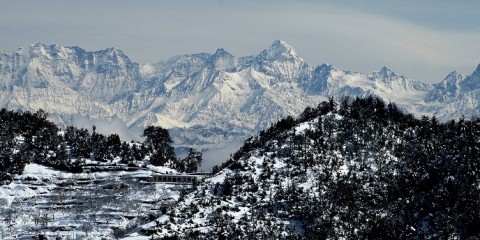
Uttarakhand, North India, Hill station, Musuem, Nature, Temple, Trekking, Wildlife Sanctuary
In the Kumaon Region, Binsar is the highest hill station. It is located in Almora district. This is the best place for adventure lovers, photographers and natural lovers. Name of this town is named after Bineshwar Mahadev Temple. This place acted as capital of the Chand Raj Kings. These kings ruled this region during 7th century. From this hill station visitors can have spectacular view of Panchachuli Peaks, Nanda Kot, Nanda Devi, Chaukhamba and Kedarnath Peaks. This place is also famous for flora and fauna. Trekking activity conducts here.
What to see in Binsar:
Binsar wildlife Sanctuary: With the intension to protect leaf oak forest this sanctuary was established in 1988. This is the home to plenty of flora and fauna. Major attractions of this place are Himalayan Black bears, Kakars, Monkeys, Wild Boars, Leopards etc. Bird Life international declared this place as important bird area. Best time to visit this place is between February to April and from October to November.
Zero Point: It is located inside the sanctuary. Beauty of peaks of Himalayas such as Nanda Devi, Trishul, Shivling, Kedarnath can be seen from this place.
Bineshwar Mahadev Temple: It is one of the major attractions of this place. This temple belongs to 16th century. Binsar town is named after this temple. This temple is dedicated to Lord Shiva. Architecture of this temple is so beautiful.
Binsar Sanctuary Museum: It is located inside the sanctuary. Most valuable and important information about this sanctuary can be known from here.
Pariyadeva Pashan: It is a famous archaeological site. This place has a long stone with cup marks that dates back to megalithic age.
What to see around Binsar:
Khali Estate: This is situated 13kms away from Binsar. Area covered by this estate is 26acres. Beauty of Himalayan Range can enjoy from this place. This was a home to Sir Henry Ramsay, Commissioner of Kumaon. Vijay Laxmi Pandit, Jawaharlal Nehru also resided at this place.
Goula Devta Temple: It is located 4kms away from Binsar Wildlife sanctuary. Goula Devta is worshipped here. People believed that Devta gives quick justice to his devotees.
Kasar Devi Temple: It is located 9kms away from Binsar. In 1820, Swami Vivekananda meditated here. During 1980’s this was the house of Dutch Monks.
Bageshwar: This place is named after Bageshwar Temple. Temple is dedicated to Lord Shiva. Every year thousands of devotees come to this place. It is located 46kms away from Binsar.
Getting to Binsar: Binsar is well connected with road ways. From Pithoragarh, Nainital, Kasauni, Ranikhet etc buses come to this place. Nearest railway station is located at Kathgodam which is 114kms away from Binsar. From Kanpur, Jammu, Delhi, Dehradun, Kolkata etc trains come to Kathgodam. Taxis are available from Kathgodam to Binsar. Pantnagar is the nearest airport of Binsar which is 145kms away.
Getting around Binsar: Private vehicles or hiring a cab is the best way to reach the surrounding places of Binsar.
Best time to visit Binsar: Best time to visit Binsar is between April to June and September to November.
Where to stay in Binsar: Limited hotels are available to stay in Binsar. Few guest houses are also available to stay in Binsar. Best hotels in Binsar are Mountain Resort Khali Estate, The Binsar Retreat, Imperial Hotel, Club Mahindra Valley Resort.
Where to eat in Binsar: Limited restaurants are available to eat in Binsar. All the restaurants offer Continental, Italian, Indian and Chinese Cuisines.
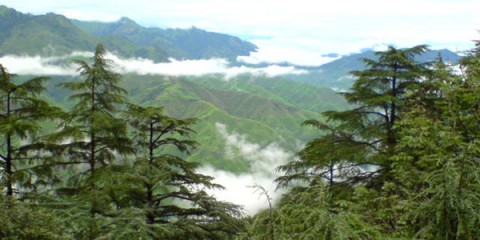
Uttarakhand, North India, History, Musuem, Nature, Trekking , Valley, Water falls, Wildlife Sanctuary
Chakrata is a cantonment town in Dehradun district in Uttarakhand, India. It lies between Yamuna and Tons Rivers. This place is located 92kms away from Dehradun. This place is belonging to Jaunsari Tribe. So this place is also known as Jaunsar Bawar. In 1866, cantonment was established by Britishers. This is the 55th Regiment of British army. Trekking is the major attraction of this place.
What to see in Chakrata:
Deoban: Plenty of animals and plants can be seen in this dense forest. Major attractions are Himalayan Woodpecker, White Collard blackbirds, green backed tit etc. It is situated on hills terrains of Chakrata. From this place visitors can enjoy beautiful view of Himalayan Mountain ranges.
Ram Tal Horticulture Garden: This is the best place for natural lovers. Different varieties of flora and fauna can be seen here. Garden has a small pond and an apple orchid. Major bird attractions of this garden are black headed Jay, grey treepie, oriental turtle dove. Different kind of plants, woody trees, conifers, ferns, Climbers, lichens can be seen here.
Chilmiri Neck: This place is known for mess of military cantonment. Plenty of butterflies and birds can be seen here. From this site visitors can enjoy the beautiful view of Bandapoonch Massif and Swargarohini Peak.
What to see around Chakrata:
Kalsi: It is located 43kms away from Chakrata. This place is famous for rock edict of Emperor Ashoka. Visitors of this place can enjoy scintillating landscapes, cascading waterfalls, beautiful lakes.
Tiger Falls: It is one of the highest falls in India. Visitors can reach this place by trekking. It is located 13kms away from Chakrata. This is one of the best picnic spots of this place.
Paonta Sahib: It is located 71kms away from Chakrata. This one of the pilgrim places for Sikhs. Paonta Sahib Gurudwara is located here. Earlier name of this place is Paontika. Paon means Legs and Tika means Stable. In this place horse of Guru Gobind Singh stopped. Another attraction of this place is a museum. In this museum antique weapons of Guru Gobind Singh can be seen.
Mussorie: It is located 73kms away from Chakrata. Other name of this place is Queen of Hill stations.
Dehradun: It is famous for picturesque landscape and natural resources. Dehradun Attractions are Museum, Clock Tower, Forest Reserve Institute, Sahastradhara, Mahadev Temple, Mall Road, Tapkeshwar Mahadev Temple. It is located 92kms away from Chakrata.
Getting to Chakrata: Chakrata is well connected with road ways. From Mussoorie, Saharanpur, Dehradun etc buses come to this place. Nearest railway station is at Dehradun. From the cities such as Okha, Kathgodam, Varanasi, Ujjain, Indore, Kolkata, Amritsar, Chennai, Delhi etc trains come to this place. Jolly airport at Dehradun is the nearest airport which is located 116kms away from Chakrata. This airport is well connected with Delhi. Taxis are available to reach to Chakrata from Dehradun airport.
Getting around Chakrata: As Chakrata is a small area visitors can see this place on foot. Buses and taxis are available to visit the surrounding places of Chakrata.
Best time to visit Chakrata: During the winter season temperature comes below 5 degrees. So better to avoid to come to this place during winter season. Best time to visit this place is between March to May and between October to December.
Where to stay in Chakrata: Only limited accommodations available in Chakrata. Visitors should not expect luxury hotels. These hotels are not available here. Only budget and midrange hotels are available in this place. Forest rest houses are available to stay in Chakrata.
Where to eat in Chakrata: only limited options are available to eat in Chakrata. In-house restaurants of the hotels are the best option to eat in Chakrata.
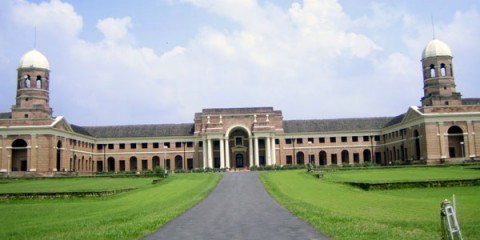
Uttarakhand, North India, Architecture, Caves, Hill station, History, Musuem, Nature, Temple, Wildlife Sanctuary
Dehradun is the capital city of Uttarakhand, India. It is famous for picturesque landscape and natural resources. This place is having historical background. It is believed that this is the birth place of Dronacharya who was the Guru of Pandavas and Kauravas in the epic Mahabharata. This place is also in Ramayana. It is believed that after the death of Ravana, Lord Rama along with Lakshmana visited to this place. Evidences of these are found in the excavations. Best places for shopping lovers are Astely hall, Rajpur Road and Paltan Bazaar.
What to see in Dehradun:
Museum: It is one of the major attractions of the city. This was established in 1971. Origin and development of the city related artefacts can be seen in this museum.
Clock Tower: This was constructed by Britishers before independence. It is six faced tower. Architecture of this tower is so beautiful.
Forest Reserve Institute: Building was constructed in Greco Roman colonial Style. It consists of 6 museums related to entonomy, nonwood forest products, timber, Silviculture, pathology and Social Forestry. This place also has Botanical Garden.
Sahastradhara: It is a beautiful spring. Sulphur present in this spring water. Beautiful views can be enjoyed here. It is believed that this water is having medicinal values.
Mahadev Temple: It is located in Garhi Cantonment area. This temple is dedicated to Lord Shiva. It is a cave temple. It is believed that Lord Shiva made milk flow from the cave for Ashwathma.
Mall Road: This is the best place for shopping lovers. Wide range of products available such as readymade garments, handicrafts, second hand books, ornaments, electronic items, Garwahli shawals, blankets, Tibetan Carpets, traditional jewellery etc.
Waida institute of Himalayan Geology: It consists of huge library consists of several research journals along with best collection of books. To educate the people about general geology and Himalayan; charts, maps and videos are available here.
Paltan Bazaar: This place is famous for wooden crafts items. Fragrances of Basmati Rice and Spices can enjoy at this place.
Other attractions of Dehradun: Other attractions of Dehradun are Ram Rai Gurudwara, Tibetan Buddhist temple, Tapkeshwar Mahadev Temple, Jaspal Rana Shooting Ranges.
What to see around Dehradun:
Chandrabani: It is located 7kms away from Dehradun. People believed that this was the residence place of Maharishi Gautam and his daughter Anjali. It is also believed that Maa Ganga, Daughter of Heaven is manifested here.
Malsi Deer Park: It is located 10kms away from Dehradun. This is the best picnic place for the children. Apart from deers visitors can see Peacocks.
Indian Military Academy: It started functioning from 1st October 1932. Major attractions of this academy are 18 holes FRIMS Golf Course, Shooting Demonstration, War Memorial and Museum. It is located 8kms away from Dehradun.
Mundali: It is located 2.5kms away from Dehradun. This is the best place for Ski Professionals and for snow lovers.
Other attractions near Dehradun: Other attractions near Dehradun are Robbers Cave, Lacchiwalla, Chetwoode Hall, Laxman Siddh Temple, Swarg Niwas Temple.
Getting to Dehradun: Dehradun is well connected with road, railways and airways. From cities such as Ujjain, Varanasi, Kolkata, Chennai, Delhi etc buses and trains come to this place. Flights from Delhi come to this place.
Getting around Dehradun: Autos, Buses, Cars are available to visit the surrounding places of Dehradun.
Best time to visit Dehradun: Dehradun welcomes the visitors throughout the year.
Where to stay in Dehradun: Plenty of accommodations available to stay in Dehradun. Midrange and Luxury hotels provide free pick up services from the airport.
Where to eat in Dehradun: Several eating options available in Dehradun. North Indian dishes are popular in these restaurants. Continental, Chinese and Indian cuisines are available in all the restaurants. Noodles taste at small stalls of this place is unique. Tibetan delicacies are most famous in this city.
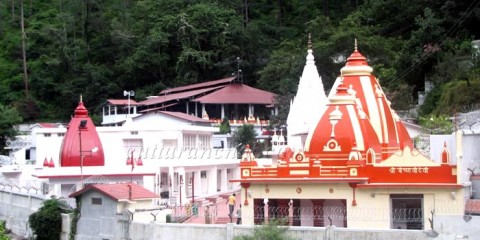
Uttarakhand, North India, Hill station, History, Musuem, Nature, Temple, Trekking, Valley, Wildlife Sanctuary
Ranikhet is a hill station and cantonment town in Almora district of Uttarakhand, India. It is surrounded by majestic Himalayan Ranges and lush green forests. Ranikhet means Queens Meadow. This name was given by Raja Sudhardev to express his love towards his wife Rani Padmini. Palace does not exist here. Britishers used this place as summer retreat. They have established Kumaon Regiment here in 1869.
What to see in Ranikhet:
Nanda Devi Mela: It is one of the major attractions of Ranikhet. Every year in the month of September this is held at Nanda Devi Temple. In the honour of Goddesses Sunanda Devi and Nanda Devi this is held. This was started by Raja Kalyan Chand in 16th century. To bring prosperity this is held every year.
Mankameshwar Temple: This temple is dedicated to Pair of Radha Krishna, Lord Shiva and Goddess Kalika. It was built by Kumaon Regimental Centre of Indian army in 1978. Near this temple Woollen Garden factory and Guruwara can be seen here.
Rani Jheel: It is an artificial lake built between Kendriya Vidyalaya and Canossa Convent School bridges. For the purpose of rain water harvesting this was built by Cantonment board.
Flora and Fauna: This place is famous for flora and fauna. Major attritions of deodar, oak and Pine forests are Porcupine, Red Fox, Langur, Jackal, Red Faced Monkey, Indian Hare, Sambar etc.
Army Museum: Contribution by Regiment during kargil war, Indo China wars can be known here. Weapons used in the wars are placed here.
What to see around Ranikhet:
Upat and Kalika: Best view of snow peaked Himalayan is possible from here. Army golf course can be learned here. It is situated 5kms away from Ranikhet.
Tarikhet: It is 8kms away from Ranikhet. Major attraction of this place is Gandhi Kutiya. In this place Gandhi stayed for long time during freedom struggle.
Chaubatia: It is situated 10kms away from Ranikhet. More than 200 varieties of fruits and flowers can be seen in this orchard. Research laboratory is also located here.
Majkhali: It is located 13kms away from Ranikhet. This place is famous for towering view of the Himalayas.
Binsar Mahadev: Temple is dedicated to Lord Shiva. Place is situated 15kms away from Ranikhet. It is surrounded by Cedar Forests and Water springs.
Sun Temple: It is 800 years old temple of Almora. It is located 25kms away from Ranikhet. It is surrounded by 44 smaller shrines. Trekking route is preferred to reach this place.
Dwarahat: This ancient village is situated 38kms away from Ranikhet. Major attractions are Kachri Devtas temple, Dhwaj, Mrityunjaya, Maniyan and Badnirath temples. Other attraction is Syalde Bikhauti Fair held in April.
Getting to Ranikhet: Ranikhet is well connected with road ways. From Bareily, Almora, Nainital buses come to this place. Nearest railway station is located at Kathgodam which is 80kms away from Ranikhet. From all the main cities of India, trains come to this place. Nearest international airport is located at Delhi which is 350kms away from Ranikhet and Domestic airport is located at Pantnagar which is 119kms away from Ranikhet.
Getting around Ranikhet: Buses, Jeeps, Taxis are available to visit the surrounding places of Ranikhet.
Best time to visit Ranikhet: Best time to visit this place is between March to October.
Where to stay in Ranikhet: Plenty of accommodation is available in Ranikhet. Cost of budget rooms are ranging between Rs.700 to Rs.1500. Cost of Deluxe suites ranges from Rs.7000 to Rs.10, 000.
Where to eat in Ranikhet: Several restaurants available to eat in Ranikhet. Ram Mithai, local sweetmeat, has to taste by the visitors. This taste will remember forever.
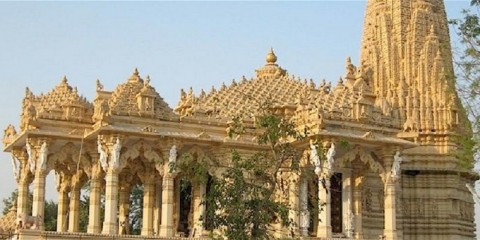
Rajasthan, North India, Boating, Caves, Fort, Hill station, History, Musuem, Nature, Rock Formations, Temple, Trekking, Wildlife Sanctuary
Mount Abu is a world famous tourist’s place which is situated in the Aravalli Range. It is the only hill station in Rajasthan. Other name of this place is summer capital of Rajasthan. According to Puranas, Mount Abu is known as Arbudaranya. It is believed that Sage Vasishta retreated to this place following the difference with Sage Vishvamitra. This place is well known for folk dances, classical music, Rajasthani Handicrafts. Stone crafts, Rajasthani Paintings, leather articles, bangles, wooden and metal artefacts etc are worth buying at this place.
What to see in Mount Abu:
Dilwara Temples: One of the major attractions of this place. It is famous for its stone carvings and architecture styles. Dilwara Temples Attractions are Luna Vasahi Temple, Pitthalhar Temple, Shri Parshavnath Temple, Vimal Vasahi Temple, and Shri Mahaveer Swami Temple. These are constructed in 11th and 13th century.
Archaeological Museum: Major attraction of this museum is Devdasi statues. These statues belong to 6th and 12th centuries. It was built in 1962. This was divided into two sections. Accessories of ancient period are preserved in the first section of the museum. In the second section is so attractive with miniatures paintings.
Mount Abu wild life sanctuary: People visit this place for sightseeing. It is located on the oldest parts of mountain range. Plenty of rare species of flowers can be seen here. Major attraction of this place is Panther, bear, fox and 250 bird species.
Sunset Point: This Place offers a beautiful view of the Sunset.
Nakki Lake: This is one of the major attractions of Mount Abu. Rock formations such as Camel Rock, Nandi Rock, Nun Rock, and Toad Rock can be seen here. Boating is another major attraction of this place.
Neminath Temple: Solanki Style can be seen here. It has a lotus flower carved inside the dome covering the mandap.
Toad Rock: This is the main trekking trail form Abu. Unique rock formations can be seen here.
Sri Raghunathji temple: Lord Vishnu is worshipped here. This temple belongs to 14th century.
Brahma Kumaris Spiritual University: university is offering several courses including yoga, meditation. This is situated with the backdrop of forest.
What to see around Mount Abu:
Guru Shikhar: It is located 14kms away from Mount Abu. Trekking is the major attraction of this place. It is the highest mount peak. Guru Dattatreya Temple is another attraction of this peak. Giant brass bell outside the temple can be seen here. Other temples of this place are Mira Temple, Shiva Temple, and Chamundi Temple.
Achalgarh: It is famous for its fort. This is located 9kms away from Abu. This was built to protect this regions and to have a look on the enemies. Major attractions of this fort are Lord Shiva temple and brass Nandi Structure.
Adhar Devi Temple: It is located in a cave which is 3kms away from Abu. This temple is dedicated to Goddess Durga. 365 steps to be climbed to reach this temple.
Doodh Baori: It is located 4kms away from Abu. This is a sacred well. Water in this well is in milk colour. People believe that this water is having heavenly powers.
Getting to Mount Abu: Abu is well connected with road ways. From all the cities buses come to this place. Nearest railway station is Abu Road station which is 27kms away from Mount Abu. This is well connected with Mumbai and Delhi. Nearest airport is Maharana Pratap or Dabok Airport.
Getting around Mount Abu: Buses and taxis are available to see the places in Abu. Baby Palm is the different means of transportation in Abu to visit the places in this place. Buses and taxis are available to visit the surrounding places.
Best time to visit Mount Abu: Best time to visit this place is between February to June and from October to December.
Where to stay in Mount Abu: Plenty of hotels including luxury hotels are available to stay in Abu.
Where to eat in Mount Abu: Several restaurants available to eat in Abu.
Jalore is a city in Jalore district, Rajasthan, India. Earlier name of this city is Jabalipura which was named after a saint. Main attraction of this place is Jalore Fort. It is situated on Golden Mount. So this city is also known as Songir.
What to see in Jalore:
Topkhana: It is located at the heart of the town. Before independence, artilleries were kept in these school buildings. After independence this was started using for the storage of food grains. Major attraction of this place is stone carvings. 276 pillars are used to support this building. On both the sides of this Topkhana two temples are situated. But idols are not there in these temples. Jagnath Mahadev: Only few years back this was discovered. This temple was built by Rudal Devi. Several pillar and stone inscriptions of this temple was destroyed. Rudal Devi inscription was safe.
Jalore Fort: This is the major attraction of Jalore. During 10th century this was built by Paramaras. There are 4 gates to this fort. They are Suraj Pol, Siroh Pol, Dhruv Pol, and Bal Pol. One interesting thing is that Sun enters into the fort through Suraj Pol Gate. Fort comprises of one Mosque, a shrine of Mallik Shah, 3 Jain Temples, a shrine of Goddess Jogmaya, a Shiva Temple, Palace of Mansingh, 2 water reservoirs.
Mosque of Malik Shah: It is located in the middle of the fort. Gujarati style of architecture is the major attraction of this mosque.
What to see around Jalore:
Sire Mandir Temple: It is located 3kms away from the city of Jalore. Imprint of Nath Ji’s footsteps can be seen here. Shiva Linga is situated in a rounded cave. This temple was built by Raja Ratan Singh. One of the attractions of this temple is huge elephant statue in front of the temple made up of stone and cement.
Jahaz Temple: It is located in Mandwala which is 20kms away from Jalore. At the grave of Surishwar Maharaj, a temple was built on a ship. All community people come to this temple along with Jain worshippers.
Jalore Wildlife Sanctuary: It is located 68kms away from the Jalore city. Major attraction of this sanctuary is long billed vulture, tawny eagle, Asian steppe wildcat etc and more than 200 different species of birds. Granite Mountain inside the sanctuary is another attraction of this sanctuary. Visitors can enjoy Jeep Safari at this place.
Lohanagarh of Jaswantpura: It is located is 37kms away from Jalore. King Jaswant built a rest house for his winter recreation on the mountain. Area is rich with wild life such as monkeys, boars, tigers, etc…
Fort of Bhadrajun: It is located 54kms away from Jalore. Earlier name of this place is Subhadra Arjun named after Arjun and Subhadra characters of epic Mahabharata. Devi Subhadra temple is the major attraction of this place.
Fort of Kot Kasta: This village is famous for Nath Fort. This is 200 years old fort.
Getting to Jalore: Jalore is well connected with road ways. From Ahmedabad, Ajmer, Udaipur, Jaisalmer, Jaipur etc buses come to this place. Nearest railway station is located at Jodhpur which is 140kms away from the city. Jodhpur airport is the nearest airport. From Mumbai, Delhi, Udaipur etc flights come to Jodhpur.
Getting around Jalore: Buses along with private vehicles are available to visit the surrounding places of Jalore.
Best time to visit Jalore: Jalore invites the visitors throughout the year.
Where to stay in Jalore: Plenty of accommodations are available to stay in Jalore. Best hotels in Jalore are Ravla Bhenswara Hotel, Hotel City Palace, Harji Fort, Hotel Geetco.
Where to eat in Jalore: Plenty of restaurants available to eat in Jalore.
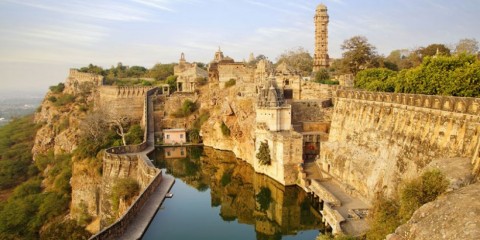
Rajasthan, North India, Architecture, Fort, History, Musuem, Nature, Palace, Temple, Wildlife Sanctuary
Chittorgarh is a city in Rajasthan, India. Major attraction of this place is Chittorgarh Fort which is the largest fort in India. It was built in 7th century by Mauryans. This fort was sacked for 3 times between 15th and 16th centuries. In the history of fort, siege by Ala-ud-din Khilji is an important event. Fort is the pride of Rajputs. From 8th century to 16th century Kingdom of Mewar ruled this place. Area occupied by this fort is 700 acres. It stands on 180m high hill. Jewellery, Leather shoes, handmade shoes, fabrics, metal works are worth buying in Chittorgarh city. Jauhar Mela is the biggest festival celebrates in this city.
What to see in Chittorgarh:
Chittorgarh Fort: Other name of this fort is water fort. It is the major attraction of Chittorgarh. Worth seeing in this fort are Vijay Stambh, Kirti Stambh, gates namely Hanuman Pol and Ram Pol. Several temples are located inside the fort. They are Kalika Mata Temple, Shyam Temple, Meera Temple, Neelkanth Mahadev Temple. These temples belong to 8th century. This fort is having 22 water bodies.
Rana Kumbha Palace: It is located inside the fort. It was built by Rana Kumbha in 1433- 68. Worth seeing in this palace are stables of horses, elephants and balconies. Ganesha temple is also located inside the palace.
Rani Padmini’s Palace: This is 3 storied white building situated inside the fort. Pavilion and lotus temple are located here.
Archaeological museum: Sculptures, houses paintings, artifacts are the major attractions of the museum. Historical facts of ruins of the fort also can be seen here. During the excavation, artefacts belongs to Buddhism are found. These artefacts also can be seen in the museum.
Other attractions in Chittorgarh: Other attractions in Chittorgarh are Phatta’s Memorial, Vijaya Stambh, Kalika Mata Temple, Tulja Bhawani Temple, Meera Temple, Gaumukh Reservoir,
What to see around Chittorgarh:
Sitamata Wild life Sanctuary: It is believed that Sitamata stayed in this forest in Saint Valmiki Ashram so it was named after this. Major attractions of this sanctuary are wild Pangolin, leopards, jungle cat, nilgai, deer etc. It is locate 31kms away from Chittorgarh.
Sanwariyaji Temple: It is located 38kms away from the city. Lord Vishnu worshipped here.
Bassi fort: It is located 54kms away from the city. Major attractions of this fort are Mahals, arches, domes and gates. This was built in 16th century by Thakur Jimal who was the cousin of Maharana Pratap .
Nagari: It is located 18kms away from the city. During the excavation a stupa was discovered decorated with terracotta tiles. This was the flourishing town during Gupta and Mughal rulers.
Other attractions near Chittorgarh: Other attractions near Chittorgarh are Bassi Wildlife sanctuary, Menal, Bhainsrodgarh Wildlife sanctuary, Maha Sati, Sanwariaji Temple, Sathis Deori Temple.
Getting to Chittorgarh: Chitttorgarh is well connected through road and railways. From the cities of Rajasthan, buses come to this place. From Vadodara, New Delhi, Udaipur, Ajmer, Jaipur trains halt at Chittorgarh. Nearest airport is at Udaipur. This airport is popularly known as Maharana Pratap airport. This airport is well connected with New Delhi and Jaipur.
Getting around Chittorgarh: Buses, Taxis and Private Vehicles are available to visit the surrounding places of Chittorgarh.
Best time to visit Chittorgarh: Best time to visit this place is during the winter season. Climate is so pleasant during this season.
Where to stay in Chittorgarh: Plenty of accommodations are available to stay in Chittorgarh. All type of hotels such as budget, midrange and luxury hotels are available.
Where to eat in Chittorgarh: Plenty of restaurants available to eat in Chittorgarh. All the restaurants provide traditional Rajasthani meals along with Continental and Chinese cuisines. Few hotels offer Mughal Cuisines. Almost all the hotels serve only vegetarian food.
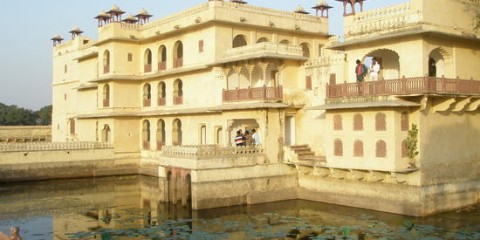
Rajasthan, North India, Architecture, Dussehra, Fort, History, Musuem, Nature, Palace, Rock Formations, Temple, Water falls, Wildlife Sanctuary
Kota is the third largest city of Rajasthan, India. This place is famous for gardens and Palaces. It is located on the banks of Chambal River. Kotya Bhill warrior laid the foundation stone for the construction of this city. Dussehra festival celebrates so grandly in Kota. This city has its own style in celebrating this festival. Main attraction of this festival is burning of effigies of Meghnath, Kumbhakaran and Ravana. Other festival celebrates grandly at this place is Ganguar festival. Grand procession takes place during this festival. Procession includes horses, camels, elephants, drummers and dancers.
What to see in Kota:
City Fort Palace: In Rajasthan it is one of the largest forts. Visitors can see Rajput and Mughal architectural style on this fort. Ceilings are made up of glass and marble are used for the walls as well as for the floors. Palace consists of a museum. This displays the weapons used during the Rajput era were displayed. Major attraction of this fort is Elephant Gate which was built in 17th century.
Chambal Garden: It is located on the banks of river Chambal. This is the best picnic spot. Inside the garden, visitors can find a pond. Major attractions of this pond are gharials and crocodiles.
Kishore Sagar Lake and Jagmandir Palace: It is an artificial lake which was built in 1346 by Prince Dher Dun of Bundi. At the middle of the lake visitors can find a Palace which was built in 1740. This palace was constructed with red sandstone.
Maharao Madho Singh Museum: This is one of the best museums in Rajasthan. It was named after first king of Kota i.e. Rao Madho Singh. Major attraction of this museum is arms, sculptures, miniature paintings of Kota school.
Umed Bhawan Palace: It is located in the cantonment area of Kota. This was built by Maharaja Umed Singh in 1800. Now this palace is acting as heritage hotel.
Darrah Wildlife Sanctuary: It was established in 1955. Kota Kings used this area for hunting purpose. Major attraction of this place is deer, Tiger, Rhinos, wolves, nilgai etc
Other attractions in Kota: Other attractions in Kota are Sawan Phuhar Water Park, Brijraj Bhawan Palace, Godavari Dham Temple, Kansua Temple, Haveli Devtaji, Mathuradheesh Mandir, Gurudwara Azamgarh Sahib.
What to see around Kota:
Kaithoon: It is located 14kms away from Kota. This place is famous for hand woven Kota Daria Saris. Here dress material and fabrics embroider with real gold and silver threads can be seen.
Baroli: It is located 45kms away from Kota. Major attraction of this place is Ghateshwara Temple. It is one of the beautiful temple complexes in Rajasthan. Carvings on the temple are so attractive. Pillars, images of Lord Shiva, Nataraja are the best example for Rajasthani craftsmanship.
Other attractions near Kota: Other attractions near Kota are Taragarh Fort, Sitabari, Alnea, Raniji Ki Baoli, Garadia Mahadev, Gaipernath.
Getting to Kota: Kota is well connected with Road and Railway lines. From Ajmer, Bikaner, Jaipur, Udaipur etc buses come to Kota. From Pune, Chennai, Kolkata, Delhi, Jaipur, Mumbai etc trains halt at this station. Nearest airport is at Jaipur which is 245kms away from Kota. This airport is well connected with Kolkata, Delhi and Mumbai. Taxis are available to reach Kota from this airport.
Getting around Kota: Buses, Cycle rickshaws and Autos are available to see the city. Buses and Taxis are available to visit the surrounding places of Kota.
Best time to visit Kota: Best time to visit this place is between November to February.
Where to stay in Kota: Plenty of accommodations are available to stay in Kota. But only Budget and midrange hotels are available. During the winter season i.e. festival season tourists rush is more so advance booking of rooms is advisable.
Where to eat in Kota: Plenty of hotels are available to eat in Kota. Most of the restaurants serve vegetarian and Rajasthani cuisines.
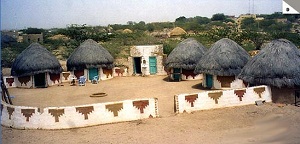
Rajasthan, North India, Bird Sanctuary, Boating, Camal Safari, Fort, Musuem, Nature, Sand Dunes, Wildlife Sanctuary
Khuri is a small village located in Sikar district of Rajasthan, India. Visitors of this can enjoy and can have most memorable experience of Sam Sand Dunes. Sweeping dunes are most attractive in shining golden colour. Riding on the decorated camel is so exiting. From this village visitors can reach to Thar Desert Sand dunes within half an hour. If visitors travel through any other vehicle it will take less than half an hour of time.
What to see in Khuri:
Khuri Sand Dues: Though it is the one attraction of Khuri, it is most unforgettable and impressive experience. Horse safaris and Camel safaris is most memorable experience. Visitors of this place have to experience Spartan splendours of the desert. During the night times desert offers ideal setting to star gaze. Kalbeliya dance and folk songs accompanied by bonfires are very common in this place. For the entertainment of the tourists, Camel Polo and Camel race conducts here. Sunrise and sunset from the sand dunes looks so beautifully.
What to see around Khuri:
Sam Sand Dunes: It is located 40kms away from Khuri. During the winter season night camps in this place is most attractive. Cost of this camp is between Rs.3000 to Rs.7000 per person.
Jaisalmer Fort: Other name of this fort is Ship fort as it looks like ship in the sea of the golden sand. Sandstone is used to build this fort. It was constructed in 12th century. It is located 36kms away from Khuri.
Gadisar Lake: Visitors of this lake can enjoy boat riding. Though it is located in the middle of the desert it will never get dry. It is located 39kms away from Khuri.
Desert National Park: In India this is one of the largest parks. It is located 47kms away from Khuri. Major attraction of this place is fauna and flora. Visitors are allowed between 10.00 AM to 5.00 PM for 4 to 5 hours. Nearly 72 villages are located around this park. This is the best place for natural lovers.
Tazia Tower: This was the construction of Muslim rulers. It is 5 storied structures with several carved balconies. Muharram celebrates here very grandly. It is located 38kms away from Khuri.
Government Museum: It is located 38kms away from Khuri. Major attraction of museum is marine and wooden fossils of wildlife. Handful displays which are placed here dates back to 150 million years. Sculptures of 12th century can be seen here.
Getting to Khuri: Khuri is well connected through road ways. From Jaisalmer, Delhi, Jodhpur, Bikaner, Jaipur buses come to this place. Nearest railway station is located at Jaisalmer which is 50kms away from Khuri. From Mumbai, Delhi, Jodhpur trains come to Jaisalmer. SUVs, Jeeps, Taxis and buses are available to come to Khuri from Jaisalmer. Nearest airport is located at Jodhpur which is 310kms away from Khuri. This airport is well connected with Delhi and Mumbai. From these airport visitors has to reach to Jaisalmer. Then they have to reach to Khuri.
Getting around Khuri: Camel Carts, Horses, Camels, SUVs, jeeps are available to visit the surrounding places of Khuri.
Best time to visit Khuri: Best time to visit Khuri is between November to February.
Where to stay in Khuri: Khuri is having several resorts along with plenty of home stays. Traditional Rajasthan cuisines are available at home stays of Khuri. Dune visits offer by home stays and resorts management. Best facilities will be available at resorts and home stays.
Where to eat in Khuri: Rajasthani Cuisines are available in home stays and Resorts. Both vegetarian and non vegetarian food is available in these home stays and resorts.
Kasol is a village and hill station in Himachal Pradesh, India. It is situated in Parvati Valley on the banks of Parvati River. Kasol is divided into Old Kasol and New Kasol on either side of the bridge.
What to see in Kasol: This is the best place for natural lovers and trekking lovers. Throughout the year visitors can see great climate and untouched mountains. Israel tourists are more at this place. If people want to chill in the lap of nature, this is the best place for vacation. One can spend lazy afternoons at this place. The Himalayan Village resort is most beautiful to visit at Kasol.
Trekking is the major activity in Kasol. Through trekking visitors can reach to Khiriganga, Pin Parbati Pass, Yanker Pass, and SAR Pass. Tourists rush of Israel’s is more at this place. One of the interesting things at this place is, sign boards of the shops written in Hebrew. As Israel tourist rush is more all the restaurants serve Israel cuisines. This is the ideal destination for backpackers. Parvarti River abounds with trout’s. This is the perfect place for angling. For fishing in the river prior permission from forest department is essential. Other attraction for in Kasol is white water rafting. Many pilgrims dip in river parvati and believe that all their sins will wipe off. Kasol is the best place to smoke weeds.
What to see around Kasol:
Kullu: This place is known as valley of Gods. It is located 40kms away from the town. It is an open valley between Largi and Manali. This is the best place for natural lovers. Hills in the valley covered with Sprawling Apple Orchards, Deodar Forest and Pine forests. Activities in this valley are Angling, hiking over the Himalayan glaciers, paragliding, Mountaineering, river rafting, trekking. This place is also famous for adventure sports. Other Kullu attractions are Chandrakhani Pass, Raghunath Temple.
Manikaran: It is located 5kms away from the town. Several tourists who visited Kullu and Manali would like to see this place to see the hot springs. This place is also famous for pilgrim centres. Several Hindu temple and Gurudwaras are placed here. Manikaran Attractions are Hot springs, Lord Ramachandra Temple, Vishnu Temples, Sri Guru Nanak Devji Gurudwara, Kulant Pith.
Manali: It is located 80kms away from the town. Manali is a hill station in Himachal Pradesh. It is named after Hindu god Manu. Manali is popular honeymoon spot. Manali is famous for its culture, history, scenic beauty, snow covered by mountains. Other Manali attractions are Manu Temple, Hadimba Temple, Paragliding, Trekking and Adventures sports, Solang Valley.
Getting to Kasol: Kasol is well connected through road ways. From Chandigarh, Kullu, Manali, buses come to this place. Nearest railway head is located at Pathankot. This is located 150kms away from the town. Nearest airport is Bhuntar Airport. From Delhi, Shimla, Pathankot flights come to this place. From this airport taxis and private vehicles are available to reach Kasol.
Getting around Kasol: Private Vehicles and Hiring a cab are available to visit the surrounding places of Kasol.
Best time to visit Kasol: It is essential to know the best time before visiting to any place. Best time to visit this palace is between March to May.
Where to stay in Kasol: Only budget hotels are available. Midrange and luxury hotels cannot be seen here but few guest houses are available to stay in Kasol.
Where to eat in kasol: Plenty of cafes and restaurants are available. Israel tourists rush is more in this place. So, all the restaurants serve Israel cuisines along with local cuisines. North Indian and continental cuisines are also available here.
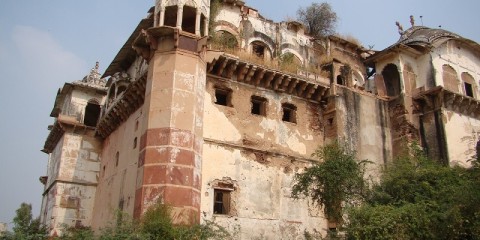
Rajasthan, North India, Bird Sanctuary, Deeg water Palace, History, Nature,Temple
Bharatpur is a city located in Rajasthan, India. It is also known as eastern gateway to Rajasthan. This is the one of the best places for bird lovers. This place is named after Bharat who was a brother of Lord Rama. Royal family of Bharatnagar worshipped Laxmana (Brother of Lord Rama) as their deity. This place is famous for historical buildings, parks and avian sanctuaries.
What to see in Bharatpur:
Keoladeo National Park: This was established by Maharaja Suraj Mal, 250 years ago. In 1956 this was established as bird sanctuary. In 1982 this was designed as a national park. Visitors of this place can see 7 species of turtles, 392 species of angiosperms, 5 species of amphibians, 375 species of birds and 50 species of fishes.
Laxman Temple: This is 400 years old temple located at the centre of the city. It was built by Maharaja Baldev Singh. Other shrines of this temple are Hanuman, Shtrughan, Bharat and lord Rama.
Lohagarh Fort: Even after several attacks by the Britishers this fort remained unconquered. Worth visiting place of this fort are Kothi Khas, Mahal Khas, Kishori Mahal. This was built by Jat ruler Maharaja Suraj Mal in 18th century. This is one of the strongest buildings in the history of India. This fort consists of 3 palaces namely Purana Mahal, Kamra Mahal and Mahal Khas. Sandstone durbar in the fort is now acting as museum.
Government Museum: Major attractions of this museum are Weapons, coins, arms, Sculptures. All these could be more than 4000 antiques. Other name of this museum is state Archaeological museum. This remains closed in Monday.
Ganga Temple: It is located at the center of the city. In 1845, Maharaja Balwant Singh constructed this temple. South Indian, Mughal, Rajpur architecture styles can be seen on this temple. Devotees come to this temple will be given holy Ganga river water.
Bankebihari Temple: This temple is dedicated to Lord Krishna and Radha. It is one of the famous temples of India.
What to see around Bharatpur:
Gopal Bhavan: This was constructed in 1760. Beautiful garden can be seen before this bhavan. Marble arch is placed here. Pillars of this Bhavan are most beautiful. Rich collection of Victorian furniture, Souvenirs and curios can be seen here. In the next floors visitors can see black marble bed. It is located 35kms away from the town.
Deeg Fort: It is located 35kms away from the town. This was built in 1730 by Maharaja Suraj Mal. This fort consists of 10 gateways and 72 bastions. Elephant strikes are used to protect the gateways. Watch tower stands but interior of this fort is in ruin stage. This was built in typical bangaldar style. Garden in this fort is in Char Bagh style.
c: It consists of beautiful gardens and Palaces. It is located 32kms away from the city. This place acted as summer resort of Raja Surajmal. It is Quadrangle shaped palace. A fountain at this place is so attractive.
Getting to Bharatpur: Bharatpur is well connected through road and railways. From Delhi, Haryana, Uttar Pradesh, Rajasthan buses are available to reach this place. From the cities such as Delhi, Mumbai, Agra, Jaipur trains come to this place. Nearest airport is located at Agra which is 56kms away from the city. Private taxis are available from the port to come to Bharatpur.
Getting around Bharatpur: Autos, local buses, Taxis are available to visit the surrounding places of Bharatpur.
Best time to visit Bharatpur: Best time to visit Bharatpur is between November to March.
Where to stay in Bharatpur: Plenty of accommodations available in Bharatpur. Government run forest lodges are also available here.
Where to eat in Bharatpur: Plenty of restaurants are available to eat in Bharatpur. Continental, Mughalai cuisines are available along with local cuisines.
Ayodhya is an ancient city of India located in Uttar Pradesh. This is the most sacred place to the Hindus as it was the birth place of Lord Rama. Lord Rama is 7th incarnation of Lord Vishnu. This was founded by Manu. He was the first man in the Vedas. According to Ramayana this place is 9000 years old. At the time of Lord Rama’s rule, this place is known as Kaushaldesa. Atharvana Veda described this place as city built by Gods being prosperous like Paradise itself. Apart from Hinduism influence of Islam, Buddhism and Jainism can be seen in Ayodhya. In this city five Thirthankars were born.
What to see in Ayodhya:
Ramkot: This is the main worship place of Lord Rama. Ram Navami celebrates on the occasion of Lord Rama’s birthday very grandly. This comes between March and April.
Hanuman Garhi: It is situated at the heart of Ayodhya. Visitors can see shrine of Goddess Anjani with Hanuman in her lap. It is believed that cave used to be residence of Hanuman and he guards Ramkot.
Swarg Dwar: Lord Rama was cremated in this place.
Kanak Bhawan: In this Bhawan, visitors can find most beautiful images of Lord Rama and Sita wearing crowns made up of Gold. This Bhawan is also known as Sone Ka Ghar which means house made up of gold.
Treta Temple: This was built at the place where Lord Rama performed Ashwamedha Yajnam. 300 years ago, Raja of Kullu constructed a new temple at this site. In 1784 this temple was renovated by Ahalyabai Hokar. During the time of renovation, adjoining Ghats were built.
Mani Hill and Sugriv Hill: Ancient stupa situated in Mani Hill. This was built by king Ashoka. Surgiv hill has an ancient monastery.
Nageshvarnath Temple: This was built by Kush son of Lord Rama. People say that Kush lost his arm band in Saryu River. This was found by a Naag Kanya. She fell in love with him. In the honour of Naaga Kanya and her devotion towards Lord Shiva, Kush built this temple. All other structures ruined. Only this temple stands still. On seeing this temple itself Vikramaditya found Ayodhya. Shivaratri festival celebrates grandly.
Other attractions of Ayodhya: Other attractions of Ayodhya are Sita ki Rasoi, Ram ki Paidi, Mani Parbat, Ramjanamabhoomi, Babri Mosque.
What to see around Ayodhya:
Faizabad: It is located 7kms away from Ayodhya. This was developed by Safdaejung about 220 years ago. He was second nawab of Awadh. This place is famous for Chotta Calcutta fort. Major attractions of this fort are Jawahar Garden, Moti Mahal, Khrushid Mahal, Gulab Bari.
Gonda: This town is famous for Devi Patan Temple. A tank can be seen here. People believe that this was built by king Karna who was the son of Lord Sun. He built this tank to honour his father lord Sun. It is located 50kms away from the city.
Other attractions near Ayodhya: Other attractions near Ayodhya are Mausolum of Bahu Begum, Rishabhdev Rajghat udayan, Gulab Bari, Guptar Ghat, Raja Mandir, Military temple, Faizabad Musuem, Tulsi udyan.
Getting to Ayodhya: Ayodhya is well connected through road and railways. From Gonda, Gorakpur, Varanasi, Kanpur, Lucknow etc buses and trains com to this place. Nearest airport is located at Lucknow which is 150kms away from the city.
Getting around Ayodhya: Buses, Jeeps, Taxis and autos are available to visit the surrounding place of Ayodhya.
Best time to visit Ayodhya: Best time to visit Ayodhya is between November to March.
Where to stay in Ayodhya: only budget and midrange hotels are available to stay in Ayodhya. Best budget hotels are located near railway station and Ambedkar Nagar. Two government run guest houses are also available.
Where to eat in Ayodhya: Limited restaurants are available to eat in Ayodhya. Available restaurants offer Chinese, Punjabi and North Indian cuisines. Restaurants offer only vegetarian.
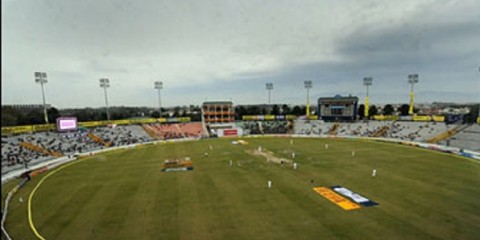
Punjab, North India, Boating, Chandigarh, Guradwara, History, Nature, Wildlife Sanctuary
Mohali is a city in Punjab, India. Official name of this city is Ajitgarh. This place is named after Sahibzada Ajit Singh who was the Son of Guru Gobind Singh. It is a fast growing IT outsourcing hub. After the success of Chandigarh sector design planning, Mohali planned in its own way. Mohali is famous for its infrastructural planning, historical structures, and industrial structures and for Cricket Ground.
What to see in Mohali:
Mohali Cricket Stadium: Other name is Punjab Cricket Association stadium. It is one of the largest cricket stadiums in India which was established in 1993.Capacit of this stadium is 45000 viewers.
Guradwara Amb Sahib: This place was visited by Guru Har Rai. He was the 7th guru of the Sikhs. Name is derived from the word Amb which means mangoes.
Chhatbir Zoo: It is situated on Chandigarh Patiala road. Major attraction of this zoo is Bengal Tiger. Visitors can see 85 types of migratory birds and 950 species of animals.
Gurdwara Sant Mandal Angitha Sahib: This is 3 storied most beautiful Gurdwara. It is located in sector 62 of Mohali.
Other attractions of Mohali: Historical place to see in Mohali are Gurudwara Angitha Sahib, Gurudwara Puddha Sahib, Gurudwara Nabha Sahib, Baba Banda Singh Bahadur war memorial.
What to see around Mohali:
Rose Garden: It is Asia’s largest Rose Garden which is located 7kms away from the city. This was established in 1967. Garden was set up by first chief Commissioner of Chandigarh with the help of MS Randhawa. In this place visitors can see 1600 varieties of 17000 rose plants.
Rock Garden: It is located 10kms away from the city in Chandigarh. This is open air exhibition exits between Sukhma Lake and Capitol Complex. All the displayed art made up of waste material like stones, handle bars, mudguards, auto parts, marbles, and metal wires.
Nabha Sahib: It is located in Mohali district which is 16kms away from the city. This site was constructed at the place where the head of Guru Tegh Bahadur fell. He was the Sikh Warrior and Guru.
Sukhna Lake: It is located 13kms away from the city. It is an artificial lake created in 1958 by blocking rain water. Visitors attracts towards this for Skiing, Yachting and Boating.
Mansa Devi Temple: It is located in Mohali district which is 19kms away from the city. It is one of the Sidh Peeths. Two temples can be seen here. One is main temple built in 1815 other one was built by Maharaja of Patiala. Garden near this temple consists of several sacred plants.
Gurdwara Nada Sahib: It is located in Nada Village which is 23kms away from the city. After defeating Mughals, Guru Gobind Singh resided at this place.
Other attractions near Mohali: Other attractions near Mohali are Sukhna Wildlife sanctuary, Gurdwara Baoli Sahib, Thunder Zone Amusement and water Park.
Getting to Mohali: Mohali is well connected though road and railways. From Punjab, Haryana, Patiala etc buses are available to reach to Mohali. From Ludhiana, Pune, Chennai, Delhi etc trains come to this place. Nearest railway head is situated at Chandigarh. Chandigarh airport is the nearest airport which is located 15kms away from the city. From Chennai, Kolkata, Ahmedabad, Delhi etc flights come to this place. Autos and taxis are available to reach Mohali.
Getting around Mohali: Autos, Buses, Taxis are available to visit the surrounding places of mohali.
Best time to visit Mohali: Best time to visit Mohali is between April to June.
Where to stay in Mohali: Plenty of accommodation in Mohali. All budget, midrange and luxury hotels are available to stay in Mohali. Plenty of Lodges are also available. Best hotels are Hotel Cama, Imperial Hotel, Vaseela Resort, Hotel Dawaat.
Where to eat in Mohali: Plenty of restaurants are available to eat in Mohali. Italian, continental, Chinese, Indian cuisines are available.
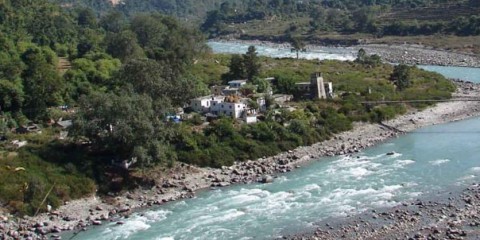
Uttarakhand, North India, Chamoli district, Hill station, Nature,Temple, Trekking
Karnaprayag is a town in Chamoli district of Uttarakhand. It is one of the Panch Prayag. It is situated at confluence of Pindar River and Alaknanda River. This is the religious site for Hindus. Journey of Ganga River starts from Karnaprayag plains. It is one of the best summer gateways. Climate of this place is so pleasant. Towering peaks in the surroundings of Karnaprayag are Mrigathuni, Trisul, Maiktoli, Narad Ghunti, Drona Giri and Nanda Devi.
Goddess Uma Devi Temple is most attractive and ancient temple in this town. This place is also famous for several adventure activities such as Kayaking, rafting, trekking etc. It is believed that in this place, Karna of Mahabharata worshipped to Sun God. This town is having mythological importance. Swami Vivekananda meditated in this place along with his disciples during his visit to Himalayas.
What to see in Karnaprayag:
Uma Devi Temple: This temple is dedicated to Goddess Uma Devi. Idol of this temple is taken out for a procession for every 12 years. It is the major attraction of this place.
Karna Temple: This is another attraction of this town. It is located just beside Uma Devi Temple. This temple is dedicated to Karna of Mahabharata. It is believed that he meditated at this place for 3 years for Sun God and acquired his impregnable shield.
Nauti Village: This place is famous for Nanda Devi Raj Yatra. This yatra would be conducted once in 12 years. It is one of the longest pilgrim tour covered by foot into tiring path bestowing lively natural beauty which can leave anyone mesmerised. It is believed that this village is home to Goddess Nanda. Procession had last taken place in 2012.
What to see around karnaprayag:
Gopeshwar: It is located 39kms away from Karnaprayag. Temples are the major attractions of this place. Gauchar fair is most famous fair in this area. Gopeshwar Attractions are Gopinath Temple, Snow covered hill, Mountain climbing, Trekking, Anasuya Devi Temple, Tungnath Temple and mountain climbing.
Gauchar: It is located 31kms away from the town. This is surrounded by mountains. In Uttarakhand it is one of the largest pieces of flatland. This place is acting as a halt to the Badrinath Temple. This place is well known for historic trade fair. Other attractions of this place are Paneshwer Shivalaya, Mata Kali Temple, Bhairavnath Mandir, Raul Devta Mandir.
Srinagar: This is the historical town in Himalayas. This place is famous for house boats, lakes and gardens. Dry frits and Kashmiri Handicrafts are also famous here. Srinagar Attractions are Dal Lake, Jama Masjid, Rainwari, Nagin Lake, Shankaracharya Temple, Shalimar Gardens, Hazratbal Mosque. It is located 68kms away from the town.
Getting to Karnaprayag: Karnaprayag is well connected through road ways. From Kotdwar, Dehradun, Haridwar, Pauri, Uttar Kashi, Tehri, Srinagar, Rishikesh, private and state run buses are available to reach this place. Nearest railway station is located at Rishikesh which is 172kms away from the town. From Jammu, Kotdwar, Dehradun, Mumbai, Delhi trains come to Rishikesh. Jolly Grant airport at Dehradun which is 190kms away from Karnaprayag. Taxis are available to reach Karnaprayag from this airport.
Getting around Karnaprayag: Best option to see this place is on foot. Taxis and buses are available to visit the surrounding places of Karnaprayag.
Best time to visit Karnaprayag: Karnaprayag welcomes the visitors throughout the year but best time to visit this place is between January to April.
Where to stay in Karnaprayag: Accommodations are very limited in Karnaprayag. Only budget and midrange hotels are available to stay in Karnaprayag.
Where to eat in Karnaprayag: As it is temple town only vegetarian food is available in Karnaprayag. Few hotels are having in-house restaurants those restaurants only serve non vegetarian food.
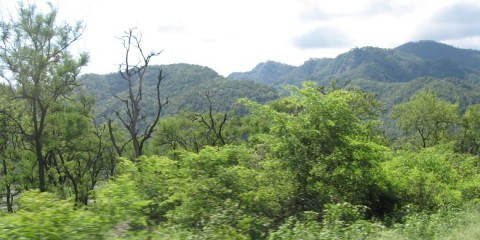
Uttarakhand, North India, Mountian Biking, Nainital, Nature, Orchards, River crossing, Temple, Trekking, Wildlife Sanctuary
Haldwani is a city in Nainital district of Uttarakhand. Along with Kathgodam this city forms Kathgodam Municipal Corporation. Once this place has plenty of Haldu trees. So this place is also known as Halduvani which means forest of trees. This place is located between hilly terrain of Indo Gangetic plain and Kumaon regions. In the northern region of India, Haldwani is one of the largest vegetable and food production centre. It also serves as a trading post. This place is famous for rich history and culture.
As per the historical records, this place was given to the Gyan Chand as gift by Mughals in 14th century. From all the places of India thousands of tourists come to this place every year for adventure activities. Several adventure activities conducts at this place such as bouldering, rock climbing, mountain biking, hiking, trekking. For the professional photographer this is the best place to capture the scenic beauty.
What to see in Haldwani:
Haidakhan Ashram: This is the best place to visit in Haldwani. Scenic beauty of this Ashram is most memorable one. It is located at the banks of Gaula River. Visitors will enjoy this place as plenty of caves and temples are located near this river.
Gaula Barrage: This is the best place for picnicking, sightseeing and camping. It is located on the banks of river Gaula. Actual purpose for the construction of this barrage is for irrigation but now this place is acting as best tourist spot.
What to see around Haldwani:
Sanjay van: This place is famous for bird watching and picnicking. It is located in Pantnagar which is 23kms away from Sanjay van.
Kali Chaur: It is located 12kms away from Haldwani. This is the most peaceful place. Visitors can enjoy this peacefulness. This temple is dedicated to Goddess Kali.
Nainital: It is located 30kms away from Haldwani. It has earned the epithet of Lake District of India. This place is famous for numerous lakes and green hills.
Naukuchia Tal: This place is famous for yachting, paddling, rowing. It is located 32kmss away from the city.
Bhimtal: It is located 28kms away from the city. Major attractions of this place are dam on Bhimtal Lake and Bhimeshwar Temple.
Ghorakhal: This temple is dedicated to Lord Golu. It is located 32kms away from the city.
Mukteshwar: This is a beautiful place surrounded by thick coniferous forest and fruit Orchards. It is located 35kms away from the city.
Corbet National Park: This is the India’s first national park. It is located along the Valley of Ramranga River. This park includes Sonanadi Wildlife sanctuary.
Getting to Haldwani: Haldwani is well connected through road and railways. From Kasauni, Mukteshwar, Nainital buses are available to reach the city. Haldwani railway station is connected to Kathgodam railway station. This kathgodam station is well connected to Lucknow, Dehradun, Kolkata and Delhi. To reach Haldwani, buses and taxis are available from both the stations i.e Kathgodam and Haldwani stations. Pantnagar airport is the nearest airport which is 27kms away from the city.
Best time to visit Haldwani: Best time to visit Haldwani is between November to May.
Where to stay in Haldwani: All budget, midrange and luxury hotels are available to stay in Haldwani. Best Midrange hotels are located in main market road. Budget hotels are available near railway station and luxury hotels are available at Kaladhungi Road.
Where to eat in Haldwani: Plenty of restaurants are available to eat in Haldwani. All the restaurants provide Continental, Chinese, North Indian cuisines. Best restaurants are available at Stadium road and Kaladhungi Road.
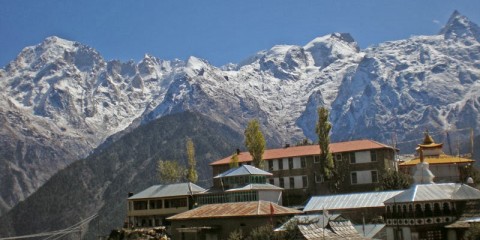
HP, North India, Caves, Fort, Hill station, Nature, Temple, Trekking, Valley, Water falls, Water Sports
Hamirpur is a town in Hamirpur district in Himachal Pradesh, India. It is mainly a hilly terrain. This was created as a result of trifurcation of Kangra district on 1st September 1972. Hamirpur is famous for cultural activities and history. Una is located on the west of Hamirpur; Mandi is located on the east, Bilaspur to the south and Kangra to its north. According to Puranas, this was a part of Jallandar (Trigarta Empire). Paragliding events and annual hang gliding are famous in this town. Visitors can enjoy angling, rock climbing, trekking, mountaining activities. Trekking is available only from April to October. Hamir Festival celebrates grandly. Every year this festival celebrates grandly in the first week of November.
What to see in Hamirpur:
Sujanpur Tihra: This is the major attractions of Hamirpur. It is the fort built by Raja Hamir Chand. Fort was having huge walls. Major attractions of this fort are Shrines and Paintings in the fort. This place acted as capital town to the Katoch rulers.
Nadaun: Palace in this place says the glory of Katoch rulers. It is one of the Shakti peeth temple. This is located on the banks of river Beas. River rafting is most famous in this place.
Deot Sidh Temple: This temple is dedicated to Baba Nayak. In the Dhaulagiri hills cave temple is located.
Other attractions of Hamirpur: Other attractions of Hamirpur are Kalpa Vriksha, Nirankari Ashram, Singh Maheshwari Temple and Chaura Devi Temple.
What to see around Hamirpur:
Naina Devi Temple: This temple is located 69kms away from the town. Naina Devi Temple is one of the Shakti Peethas of India. This temple was built by Raja Bir Chand. It is believed that Sati’s eye fell in this place.
Kangra: This is the best place for trekking lovers. It is located 75kms away from the town. Major attractions of this place are Al Hilal, Naam Art Gallery, Brijeswari Temple, Baijnath Temple, and Chamunda Devi Temple.
Dharmasala: Dharmasala is located in Kangra district of Himachal Pradesh. Major attractions of Dharmasala are Dal Lake, Himachal Pradesh Cricket Association Stadium, Billing Adventure, Tsuglagkhang. This place is situated 105kms away from the town.
Palampur: This place is famous for Tea Gardens. Other name is Tea Capital of North India. After Kullu and Manali this is famous honeymoon destination. It is located 66 kms away from Hamirpur.
Triund: This place is popular for adventure and trekking activities. It is located 98kms away from the town.
McLeod Ganj: This was the residential place of Dalai Lama, Tibetan Spiritual Leader. It is situated in Dhauladhar mountain range of Dharmasala region. This place is located 100kms away from the town.
Getting to Hamirpur: Hamirpur is well connected with road ways. From Pathankot, Chandigarh, Shimla, buses are available to reach to this place. Nearest railway station is Una which is 81kms away from the town. Chandigarh airport is the nearest airport of Hamirpur which is 187kms away. This airport is well connected with Indore, Kullu, Amritsar, Bangalore, Mumbai and Delhi. Private vehicles and taxis are available to reach to Hamirpur.
Getting around Hamirpur: Autos, Buses and Taxis are available to visit the surrounding places of Hamirpur.
Best time to visit Hamirpur: Best time to visit Hamirpur is between September to June.
Where to stay in Hamirpur: Very limited hotels are available to stay in Hamirpur. All these hotels are budget and midrange hotels. Visitors cannot expect luxury accommodations. Few guest houses are also available.
Where to eat in Hamirpur: Restaurants are very limited in this place. Existing restaurants offer both international and Indian cuisines. In Bhota Road best cuisines of non vegetarian are available. Best vegetarian food is available in the restaurants located at Gandhi Chowk and Hira Nagar.
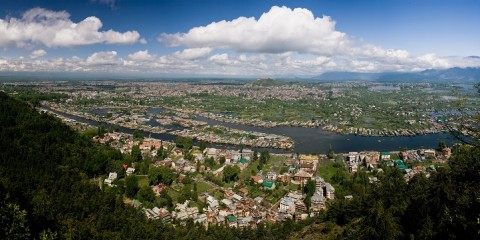
Jammu & Kashmir, North India, Boating, Fort, Hill station, House boats, Masjid, Musuem, Nature, Trekking, Valley, Water falls, Wildlife Sanctuary
Srinagar is summer capital of Jammu and Kashmir, India. Srinagar consists of two words Sri and Nagar. Sri means Lakshmi and Nagar means city. This place is famous for house boats, lakes and gardens. Dry frits and Kashmiri Handicrafts are also famous here.
What to see in Srinagar:
Dal Lake: Deodar tree is major attractions in this place. Near the lake a small Shiva Mandir is located. Base camp for the trekkers is organised here. People believe that if they take a dip in the lake they will be blessed by Lord Shiva.
Jama Masjid: This is oldest mosque of Srinagar. This was destroyed and reconstructed several times. Ancient mughal architecture style can be seen on this mosque. 370 pillars can be seen in this masjid.
Rainwari: This is surrounding by beautiful mountains. Gurudwara in this place was constructed by Guru Hargobind Sahib Ji. He was the 6th guru of Sikh.
Nagin Lake: This is also known as Jewel in the Ring. Major attractions of this lake are Shikaras and House Boats.
Shankaracharya Temple: This was constructed by the son of Emperor Ashoka in 200 BC. It is located on the top of the hill Shankaracharya hill. From this hill beauty of Pir Panjal mountain ranges can be seen.
Shalimar Gardens: This was built by Jahangir for his wife Nur Jahan in 1616. Major attractions of this garden are a canal, fountains and 4 terraces.
Hazratbal Mosque: This was constructed with white marble. This mosque is having large mountains in the backdrop. Kashmiri and Mughal architecture styles can be seen on the mosque.
Other attractions in Srinagar: Other attractions in Srinagar in Sri Pratap Singh Museum, Hari parbat Fort, Chinar Bagh, Kathi Darwaza, Nasim Bagh, Tomb of Madin Sahib, Dastgir Sahib Shrine, Pathar Masjid, Chashme-e- Shahi Gardens, Majid of Akhund Mulla.
What to see around Srinagar:
Shupiyan: It is located 48kms away from Srinagar. This place is also known as Apple town of Kashmir. Apples exports from this place across the country. Other attractions of this place are Nagi Rai Nag, Shahlatoo, Lawahinthora, Kowsernag, Kungwatan, Jama Masjid, Aharbal waterfalls.
Burzahom: It is located 16kms away from the city. This place is famous for ancient artefacts belong to 5000 years ago.
Dachigam Wildlife sanctuary: This was declared as national park in 1951. Major attractions of this place are Blue magpie, Himalayan griffon, Wild boar, Hill fox etc.
Amarnath Cave: It is one of major attractions of this place. This is dedicated to Lord Shiva. Length of this cave is 60feet, height is 15 feet and width is 30feet.
Mughal Garden: It is located 13kms away from the city. This garden is famous for terraced Lawns, flowerbeds and fountains.
Other attractions near Srinagar: Other attractions near Srinagar are Indira Gandhi Tulip Garden, Nishat Bagh, Manasbal Lake, Rozabal Shrine, Wullar Lake, Charar-i-Sharif, and Sangin Darwaz.
Getting to Srinagar: Srinagar is well connected with road, railways and airways. From the cities such as Nagpur, Gurgoan, Hyderabad, Pune, Kolkata buses are available to reach this place. From Ahmedabad, Bangalore, Delhi, Gurgoan etc trains come to this place. From Hyderabad, Kolkata, Ahmedabad, Bangalore, Indore etc flights come to this place.
Getting around Srinagar: Buses, Taxis, Jeeps, private vehicles are available to visit the surrounding places of Srinagar.
Best time to visit Srinagar: Srinagar welcomes visitors throughout the year.
Where to stay in Srinagar: Plenty of accommodations are available to stay in Srinagar. All range of hotels is available. Best hotels in Srinagar are Swiss Hotel Kashmir, City forest by Royal Khazir, Imperial Lake view, Shabnam Hotel.
Where to eat in Srinagar: Plenty of restaurants are available to eat in Srinagar. North Indian, South Indian, Chinese, continental cuisines are available in all the restaurants.
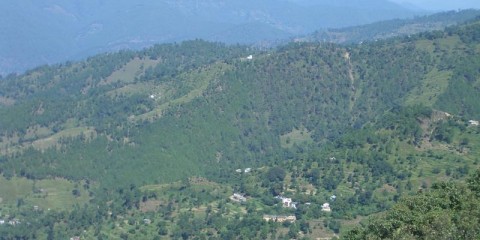
Uttarakhand, North East India, Hill station, Hot Springs, Lake district of India, Mountian Biking, Musuem, Nainital, Nature, Trekking, Valley, Water falls, Water Sports, Wildlife Sanctuary
Sattal is located in Lower Himalayan Range near Bhimtal town of Nainital district in Uttarakhand, India. This place consists of 7 lakes. All the lakes are interconnected. Names of these 7 lakes are Purna Tal, Garud Tal, Sukh Tal, Nal Damyanti Tal, Laxman Tal, Sita Tal and Rama Tal. Most beautiful migratory birds can be seen near these lakes. These birds come to this place to protect themselves from cold in the Himalayan Region. In this region, 20 species of mammals, 11000 species of moths and beetles and 525 species of butterflies can be seen. During the British rule tea plantation is most famous in this place. Most famous festivals of this region are Vasantotsav, Nandadevi fair. Other attractions of this place are Rock climbing, mountain biking, rappelling, Trekking and many more activities.
What to see in Sattal:
Seven Lakes: Major attraction of this place is 7 lakes. All are interconnected to each other. Due to these lakes area is named as Town of Seven Lakes. All the lakes replenished by underground springs.
Methodist Ashram: To introduce Christianity in Kumaon region this ashram was established by E Stanley Jones. Within the ashram visitors can see St.Johns Church. This church is the best example for colonial architecture style.
Butterfly Museum: This was established by Federic Smetacek. It is located inside the premises of Sattal Methodist Ashram. This museum consists of 1100 species of insects and 2500 species of butterflies.
Subhash Dhara: Its scenic location along with crystal clear water attracts large number of tourists. These are natural springs.
What to see around Sattal:
Naukuchital: In the Nainital district this is the picturesque hill station. This place is famous for 9 concerned lakes. It is located 13kms away from Sattal.
Bhimtal: Bhimtal is a part of Lake District of India. This place is famous for its lakes. Other attractions of this place are Dam on Bhimtal Lake and Bhimeshwar temple which was constructed in17th century. It is located 8kms away from Sattal.
Nainital: It is located 22kms away from Sattal. This place is well known for numerous lakes and green hills. It has earned the epithet of Lake District of India. Nainital is surrounded by mountains. Hundreds of ancient temples and mountain peaks can be seen here.
Haldwani: It is located 17kms away from Sattal. Pleasant climate and Scenic beauty attracts the tourists to come to this place again and again.
Getting to Sattal: Sattal is well connected through roadways. State run and private buses come to this place from Uttarakhand and from several other surrounding states. Nearest railway head is located at Kathgodam which is located 36kms away from Sattal. From the cities such as Howrah, Jammu, Dehradun, Delhi trains come to Kathgodam. Taxis are available from the railway station to reach Sattal. Nearest domestic airport is Pantnagar airport. Nearest international airport is located at Delhi.
Getting around Sattal: Best way to explore the place is on foot. Buses and Taxis are available to visit the surrounding places of Sattal.
Best time to visit Sattal: Before reaching to any place knowing best time to visit that place is essential. Knowing weather conditions beforehand is also necessary. Best time to visit this place is during the months of March to June and between September to November.
Where to stay in Sattal: All ranges of hotels such as budget, midrange and luxury hotels are available to stay in Sattal. Few resorts along with KMVN rest houses are also available to stay in Sattal. Best hotels in Sattal are County Inn Sattal, V Resorts, and Langdale Manor.
Where to eat in Sattal: Plenty of restaurants are available to eat in Sattal. Almost all the restaurants serve North Indian cuisines. Very few restaurants serve Chinese and South Indian Cuisines.
Parwanoo is a town located in Solan district of Himachal Pradesh. This place is most famous for its Orchards. Plenty of peaches and apples grown in this place. Parwanoo is the best place for natural walks and trekking. From this place Shivalik Hills can be seen. These hills look so beautiful from this place. Other major attractions of this place are cable car rides. To reach kasauli and Pinjore this is the entry point. Fruit based products such as pickles, marmalades; jams are most popular at this place. These are worth buying too.
What to see in Parwanoo:
Subathu: Major attraction of this place is Gorkha Fort. Other name of this fort is Arki Fort. Now only ruins of this fort can be seen here. This is the cantonment area.
Timber Trail: This is the major attraction for the tourists of Parwanoo. Cable cars are used to see beauty of this place. Loading capacity of these cabs is 10 to 12 people. Form this cabs Kaushalya Valley can be seen most beautifully.
Sri Balaji Temple: Till 1988 this temple was buried in the earth. It was the most ancient temple. After the excavation of this temple importance to Parwanoo increased. This is located at Bhaito Ki Ser village which is 4kms away from the city.
Fruit Orchards: Major attraction of this place is fruit Orchards. Plenty of industries depend on these orchards. Different Products of these industries are Jellies, Fruit Pulp, and Jams. Visitors can enjoy pleasant weather and beautiful scenery. This is the best place for evening walks.
What to see around Parwanoo:
Kalka: It is located just 3kms away from Parwanoo. This town is named after Goddess Kali. Major attractions of this town are Kali Mata Temple. This temple is dedicated to Goddess Kali. It is believed that Pandavas visited this place during their exile.
Pinjore: It is located 10kms away from the town and situated at confluence of Jhajjar River and Kaushalya River. Plenty of antiquities and sculptures can be seen here. All this belongs to 12th century. Other attractions of this town are Mughal Gardens. Other name of this garden is Yadavindra Gardens.
Dharampur: It is located 22kms away from the town. Best treatment for tuberculosis can avail from the hospitals of this place. Mansa Devi Temple is the major attraction of this place.
Mansa Devi Temple: This is dedicated to Goddess Manasa Devi. During Navratri Period thousands of devotees come to this place. This was built between 1811 and 1815 by King of Manimajra, Maharaja Gopal Singh. It is located 24kms away from the town.
Dagshai: It is one of the old military settlements of British troops in India. Prison can be seen here. This was used to imprison the Irish solider in 1920. It is located 28kms away from the town. This hill station is acting as cantonment area for Indian Army.
Getting to Parwanoo: Only way to reach this place through road. From Chandigarh and Delhi buses come to this place. Nearest railway station is located at Kalka which is 5kms away from Parwanoo. From Mumbai, Kolkata, Delhi, Amritsar, trains come to this place. Nearest airport is at Chandigarh which is 30kms away from Parwanoo. From Indore, Kolkata, Srinagar, Bangalore, Dharmasala, Mumbai, Delhi flights come to this place.
Getting around Parwanoo: Buses and Taxis are available to reach the surrounding places of Parwanoo.
Best time to visit Parwanoo: Best time to visit this place is between March to October.
Where to stay in Parwanoo: Very limited hotels are available. All these hotels are budget hotels.
Where to eat in Parwanoo: Only limited restaurants in Parwanoo. Around the town plenty of restaurants can be seen. All these restaurants serve Chinese, Continental and north Indian cuisines.
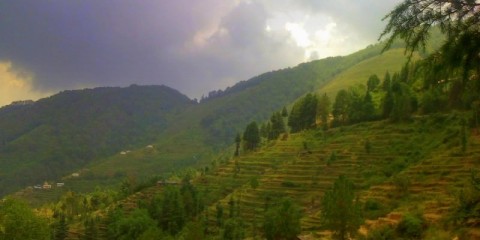
Uttarakhand, North East India, Fruit Bowl of Kumaon, Hill station, Mountian Biking, Nature, Temple, Trekking, Valley, Water falls
Ramgarh is a hill station in Uttarakhand. For the Uttarakhand People this is best place for summer recreation. This is located at the height of 1789m above the sea level. Ramgarh is most famous for apples, pears, apricots Orchids. This place was first found by Britishers. They have developed this region as cantonment to the British army. Bungalows and hotels of this place can be seen in Britishers style. Colonial architecture can be seen in this place. Other name of this place is Fruit Bowl of Kamaon.
Several famous personalities of India loved this place. Rabindranath Tagore always memorise about the beauty of this place. He had written several songs when he visited to this place. Narain Swami established ashrams in this place. He is a notable social activist. Harela is the famous festival celebrates at this place. Other festivals such as Basant Panchmi and Makar Sankranti also celebrate very grandly.
What to see in Ramgarh:
Ashrams: Ashrams are major attraction of this place. These are built by great social activist Narain Swami.
Library of Mahadevi Varma: Library in Ramgarh is especially dedicated to Mahadevi Varma. He is most famous writer. He got an idea of writing famous story Lachma in this place.
Giriji Devi Temple: Apart from Library and Ashram this place is also famous for Giriji Devi Temple. This temple is dedicated to Giriji Devi.
Other attractions of Ramgarh: Other attractions of Ramgarh are outdoor activities. Those outdoor activities are Camping, River Crossing, and Mahseer Fishing. For fishing forest department permission is required. Adventure activities also conducts at this place namely mountain biking, Rappelling, Rock Climbing.
What to see around Ramgarh:
Nathuakhan: For nature walks and meditation this is the best idle place. This place is blessed with picturesque hilly terrains and lush green valley. It is located above sea level of 6365 feet which is 6kms away from Ramgarh.
Sattal: Other name of this town is Town of Seven Lakes. It is located 35kms away from Ramgarh. This place is most famous for fresh water lakes. Seven lakes are among the few unspoilt fresh water bodies in India.
Bhimtal: It is located 32kms away from Ramgarh. This place is most famous for its lake. Name of this town is named after the lake Bhimtal. Other attractions of this town are dam on Bhimtal Lake and Bhimeshwar temple. This temple belongs to 17th century.
Nainital: It is located 34kms away from Ramgarh. This place is known for plenty of lakes and green hills. Due to this place, this place is named as Lake District of India. Amazing view of several peaks are other attractions of this place. Hundreds of ancient temples can be seen here.
Getting to Ramgarh: Ramgarh is well connected through road. From Nainital and Naukuchital buses are available to reach this place. From Delhi government buses come to this place regularly. Nearest railway station is located at Kathgodam. From the cities such as Jammu, Kanpur, Howra, Dehradun, Ranikhet, Delhi trains halt at this station. Nearest domestic airport is located at Pantnagar. Taxis are available to reach to Ramgarh from this airport.
Getting around Ramgarh: Hill station can be seen on foot. Buses and taxis are available to visit the surrounding places of Ramgarh.
Best time to visit Ramgarh: It is essential to known the best time before visit any place. Best time to visit this place is between March to May.
Where to stay in Ramgarh: Plenty of accommodations are available to stay in Rangarh. But all are budget and midrange hotels. Luxury hotels cannot be seen here. KMVN guest house is also available to stay in Ramgarh.
Where to eat in Ramgarh: Plenty of restaurants are available to eat in Ramgarh. Restaurants attached with hotels are the best option to have food in Ramgarh.
Gopeshwar is located in Chamoli district of Uttarakhand. Temples are the major attractions of this place. Gauchar fair is most famous fair in this area. This is the biggest event of this place. People from all over Uttarakhand come to this place for this annual fair. Other attractions of this town of this town are mountain climbing and trekking.
What to see in Gopeshwar:
Gopinath Temple: Gopeshwar place is famous for Lord Shiva temple i.e Gopinath Temple. According to the Hindu Mythology, Once there was a cow living in this place. That cow use to give milk daily to Shiva lingam which was located in this place. This was seen by one king. He constructed a temple in that place. Name of that king is Saggar. Historians state that town got this name from Lord Krishna. He made this region his dwelling place for short period of time. Gopinath temple is famous for its architecture style. This temple consists of 24 doors made up of 8 different metals.
Other attractions of Gopeshwar: Other attractions of Gopeshwar are temples of Anasuya Devi, Tungnath, and Rudranath. Snow covered hill is other attraction of this place.
What to see around Gopeshwar:
Nandaprayag: It is located 18kms away from Gopeshwar. This is one of the Panch Prayags on the Alakananda River. It lies at confluence of Alakananda River and Nandakini River.
Kedarnath Temple: It is located 93kms away from Gopeshwar. This temple was founded by Adi Shankaracharya, 1000 years ago. It is dedicated to Lord Shiva. According to Hindu Mythology, Pandavas come to this place to wipe off the sins after the war with Kouravas. At that time Lord Shiva was so angry and converted himself into a bull and dug in this place.
Ukhimath: This village is famous for Lord Kedarnath temple. During the winter seasons snowfalls is more so this place is known as winter seat for Lord Kedarnath. Temples of Anirudh, Usha, Parvati and Shiva are also famous here. It is located 69kms away from the town.
Panch Kedar: It is located 39kms away from the town. Tunganath, Rudranath, Kedarnath, Kalpeshwar and Madhyamaheswar included in Panch Kedar. Trekking is essential to reach all these places. Kalpeshewar trekking opens to the public throughout the year to the public.
Auli: This is most popular winter destination of Uttarakhand. From this place visitors can have best view of the Himalayan Mountain range. It is located 70kms away from Gopeswar.
Getting to Gopeshwar: Gopeshwar is well connected with road ways. From Uttarakhand buses are available to reach this place via Chamoli. From Gopeshwar, Srinagar, Ukhimath, Rudraprayag, Uttarkashi, Pauri, Rishikesh buses come to Chamoli. Nearest railway station is located at Rishikesh which is 210kms away from Gopeshwar. Taxis and buses are available to reach Gopeshwar from the railway station. Jolly Grant airport is the nearest airport of Gopeshwar which is located 226kms away. This port is well connected to Chandigarh and Delhi. From this airport taxis are available to reach Gopeshwar.
Getting around Gopeshwar: Gopeshwar is a small town; it can be seen by having walking though the town. Taxis are available to visit the surrounding places of Gopeshwar.
Best time to visit Gopeshwar: Maximum temperature of this place is 30 degrees Celsius in summer. But during the winter season temperature reaches to Zero degrees. So best time to visit Gopeshwar is in the months of July and August.
Where to stay in Gopeshwar: Few hotels are available in Gopeshwar. All the hotels are budget and midrange hotels. Tourism department of Uttarakhand is maintaining rest house in Gopeshwar with all the amenities.
Where to eat in Gopeshwar: Restaurants, Dhabas and Street food are available to eat in Gopeshwar. Only vegetarian food is available in the town. Only highway Dhabas offer non vegetarian food.
Agartala is the capital of Tripura. Agartala is derived from two words Agar and Tala. Agar means a kind of oily valuable perfume tree and Tala means a store house. In this region, visitors can see Agar trees abundantly. Several dynasties ruled this place namely Loknath Jivandharan, Dharmapha, Drikpati, Chitrarath, Manikya dynasties. This place got important after Maharaja Krishna Manikya shifting his capital to this city. This city is famous for lakes, temples, hills, gardens, Palaces. Most prominent festivals are Durga Pooja and Saraswati Pooja. Main business centres are Kaman Chowmuhani and Gol Bazaar.
What to see in Agartala:
Buddha Temple: It is located at the centre of the city which was built in 1946. Two idols of this temple are Lord Buddha and Bodhisattva. Within the temple premises beautiful garden welcomes the visitors.
Kunjaban Palace: This was a recreation place to King Birendra Kishore Manikya which was built in 1927. Currently this is acting as official Governors residence of Tripura.
Ujjayanta Palace: This was built during 1899- 1901 by Maharaja Radhakishore Manikya. Earlier this was the royal Palace but now this is acting as meeting place of Tripura Legislative Assembly. It was built in Indo Greek Style.
State Museum: This was built in 1970. Museum consists of 4 galleries namely Tribal culture, Indian Sculpture, Painting and archaeology. Major attraction of this museum are Jewellery, oil paintings, stone inscriptions, Bronze image, Textiles, Copper Inscriptions, Terracotta, Sculptures, Coins.
Tribal Museum: This museum gives details of 19 tribes of Tripura.
ISKCON Math Chowmuhani: It is located at Banmalipur, Agartala. To improve the life of Tripura people, lot of work had done by this Math. It always engaged in spreading Krishna’s consciousness.
Jagannath Temple: Temple is in orange colour. This was built by Manikyas. Arabic and Hemadpanthi style can be seen here.
Other attractions of Agartala: Other attractions of Agartala are Mariyam Nagar Church, Gedu Miar Maszid, Kamaleswari Temple, Umamaheswar Temple, Rabindra Kanan, Domboor Lake.
What to see around Agartala:
Venuban Vihar: It is located just 2kms away from Agartala. Idol of Lord Buddha was brought to India from Burma.
Kamala Sagar: It is located 24kms away from the city. At the banks of this lake Goddess Kali Temple is situated. This is the best picnic spot for Tripura. It is a vast lake at border of Bangladesh.
Chaturdasa Devata: Major attraction of this temple is image of Gods and Goddess called Chaturdasa Devata. This image consists of 14 heads. Temple also consists of Garbhagriha and Nat Mandapa. It is located 7kms away from the city.
Neermahal Water Palace: It was built in the centre of the Lake Rudrasagar by Kishore Manikya in 1930 as a summer resort.
Other attractions near Agartala: Other attractions near Agartala are Tripurasundari Temple, Chittangong Hills, Chowda Devta Temple, Sepahijala Nature Reserve.
Getting to Agartala: Agartala is well connected with road, rail and air ways. From Kolkata, Guwahati buses are available to reach Agartala. Only few trains come to Agartala station. Nearest railway head is located at Kumarghat which is 160kms away from Agartala. Agartala airport is well connected to Kolkata and Guwahati.
Getting around Agartala: Cycle rickshaws are available to see the places in Agartala. Autos, Taxis and buses are available to visit the surrounding places of Agartala.
Best time to visit Agartala: Best time to visit this place is between October to March.
Where to stay in Agartala: All range of hotels are available. But luxury hotels are very few in the city. Government guest houses are also available to stay. Cost of budget hotels is ranging between Rs.200 to Rs.500. Luxury hotels cost is ranging between Rs.2500 to Rs.4000.
Where to eat in Agartala: Very limited restaurants in Agartala. Hotels are offering Continental, Chinese and Indian cuisines. Bengali cuisines and sweets are most popular in Agartala.
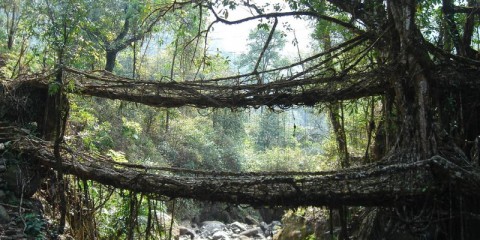
Meghalaya, North East India, Caves, Hill station, Musuem, Nature, Temple, Trekking, Valley, Water falls, Wildlife Sanctuary
Shillong is the capital of Meghalaya. This is the home to Khasis. Britishers influence is more in this place. Even today visitors can find British influence in language, lifestyle and architecture. Traditions of both Europe and India can be seen here.
What to see in Shillong:
Golf Course: One of the oldest Golf Courses in the country. This was started in the year 1898 at Laban. Initially this was started with the course of 9 holes; in 1924 it was transformed to 18 holes.
Police Bazaar: This is popularly known as PB. Plenty of hotels, restaurants, shops are located here. This is the best place for the shopping lovers.
Don Bosco Museum: This museum provides information about north eastern states such as Tripura, Nagaland, Mizoram, Manipur, Meghalaya, Arunachal Pradesh and Assam. Best collection of weapons, photographs, ornamentation, handicrafts, accoutrements, attires, Regional artwork can be seen here.
Shillong Peak: Thousands of tourists come to this place every year. According to the history Shillong city is named after this peak. One of the attractions of this place is Indian Air Force Radar Station. Cameras are not allowed due to security reasons. This peak provides breath taking view of Shillong city and Himalayan Ranges.
Lady Hydari Park: This is one of the major attractions of the Shillong. This is dedicated to first lady of the province, Lady Hydari. She was the wife of Governor of Assam. Major attraction of this park is huge variety of orchids and local flowering plants. This park consists of mini Zoo also. In this zoo 140 reptiles, 73 species of birds can also be seen. This park is in Japanese style.
Other attractions of Shillong: Other attractions of Shillong are Elephant Falls, Wards Lake, Meghalaya State Museum, Wankhar Entomology Museum, All Saints Church, Botanical Survey of India Orchidarium, Shillong Cathedral, Laitlum Canyons, The Meghalaya Butterfly Museum.
What to see around Shillong:
Mawsynram: This place is located 54kms away from Shillong. It is the wettest place on the earth. Major attractions of this place are lush waterfalls, abundant greenery, clear blue skies and fresh air. Other attractions of this place are Mawjymbuin Cave with huge Shivaligam.
Spread Eagle Falls: It is located 6kms away from the city. In the entire Shillong, Spread Eagle Falls are the widest falls. Other name of this falls is Sati falls. People can enjoy Sparkling Waterfalls.
Mawplang: Most famous forest groves are located here. This forest is also known as sacred forest. Castanopsis Kurzii Trees are majorly seen in this forest. This place is considered as natures own museum. Major attractions of this museum are orchids, fern allies, Pipers, Aroids. It is located 25kms away from Shillong.
Sohpetbneng Peak: Bird’s eye view of city of Shillong and dense forest is possible from this peak. It is believed that Hynniewtrep tribe of Meghalaya grew a tree at this peak which acted as a ladder between them and a God. It is located 20kms away from shillong.
Other attractions near Shillong: Other attractions near Shillong are Umiam Lake, Sweet Falls, Beadon Falls, Bishop Falls, Mawlynnong Waterfalls, Mawjymbuin Caves, David Scott Trail, and Diengiei Peak.
Getting to Shillong: This place is well connected with road, railways and airway. From the cities such as Hyderabad, Chennai, Bangalore, Delhi, buses and trains are available to reach this place. From Patna, Mangalore, Ranchi, Jaipur flights are available to reach this place.
Getting around Shillong: Buses, Private vehicles, Taxis are available to visit the surrounding places of Shillong.
Best time to visit Shillong: Visitors can reach this place throughout the year.
Where to stay in Shillong: All range of hotels such as Budget, Midrange and Luxury Hotels are available to stay in this place.
Where to eat in Shillong: Plenty of restaurants are available to eat in Shillong.
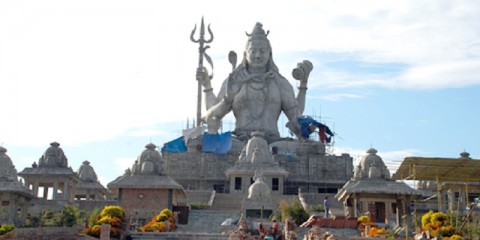
Sikkim, North East India, Guru Padmasambhava, Hot Springs, Kanchendzonga, Namchi Monastery, Nature, Tea Garden, Temple, Trekking, Valley, Water falls, Wildlife Sanctuary
Namchi is the capital of district Sikkim of Sikkim. Namchi is derived from two words Nam and Chi. Nam means Sky and Chi means High. Major attraction of this place is Padmasambhava or Guru Rinpoche statue. This statue is world’s largest statue belongs to the saint of Sikkim. Namchi place is famous for Bio-diversity, Scenic locals and Buddhist monastery. This place offers the view of Kanchenjunga. This is the 3rd highest mountain in the world. To promote tourism, Namchi Mahotsav will be held every year. Worth buying things in Namchi are Craft items and Souvenir items.
What to see in Namchi:
Namchi Monastery: This is the major attraction of this town. It is located at Ahaley locality. This is well known for Buddhist monastery. Original name of this monastery is Decchen Choyling Gumpa.
Guru Padmasambhava Statue: This place is popularly known as Wish Fulfilling hill. In the world this is the highest statue whose height is 135 feet.
What to see around Namchi:
Solophok: This place is located 5kms away from Namchi. Major attractions of this site are Big statue of Lord Shiva and Chota Char Dham Pilgrimage.
Rock Garden: It is located 5kms away from the town. This garden offers the best view of Mount Kanchendzonga. Major attraction of this place is rare species of trees, flowers and Plants.
Helipad: This offers the best view of Mount Kanchendzonga. It is located very close to Temi tea garden which is 5kms away from the town. This is the only tea garden in Sikkim.
Char Dham: Char Dham is located on Solophok hill which is 5kms away from the town. People believe that persons who visit this place will wash off their sins.
Temi Tea Garden: This is the only tea garden in Sikkim. Area covered by this garden is 435 acres. Annual turnover of this garden is 100 million tonnes. This was established in 1969.
Ralong Monastery: This was built to commemorate the successful Pilgrimage of the 4th chogyal to Tibet. It is located 6kms away from Ravangla.
Doling Gumpa: This is the most beautiful monastery. It was built by Nyimpa Followers.
Maenam Wildlife Sanctuary: It is situated above the Tendong hill. This place is famous for flora and fauna. Trekking activity is the other attraction near this place.
Borong and Ralong Hot water Springs: Natural springs are said to have curative powers. It is located 7kms away from the town. For overnight stay huts are available.
Rimbi Waterfalls: During the summer seasons tourists rush is more near these waterfalls. This is the best picnic place.
Getting to Namchi: Namchi is well connected through road ways. From the cities such as Pelling, Yukosom and Gangtok buses are available to reach this place. Nearest railway station is at Siliguri and New Jalpaiguri. From the cities such as Patna, Ranchi, Puri, Trivandrum, Bangalore trains come to New Jalpaiguri. Bagdogra is the nearest airport.
Getting around Namchi: Private Jeeps, Taxis and buses are available to visit the surrounding places of Namchi.
Best time to visit Namchi: Best time to visit Namchi is from mid February till the end of May and mid September till the end of December.
Where to stay in Namchi: Plenty of hotels are available to stay in Namchi. Temperature in Namchi is always cool so air conditioned rooms are not essential in Namchi. 24 hour travel information counter is available in all the hotels.
Where to eat in Namchi: Very limited restaurants are available to have food in Namchi. Almost all the restaurants serve only non vegetarian. Vegetarian is available on demand. Famous food of this place is Pork and other meat items.
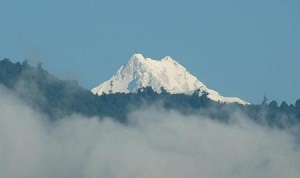
Sikkim, North East India, Hill station, Musuem, Nature, Temple, Trekking, Valley, Water falls, Wildlife Sanctuary
Gangtok is a hill resort and capital of Sikkim. Largest industry in Gangtok is hospitality. At the end of 19th century, Tibetans was defeated by Britishers. Then Gangtok became a major stopover in the trade between Tibet and British India.
What to see in Gangtok:
Hanuman Tok: This one of the major attractions of Gangtok. Army department is managing this temple. Height is 7200feet.
Namgyal Institute: This is a Tibet museum which was inaugurated in 1958 by Jawaharlal Nehru. Major attractions of this museum are ancient manuscripts, wide collection of thangkas, statues, Tibetan works.
Deorali Orchid Sanctuary: Huge collection of Orchids can be seen here. In total there are 454 varieties of Orchids. Out of which 200 can be seen here.
Do-Drul Chorten Stupa: This was built in 1945 and it is located adjacent to Tibetology Institute. Prayer wheels on the stupa have a holy inscription engraved on it as Om Mani Padma Hum.
Tashi Viewpoint: This is the best place to enjoy beautiful view of Mount Kanchenjunga.
Tsuk La Khang Monastery: This is located inside the Royal Palace. Major attractions of this place are figure of snow lion’s head, Wooden Sculptures, Huge collection of Buddhist Scripture works.
White Hill: This is a two storied architecture. It is a permanent venue for Flower show held in Sikkim.
Ban Jhakri Falls: This is one of the attractions of Gangtok. It is the best place for Jogging and morning walk. Ethic sculptures can be seen here.
Mt.Katao: This is the best place for the people who want to have experience of snow. Prior permission from Indian army is essential.
What to see around Gangtok:
Enchey Monastery: This is 200 years old monastery which is located 3kms away from the city. It is an important Nyingma Sect of Tibetan Buddhism. This was constructed by Lama Druptab in 1909.
Ganesh Tok: This is located 7kms away from Gangtok. Lord Ganesha is worshipped here. It is so small only one person can go inside.
Tsomgo Lake: This is located in East Sikkim which is 38kms away from Gangtok. This is the holy lake for the Sikkim people. To visit this place Inner Line Permit is essential from the police. Entire Lake gets frozen during the winter season.
Himalayan Zoological Park: This is located 3kms away from Gangtok. For the wildlife lovers this is the best place. Major attractions of this place are Himalayan Black bear, Barking deer, Musk Deer, Blue sheep, Red Panda.
Kyongnosla Alpine Sanctuary: This is located 31kms away from Gangtok. Wide variety of flora and fauna can be seen here. Medicinal plants also can be seen here. Major attraction of this sanctuary is Rhododendron, Rare Panax, Gentians, Primulas etc…
Other attractions near Gangtok: Other attractions near Gangtok are Nathula Pass, Rumtek Monastery, Changu Lake, Ranka Monastery, Tashiding Monastery, Saramsa Garden, Fambong La Wildlife Sanctuary, Jawaharlal Nehru Botanical Garden, Kabi Lungchok.
Getting to Gangtok: Gangtok is well connected through Road way and Railway. From the major cities such as Patna, Hyderabad, Bangalore, Kolkata, Chennai, Ahmedabad, Nagpur etc buses and trains are available to reach this place. Nearest airport is located at Bagdogra which is 124kms away from the city.
Getting around Gangtok: Private vehicles, Buses, cars are available to visit the surrounding places of Gangtok.
Best time to visit Gangtok: Visitors can come to this place throughout the year. Snowfall can be experienced during the winter season. Best time to visit this place is between September to June.
Where to stay in Gangtok: Plenty of accommodations starting from budget hotels to luxury hotels are available here. Cost of Budget hotels is Rs.795 and cost of luxury hotels is Rs.4500.
Where to eat in Gangtok: Plenty of restaurants are available to eat in Gangtok. Best restaurants found in MG Marg.
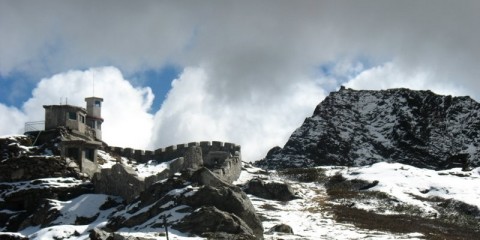
Sikkim, North East India, Hill station, India China Border, Mountain Passes, Musuem, Nature, Trekking, Valley, Water falls, Wildlife Sanctuary
Nathu La is an important Himalayan pass in India. Nathu La is derived from two words Nathu and La. Nathu means Listening and La means Pass. This is located 54kms from Gangtok which is in Sikkim. Between India and China there are 3 open trading borders. Nathu La is one of the trading Borders. During the summer season tourists rush is more. During 1873, Deputy Commissioner of Darjeeling made a survey laying stress on strategic importance of mountain passes between Tibet and Sikkim. At that time potential of Nathu La came to know to the people. This was opened for trade in 1894.
In September 1967, Chinese and Indian soldiers fought against each other for 6 days in Nathu La. After that this place was closed till 2006. This place was reopened on 71st birthday of 14th Dalai Lama. During the years of Nathu La closed, only Chinese post man was allowed to enter into the borders to handover letters from either side of the border.
What to see in Nathu La:
Tsomgo Lake: This is located in East Sikkim which is 38kms away from Gangtok. This is the holy lake for the Sikkim people. To visit this place Inner Line Permit is essential from the police. Entire Lake gets frozen during the winter season. Before 1962, Caravans of mules transferred goods through this route.
Nathula Pass: It is located between Indo Chinese Border which passes through Tsongo Lake. Earlier this was the trade route between Indian and Tibetan Merchants. Throughout the year this is covered with snow. In 1950, huge number of people migrated from Tibet to India through this pass. Foreign tourists are not allowed. Indian are allowed only on Wednesday, Thursday, Saturday and on Sunday with special permission. Only specific vehicles are allowed to pass on selected days. This border protected by Chinese soldiers. Visitors are not allowed at international border.
Flora and Fauna: Flora and Fauna is one of the major attractions of Nathu La. This region has only 4 months growing season. In that season Aconitum, Primula, Pedicularis, Meconopsis are grown abundantly. Major attractions of this place are Ruddy Shelduck, Golden Eagle, Raven, Tibetan Snowcock, Tibetan Wolf, Snow Leopard, and Tibetan Gazelle. During the monsoon season medicinal shrubs and grasses grow abundantly.
What to see around Nathu La:
Gangtok: This is the best place to view the beauty of Kanchenjunga. Major attractions of this place are Hanuman Tok, Namgyal Institute, Deorali Orchid Sanctuary, Do-Drul Chorten Stupa, Tashi Viewpoint, Tsuk La Khang Monastery, White Hill, Ban Jhakri Falls, and Mt.Katao.
Namgyal Institute: This is a Tibet museum which was inaugurated in 1958 by Jawaharlal Nehru. Major attractions of this museum are ancient manuscripts, wide collection of thangkas, statues, Tibetan works. It is located 37kms away from Nathu La.
Getting to Nathu La: Before reaching to Nathu La visitors has to reach to Gangtok. Gangtok is well connected with road and railway. From the major cities such as Patna, Hyderabad, Bangalore, Kolkata, Chennai, Ahmedabad, Nagpur etc buses and trains are available to reach Gangtok. Nearest airport is located at Bagdogra which is 84kms away from Nathu La.
Getting around Nathu La: Best way to explore Nathu La is through trekking. Taxis are another option to see the surrounding places.
Best time to visit Nathu La: Best time to visit this place is between March to May.
Where to stay in Nathu La: Accommodations are not available in Nathu La. Visitors need to stay at Gangtok. Plenty of accommodations starting from budget hotels to luxury hotels are available in Gangtok. Cost of Budget hotels is Rs.795 and cost of luxury hotels is Rs.4500.
Where to eat in Nathu La: Only Limited options are available to eat in Nathu La. only Snack items are available.
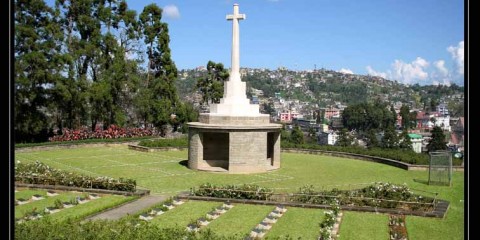
Nagaland, North East India, Caves, Hill station, Musuem, Naga Tribes, Nature, Trekking, Valley, Water falls, Wildlife Sanctuary
Kohima is hilly capital of Nagaland, India. It is the land of Angami Naga tribe. Earlier name of this place is Thigoma. As Britishers unable to pronounce this name they have changed the name as Kohima. This place is famous for wild flowering plants. This town is named after one of the wild plant called Kewhi. Kohima region consists of 16 principle tribes. All belongs to Naga Tribes. Naga Bazaar and Ruzaphema are best places for the shopping lovers. Decorative items, Vests and Shawls are worth buying here.
What to see in Kohima:
Catholic Church: In the North East Region of India, this church is the biggest church. Missionary sisters of Jesus Christ came to this place in 1948 to provide service to the civil hospital of the region. From then onwards Christianity spread in this region.
War Cemetery: This cemetery consists of more than 1420 funerals of the soldiers who died during Japanese invasion at the time of World War II. It is best historical site in Kohima. It consists of 330 Indian Burials, 5 Canadian and 1100 British Burials.
Nagaland State Museum: Rare collection of artefacts which belongs to 16 tribes can be seen here. Other attractions of this place are inscriptions, traditional attires, necklaces, precious stones, clan motifs.
Japfu Peak: One of the major attractions of this place is Rhododendron Tree. This tree entered into Guinness book of world Record. Height of this tree is 130 feet tall. Trekking is the other attraction of this place.
Kohima Museum: Collection of beer mugs, gadgets for Kitchen, farm implements, precious stones, is the major attractions of this museum.
What to see around Kohima:
Dzukou Valley: This is located 25kms away from Kohima. It looks so beautiful with multi colored rhododendrons, Euphorbia, aconitum and Lilies. This valley is used for trekking purpose. Trekking is the major attraction for several visitors.
Tuophema: State Government declared this village as ancient Heritage village. This place is so clam. Social system of Nagas can be known from here. Famous dishes of Nagas such as Bamboo baked fish; rice beer, bamboo and Pork are available here. It is located 35kms away from Kohima.
Zoological Park: It is located 70kms away from Kohima. Rare Bird species, Tragopan is the major attraction of this park. This is the state bird of Nagaland. Animal attractions of this place are Golden Langur, Wild Buffalo etc. Jungle Safari, Nature trips and Bird watching activities are major attractions of this place.
Intangki Wildlife sanctuary: This is located 45kms away from Kohima. Major attractions of this sanctuary are Mithun, Elephants, Tiger, Black Stork, Khaleej, Common Pheasant, Hornbill etc. Flora and Fauna are also other attractions of this place.
Ruzaphema: This is major attraction for shopping lovers. Beautiful and Unique shops are made by tribal women of Nagaland. It is located 5kms away from Kohima.
Getting to Kohima: Only way to reach this place is road way. From cities such as Mizoram, Manipur, Arunachal Pradesh, Tripura, Meghalaya buses come to this place. Nearest railway station and airport is at Dimapur.
Getting around Kohima: Buses, Vans and Cars are available to visit the surrounding places of Kohima. Travel in the smallest vehicles is more safe as this a hilly region.
Best time to visit Kohima: Best time to visit Kohima is between November to March.
Where to stay in Kohima: Accommodations are very limited in Kohima. Only budget and midrange hotels are available to stay in Kohima. Cost of budget hotels is between Rs.500 to Rs.700. Cost of midrange hotels is ranging between Rs.800 to Rs.1500.
Where to eat in Kohima: This is known for non vegetarian. Most famous food is Zouthou, Ghalo and Bamboo baked with Fish.
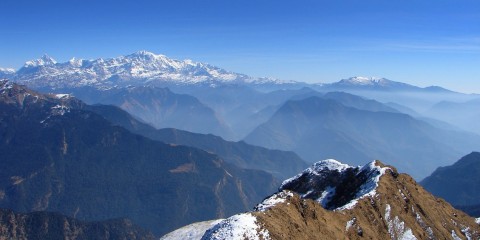
Uttarakhand, North East India, Boating, Hill station, Jyothirlinga, Nature, Panch Prayag, Rock Formations, Temple, Trekking, Valley, Water falls, Water Sports, Wildlife Sanctuary
Chopta is a village located in Uttarakhand State, India. From this place trekking to Tungnath will be started. Tungnath is the 3rd temple of Panch Kedar. Other name of this place is Mini Switzerland. Snowfall in this place is most beautiful during the winter season. Major attractions of this place are Rock climbing, Rock craft, Snow trekking, Yoga, Trekking and Camping. For the bird watchers this is the best place. Best trekking routes of this region are Devariyatal, Tunganath and Chandrashilla.
What to see in Chopta:
Chandrashila: This is the hill on which Chopta and Tungnath Mandir are situated. Different peaks of Chandrashila are Trishul, Chaukhamba, Nandadevi, and Kedar. These peaks cover with snow during the winter seasons. This view is most attractive to the visitors. This place is famous for trekking. But during the winter season visitors are not allowed to do trekking.
Kanchula Korak Musk Deer Sanctuary: This is located in Chopta and Gopeshewar road. Area covered by this sanctuary is 5 sq.kms. Rare Himalayan wildlife can be seen here. Plenty of species of fauna can be seen here. This sanctuary is known for breeding musk deer.
What to see around Chopta:
Ukhimath: This village is famous for Lord Kedarnath temple. During the winter seasons snowfalls is more so this place is known as winter seat for Lord Kedarnath. Temples of Anirudh, Usha, Parvati and Shiva are also famous here. It is located 56kms away from the village.
Deoria Tal: It is located 45kms away from Chopta. Major attraction of this place is reflection of Chaukhamba Peaks can be seen in the waters of the lake.
Tungnath Mandir: This is the major nearby attraction of the village. It is believed that Ravana performed penance for Lord Shiva. Idols of this temple are Lord Shiva, Kaal Bhairav, Ved Vyasa, Pandavas, and Adi Shankaracharya. This place is one of the Panch Kedars. Due to huge snowfalls, temple does not open between November to March.
Kedarnath Mandir: This is situated near Mandakhi River. Shivalinga in the temple is one of the Jyothirlingas. Shape of this temple is Pyramid. 200 idols of Lord Shiva can be seen here. This was constructed by Adi Shankaracharya. It is located 70kms away from Chopta.
Madhyamaheswara Mandir: It is located in Rudraprayaga. Left side of the temple is so attractive with green alpine meadows and right side of Himalayas covered with snow attracts the visitors. North Indian architectural style can be seen here. Nearby attractions of this temple are Madmaheshwar and Ganga Junction, Kedarnath peak and Neelkanth Peak.
Getting to Chopta: Chopta is well connected with road ways. From the cities such as Jalandar, Fariadabad, Nagpur, Ghaziabad, Kolkata, Ludhiana, Noida, Gurgoan buses reach to this place. Nearest railway station is located at Rishikesh.
Getting around Chopta: Buses, Private vehicles, taxis, Jeeps are available to visit the surrounding places of Chopta.
Best time to visit Chopta: Visitors can reach this place throughout the year. During the winter season snowfall is attractinsg the tourists. People who do not have stamina to control cold better to avoid visiting this place during winter season.
Where to stay in Chopta: Accommodations of this place are very limited. Only budget and midrange hotels are available to stay in Chopta. Best hotels in Chopta are Nanda Devi paryatak Awas, Alpine Adventure camp and Hotel Snow view.
Where to eat in Chopta: Limited restaurants are available to have food in Chopta. Tibetan, Indian and Nepali food is available. Most common food is Noodles.
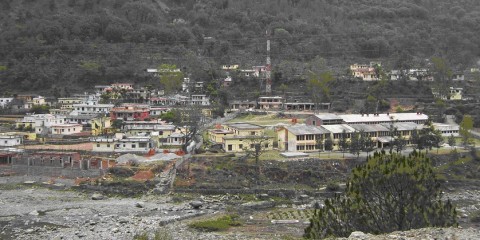
Uttarakhand, North East India, Boating, Hill station, Jyothirlinga, Musuem, Nature, Panch Prayag, River crossing, Rock Formations, Rudraprayag, Temple Trekking, Valley, Water falls, Water Sports
Rudraprayag is a town in Rudraprayag district of Uttarakhand. This is the point of confluence of rivers Mandakini and Alakananda. It is one of the Panch Prayag.
What to see in Rudraprayag:
Kartik Sawmi: This temple is dedicated to Lord Kartikeya. He is the son of Lord Shiva. Bones of Lord Kartik is worshipped here.
Madmaheshwar Temple: This is one of the Panch Kedars. It is believed that Lord Shiva buried in this place. Silver idol is worshipped here. It remains closed for 6 months.
Maa Hariyali Devi Temple: Goddess is seems in most beautiful yellow colour saree. She sits on the lion carrying a child. Other idols of this temple are Vaishno Devi, Bala Devi and Sitla Mata.
What to see around Rudraprayag:
Augustamuni: In this place Rishi Agastya meditated for several years. This village is famous for Agasteshwar Mahadev Temple. It is dedicated to Rishi Augustmuni. Baisakhi celebrations are most famous in this place. It is located 9kms away from Rudraprayag.
Kedarnath Mandir: This is situated near Mandakhi River. Shivalinga in the temple is one of the Jyothirlingas. Shape of this temple is Pyramid. 200 idols of Lord Shiva can be seen here. This was constructed by Adi Shankaracharya. It is located 86kms away from Rudraprayag.
Khirsu: This is located in Rudrayaga region which is 56kms away from the city. Ghandiyal Devta is most ancient temple located here.
Chopta: This is located 56kms away from Rudraprayag. Snowfall in this place is most beautiful during the winter season. Major attractions of this place are Rock climbing, Rock craft, Snow trekking, Yoga, Trekking and Camping. For the bird watchers this is the best place. Best trekking routes of this region are Devariyatal, Tunganath and Chandrashilla.
Kalimath: It is located 46kms away from the city. This is one of the Siddha peeths. Temple is dedicated to Goddess Kali.
Ukhimath: This village is famous for Lord Kedarnath temple. During the winter seasons snowfalls is more so this place is known as winter seat for Lord Kedarnath. Temples of Anirudh, Usha, Parvati and Shiva are also famous here. It is located 42kms away from the city.
Guptkashi: It is located 44 kms from the city. Major attraction of this place is statue of Lord Shiva. This statue is half man and half women.
Chandrashila: This is the hill on which Chopta and Tungnath Mandir are situated. Different peaks of Chandrashila are Trishul, Chaukhamba, Nandadevi, and Kedar. These peaks cover with snow during the winter seasons. This view is most attractive to the visitors. This place is famous for trekking. But during the winter season visitors are not allowed to do trekking. It is located 71kms from the city.
Tungnath Mandir: This is the major nearby attraction of the village. It is believed that Ravana performed penance for Lord Shiva. Idols of this temple are Lord Shiva, Kaal Bhairav, Ved Vyasa, Pandavas, and Adi Shankaracharya can be seen here. This place is one of the Panch Kedars. Due to huge snowfalls, temple does not open between November to March. It is located 71kms away from the city.
Getting to Rudraprayag: Only way to reach this place through road. From the cities such as Gurgoan, Bangalore, Kolkata, Delhi, Hyderabad, Ludhiana, Mumbai, buses are available to reach this place. Nearest railway station is located at Rishikesh which is 72kms away from the city.
Getting around Rudraprayag: Buses, Taxis and private vehicles are available to visit the surrounding places of Rudraprayag. All the surrounding places are in Rudraprayag district.
Best time to visit Rudraprayag: Visitors can come to this place all over the year.
Where to stay in Rudraprayag: Plenty of accommodations are available to stay in Rudraprayag. Best hotels are Monal Resort, Bhatt Resort, and GMVN Tourist Bungalow.
Where to eat in Rudraprayag: Plenty of restaurants are available to eat in Rudraprayag.
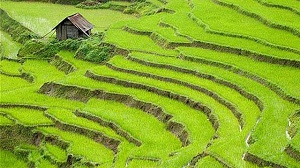
Manipur, North East India, Hill station, Nature, Shirui Lily Flowers, Tangkhul Nagas, Valley, Water falls, Wildlife Sanctuary
Ukhrul is a town and hill station in Ukhrul district of Manipur, India. This is the best place for natural lovers. Climate of this place is so beautiful. Rare Shirui Lily welcomes the visitors to this place. Other added attractions of this place are Crystal Clear River, knolls, mountain ranges and waterfalls. Winter tend to be so cool. This place is also famous for Tangkhul Nagas. It is believed that Tangkhuls come from China Centuries ago. Nagas were the first to embrace Christianity and Western Education.
What to see in Ukhrul:
Shirui Kashung Peak: This peak is famous for Shirui Lily Flowers. It is Manipur state flower. These flowers grow only in this region. Shirui Lily Flowers blooms between May and June. In this region this is the highest peak. Rare birds like Mrs.Hume’s Bar Backed Pheasant and Lyth’s tragopan can be seen here.
Duncan Park: In Ukhrul district this is the largest park which was established in 1984.
Khayang Peak: Height of this peak is 3114meters. This is one of the highest peaks of this region.
Ango Ching: Area covered by this place is 150 sq.kms. Virgin forest is located here. This forest is the home town to plenty of animals such as Tigers, Sambar, Black bear, Wild Cats, Leopards. Birds like Horn bill, tragopan, Peacock can also be seen here.
What to see around Ukhrul:
Khangkhui Cave: This place is known for Palaeolithic era artifacts. During the World War II, this was used as a Shelter by the local people. In this place visitors can see two chambers of devil kings, royal bed rooms, and Durbar Hall. It is located 15kms away from the town.
Azoe Jenephiu Magi Lake: It is located 15kms away from Ukhrul. Kachophung Lake is very close to Azoe Jenephiu Magi Lake. It is situated in Achuwa Magi Hills. Area covered by this lake is 9 acres.
Kachouphung Lake: It is situated on Achuwa Magi Hills. This lake is 7kms away from Khayang Falls. Due to the practice of Common Crap and colour fish, Pisciculture is practised here.
Getting to Ukhrul: Only way to reach this place is through road. From Imphal plenty of buses are available to reach this place. Dimapur is the nearest railway station. Plenty of taxis are available to reach this place. It is located 300 kms away from Ukhrul. Nearest air port is located at Imphal. From the cities such as Hyderabad, Mumbai, Delhi, Kolkata are available to reach this place. From Imphal airport taxis are available to reach this place.
Getting around Ukhrul: Best way to visit the surrounding place is through bus and Taxis. Bus is the cheapest means of transport.
Best time to visit Ukhrul: Ukhrul welcomes the visitors throughout the year. But summer is the best time to visit the place.
Where to stay in Ukhrul: Accommodation facilities in Ukhrul is very limited. Only Budget and Midrange hotels are available to stay in Ukhrul. Cost of the hotels is very nominal. Best hotel in Ukhrul is Continental Hotel.
Where to eat in Ukhrul: Very limited restaurants are available to have food in Ukhrul. All the restaurants serve local cuisine. Best hotel in Ukhrul is Continental Hotel.
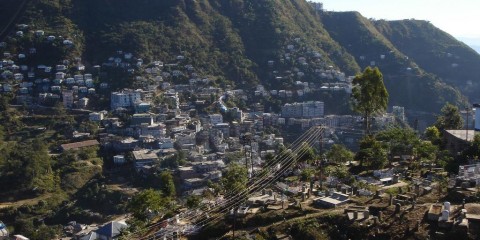
Mizoram, North East India, Hill station, Musuem, Nature, Trekking, Valley, Water falls, Wildlife Sanctuary
Aizawl is the capital of Mizoram, India. This is one of the most beautiful hill stations in India. It is 112 years old town. Varieties of flowers and Timber houses are the major attraction of this place. Majority of population belongs to Mizo tribes. Muslims and Hindus can also be seen here but very small number. Major dances of this region are Sarlamkai, Chai, Chheihlam, and Khuallam. During these dance shows traditional games, Music competitions, Food festival and flower shows are organised here. Chapchar Kut, Pawl Kut, Mim Kut are famous festivals in Aizawl.
What to see in Aizawl:
Berawtlang Tourist Complex: This is the recreation centre. Plenty of cultural activities held here. Local people considered this as famous Picnic spot. Accommodations and restaurants are available inside the complex. Local Taxis are used to visit this complex by the foreigners.
Bara Bazaar: This is the main shopping centre of this hill station. Traditional garments, Wicker handmade baskets are main attraction of this Bazaar.
Durtlang Hills: Tourist attracts to this place for trekking. This offer fine view of the hill station.
Mizoram State Museum: This was established in 1977. More than 2500 items are placed here. Each item says the ethnic background and richest past to Mizoram. This museum is dedicated to tribes of the Mizoram. Some of the items of the museum are archaeological objects, Musical instruments and Photographs.
Mini Zoological Garden: This is located on the hill know as Bethlehem Vengthlan. Major attraction of this garden is Sun Bear. Several numbers of animals can be seen here.
What to see around Aizawl:
Bung: This place is situated 15kms away from Aizawl. It is the best picnic spot. Taxis, Bus and Cars are used to reach this place. This place is always busy with the tourists.
Luangmual Handicrafts Centre: This is located 7kms away from the centre. Handicraft objects are famous in this place. Waterproof Wild hnathial leaves can be seen exclusively in this place.
Reiek Tourists Resort: It is situated 45kms away from the city. For the trekking and natural lovers this is the best place. Music shows also conduct in this resort.
Ruanglang: Traditional Mizoram life of the people will be known from this village. It is situated 5kms away from the city. Local taxis are used to reach this place.
Falkawn: This village is situated 18kms away from Aizawl. Thousands of visitors come to place every year. This is the best place to known the lifestyle and culture of Mizoram People.
Paikhai: This is the best picnic spots. Waterfalls are the major attraction of this place. It is located 16kms away from the city.
Getting to Aizawl: Aizawl is well connected by road ways. From Shillong, Silchar and Guwahati buses are available to visit this place. Nearest railway station is located at Silchar which is 130kms away from the city. Aizawl is having domestic airport. This airport is well connected with Kolkata, Imphal and Guwahati.
Getting around Aizawl: Buses, Cars, Taxis and Autos are available to visit the surrounding place of Aizawl.
Best time to visit Aizawl: Best time to visit this place is between November to February. Heavy woollen should be preferred to wear during the winter season and cotton and light woollen are preferred for summer season.
Where to stay in Aizawl: Accommodations are very limited in Aizawl. Prior booking of the rooms and resorts are advisable. Only luxurious resorts are available but not luxury hotels. They were charging Rs.3500 per night. Budget hotels are charging Rs.500 per night where as midrange hotels are charging Rs.750 to Rs.1000 per night. Hot water facility is available throughout the year.
Where to eat in Aizawl: Limited Restaurants are available to eat food. Most famous local food is Baked Pork Momos, Chicken Momos and steamed fish.
Puri is a city in Puri district of Odisha, India. This place is well known for Lord Jagannath Temple. It is a holy city for Hindus. This place is also famous for architecture and arts of India. Earlier known as Purusotham Kshetra as, famous Purusotham temple is located here. Today this temple is known as Jagannath Temple. Puri Jagannath Yatra is most famous festival celebrates during June to July.
What to see in Puri:
Jagannath Temple: This is the major attraction of Puri. Height of this temple is 65meters. This was built in 12th century. 20foot high wall is surrounded this temple. This temple is dedicated to Lord Jagannath incarnation of Lord Krishna. It is believed that Lord Jagannath asked King Indradyumna to construct a temple. On the walls of the temple various scenes and stages of Lord Krishna’s life can be seen. Rath Yatra is the major attraction of this temple. Idols of Goddess Subhadra, Lord Balabhadra and Lord Jagannath will take to Gundicha temple during Ratha Yatra and again they will bring them back to the mandir.
Golden Beach: Several temples of this place located near this beach. Wall hangings, lamp shades, Jute shades, Souvenirs made up of shells are worth buying in this place.
Swargadwar: This is located near the beach. People believe that persons who pass away from this place will directly go to heaven after their death.
Gundicha Temple: This temple is shaped like a dome with Lord Vishnu’s Wheel on the top. This temple is considered as the aunt’s house of Lord Jagannatha. During the Ratha yatra period Lord Jagannatha shifted to this temple for 7 days.
Markandesvara Temple: Major attraction of this temple is a statue of Nataraja with ten arms.
Loknath Temple: Shiva Lingam in this temple was established by Lord Rama.
Sudarshan Craft Museum: Major attractions of this museum are a workshop, a library and a Buddhist temple of Japanese style.
Lakshmi Temple: It is believed that Goddess Lakshmi invited Goddess Parvati and Lord Shiva to this place after their marriage.
What to see around Puri:
Chilika Lake: This is the Asia’s largest salt lake. This lake is separated from the Bay of Bengal by only a small neck like piece of land. During the winter season plenty of birds come to this place on migratory basis. It is located 15kms away from the city.
Sakthi Gopal Temple: This temple is dedicated to Lord Krishna and Radha. Idols are brought to this place by King Pratapruda Deva. It is located 17kms away from Puri.
Daya River: It is located 34kms away from the city. On the outskirts of Bhubaneswar, this river joins with Malaguni River and flows into Chilika Lake. Kalinga war fought on the banks of this river.
Getting to Puri: Puri is well connected with road and railways. From the cities such as Kolkata, Chennai, Bhubaneswar, New Delhi etc buses and trains are available to reach this place. Puri is the major railway junction. Biju Patnaik airport is the nearest airport which is located at Bhubaneswar.
Getting around Puri: Buses, autos, rented motor bikes, cycle rickshaws are available to visit the surrounding places of Puri.
Best time to visit Puri: Best time to visit this place is between June to March. Tourists rush will be more during June to November.
Where to stay in Puri: Plenty of accommodations are available to stay in Puri. Huge number of attractive packages is also offering to the tourists. Best price for double bed room of the budget hotel is between Rs.1000 to Rs.1500.
Where to eat in Puri: Huge number of restaurants in Puri. Most of the restaurants serve only vegetarian food. Most famous food in Puri is Bhaang Sharbat.
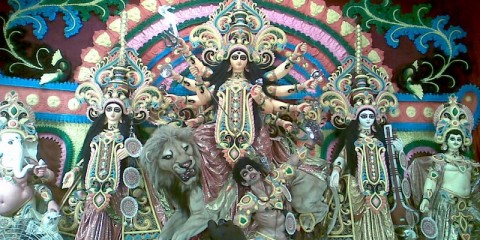
West Bengal, East India, Fort, History, Masjid, Musuem, Nature, Temple, Wildlife Sanctuary
Kolkata is the capital of West Bengal. Major attraction of Kolkata is Port. This is India’s oldest operating Port. Other name of Kolkata is City of Joy. Influence of Raj is more in this city. City has its own place in literature, theatres and films. Several renowned personalities such as Mother Teresa, Satyajit Ray belong to this place.
What to see in Kolkata:
Howrah Bridge: This Bridge is worlds 4th busiest bridge. This connects Western Bank of Kolkata to eastern banks of Kolkata. Photography is restricted here. Nearly 60,000 vehicles travel on this bridge per day. This is also known as Rabindra Setu. This was constructed in 1939.
Eden Gardens: India’s Oldest Cricket Stadium. This is also known as Lords of Asia. It is one of the finest stadiums in the world.
Nicco Park: This is the oldest amusement park. Park is famous for adventure rides such as Water coaster, Moonraker, Flying Saucer, Toy Trian, Cable car etc. Several lakes and gardens can also be seen here.
Aquatica: It is the largest water park of India. Major attractions of this place are adventure water rides, swimming, tornadoes, dance floors, artificial waves.
Dakshineswar Temple: This was built by Rani Rasmani of Janbazar. She was asked by Goddess Kali to build the temple.
Indian Museum: It is the largest museum of India which was established in 1814. Major attractions of this museum are prehistoric objects and artifacts. It consists of more than 60 galleries.
Alipore Zoo: Major attractions of this zoo are Grant’s Zebra, White Tiger, Indian Elephant, one horn Rhinoceros etc.
Kalighat: This was built by Brahmin Zamindar. Goddess Kali is worshipped here. Old temple is housed in small hut.
Nandan: This is the first multiplex of Kolkata. Kolkata International film festival hosted here.
Marble Palace: This was constructed in 1855 with marble stones.
Other attractions of Kolkata: Other attractions of Kolkata are Park Street, Maidan, Town hall, College street, BBD Bagh, Kolkata Metro, Science City, National Library, Vitoria Memorial, Belur Math, Jaldapara Wildlife sanctuary, Jawahar Shishu Bhawan, Nakhoda Mosque.
What to see around Kolkata:
Botanical Garden: This is the best place for the natural lovers. It is located in suburban area of Shibpur in Howrah district which is 8kms away from the city.
Garchumuk: It is situated in Howrah district which is 56kms away from the city. Major attraction of this place is Deer Park.
Chintamoni Kar Bird Sanctuary: It is situated 30kms away from the city. Major attractions of this sanctuary are kingfishers, doves, woodpeckers and cuckoos. Plenty of animals and fruit trees are also can be seen here.
Shrine Bascilica Bandel: It is located 55kms away from the city. It is one of the oldest churches of west Bengal. This was dedicated to Our Lady of the Rosary.
Getting to Kolkata: Kolkata is well connected with road, rail and air ways. From the cities such as Bangalore, Mumbai, Visakhapatnam, Lucknow, Jaipur, Jamshedpur etc buses are available to visit this place. From Patna, Guwahati, Bhubaneswar, Hyderabad etc trains are available to reach this place. From Hyderabad, Chennai, Nagpur, Lucknow, Jaipur etc flights are available to reach this place.
Getting around Kolkata: Autos, Buses, Taxis are available to visit the surrounding places of Kolkata.
Best time to visit Kolkata: Visitors can come to this place throughout the year.
Where to stay in Kolkata: Plenty of hotels are available to stay in Kolkata. Best budget hotels in Kolkata are Marble Palace Guest house Pvt Ltd, Travel Inn, Diamond suites etc. Best Luxury hotels in Kolkata are The Oberai Grand, Hotel VIP International, The peerless Inn.
Where to eat in Kolkata: Plenty of restaurants are available to eat in Kolkata.
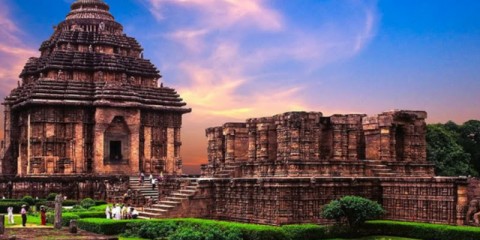
Odisha, East India, Beach, Buddhist temples, History, Konark Sun Temple, Musuem, Nature, Temple
Konark is a small town in Puri district of Odisha, India. Konark is derived from two words Kona and Arka. Kona means Corner and Arka means Sun. Major attraction of this place is Sun Temple. Konark is also famous for pristine beaches, rich culture and heritage. Other name of Konark is Konaditya. Along with Sun Temple several other temples were also built during the rule of Narshimhadeva I of Ganga dynasty. It is believed that this Sun Temple was built by Samba Son of Lord Krishna. Konark dance festival is a five day long annual festival of dance and Music which is most famous in Konark. As a part of this festival, Craft and Handicraft Exhibition is also held.
What to see in Konark:
Konark Sun Temple: This is the major attraction of Konark which belongs to 13th century. This temple is dedicated to Lord Sun. It is most beautiful with ancient Oriyan Architecture. It is in the shape of chariot driven by seven horses. People believed that wheels represent hours of the day and shadow of the wheels says the exact time. This temple was constructed with black granite.
Konark Beach: This is one of the major attractions of this place. Devotees take bath in this beach and went to see Sun God. It is most beautiful with golden sand. Magha Saptami Mela conducts every year grandly in this beach.
ASI Museum: This museum consists of 4 galleries. It is situated just outside the Sun Temple. This museum consists of 260 antiquities. Those are found in and around the sun temple. This was established in 1968.
Ramachandi Temple: It is located on the mouth of Kushabhadra River which is 9kms away from the temple. Some people say that this temple is dedicated to Lord Sun and some people believe that this temple belongs to Lord Ramachandi.
Konark Math: Nirakar Brahma is worshipped here. Sunya Sadhana is the concept of this math. This is situated very close to Konark Sun Temple.
Vishnu Temple: Currently only ruins of this temple can be seen here. It is located just behind the Ramachandi Temple. On the Half broken walls of this temple visitors can see figures of Goddess Saraswati and Goddess Laxmi.
What to see around Konark:
Kuruma: Major attractions of this village are antique images of Buddha and Heruka. This village is located 8kms away from Konark which is built between 9th century and 10th century.
Puri: This place is famous for Puri Jagannath Yatra. It is one of the four Peethams established by Shankracharya. Puri is also known as Purushottama Puri. It is situated 35kms away from Konark.
Bhubaneswar: This place is famous for ancient temples and architectural temples. It is the capital of Odhisha.
Getting to Konark: Only way to reach this place is though road. From the major cities of Odhisha and other states, buses are available to reach this place. Nearest railway station is located at Puri which is 35kms away from Konark. Puri railway station is well connected with all the major cities in India. Nearest domestic airport is located at Bhubaneswar which is 64kms away from the Konark. From Hyderabad, Delhi, Kolkata, Chennai flights are available to reach this place.
Getting around Konark: Taxis and autos are available to visit the surrounding places of Konark.
Best time to visit Konark: Best time to visit Konark is between October to March.
Where to stay in Konark: Plenty of hotels are available to stay in Konark but only budget and midrange hotels. But luxurious resorts and cottages are available to stay. These resorts and cottages cost is ranging between Rs.4500 to Rs.10, 000.
Where to eat in Konark: Plenty of restaurants are available to eat. Most famous food in Konark is fish fry in Bengali Style.
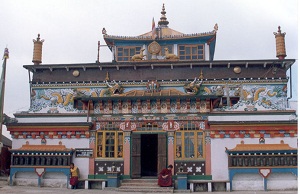
West Bengal, East India, Boating, Buddhist Monestery, Fort, Hill station, History, Musuem, Nature, Temple, Valley, Wildlife Sanctuary
Kalimpong is a hill station of West Bengal, India. This place is famous for ancient temples, churches and Buddhist monasteries. In 1866, this was added into the district of Darjeeling. Prior to China’s annexation of Tibet and Sino Indian War, Kalimpong was used as gateway in the trade between India and Tibet. At the outskirts of the city Indian Army 27 Mountain Division is located. Nepal culture can be seen more in this place.
What to see in Kalimpong:
Mangal Dham: This temple was constructed by Shri Krishna Pranami in 1993. In the memory of Guru Shri 108 Mangaldasji, this was constructed.
Catholic Church: In the Kalimpong area this is the largest Catholic Church. During the British rule this church was constructed. Architect of this church is Hardy.
Flower Nurseries: Plenty of nurseries are located in this town. Flowers of this nursery are exported. Commercial flower nurseries of West Bengal are located here.
Deolo Hill: It is one of the hills on which Kalimpong is situated. This is the highest hill point of this town.
Dr.Graham’s Home: This is the educational institute which was founded by Dr.John Anderson Graham in 1900. Area covered by this institute is 500 acres. This place also consists of clothing department, hospital, Poultry, Dairy, Bakery and farmhouse.
Tharpa Choling Monastery: This is one of the 3 monasteries found in this town. It was established in 1937.
St.Therasa’s Church: This was built by local people in beautiful Tibetan architecture. On the walls of the church inscriptions of Biblical themes can be seen.
Kalimpong Arts & Crafts centre: With the intension to promote handicrafts and to provide employment opportunity to the local people this was established in 1897.
Lepcha Museum: Lepcha Community culture can be learn in this museum. Articles of worship, musical instruments, and manuscripts can be seen here.
Gouripur House: It is located 2kms away from the city. This is the favourite place for Rabindranath Tagore. In this place he had written several poems.
Teesta Bazaar: Artifacts and Handicrafts are the major attraction of this Bazaar. This is the best shopping place.
Kalimpong Science centre: This is the best place to improve science awareness among the students and to the visitors.
What to see around Kalimpong:
Neora National Park: It is located 32kms away from the town. Major animal attractions of this park are Gora, Himalayan black bear, Wild dog, Red Panda. Reptile attractions of this park are King cobra, blind snakes, Pit Viper.
Durpin Dara Hill: It is located 3kms away from the town. From this place visitors can enjoy the Himalayan ranges. River Teesta can also be seen from here.
Pedong Monastery: It is located 20kms away from the town. This was built by Bhutan’s King in 1837.
Getting to Kalimpong: This place is well connected though road. From other cities in Sikkim buses are available to reach this place. Nearest railway station is at Jalpaiguri. This place is well connected with all the major cities. Bagdogra is the nearest airport.
Getting around Kalimpong: Buses, Jeeps, taxis and ferries are available to visit the surrounding places of Kalimpong.
Best time to visit Kalimpong: Best time to visit this place is between March to May and October to December.
Where to stay in Kalimpong: Several hotels are available to stay in Kalimpong. Cost of budget hotels starts from Rs.200. Cost of luxury hotels is around Rs.2000. Nurseries are the additional attractions in some hotels.
Where to eat in Kalimpong: Plenty of restaurants are available to eat in Kalimpong. China Garden is the best place to have Chinese food.
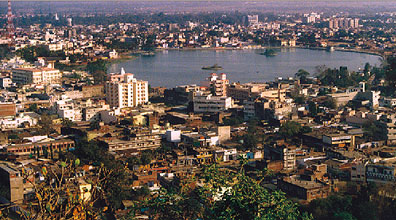
Jharkhand, East India, Boating, Caves, History, Musuem, Nature, Rock Formations, Temple, Valley, Water falls, Wildlife Sanctuary
Ranchi is the capital of Jharkhand, India. Rachi name is derived from the Oraon Village, Archi. Oran word is used for bamboo grove. One of the legends of this place is, once a farmer beat the spirit with bamboo stave. The Spirit shouted archi, archi, archi and vanished. This place is famous for beautiful valleys, barren rocks, green hilly regions and waterfalls. Ranchi is rich in natural wealth such as mica, copper, coal and iron. Wild life is another major attraction of this site. This is the home town of Indian Cricket captain Mahindra Singh Dhoni. Tribal culture is more in this village. Metal crafts, toys, wood products, Bamboo products are worth buying of this place.
What to see in Ranchi:
Ranchi Lake: It is located at the heart of the city. This place is most famous for picnic spot .Boating is the major activity conducts here.
Rachi Museum: Major attractions of this museum are ethnological objects, numismatics, arms, stone sculptures, terracotta sculptures, prehistoric implements.
Ram Rekha Dham: It is believed that during the 14 years exile, Lord Rama along with Lakshmana and Sita stayed here for few days. Temple is located inside the cave.
Tagore Hill: This is located near Albert Ekka Chowk. Height of this hill is 300feet. This is named after the poet Rabindranath. It is believed that he love this place for its scenic beauty.
Other attractions of Ranchi: Other attractions of Ranchi are Rock Garden, Kanke dam, Yogoda Satsanga Sakha Math, Gonda Hill, Birsa Deer Park, Ranchi University Museum, Nakshatra Van, Birsa Zoological Park, Pahari Mandir.
What to see around Ranchi:
Surya Temple: It is the major nearby attraction of the city. It is located 39kms away from the city. Major attraction of this city is statue of Chariot with 7 horses and 18 wheels. This was built by Sanskrit Vihar.
Deori Temple: This is one of the most ancient temples which are dedicated to Goddess Kali. Idol has 16 arms. Pillars of this temple are made up of sand stone.
Hundru Falls: These are located 45kms away from the city. Different rock formations are the major attraction of this site.
Jagannath Temple: It is located 10kms away from the city. This was constructed by the king of Barkagarh, Jagannathpur Thakur in 1691. Architecture style is so attractive.
Panch Gagh Falls: It is one of the best picnic spots near Ranchi. It is located between Road and Chakradharpur Road. These falls are 6kms away from Khunti Village.
Other attractions near Ranchi: Other attractions near Ranchi are Jonha Falls, Dassam Falls, Muta Crocodile Breeding centre, Angrabadi Temple Complex, Hirni Falls.
Getting to Ranchi: Ranchi is well connected with Road, Railway and air ways. From the cities such as Jamshedpur, Patna, Dhanbad, Chaibasa etc buses are available to reach this place. From all the important cities of India trains come to this place. Ranchi airport is located at Hinoo. It is well connected with Mumbai, Pune, Kolkata and Delhi.
Getting around Ranchi: Buses, Autos, Taxis are available to visit the surrounding places of Ranchi.
Best time to visit Ranchi: Ranchi can be visited throughout the year but better to avoid during peak summer season as temperature is too hot.
Where to stay in Ranchi: Plenty of accommodations are available to stay in Ranchi starting from Budget hotels to luxury hotels. Cost of budget hotels are below Rs.1000 per night. Cost of luxury hotels is about Rs.4000.
Where to eat in Ranchi: Plenty of restaurants are available to eat in Ranchi. All the restaurants serve continental cuisines. Cafe Coffee, Dosa Plaza, KFC, Subway, Dominos have outlets in Ranchi.
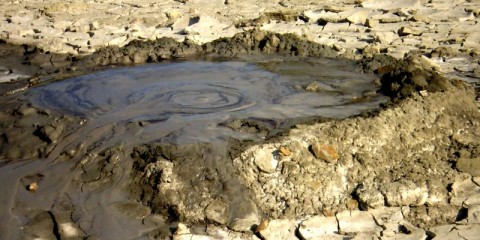
Andaman, East India, Beach, Boating, Caves, Mud Valcanoes, Nature, Wildlife Sanctuary
Baratang is an Island in Andaman Islands, India. It is located 20kms east of Port Blair. This Island is famous for mud volcanoes and coastal line is rich in marine life. Apart from mud volcanoes this beach is also known for its beaches and other activities such as Bird Watching, island camping, Snorkelling, Scuba diving and beach tours. During the trip to this Island, lime stone Caves at Nayadera and Parrot Island worthy places to visit. Interacting with tribal’s, taking photographs and offering food is prohibited. This prohibition started when Jarawas died after having food offered by the tourists.
What to see in Baratang Island:
Mud Volcanoes: The Mud Volcanoes squirt fountains of mud at irregular intervals. These volcanoes are the major attraction of this Island. Locals called these volcanoes in the name of Jalki. From the Baratang Jetty is 4kms away.
Roglachang beach: This is the best place for long walks. Sunset seems to be most beautiful from this beach.
Baludera Beach: This is the best place for swimming. It is free from pollution.
Parrot Island: It is very near to Baratang Island. This is the best place for bird watchers. The mesmerizing site of this place is when thousand of parrots are returning their home during the sunset with the backdrop of sunset.
What to see around Baratang Island:
Lime stone Caves: This is the most popular tourist spot in Baratang Island. It takes an hour to reach this place form Baratang Island through Boating. Boat goes though mangrove forest. It is the different and unique experience. It is essential to carry touch while visiting to these caves as these caves are so dark.
Great Nichobar: This place is famous for Giant Leather Back Turtles. Great Nichobar Island has biosphere reserve area.
Karchal: In the Nicobar Group this is the small Island. It was this Island which heralded new Millennium with first sunrise on 1st January 2000. Attraction of this Island is West Bay, Jhula and East bay beaches.
Car Nicobar: All around this place roaring sea and enhancing beaches can be seen. Unique to this Island are having entrance through the floor and Nicobari huts built on stilts. From Port Blair it takes 16hours to reach this place.
Nicobar: This place is famous for Nicobarese Pigeons and Long tail monkeys. Megapode is the rare bird; this can be seen in this place.
Getting to Baratang Island: To reach this place visitor has to reach to Port Blair. Port Blair is well connected with Kolkata and Chennai though air. Buses, cars, Taxis are available to reach this Island. From Visakhapatnam, Kolkata, Chennai ships are available to reach Port Blair.
Getting around Baratang Island: Ferries are available to reach the surrounding places of Baratang Island.
Best time to visit Baratang Island: It is essential to known the best time before visiting to any place. Best time to reach Baratang Island is between October to May and from June to August.
Where to stay in Baratang Island: Prior permission to reach to Baratang Island is essential. Permission has to be taken from Superintendent of Police. Very limited accommodations are available to stay in Baratang Island. It is advisable to look for other options in Port Blair. Best hotels in Baratang Island are Andaman Residency, Sea Shell Beach Resort, Munjoh Ocean Resort, Symphony Palms beach resort.
Where to eat in Baratang Island: Very limited restaurants are available to eat in Baratang Island. Most famous dish in Baratang Island is fish fry.
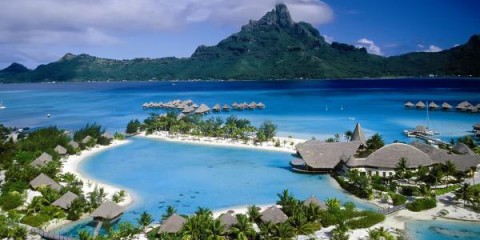
Andaman, East India, Beach, Boating, Coral Reefs, History, Nature, Snorkelling, Trekking, Water Sports, Wildlife Sanctuary
Havelock Island is the largest Island of Great Andaman in Andaman Islands. This Island is named after British General Army official Maj Gen Sir Henry Havelock in India. Havelock is famous for Great Scuba diving experience, coral reefs and Pristine Beaches. It comprises of several small Islands known as Ritchie’s Archipelago. Government encourages tourism at this place. Havelock is also famous for its beaches, trekking activities, Snorkelling. Coconut shell lamp shades, Nicobari Mats, Walking sticks, Trays, Bowls are worth buying in this place.
What to see in Havelock Island:
Radhanagar Beach: This is most attractive beach. In 2004, it was rated as Best Beach in Asia. Highlights of this beach are sky blue water and beautiful silky white sand. Most amazing thing to see from here is sunset. Autos and Jeep are available to reach this place. In some areas of the sea activities like Snorkelling and swimming are conducting.
Vijayanagar Beach: This beach is the best place to relax as it is so clam. Vijayanagar Beach is the best spot for swimming.
Elephant Beach: This is well known to the Indian tourists. Corals near the beaches make good spot for Snorkelling. From Radhanagar Beach, visitors can reach to this place through boat or on foot.
Kalapathar Beach: This beach is named after a village which is located near this beach. Village is famous for Black rocks. Beach attracts the tourists in two different forms. On one side visitors can find silky white sand and on the other side beach looks green like an emerald.
Dive India: This is offering several adventurous activities. Training on these activities will be given in this place. This is offering several instructor training courses.
Ocean Tribe Scuba Diving: This is the best place for beginners of professional divers. They can enjoy diving in the water. Other attractions of this beach are ocean walking and Snorkelling. Visitors can enjoy different variety of water sports from December to April.
What to see around Havelock Island:
Cellular Jail: It is located in Port Blair which is 60kms away from the Island. Only individual cells can be seen in this jail. This was constructed by Britishers in 1906.
Mahatma Gandhi Marine National Park: It is located 30kms away from south west of Port Blair. Area covered by this park is 280sq.kms. It is famous for rich collection of coral reefs. This park is also known for the different variety of birds, animals and Marine life. Deep water Scuba diving activity conducts in this park.
Neil Island: It is located 40kms away from Port Blair. Major attractions of this beach are Snorkelling, angling, Fishing.
Inglis Island: It is located 57kms away from Port Blair. Major attractions of this place are Wild life and Coral Reefs.
Getting to Havelock Island: Best way to reach this place is through Ferries from Port Blair. For every four hours one ferry is available from Port Blair. Nearest airport is at Port Blair i.e. Veer Savarkar International Airport. From Kolkata and Chennai regular flights are available to reach this place.
Getting around Havelock Island: Buses, Motorcycles, Jeeps, Gearless Scooters, Autos are available to reach the surrounding place of Havelock Island.
Best time to visit Havelock Island: As Diving and other activities are most famous in this Island, best weather conditions are essential to enjoy the activities. Best weather conditions in this Island are between January to May.
Where to stay in Havelock Island: Plenty of hotels are available starting from beach huts to luxury hotels to stay in Havelock Island. Luxury hotels provide pick up and drop facilities. Decent budget hotels are available near Vijaynagar Beach.
Where to eat in Havelock Island: Plenty of restaurants are available to eat in this Island. Best restaurants are at Beach Number 3. Both Vegetarian and non vegetarian food is available.
Murshidabad is a city in Murshidabad district of West Bengal, India. During the Mughal Period this city acted as capital of Bengal. This place is known for British Colonial history. Several historical sculptures of British and Mughal era can be seen in this place. Silk Textiles is most famous in this city. Plenty of patterns in light weight sarees can be seen here. Bera Utsav is most famous festival in Murshidabad.
What to see in Murshidabad:
Imambara: This was built in 1847 by Nawab Nazim Mansoor Ali Khan Feradun Jah. Across India this is the largest Imambara. Cost of this Imambara is around Rs.6lakhs.
Katra Masjid: This was built in 1723 by Nawab Murshid Quli Khan. In West Bengal this is the oldest Masjid.
Hazarduari palace: This is the major attraction of the city. In this Palace thousand doors can be seen. Earlier this was used to conduct meetings of Nawabs. This is the 3 stored building which was built in 1837 by Duncan Mcleod.
Nasipur Palace: It is one of the largest temples in the district. Lord Ramachandra Temple is located inside the Palace.
Nimak Haram Deori: This is the main gate of jafarganj Palace. This place got importance as Nawab Siraj Ud Daulla was killed here.
Jafarganj Cemetery: Area covered by this cemetery is 3.51 acres. From Mir Jafar to Humayun Jah tombs are placed here.
Footi Mosque: Tourists visit this place for unique architecture style. It was not completed fully.
Wasef Manzil: It is full of Marble statues and staircases. This is very close to Hazarduari Palace which was built by Nawab Wasef Ali Mirza.
Jahan Kosha Cannon: In the early 17th century this was built by Craftsman Janardan Karmakar of Dhaka. It is very large Cannon. Weight is 16,880 lb and Length is 17.5feet.
Other attractions of Murshidabad: other attractions of Murshidabad are Khosh Bagh, Tomb of Alivardi Khan, Tomb of Azimunnisha Begum, Tomb and Mosque of Murhsid Kuli Khan, Tomb of Seraj Ud Daullah, Tomb of Mir Mardan and Tomb of Sujauddin.
What to see around Murshidabad:
Murshidabad District Museum: It is located at Jiganj which is 10kms away from the city. There are 3 galleries in this museum. Major attractions of this museum are Dashavatara Pillar, black stone Sculpture, antique coins, early medieval inscriptions, ancient terracotta Potteries.
Bhavaniswar Mandir: It is one of the best examples for terracotta sculptures. This was established in 1750AD by Queen of Natore. It is located 23kms away from the city.
Cossimbazar: Located at Confluence of Bhagirati River Channels. Major attraction of this place is Cossimbazar Palace. It is most beautiful with terracotta walls and 100 pillars with a lotus finial.
Getting to Murshidabad: Murshidabad is well connected with road and railways. From the cities such as Durgapur, Krishnagar, Malda, Bolpur, Suri, Rampurhat, Burdwan, Kolkata buses come to this place. From the cities such as Ahmedabad, Chennai, Mumbai, Howrah trains come to this place. Nearest airport is located at Kolkata.
Getting around Murshidabad: Autos, Taxis and buses are available to visit the surrounding places of Murshidabad.
Best time to visit Murshidabad: Best time to visit Murshidabad is between October to March.
Where to stay in Murshidabad: Plenty of accommodations are available to stay in Murshidabad. But only budget and midrange hotels are available. Best hotels in Murshidabad are Indrajit Hotel, Majusha Hotel, Baharampur Tourists Lodge, Hotel Sagnik.
Where to eat in Murshidabad: Plenty of restaurants can be find in this place. Local Cuisines are almost similar to Bengali Cuisines. This is the best place to find Mughal and Bengali combination cuisines. Most popular food here is Misti Polao, Gobindo bhog Chaal, Murshidabad Murgi Biryani.
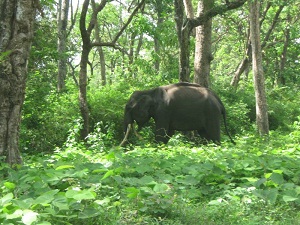
Bihar, North India, Champaran district, History, Nature, Temple, Valley, Water falls, Wildlife Sanctuary
Valmiki is situated in Champaran district of Bihar. This place is most famous for Valmiki National Park. Area covered by this reserve is 880.78 Sq.kms. In 1989 this was declared as National Park. This is the second Tiger Reserve in Bihar and 18th tiger reserve in India. Area of this reserve extended to 880 Sq.Kms in 1990. This national park is named after Valmiki Nagar. This is a small village situated in 5kms away from this national park.
What to see in Valmiki Tiger Reserve: Valmiki national Park has sal forest, swamp forest and alluvial grasslands. Major attraction of this reserve are Tigers, , Sloth bears, Wolves, deer, peafowl, Pythons, Leopards, wild dogs, Jungle Cats, Nilgai, Hyenas, Sambar. Major reptile attractions of this place are Sand boa, banded Krait, Krait, King Cobra, and Cobra. Birds that can be seen in this reserve are Emerald Dove, Pied horn bill, tree Pipit, Pitta, Green barbet, Plovers, Green willow Warbler etc. Different kinds of Butterflies, Caterpillars, Moths are also can be seen in this reserve. In this reserve two reserve flow. They are Masan and Gandak rivers. Places near this river are the best spot for the photographers.
What to see around Valmiki Tiger Reserve:
Someshwar Fort: This is one of the nearby attractions of the reserve which is located 8kms away from the reserve. It is situated on Someshwar Hill. It is in ruin stage but original walls of the fort can be seen.
Valmiki Ashram: It is located 7kms away from the reserve. This is situated very near to Nepal India Border. At this ashram, there are few preserved sites and articles of epic Ramayana can be seen. This place is considered as the birth place of Lvu and Kush who are sons of Lord Rama. Major attractions of this site are Vishnu Chakra, Horse stable, Hawan Kund, Amrit Kuan, Meditation place of sage Valmiki, dining place where Sita used to have food.
Bawan Garhi: This place is located very near to the reserve. Via roadway visitors can reach to this place very easily. This place refers to 52 forts that are situated in the state of Bihar. It is just 5kms away from the reserve.
Lion Pillar: It is situated in Lauriya Nandangarh. It is single block of sandstone. This pillar belongs to 2000 years old. Height is 10feet.
Other attractions near Valmiki Tiger Reserve: Other attractions near Valmiki Tiger Reserve are Nardevi Temple, Kaleshwar Temple, and Jatashankar Temple. These are located within 5kms of the reserve.
Getting to Valmiki Tiger Reserve: Only way to reach this place is by road. Private Vehicles, Local buses and autos are available to reach this place. Nearest bus stand is at Bettiah. From all the important place of Bihar, buses come to this place. Nearest Railway station is at Valmikinagar which is 10kms away from the reserve. Patna airport is the nearest airport which is 260kms away from the reserve.
Getting around Valmiki Tiger Reserve: Best way to see the park is Jungle Safaris. These are provided by Forest department. Buses, Taxis are available to visit the surrounding places of Tiger Reserve.
Best time to visit Valmiki Tiger Reserve: It is essential to know the best time to visit any location beforehand to avoid inconvenience. Best time to visit Valmiki Tiger Reserve is between November to February.
Where to stay in Valmiki Tiger Reserve: Very limited accommodations are available to stay in this tiger reserve. Near Gandhi Nagar, Budget and Midrange hotels are available. On the National Highway 64 also few budget and midrange hotels are available. Few Rest houses are being maintained by Irrigation department in the tiger reserve.
Where to eat in Valmiki Tiger Reserve: Only snacks are available inside the tiger reserve. Food cannot be seen in this reserve. Valmiki Nagar is the nearest village to Valmiki Tiger Reserve. Home stays are available in Valmiki Nagar. These Home stays provide best quality food to the visitors of Valmiki Tiger Reserve.
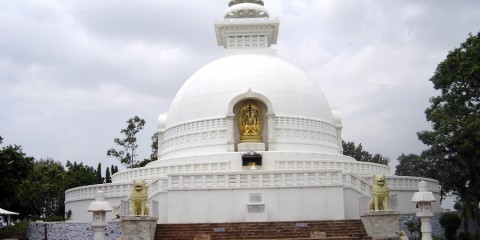
Bihar, East India, Boating, Caves, Fort, History, Musuem, Nature, Temple, Trekking
Rajgir is a city in Nalanda district of Bihar. It was the first capital of Magadha Kingdom. Rajgir was most ancient city dates back to 3000 years old. According to Hindu mythology this was ruled by Jarasandh of Mahabharata. Wrestling match between Bheema and Jarasandh was conducted here. Mahavir spent 14 years of life in this city. City is divided into two parts. First part is surrounded by 7 hills and other part was established by King Ajatsharu. Major attractions of this temple are Hot springs, Trekking and Rope way. Rajgir Dance Festival and Makar Sankranti Mela are most famous festivals in Rajgir.
What to see in Rajgir:
Sonbhandar Caves: These caves are also known as Swarna Bhandar which means Store of Gold. It is believed that treasury of King Bimbisara present in this cave. Sonbhandar caves are most ancient and rock cut caves which were dates back to 500BC.
Pippala Caves: These are situated on the top of the hill, Vaibhava Hill. It is a house for the monks. It is believed that Lord Buddha has done meditation in these caves. These are natural caves.
Hot springs: These are situated at the foot of Vaibhava hills.
Vishwa Shanti Stupa: This is located on the top of Ratnagiri hill. With the help of ropeway visitors has to reach this place. As a symbol of world peace this was built by Japanese. There are 4 statues of Lord Buddha on each corner.
Ajatshatru Fort: This was built by Ajatshatru king of Magadha in 6th century. At the top of the fort 6.5sq.m stupa stands.
Jivaka’s Mango Garden: Jivaka used to be royal Physician of Magadha rulers namely Ajatshatru and Bimbisara.
Ashoka Stupa Peak: This is one of the attractions of Rajgir which was built by Emperor Ashoka with bricks.
Ancient 40kms wall: This is popularly known as Cyclopean wall. It is one of the few important pre-Maurayan stone structures.
Jain Temples: In Rajgir there are 26 Jain temples are situated. These are located on hill crest. Only way to reach this place is through trekking.
Other attractions of Rajgir: Other attractions of Rajgir are Monastery Venuvana Vihara, Ghora Katora Lake, Bimbisara Jail, Gymnasium of Jarasandh, Nava Nalanda Maha Vihira, and New Venu Vana Vihara.
What to see around Rajgir:
Ruins of Nalanda University: It is located 15kms away from Rajgir. These ruins are located in the Nalanda town. It is the oldest Buddhist University.
Nalanda Archaeological Museum: Four main galleries are included in this museum. Main hall consists of Nagaraj Sculptures, Parshvanath sculpture, Bodhisattva Avalokiteshvara, Bhumisparsh postures etc…This was established in 1971. It is located 13kms away from Rajgir.
Other attractions near Rajgir: Other attractions near Rajgir are Nalanda, Bihar Sharif, Pawapuri, Kundlapur, Swarajpur, and Barabar Caves.
Getting to Rajgir: Rajgir is well connected with road and railways. From the cities such as Bihar Sharif, Pawapuri, Nalanda, Patna, Gaya etc… buses are available to reach to this place. Nearest airport is located at Gaya which is 68kms away from this place. Gaya airport is well connected with Varanasi, Kolkata and Delhi.
Getting around Rajgir: Buses, Taxis, Tonga’s are available to visit the surrounding places of Rajgir.
Best time to visit Rajgir: Best time to visit Rajgir is between October to March.
Where to stay in Rajgir: Only budget and midrange hotels are available to stay in Rajgir. Bihar State Tourism Development Corporation is maintaining 3 tourists’ bungalows for the tourists.
Where to eat in Rajgir: Only limited restaurants are available to eat in Rajgir. Almost all the restaurants serve only vegetarian. Chinese, Punjabi and North Indian Cuisines are available.
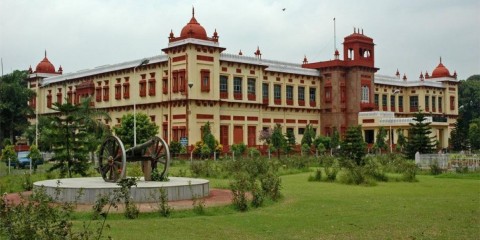
Bihar, North India, Fort, History, Masjid, Musuem, Nature, Temple, Wildlife Sanctuary
Patna is second populous city in East India. It is the capital of Bihar. Patna name is derived from Patan, name of Hindu Goddess Patan Devi. Pataliputra is the name of ancient Patna. Modern Patna is located on the banks of river Ganga. This is the most sacred place for Sikhs as Guru Gobind Singh; last Sikh Guru was born here. This place was developed by Udayi son of Ajatshatru, Magadha King. During the rule of Maurya Kings, Patna enjoyed the Golden period. Most famous festival is Chhath festival. After Diwali, this festival celebrates for 6 days.
What to see in Patna:
Gandhi Maidan: This place had witnessed to several Indian Freedom Movements such as Quit Indian Movement, Champaran. It is popularly known as Patna Lawns.
Folk Art Museum: It is located at Chhajjubagh. Major attractions of this museum are folk Jewellery, Costumes and Musical instruments. Terracotta collections and Ceramic Specimens also can be seen here.
Patna Museum: This looks most beautiful in Mughal and Rajput architectural style. Major attractions of this museum are 16m long fossilised tree (200 million years old), stone and metal sculptures of Maurya and Gupta era.
Takht Sri Patna Sahib / Gurudwara Patna Sahib: In the memory of Guru Gobind Singh this was built. He was the last (10th) Sikh Guru. Guru was born on 22nd December 1666 here.
Agam Kaun: This is oldest and most important archaeological site. It was built by Emperor Ashoka for torturing people.
Patna Devi Temple: This temple consists of two temples namely Bari Patna Devi Temple and Chhoti Patna Devi Temple.
Mahavir Mandir: This is one of the most famous temples in Bihar which is dedicated to Lord Hanuman.
Sanjay Gandhi Jaivik Udyan: This is one of the 16 largest zoos in India. It consists of 800 animals and 300 species of trees.
Gol Ghar: It is a magnificent beehive shaped building which was established by Captain John Garstin in 1786.
Other Attractions of Patna: Other attractions in Patna are Phulwari Sharif, Mahatma Gandhi Setu, College of Arts & Crafts, Jalan Museum, Jalmandir Temple, Sri Krishna Science Centre, Patna Planetarium, Patri Ki Haveli, Mangal Talab, Pathar ki Masjid, Khuda Bakhsh Oriented Library, Bihar Police Museum, Harmandirji, Kumhrar Kumhrar, Meetan Ghat, and Old Opium Warehouse.
What to see around Patna:
Maner Sharif: It is located 30kms away from Patna. This site is famous for 2 tombs namely Shah Daulat and Makhdoom Yahya Maneri. In 1608, Makhdoom was died here.
Nalanda: It is the learning centre from 5th century to 1197 CE. Great University was ruined. It is located 35kms away from Patna.
Vaishali: This place is famous for World Peace Pagoda, Kutagarasala Vihara, and Relic Stupa. It is associated with Lord Mahavira and Lord Buddha. This place is situated 55kms away from Patna.
Getting to Patna: Patna is well connected with road, railway and air ways. Trains from Bangalore, Chennai, Kolkata, Delhi, Mumbai halt at this place. From several cities of Bihar buses come to this place. Patna International airport is well connected with Bangalore, Kolkata, jaipur, Delhi, Mumbai etc…
Getting around Patna: Buses, Autos and Taxis are available to visit the surrounding places of Patna.
Best time to visit Patna: Best time to visit this place is between November to March. Rush will be more during March as Patliputra Mahotsava is held.
Where to stay in Patna: Plenty of accommodations are available to stay in Patna starting from Budget to luxury hotels. State Tourism Department is also maintaining tourist’s bungalows for tourists.
Where to eat in Patna: Plenty of restaurants are available to eat in Patna. Besides local food, Chinese and Indian food is also available.
Bishnupur is a town in Bankura district of West Bengal, India. This place is famous balucheri sarees and terracotta temples. Architecture of Bishnupur is most brilliant for its terracotta work. Malla Kings developed this unique work. This is known as city of temples. For the shopping lovers worthy things can be purchased are Baluchari Sarees and terracotta Products such as Ganesha, elephants, horses, disks, handmade jars.
What to see in Bishnupur:
Jorebangla Temple: This was built by King Raghunath Singha Dev II in 1655 AD. It was constructed in Classical Chala Style. Terracota works and carved designs also found on the walls of the temple.
Acharya Jogesh Chandra Purakriti Bhawan: This is the museum related to archaeology and art. Visitors can see Palaeolithic era and Mesolithic era things in this museum. Other attractions of this museum are ancient day’s artifacts, coins starting from Gupta kings to Pal kingdom. Rare Photographs, manuscripts and paintings can also be seen here.
Shyamrai Temple: This temple is famous for carved roof architecture. Temple is in square shape. Garden around the temple is so attractive. Stories of lord Krishna can be seen on the walls in the form of carvings and pictures.
Pancha Ratna Temple: It is considered to the first Bengal temple in a creative manner. This temple was dedicated to Shyam Rai and constructed by King Raghunath Singh in 17th century.
Rasmancha: This was the oldest Pyramidal tower shaped brick temple. Turrets are surrounded to this temple. This was an idea of King Bir Himbira who belongs to 17th century.
Madanmohan Temple: In Late 17th century this was built by King Durjana Singh. It is one of the oldest temples of Bishnupur. Roof of this temple is curved with Pinnacle and Cornices over the top.
What to see around Bishnupur:
Siddheswar Temple: It is located 25kms away from the city and is situated in Bahulara. Unique designs on the walls of the temple are most attractive. Major shrines of this temple are Jai Parshwanath, Ganesh and Durga. Gajan is the famous festival in this temple which celebrates in March – April.
Susunia Pahar: It is located 62kms away from the city. This place is famous for Silialipi, Dhara, natural springs and Trekking.
Biharinath Hill: This place is famous for flora which is located 57kms away from the city.
Radhashyam Temple: It is located 65kms away from the city which was built during the reign of Chaitanya Singha in 1750. This was built in Terrocotta architectural style. Main idol of this temple is Lord Sri Krishna.
Getting to Bishnupur: Bishnupur is well connected with roadway. From other cities in West Bengal is well connected to Bishnupur through roadway. Jeeps, cars and buses reach to this place. Bishnupur is having small station only limited trains stop in this place. Nearest railway head is located at Howrah. From this station autos, cars are available to reach Bishnupur. Nearest airport is located at Kolkata.
Getting around Bishnupur: Almost all the temples are located very near to each other. Walking is the best way to reach the places in Bishnupur. Cycle rickshaws are also available to reach the temples of the city. Autos, taxis, and buses are available to visit the surrounding places of Bishnupur.
Best time to visit Bishnupur: Bishnupur welcomes the visitors throughout the year. But tourist rush will be more during the Bishnupur festival season.
Where to stay in Bishnupur: Only budget and midrange hotels are available. Tourist’s lodges are also available. These are cheaper than hotels.
Where to eat in Bishnupur: Limited restaurants are available to eat in Bishnupur. Almost all the restaurants serve Bengali food and sweets. Only limited restaurants offer Chinese, South Indian and north Indian cuisines.
Cooch Behar is the largest city of Cooch Behar district of West Bengal. This city is most famous for Cooch Behar Palace. During the British rule this place was acted as capital to Kamatapur Kingdom. Cooch Behar is the birthplace of Maharani Gayatri Devi. She was the third Maharani of Jaipur. Gayatri Devi is considered as most beautiful woman of the world. Cooch Behar is known for its natural beauty, kings, temples and legacy of Royal Palaces.
What to see in Cooch Behar:
Madan Mohan Badi: This temple was built by Maharaja Nripendra Narayan between 1885 to 1889. It is located at the centre of the city. Different shrines of the temple are Goddess kali, Goddess Tara and Goddess Bhavani.
Rajbari: This is the most attractive Palace in the city. It was built by Nripendra Bahadur Narayan. He was a great ruler in Narayan Dynasty.
Baradebi Bari: This temple is dedicated to Goddess Durga. It is best example for European style of architecture.
Brahmo Mandir: It was constructed between 1860 to 1880. This is the best example for Roman architecture.
Dangar Ayee Temple: It is located in Gunjabari place of Cooch Behar. This was constructed by Dangar Ayee kameswari Debi between 1839 and 1847. She is the wife of Maharaja Shibendra Narayan. Other names of this place are Gunjabari and Aunt’s House of Lord Madan Mohan.
What to see around Cooch Behar:
Baneswar Siva Temple: It is located 10kms away from the city. Pond in the premises consists of full of tortoises. Idol of Lord Shiva in the temple is 10 feet below the temple.
Madhupur Dham Temple: It is located 10kms away from the city. This place is most sacred for the followers of Acharya Shankaradeva as he made his last journey in this place during 16th century. It was built in Neo Vaishnava Culture.
Siddheswari Kali Bari: It is located 11kms away from the city. This temple is dedicated to Goddess Siddheswari. It was constructed in Maharaja Harendra Narayan in 1830. In this temple holy tree is located.
Kamteswari Temple: It is located 8kms from the city. Original temple was destroyed by Maharaja Pran Narayan in 1665. This temple was reconstructed.
Siddhanath Siva Temple: It is located 7kms away from the city. It was established by Maharaja Harndera Narayan and Maharaja Shibendra Narayan between 1799 and 1843.
Other attractions near Cooch Behar: Other attractions near Cooch Behar are Rasikbil, Kholta Ecotourism Spot, Rajput Mound, and Chilapata Forest.
Getting to Cooch Behar: Cooch Behar is well connected though road, railways and airways. From the cities such as Bihar, Assam, West Bengal buses are available to reach this place. From the cities such as Gaya, Puri, Amritsar, Guwahati, Kolkata, Delhi, trains come to Cooch Behar. Cooch Behar airport is located 3kms away from the city. Airport is well connected with Guwahati and Kolkata cities.
Getting around Cooch Behar: Taxis, Autos and Local buses are available to reach the surrounding places of Cooch Behar.
Best time to visit Cooch Behar: Best time to visit Cooch Behar is between September to December.
Where to stay in Cooch Behar: Cooch Behar is having several budget hotels but only few midrange hotels are available. Plenty of guest houses are available in Cooch Behar. Luxury hotels are not available.
Where to eat in Cooch Behar: Plenty of restaurants are available in Cooch Behar. Almost all the restaurants serve only non vegetarian. Vegetarian will be serves only on demand.
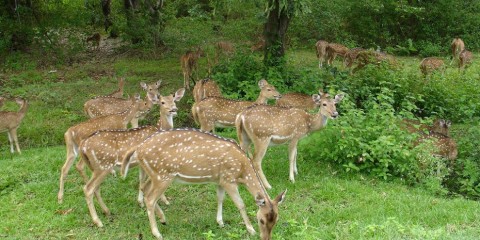
Karnataka, South India, Nature, Temple, Valley, Water falls, Wildlife Sanctuary
Nagarhole is located in Mysore and Kodagu districts of Karnataka. This place is most famous for Nagarhole National Park. In India this is one of the best wildlife parks. Huge variety of birds can also be seen here.
What to see in Nagarhole:
Nagarhole National Park: It is the major attraction in Nagarhole. This is popularly known as Rajiv Gandhi National Park. It was established in 1955. It is considered as best wildlife park in India. Most attractive reptiles of this place are Cobra, Pythons, and Crocodiles. Animals that can be seen in this park are Indian Bison, Panthers, Spotted deers, Elephants, Sambhars, Four horned Antelopes, Civets, Sloth bears etc… Waterfalls and Valleys are most attractive in this park. In 1999 this was declared as tiger reserve. More than 290 varieties of birds can be seen in this park. Major attraction is white Backed Vulture. Few birds that can be seen in this park are Painted bush quail, legged green pigeon, Indian peafowl, spotted eagle etc… Earlier this was hunting place to Mysore kings. This park is named after the river Nagar Hole which means Snake River. Boat Rides, Elephant Safari are most attractive in this park.
What to see around Nagarhole:
Kutta: It is 14kms away from Nagarhole. Kutta is surrounded by waterfalls, Rivers and Mountains. It is the best place for bird watchers. This place is known for plantation of spices, nuts, paddy, Bananas, Betel and Coffee estates.
Brahmagiri Wildlife sanctuary: It is located in Kodagu district. Major attraction of this sanctuary is Shola grassland, Habitant of tribal’s, Coffee Plantation, Agricultural Fields.
Irpu Falls: It is located in Brahmagiri Mountain Range which is 22kms away from the Nagarhole. Other names are Lakhmana Tirtha Falls and Irupu Falls. Height of these falls is 60meters.
Rameshwara Temple: This temple is dedicated to Lord Shiva. It is most sacred place which is located on the banks of the River Lakshmana Tirtha River. Grand celebrations conduct during Mahashivaratri. It is believed that Lakshmana Tirtha River formed when Lord Rama feels thirsty then Lakshman shot an arrow into the hills. Lakhs of people visits this place every year. It is believed that if devotees take bath in this river all the sins will wipe off. It is located 23kms from the park.
Wayanad National Park: In Kerala this is the second largest wildlife sanctuary. Elephants are the major attraction of this park. It is located 66kms away from the park.
Getting to Nagarhole: Nagarhole is well connected by road. From Mysore and Bangalore buses are available to reach this place. Taxis are also available to reach Nagarhole. Nearest railway station is at Mysore which is 96kms away from Nagarhole. Mysore is well connected with the cities such as Shimoga, Kolkata, Jaipur, Tirupati, Ajmer, Mumbai etc… Nearest airport is also located at Mysore.
Getting around Nagarhole: Forest department vehicles are available to see the National Park. Buses and Taxis are available to visit the surrounding places of Nagarhole.
Best time to visit Nagarhole: Best time to visit this place is between October to February.
Where to stay in Nagarhole: Midrange and Resorts are available to stay in Nagarhole. Few rest houses are also available. These are provided by Forest department. These are very limited so it is essential to be rest houses in advance. Few visitors prefer to stay in Mysore.
Where to eat in Nagarhole: Only Basic meals along with few snacks are available.
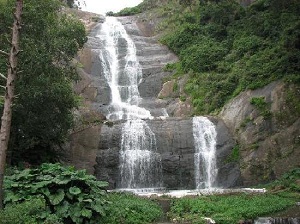
Tamil Nadu, South India, Boating, Caves, Hill station, History, Musuem, Nature, Temple, Valley, Water falls, Wildlife Sanctuary
Kodaikanal is a city and hill station in Indigo district of Tamilnadu. Meaning of Kodaikanal is The Gift of the Forest. Other name of this city is Princess of Hill stations. It was established in 1845. First Westerner to visit this place is BS Ward, British Lieutenant in 1821. Most famous during the festival season is fruits and flower shows and Boat Races. Summer festival and Carnival at Mother Salette Church are most famous festivals in Kodaikanal.
What to see in Kodaikanal:
Kodaikanal Solar Observatory: This is the science museum. During the peak seasons this place opens every day but during off seasons it opens only on Fridays.
Kodai Lake: Boating in this lake is most memorable to all the visitors of this place.
Shembaganur Museum of Natural History: In this place more than 500 taxidermy collection of insects, birds and animals are placed. Tuesday is a holiday to this museum
Green Valley View: It is located 6kms away from Kodaikanal Lake. This valley is so deep, dense and dangerous. This is popularly known as Suicide point.
Kurinji Andavar Temple: This temple is dedicated to Lord Murugan. Other attraction near this temple is Kurinji Flowers. These flowers blossoms once in every 12years.
Other places to see In Kodaikanal: Other places to visit in Kodaikanal are Luthern Church, Bryant Park, Bear Shola Falls, Flora and fauna Museum, Shenbaganur Museum, Dolmen Circle, Coaker’s Walk.
What to see around Kodaikanal:
Berijam Lake: Prior permission from forest department is essential to visit this place. It is located 20kms away from Kodaikanal. Major attraction near this lake is spotted deer, panthers, Bison and snakes. This water used as a drinking water source to nearby villages so this place is not used for boating.
Pillar Rocks: It is situated 7kms away from the city. 3 giant rock pillars are situated here. Near this place public gardens are also most attractive to the visitors.
Guna Caves: Earlier name of these caves is Devils Kitchen. Only sections of the caves are seen now as it is most infected due to bats. It is located 8kms away from the city.
Silent Valley View: It is located on Berijam Lake Road which is 10kms away from the city. Best time to visit this place is during late afternoon and early morning. Better to avoid taking children to this place as valley is so deep.
Dolphin’s nose: it is located 8kms away from the city. This is the best place to see the birds view. For the natural lovers this is the best place to visit.
Silver Cascade: It is located 8kms away from Kodaikanal. This place is famous for waterfalls.
Other places to visit around Kodaikanal: Other places to visit around Kodaikanal are Subrahmanya Temple, Christ the king Church, Perumal Peak.
Getting to Kodaikanal: Kodaikanal is well connected though road ways. From the cities such as Coimbatore, Dindigual, Palani, Trichy, Chennai plenty of buses are available to reach Kodaikanal. Nearest railway station is Palani which is 64kms away from the city. Madurai is the nearest airport to Kodaikanal.
Getting around Kodaikanal: Buses, Vans, Taxis, Rented Bicycles are available to visit the surrounding places of Kodaikanal.
Best time to visit Kodaikanal: Best time to visit this place is between April to June and September to October.
Where to stay in Kodaikanal: Plenty of hotels, resorts are available at Kodaikanal. Home stays are also available to stay in Kodaikanal.
Where to eat in Kodaikanal: Plenty of restaurants are available to eat in Kodaikanal. Both vegetarian and non vegetation food is available. Vegetables, Fruits are very cheap in this place as cultivation is more.

Kerala, South India, Beach, Boat race, Boating, Fort, History, Masjid, Musuem, Nature, Temple, Trekking, Water falls, Water Sports, Wildlife Sanctuary
Kochi is located in Ernakulam district of Kerala. Other name of Kochi is Cochin. This is also known as God’s Own Country. After Muziris Port was destroyed Kochi was developed as best trade centre. Dominated cultures in this town are Jewish settlers, Arab and Christians. Oldest group of Jews are located here. Curios, arts, handicrafts, mobile phones, electronic items, Coir products, Ayurvedic Fabric are most famous and worth buying in Kochi. Cochin Carnival and Indira Gandhi Boat race are most famous festivals in Kochi.
What to see in Kochi:
Jewish Synagogue: This Synagogue is the oldest one among 53 member countries of Common wealth Nations. Cochin Jewish Community instructed this synagogue.
St.Francis Church: It is the oldest European church in India which was constructed in 1503. Explorer Vasco Da Gama was buried at this place.
Jew Town: This place is famous for trade and Commerce during 700BC.
Mattancherry Palace: This palace was gifted to Raja Veera Kerala Vara .It was built in 1557 by Portuguese. Temple’s are also placed inside this palace.
Pareekshit Thampuran Museum: 19th century paintings are most attractive in this museum. Other attractions of this museum are Plaster of Paris sculptures, ancient coins, monuments.
Other place to see in Kochi: Other attractive places to see in Kochi are kashi Art Caf, Santhagopala krishnaswamy Temple, Indian naval Maritime Museum, Pierce Leslie Bungalow.
What to see around Kochi:
Wellingdon Island: It was artificial manmade Island. This was named after British Governor Lord Willingdon. Central institute of Fisheries, Kochi Naval base of Indian Navy are located here. It is situated 6kms away from Kochi.
Cherai Beach: It is located 39kms away from the city. Sunbathing, water sports and Swimming are most important activities of this place. In this beach tiny Island is located which can be reached by boat.
Fort Kochi: It is located 7kms away from Kochi. Old Victorian Era stayed bungalows are most attractive in this place.
Princess Street: It is located in Fort Kochi which is located 7kms away from the city. Major attractions of this place are French, British, Dutch and Portuguese Bungalows.
Mangalavanam: This is the Bird sanctuary. Huge variety of migratory birds can be seen here. Major attractions of this sanctuary are Eurasian Otter, Bandicota, House rat, Palm Squirrel etc… It is located 10kms away from the city.
Other places to visit near Kochi: Other places to visit near Kochi are Santa Cruz Cathedral, Bolghatty Palace, Shiva temple, Museums of Kerala History, Kochi beach, Vamanamoorthy Temple, Gurudwara Sri Guru Singh Sabha, Subhash Park, Chottanikkara Temple.
Getting to Kochi: Best way which connects the city to other place is by road. From the cities such as Goa, Bangalore, Mangalore, Kozhikode etc buses are available to reach this place. Nearest railway station is at Ernakulam. Cochin International Airport is the nearest airport of Kochi.
Getting around Kochi: Taxis, Autos and buses are available to visit the surrounding places of Kochi.
Best time to visit Kochi: Best time to visit this place is between October to April.
Where to stay in Kochi: Plenty of hotels are available to stay in Kochi. Tourist rush will be more between November to February so advance booking of hotels is essential. Boutique hotels are available in Fort Kochi. Price of luxury hotels are ranging between Rs.9000 to Rs.20,000. Home stays are also available whose cost is ranging between Rs.350 to Rs.800.
Where to eat in Kochi: Plenty of restaurants are available to eat in Kochi. Starting from Rs.50 meals are available. Banana Leafs are preferred to serve the food in all the restaurants.
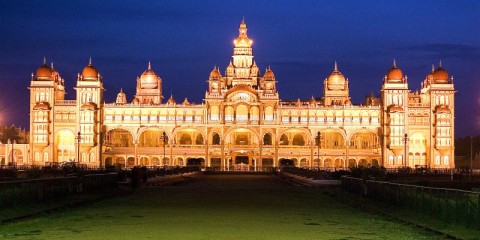
Karnataka, South India, Boating, City of Palace, Elephant Rides, History, Musuem, Nature, Temple, Water Sports, Wildlife Sanctuary
Mysore is the 3rd largest city in Karnataka State of India. From 1399 to 1947, Mysore is the capital to Mysore Princely kingdom. It is famous for its palace. Major industry in this city is Tourism. During the Dasara Festival season tourists rush will be more. This festival celebrates grandly for 10 days. Celebrations were first time started in 1610 by King Raja Wodeyar I. According to Hindu mythology, demon Mahishasura ruled Mysore. He was killed by Goddess Chamundeshwari. Due to this Dasara Festival celebrates grandly here. For the shopping lovers incense, Sandalwood, Silk products and traditional paintings are worth buying.
What to see in Mysore:
Maharaja’s Palace: Interior of this palace is most attractive with different colours, mirrors, stained glass. Paintings of Edwardian Era are looks so beautiful.
St.Philmena’s Church: This was built in neo Gothic Style between 1933 to 1941. Stained glass windows are used in this construction.
Mysore Zoo: Major attractions of this Zoo are Rhinos, Birds, Bears, Elephants, Tigers, Primates etc… This was established in 1892.
Sri Chamundeswari Temple: Entrance gate of this temple is 40meters height. This temple is dedicated to Goddess Chamundeswari. This was constructed in 11th century. Major attraction of this temple is huge statue of demon king Mahishasura in front of this temple. It is located on Chanmundi Hills.
Mysore Palace: It is the major attraction of the city. This is the fourth palace constructed in the same site. It is most beautiful with mirrors.
Regional Museum: This was established to create interest about the nature and to explain about what is the interrelationship between Plants and animals. It was established in 1995.
Rail Museum: In this museum several types of trains can be seen including first Indian made steam engine.
Other attractions of Mysore: Other attractions of Mysore are Bylakuppe Buddhist Golden Temple, GRS Fantasy Park, Jayachamarajendra Art Gallery, Somnathpur Temples, Datta Peetham, St.Philomena’s church, Melody World Wax Museum, Jagamohan Palace.
What to see around Mysore:
Brindavan Gardens: Earlier name of these gardens is Krishnarajendra Terrace Gardens. It is located 19kms away from Mysore. Major attraction of this gardens is fountains, numerous pools, trees, Shrubs, flower beds, beautiful lawns.
Srikanteswara Temple: It is located 25kms from Mysore. This temple was constructed in Dravidian style.
Balmuri and Edmuri Waterfalls: These waterfalls are most famous. Waterfalls are located 3kms away from Mysore. Water games and Swimming are most popular activities of this place.
Kesava Temple: It is located 40kms away from Mysore. This was built in 1268AD. It is one of the Hoysala Period Temples.
Ranganathittu Bird Sanctuary: On the river Cauvery this is located on the small Island. It is located 18kms away from Mysore. Major attractions of this sanctuary are terns, herons, White necked storks, Painted Storks etc…
Getting to Mysore: Mysore is well connected with road and railways. From all the major cities such as Chennai, Mangalore, Bangalore, etc buses and trains are available to reach to Mysore. Nearest airport is located at Bangalore which is 140kms away from Mysore.
Getting around Mysore: Tangos and Autos are available to visit the surrounding places of Mysore.
Best time to visit Mysore: Between September to March is the best time to visit Mysore.
Where to stay in Mysore: All type of hotels such as budget range, Midrange and luxury hotels are available to stay in Mysore. Cost of budget hotels is ranging between Rs.500 to Rs.800 per day. Luxury hotels are providing services such as Ayurvedic Massages, multi Chinese restaurants, gyms, swimming pools.
Where to eat in Mysore: Plenty of restaurants are available to eat in Mysore. Idly and Dosa along with different variety of chutneys are most famous in Mysore.
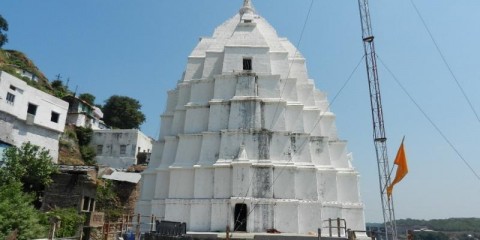
MP, Central India, Boating, Caves, Fort, History, Jyothirlinga, Nature, Temple
Omkareshwar is a sacred place to Hindus. This place is dedicated to Lord Shiva. It is located on Island called Mandhata in Khandwa district of Madhya Pradesh. Shape of this Island is OM which is the symbol of Hindus. Name of Omkareshwar came from the sound Om.
What to see in Omkareshwar:
Omkareshwar Temple: It is the major attraction of Omkareshwar. This is dedicated to Lord Shiva. This temple is looks like Mammaleshwar Temple. Architecture of this temple is Nagara style. This temple is one of the 12 Jyothirlingas of Lord Shiva. According to Hindu beliefs Shiv Ling at Omakreshwar is made up of two parts. One half is called Omkareshwar and other part is known as Amareshwar. Lord Shiva appeared in Omkareshwar Awathara to kill Asuras. Narmada River is located near this temple. Devotees believe that taking a dip in this river will wipe off all the sins.
Siddhanath Temple: This temple is situated on Plateau in Brahminic architecture style. Huge Podium is supporting this temple. This podium is most attractive with frescos; portray elephants in different postures and carvings.
Sri Govinda Bhagvatpada Cave: In this place Sanakaracharya took his diksha and spiritual education as a sage from Sage Govind Bhagwatpad.
24 Avatars: This is the temple complex consist of both Jain and Hindu temples. It has its own style of architecture which is most attractive. During 11th century when Mahmud Ghazni attacked India several temples are destroyed.
Fanasa Ghat: This is one of the bathing ghats of Omkareshwar on the river Narmada.
What to see around Omkareshwar:
Satmatrika Temples: It is located at the place where Narmada and Kaveri Rivers confluence. This place is situated 6kms away from the Island of Omkareshwar. This was constructed in 10th century.
Kedareshwar Temple: This place is located where Kaveri and Narmada rivers confluence which is 6kms away from the Island. It is most famous for its beautiful architecture. Temple was constructed in 11th century.
Shri Omkar Mandhata Temple: This place is located where Kaveri and Narmada rivers confluence. It is one of the 12 Jyothirlingas which was constructed in Nagara Style of Architecture.
Kajal Rani Cave: This is one of the worth seeing place near Omkareswar. It is located 9kms away from Omkareshwar. In this place visitors can see long and broad stretches of the surrounding undulating Lands.
Ranmukteshwar Temple: It is located at the place where Narmada and Kaveri Rivers confluence which is 6kms away from the Island. Devotees offer Channa Dal to the deity. They believe that by doing this, unpaid debts will clear off.
Mamaleshwar Temple: It is located on the opposite side of Narmada River. It is located 10kms away from Omkareshwar. This temple is dedicated to Lord Shiva. Around this temple several other small temples of Lord Shiva are situated.
Getting to Omkareshwar: Only way to reach this place though Road. Khandwa is the nearest place to Omkareshwar. From Khandwa autos and taxis are available to reach Omkareshwar. Khandwa is well connected with road and rail stations.
Getting around Omkareshwar: Boating is the best way to visit some of the nearest places of Omkaeshwar. For some other places taxis and autos are available to reach the surrounding destinations.
Best time to visit Omkareshwar: During Mahashivaratri festival this place is most attractive. Best time to visit this place is at the time of Mahashivratri i.e between February and March. Visiting rush will be more between October to April.
Where to stay in Omkareshwar: Only budget and midrange hotels are available. These hotels provide only basic amenities. During the peak seasons it is essential to book the hotels in advance.
Where to eat in Omkareshwar: only limited restaurants are available. They will serve only vegetarian food. Famous food at this place is Pakodas, Samosa, and Puri Sabzi.

MP, Central India, Fort, History, Nature, Temple, Water falls, Wildlife Sanctuary
Shivpuri is an ancient town in Shivpuri district of Madhya Pradesh. Earlier this place acted as summer camp to Scindia rulers of Gwalior. Historical name of Shivpuri is Sipri. After independence name of this town is changed as Shivpuri. Forest near Shivpuri used as hunting place by the Mughals. In this forest huge crowd of elephants are captured by the Emperor Akbar. Forest is now converted into National Park with the intension to protect wildlife. This place is famous for flora and fauna. Britishers hanged Tatya Tope in Shivpuri. During first war of Independence, Jhansi Rani along with Tatya Tope played a major role.
What to see in Shivpuri:
Madhav Vilas Palace: This is the summer recreation for Scindia’s. From this palace visitors can view Madhav National park and Shivpuri Town very clearly. This Palace is popularly known as The Mahal. Terraces of this Palace are so beautiful and finished with Marble floors. Now this palace is using by Indian Intelligence Bureau to run training centre.
Chhatri: This is the empty tomb of Scindia’s. It reflects both Islamic and Hindu style. Near this tomb another attraction is Mughal garden.
Madhav National Park: It is the main attraction of Shivpuri. Area covered by this is 157sq.km. It was the hunting spot for the Mughals. Trees in this temple are also most attractive. Major attraction of this National Park is Palash, Tendu, Dhawda, kerdhai, Salai etc…Major tree attractions of this place are Palash, Tendu, Dhawda, Kerdhai, Salai, Khair etc…
George Castle: This is located inside the Madhav national Park. It was constructed in 1911 by Jivaji Rao. King George used to stay in the nights when he came for hunting.
Banganga: This place is famous for 52 sacred kunds. It is believed that Arjuna shot an arrow to get water out of the ground when Bhishma is so thirsty. Arjuna and Bhishma are Pandava Brothers.
Other attractions of Shivpuri: Other attractions of Shivpuri are Tatya Tope Memorial, Bhoora Khon Waterfalls, Madua Shiva Temple, Sakhya Sagar Lake and Boat Club.
What to see around Shivpuri:
Karera Bird Sanctuary: It is located 58kms away from Shivpuri. This place is famous for different variety of animals and birds. Another attraction of this sanctuary is Bearded Bustard, Indian Bustard, and Colored Bustard.
Narwar Fort: It is located 41kms away from Shivpuri. This was constructed in Rajput style by Kachwaha Rajputs.
Bhadiya Kund: It is located 12kms away from Shivpuri. During the monsoon season this is the best picnic spot. This place is famous for mineral content.
Other attractions near Shivpuri: Other attractions near Shivpuri are Survaya Ki Garhi, Pawa waterfalls, Son Chiriya Bird Sanctuary, Mohini Pik up Wear, Sultan Garh Falls.
Getting to Shivpuri: Only way to reach this place is through road. From Aligarh, Agra, Jabalpur, Fariadabad, Lucknow, Gwalior buses are available to reach this place. Nearest railway station is at Jhansi which is 92kms away from Shivpuri.
Getting around Shivpuri: Buses, Taxis, Jeeps are available to visit the surrounding places of Shivpuri.
Best time to visit Shivpuri: Best time to visit this place is between November to April.
Where to stay in Shivpuri: Only Budget and midrange hotels are available to stay in Shivpuri. Most of the midrange hotels are located in Chhatri road. In the circular road budget hotels are located. Luxury hotels cannot be seen here.
Where to eat in Shivpuri: Both vegetarian and Non Vegetarian food are available. Famous snacks in Shivpuri are Bhutte Ki Kees, Malpua, Kopra pak, Kebabas. Best food is available in Circular road and Jhansi Road.
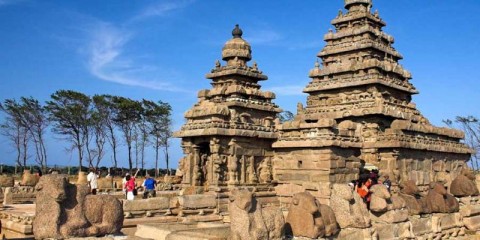
Tamil Nadu, South India, Beach, Boating, Caves, History, Musuem, Nature, Rock Cut Temples, Rock Formations, Temple, Water Sports
Mahabalipuram is an ancient historic town located in Kancheepuram district of Tamilnadu. Other names of this town are Mallapuram and Mamallapattana. Mahabalipuram means city of Great Bali. This place is famous for Stone temples and Stone Carvings. Almost all are built between 7th century and 9th century. Narashimhavarman, Pallava King played a major role in the development of this town during 17th century. Britishers established Modern Mahabalipuram in 1827. Vibrant fence festival is most famous in this town. Stone Sculptures are worth buying at this place.
What to see in Mahabalipuram:
Five Rathas: It is a rock cut temple. This is named after Pandavas in Mahabharata which was built in 7th century. Pallavas built this temple. Five Rathas consists of status of 5 brothers on Pandavas including their wife Draupadi.
Shore Temple: 3 temples are located here, two temples belong to Lord Shiva and one temple belongs to Lord Vishnu. These temples belong to 8th century. Pallavas had constructed these temples in Dravidian style. Granite was used to build the temples.
Mahabalipuram Beach: It is one of the major attractions of the city. Most popular activities in the beach are motor Boating, Surfing, Diving and Sunbathing. Near this beach rock cut temples and Monolithic Rathas can also be seen.
Mahishamardini Cave: It is located in Chingleput district of Mahabalipuram. These caves belong to 8th century and it was dedicated to Mother Goddess. In the centre of the cave major attraction are Carvings of Murugan, Parvati and Shiva.
Descent of the Ganges: It is the rock cut monument belongs to 7th century. This place is famous for open air rock sculptures and Carvings.
Arjuna Penance: This place is famous for the carvings belong to 7th and 8th centuries. Height of this penance is 9meters and 30 meters long. Carvings of this penance belong to animals, birds and Gods.
Trimurti Cave Temple: It is located near Ganesha Ratha. Idols of Shiva, Brahma and Vishnu are placed here. This is most ancient rock cut temple which was built in 7th century.
Krishna’s Butterball: It is a large rock balanced on the hill side. Diameter of this rock is around 5m.
Other places to visit in Mahabalipuram: Other places to visit in Mahabalipuram are Dakshinachitra, Mamallapuram Light House, Mumu Surf Shop, Sculpture museum, Ganesh Ratha Temple, Dharmaraja Cave, and Little Art Gallery.
What to see around Mahabalipuram:
Varaha Cave Temple: This place is famous for the sculptures of Earth Goddess, Holding Bhudevi, and Lord Vishnu. This temple is dedicated to Lord Varaha who is the incarnation of Lord Vishnu. It was built in 7th century which is 27kms away from the temple.
Tigers Cave: It is located 5kms away from Mahabalipuram. This is rock cut temple dedicated to Goddess Durga.
The Crocodile Bank: It is located 14kms away from Mahabalipuram. Snake Farm, African Alligators, Indian Alligators are major attractions of this place.
Thirukalukundram: This temple is dedicated to Lord Shiva. It is located 15kms away from Mahabalipuram. Inscriptions in ancient Indian, English and Dutch Languages can be seen here.
Getting to Mahabalipuram: Only way to reach this place is by road. From cities such as Chennai, Hyderabad, Bangalore, Kochi, Thiruvananthapuram, Delhi buses are available to reach this place. Nearest railway station is located at Chengalpattu which is 29kms away from Mahabalipuram. Nearest airport is Chennai International Airport.
Getting around Mahabalipuram: Mahabalipuram is a small town. All the places in the town are very near to each other. So, best way to see the places in Mahabalipuram is on foot. Taxis and buses are available to visit the places near Mahabalipuram.
Best time to visit Mahabalipuram: Best time to visit this place is between October to March.
Where to stay in Mahabalipuram: Plenty of hotels are available to stay in Mahabalipuram. As beach is located in this town resorts are also available to stay near the beach.
Where to eat in Mahabalipuram: Plenty of restaurants are available to eat in Mahabalipuram. Almost all the restaurants offer non vegetarian. Vegetarian food is available on demand.
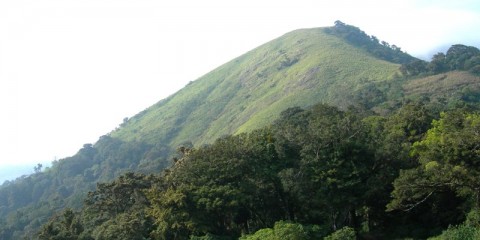
Kerala, South India, Boating, Hill station, Nature, Temple, Trekking, Valley, Water falls, Water Sports, Wildlife Sanctuary
Nelliampathy is a famous hill station surrounded by Coffee and Tea plantations. This is located in Kerala State. It is a beautiful place with salubrious climate and mountain scapes. It is only known as Roof of Palakkad. Palakkad is 52kms away from this hill station. Natural lovers love this place. This hill station is filled up with plantation of coffee and tea along with waterfalls, misty and large green cover Mountains. This is also the best place for the bird watchers. Some of the rare bird species such as Nilgiri Pipit, Broad Tailed Grass bird, Nilgiri Flycatcher, Roller, Great Pied Hornbill, Great Black Woodpecker, Grey Breasted Laughing Thursh etc… can be seen here.
What to see in Nelliampathy:
Padagiri: It is the tallest peak of Nelliampthi hills. Teak plantation is most famous in this peak. It is located 1500m above the sea level. Padagiri is the best weekend and picnic spot.
Nelliyampathy Hill: Trekking is the major attraction of this hill station. This hill is also famous for the plantation of Cardamom, coffee, orange, and tea.
What to see around Nelliampathy:
Nemmara: This small village is located 24kms away from Nelliampathy. Vela Festival is most famous in this village. After harvesting of rice, this village people celebrate Trissur Pooram which is most worth seeing.
Seethakandu: According to Hindu mythology, it is stated that during their exile Lord Rama, Sita and Laxmana stayed in this place. It is located 8kms away from Nelliampathy.
Pothudi Reservoir: It is located 17kms away from Nelliampathy. This is used for irrigation purpose. Boating is the major attraction of this reservoir.
Malampuzha Gardens: This is the children park. Major attractions of this park are ropeway, aquarium, mini zoo, toy train. It is a Japanese Style Garden. This complex also consists of thread gardens, road train trips, Telescope tower, rock Garden and Snake Park. It is located 57kms away from the hill station.
Shimmering Pothudi Reservoir: It is located 20kms away from the hill station. When visitors coming from Nenmara to this hill station Pothudi reservoir can be seen. Interesting fact about this reservoir is this was not built with cement but it was built with jaggery and Quick lime. Boating is the major attraction of this place.
Raja’s Cliff: It is located 20kms away from the hills station. Tea gardens are famous here. Visitors can see giant squirrels, leopards, sambar, and elephants in this place.
Palagapandi Estate: Tea, Cardamom and Coffee plantations are most attractive in this place. This is the main landmark to Nelliampathy.
Nelliampathy Guha: This is a group of hills located at the foothills of Nelliampathy hills. Earlier this was used by the animals to hide them from hunting.
Getting to Nelliampathy: Nelliampathy is well connected with roadways. From the cities such as Thrivuvananthapuram, Kochi, Guruvayoor, Kozhikode, Kottayam, Thrissur, plenty of buses are available to reach this place. Palakkad Junction is the nearest railway station. Nearest airport is located at Coimbatore.
Getting around Nelliampathy: Taxis and Jeeps are available to visit the surrounding places of Nelliampathy.
Best time to visit Nelliampathy: Best time to visit this place is between September to May. Best season for the trekking lovers is between July to September.
Where to stay in Nelliampathy: Plenty of accommodations are available to stay in Nelliampathy. Along with Hotels, resorts are also available to stay at this hill station. Best stay place in Nelliampathy are ITL Holiday resort, Green Land Farm House, Ciscilia heritage, The Whistling Thrush Bungalow.
Where to eat in Nelliampathy: Plenty of restaurants are available to eat in Nelliampathy. Most famous cuisines are Vattal Kozhambu, Morukootan, Rasam, and Sambar.
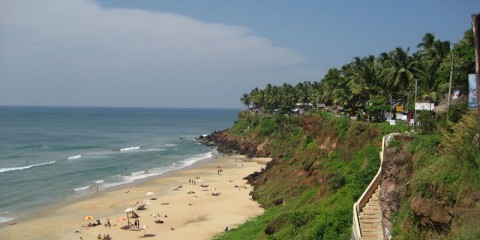
Kerala, South India, Beach, Boating, Fort, hiddent Beaches of Kerala, Masjid, Musuem, Nature, Temple, Water Sports
Varkala is located in Thiruvananthapuram district of Kerala. One of the major attractions of Varkala is Janardhan Swamy Temple which is 2000 years old. According to one myth, it is believed that this was built by Pandyan King when Lord Brahma instructed him to construct a temple to wipe off his sins. Worth buying in Varkala is Artifacts made up of Coconut shell. Most famous festival is Arattu festival. This festival celebrates for 10days during March – April.
What to see in Varkala:
Varkala Beach: This beach is the best place for swimming and sunbathing. Other name of this beach is Papanasam Beach. This beach consists of golden sand and it is surrounded with lush green areas.
Janardanaswami Temple: This is 2000 years old Temple. At the temple large bell is situated. It is believed that Lord Brahma came into the dream of Pandya King and asked to construct the temple to wipe off the sins. Idol of the temple submerged in the sea. With the help of fisherman it was taken out and temple was constructed.
Sivagiri Mutt: This was constructed in 1904 by Sree Narayana Guru who was the Social Reformer and famous Philosopher. This was the residence place of Guru till 1928. Tomb of Narayana Guru can also be seen here.
Vakarla Tunnel: It is one of the historic sites built by Britishers to established inland waterways. Construction of this way started in 1860; it has taken 14years to complete this project.
Vakarla Lighthouse: British rulers constructed this in 18th century. This is the best example for colonial style of architecture.
What to see around Varkala:
Sarkara Devi Temple: It is located at Chirayinkeezhu village which is 14kms away from Varkala. Most famous festival celebrates in this temple is Kaliyoot. As per the Malayalam Month this celebrates during the month of March.
Ponnumthuruthu Island: Water Boat rides are most famous at this place. It is located 10kms away from Vakarla. This island was constructed before 100 years by Lord Shiva and Parvati. Jetty rides and boats are used to reach to this place.
Kappil Lake: It is located 8kms away from Vakarla. It is one of the nearby attractions of Vakarla. In this place backwaters of kerala merges into Arabian Sea. Bridge was constructed over the lake. With the help of this bridge one can see this lake and nearby places very clearly. Coconut groves are another attraction in this place.
Kaduvayil Thangal Dargah: This is dedicated to kaduvayil Thangal Saint. It is located between kallambalam and Attingal which is 14kms away from Varkala.
Anjengo Fort: It is located 11kms away from Vakarla. This fort was built between 17th to 18th centuries.
Kaduvayil Juma Masjid: This is dedicated to Kaduvayil Thangal who was the Muslim Saint. Other name is Kaduvayi Palli.
Getting to Varkala: This place is well connected with road ways. From Thiruvananthapuram and Kochi plenty of buses reach to this place. Varkala is having the railway station which is located between Thiruvananthapuram and Ernakulam. However all the trains do not stop at this place. So it is better to reach Thirvananthapuram Junction. Plenty of taxis are available to reach this place from Thiruvananthapuram. Nearest airport is located at Thiruvananthapuram.
Getting around Varkala: Taxis, Autos are available to visit the surrounding places of Varkala. Scooters and bikes will be given on rent to visit nearby places of Varkala.
Best time to visit Varkala: Best time to visit Varkala is between October to March.
Where to stay in Varkala: Plenty of accommodations are available starting from Budget hotels to luxury hotels to stay in Varkala. Home stays are also available at reasonable costs. Cost of home stays and budget hotels are below Rs.1000.
Where to eat in Varkala: Plenty of restaurants are available to eat in Varkala. For the non vegetarian lovers this is the best place. Tibetan, Italian, Mexican, Continental cuisines are also available.
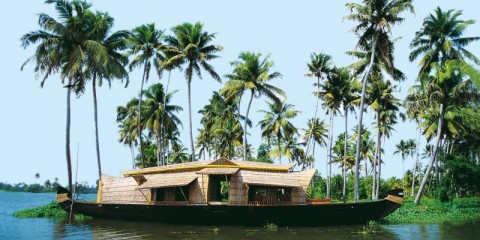
Kerala, South India, Backwater of Keral, Boating, Musuem, Nature, Temple, Wildlife Sanctuary
Kumarakom is backwater tourism in Kerala. It is situated on the backdrop of Vembanad Lake. Kumarakom is derived from the words Kuminja and Akam. Meaning of Kumarakom is Land which is formed by accumulation of sediments. This place is famous for huge variety of Flora and Fauna. Notable person who were born in this place are Alfred George Baker, Bishop Mar Alexader Choolaparampil and Umman Chandi. Boat race is most famous in this place. For the shopping lovers Urulis, decorated traditional door latches, household utensils, bronze lamps are worth buying in this place.
What to see in Kumarakom:
Kumarakom Bird Sanctuary: It is situated on the banks of Kavanar River. Area covered by this sanctuary is 14 acres. Tourists attracts towards Boating riding of this place. Main attractions of this bird sanctuary are Duck, Brahminy Kite, Darter, Moorhen, Cormorant, Heron, Egret, Owl, Cuckoo, and Waterfowl. These are local birds .To this sanctuary several birds come on migration also. Migratory birds are Flycatchers, Lark, Teal, parrot, Siberain Crane. These migratory birds come from two places. Some of these come from Siberia and some of the birds come from Himalayas.
Vabanad Lake: Another attraction of Kumarakom is Vembanad Lake. Other name of this lake is Kochi Lake. In Kerala this is the largest wetland. Nehru Trophy Boat race is the major attraction in this lake. Huge varieties of fishes can be seen in this Lake. It is estimated that there are 150 species of fishes in this lake.
Aymanam Village: other name of this village is Ayemenem. Arundati Roy’s Booker Prize winning novel is God of Small Things. This is set in this village.
Bay Island drift wood Museum: It is the only museum of its kind in India. This museum is the hard work of Mrs.Raji Punnoose. Drift wood museum is closed on Monday.
What to see around Kumarkom:
Aruvikkuzhi waterfalls: Height of these waterfalls is 100 m. It is located 2kms away from Kumarakom.
Pathiramanal: This became an Island when Young Brahmin had divided the lake to perform his prayers. This is the best place to see the migratory birds. It is located 5kms away from Kumarakom.
Muhamma: It is located 33kms away from Kumarakom. Most famous of this temple is Mukkal Vettom Ayyappa. It is believed that Lord Ayyappa trained at this Kalari.
Ettumanoor Shiva Temple: It is located 12kms away from Kumarakom. This temple is famous for unique sculptures and Paintings.
Vaikom Temple: Kerala style architecture is most attractive. This temple is dedicated to Lord Shiva. It is located 31kms away from Kumarakom.
Getting to Kumarakom: Kumarakom is well connected with roadways. From Cities such as Thiruvananthapuram, Cochin, Chennai, Mumbai, Bangalore buses are available to reach this place. Kottayam is the nearest railway head which is 15kms away from Kumarakom. Cochin International Airport is the nearest airport.
Getting around Kumarakom: Boats and Steamers are used to visit the places in Kumarakom. Taxis, Buses, Autos are available to visit the surrounding places of Kumarakom.
Best time to visit Kumarakom: Best time to visit this place is between September to February.
Where to stay in Kumarakom: House boats is the best option to stay in Kumarakom to enjoy the nature. But plenty of hotels are also available to stay in the town. All varieties of hotels are available. Cost of these house boats is raging between Rs.7000 to Rs.15000. Apart from hotels; resorts are also available to stay in Kumarakom.
Where to eat in Kumarakom: Plenty of Eating options in Kumarakom. Non vegetarian food is most famous in this place. Famous dishes of this place are Oysters, Crabs and Prawns cuisines.
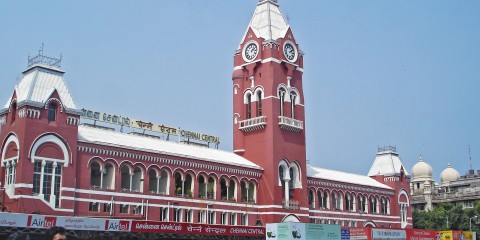
Tamil Nadu, South India, Beach, Boating, Fort, History, Masjid, Musuem, Nature,Temple, Tomb, Wildlife Sanctuary
Chennai is the capital city of Tamilnadu. In India it is the major educational, Cultural and Commercial centre. In Chennai second biggest film industry is located. Famous singers like Sivamani and AR Rahman belongs to Chennai. Since the first century several dynasties ruled this place. Few major dynasties are Pandya, Pallavas, Cheras, and Cholas. This city was majorly developed as commercial centre by Britishers. Major festivals of the city are Pongal, Indian International Leather Fair, and Music Festival.
What to see in Chennai:
Beaches: Plenty of beaches can be seen in this place. Marina Beach is the second longest beach. Other beaches are Cove long, Golden, VGP and Breezy.
MGR Film City: It is one of the major attractions of the city. This was established in 1994 in the memory of MG Ramachandra, actor and Politician.
Thousands Lights Mosque: For the Shia Community of India this place is most sacred place. This place is famous for its architecture. To illuminate the hall 1000 oil lamps are needed to lit.
Madras High Court: It is one of the 3 high courts of pre-independent India. Other high courts are located in Kolkata and Mumbai.
Marundeeswarar Temple: This temple is dedicated to Marundeeswarar Temple who is an incarnation of Lord Shiva. He is considered as God of Medicines. It is located in Thiruvanmiyar.
Government Museum: It is the oldest museum in India. In the college of St.George this was established in 1851. Major attractions of the museum are Decorative art gallery, Tanjore Painting gallery, Archaeology and Anthropology galleries etc.
Forts: Major forts of Chennai are Dutch fort (400 years old), St.Mary’s Church and Fort Museum, Anglican Church, Fort St.George.
Temples: Plenty of temples are located in Chennai. Major temples are Ashthalakshmi Temple, Ayya Vaikundar Nizhal Thangal, Kalingambal Temple, Kapaleeshwara Temple, Vadapalani Murugan Temple etc…
Other attractions of Chennai: Chennai has plenty of museums, parks, Libraries. Weavers Centre, Vivekananda House, Birla planetarium, Prakasam Salai are other major attractions.
What to see around Chennai:
Aignar Anna Zoological Park: It is located 35kms away from Chennai and located at Vandalur. Till 1855 this is inside the city but due to expansion this was shifted to outside of the city in 1877. Zoo consists of 170 species of reptiles, birds and mammals. Major attractions are Nilgiri Langur, Nilgai, Black buck, etc…
Kalakshetra: This is the dance institution situated 10kms away from the city. Training will be given in Music and Bharatnatyam. This was established by Rukmini Devi Arundale in 1936.
Sriperumbudur: Major attraction of this place is Rajiv Gandhi Memorial. Several temples are located in this place. It is located 40kms away from Chennai.
Getting to Chennai: Chennai is well connected with road, rail and airways. In Chennai there are 3 major railway stations. They are Tambaram, Egmore and Chennai Central. Chennai is having both domestic and international airports. From all the cities such as Cochin, Kolkata, Hyderabad, Guwahati, Ahmedabad, Delhi, Mumbai etc buses, trains and air buses are available to reach this place.
Getting around Chennai: Local trains, buses, taxis, autos are available to visit the surrounding places of Chennai.
Best time to visit Chennai: During summer season temperature is high. Visitors can notice heavy rainfall during monsoon season. Monson is from June to September and Mid October to Mid December. Generally tourists do not prefer to visit this place in summer and during monsoon seasons.
Where to stay in Chennai: Plenty of hotels are available to stay in Chennai. Budget and midrange hotels are available at Egmore, T Nagar, and Mylapore. Anna Salai is the place where luxury hotels are located.
Where to eat in Chennai: Plenty of restaurants are available to eat in China. Famous dishes are Puliogare and Tairchadam. Both domestic and international food is available.
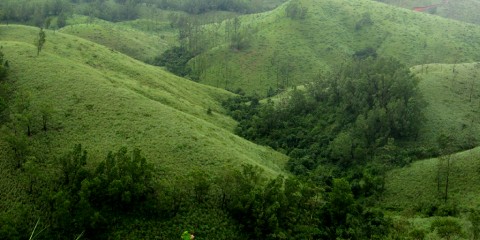
Kerala, South India, Boating, Hill station, Nature, Trekking, Valley, Water falls, Water Sports
Vagamon is a hill station located in Kottayam district of Kerala. It is situated 1100meters above the sea level. This place is most beautiful with dense pine forest, waterfalls, Sparkling Rivulets, Lush Green Vistas. Valley’s in this hill station are so pretty. Huge varieties of orchids can be seen here. Major attractions of this place are Rock Climbing, Mountainning, paragliding and trekking. At Vagamon hill station, 3 beautiful hills are located. They are Kurisumala Hill, Murugan Hill and Thangal Hill.
Major religions of this place are Christian, Muslim, and Hindus. Most famous festival of this hill station is Urs Festival. Biggest tea estates of Kerala are located here. Cloves, Coriander, Star anise, Cardamom, Nutmeg, Fenugreek, Green Pepper, White Pepper, and Black Pepper are worth buying.
What to see in Vagamon:
Kurisumala Ashram: This is located on Kurisumala hill. This was established by Abbot Francis Acharya and Friar Bede Griffiths in 1958. People who are interested in Gandhian thoughts love this place.
Vagamon Falls: Trekking is the major attraction of this place. For the natural lovers this is the best place to enjoy nature.
Vagamon Lake: Local people considered this is the best picnic spot. Green hills are surrounded to Vagamon Lake. Plenty of movies shooted at this place. Major attraction of this place is Boat Rides.
What to see around Vagamon:
Kurisumala: This is the sacred place for Christians. It is located 5kms away from Vagamon. While climbing Kurisumala hill, devotees carry wooden crosses. Near this hill another hill is located i.e Murugan Mala. This hill is sacred to Hindus as Lord Murugan temple is located on the top of this hill. This is a rock cut temple. Trekking is the major attraction of these hills.
Mundakayam Ghat: It is located 8kms away from Vagamon. ASSTA (Adventure Sports and Sustainable Tourism Academy) organises paragliding festival at this place. This is the best place to see different variety of birds.
Barren Hills: It is located 10kms away from Vagamon. Major attractions of this hill are Paragliding, Bird watching, Rock Climbing, and Trekking.
The Pattumalai Church: This church is dedicated to Velankanni Matha. Pattumala means hill with silk.
Getting to Vagamon: Only way to reach this place is though road way. From Madurai, Munnar, Thiruvananthapuram, Kochi, Kottayam buses are available to reach this place. Kottayam is the nearest railway station of Vagamon. Cochin International Airport is the nearest airport to Vagamon.
Getting around Vagamon: Nearest places of Vagamon can go on foot. Taxis, jeeps and buses are available to reach the surrounding places of Vagamon.
Best time to visit Vagamon: Summer and winter season is the best time to visit this place i.e. between October to February. Between June to September, it is not possible to reach this place as land is so slippery.
Where to stay in Vagamon: Plenty of hotels are available to stay in Vagamon. During the summer season rush will be more. So advance booking of hotels is essential. Cost of budget hotels are around Rs.500. Cost of midrange hotels is around Rs.2000. Luxury hotels provide best service.
Where to eat in Vagamon: Plenty of restaurants are available to eat in Vagamon. All the restaurants offer Continental, Chinese, and Indian Cuisines.
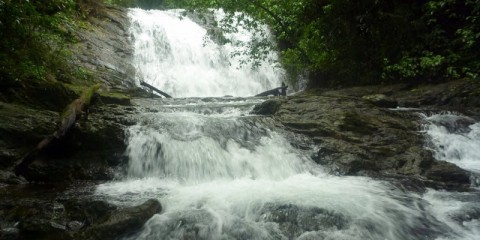
Tamil Nadu, South India, Hill station, Nature, Trekking, Valley, Water falls, Water Sports, Wildlife Sanctuary
Meghamalai is famous mountain ranges in Theni district of Tamilnadu. It is located 1500m above the sea level. This place is famous for tea plantation, coffee plantation, evergreen forests, natural beauty, and salubrious climate. It is located near Suruli River. Twin waterfalls and Silver waterfalls are other attractions of Meghamalai. These ranges are located 1650meters above the sea level. Trekking and waterfall trekking is the major attraction of Meghamalai. Another activity which attracts the tourists is jeep riding though coffee plantation and tea estate. Insulin Plant leaves is available in Meghamalai. These leaves are best medicine for diabetic people. It helps to reduce Sugar levels in blood stream. Cardamom and tea are worth buying of this mountain range.
What to see in Meghamalai:
Highwavys Point: This is the best place to see the beauty of Varusanadu Mountain ranges.
Meghamalai Falls: Twin Waterfalls is the major attraction of this place. Height of these waterfalls is 190feet. Wild animals can be seen in this place. Other name of this falls is Clouds Land Falls.
Vellimalai: It is located in the middle of Meghamalai. Landscapes are most beautiful at this place. Other name is Silver Mountain. Another attraction of this place is cardamom and tea plantations.
Cumbam Valley: There are 3 important sites to see in this valley. They are Upper Manalaru, Iravangalaru, and Maharaja Mettu. Major attraction of this Valley is flora and Fauna.
Dams: In this mountain ranges there are 6 dams are located. Cool breezes at these dams are most enjoyable. These are best picnic spots to enjoy the weekends.
Meghamalai Wildlife Sanctuary: Major attractions of this sanctuary are Grizzled Squirrel wildlife and Periyar Tiger Reserve.
Flora and Fauna: Flora and Fauna are the major attractions of these mountain ranges. Tea and coffee plantation are the major attractions of Flora. Major attractions of Fauna are Flying squirrels, Sambar deer, barking deer, Leopard, Nilgiris tahr, Gaur, Spotted Deer, Tiger etc… Great Indian Hornbills are very rare species. These can be seen here.
What to see around Meghamalai:
Kumbakkarai Falls: Water of these falls consists of mineral contents and herbal contents. These falls are located on Kodaikanal Hills which is 70kms away from Meghamalai.
Periyar National Park: It is one of the largest wild reserves in India. This park is located on the banks of a lake. It is located 90kms away from Meghamalai.
Getting to Meghamalai: Only way to reach this place is through road. Before visiting this place one has to reach Madurai. From Madurai plenty of buses are available to reach to Meghamalai. Madurai is well connected with all the major cities. Nearest railway station is located at Madurai. From Chennai, Mangalore, Bangalore, Hyderabad etc trains are available to reach Madurai. Nearest airport is Madurai Airport. From Bangalore, Trichy, Chennai, Coimbatore airbuses are available to reach Madurai. From Madurai airport , buses are available to reach Meghamalai
Getting around Meghamalai: Only means of transport to visit the surrounding places of Meghamalai is through jeeps.
Best time to visit Meghamalai: Best time to visit Meghamalai is between October to March.
Where to stay in Meghamalai: Limited accommodations are available to stay in Meghamalai. Only budget and midrange hotels are available to stay in Meghamalai. At reasonable cost inspection bungalows are available to stay in Meghamalai.
Where to eat in Meghamalai: Near Cardamom and Tea estates, only two canteens are available to eat in Meghamalai. In these canteens meals are also available.
Lovedale is a small town near Ooty in Tamilnadu state. This place is popularly known as Queen of hill stations. Throughout the year tourist’s rush will be more in this hill station. This is the perfect place for newly married couple. Lovedale acts as a recreation during the summer season. Britishers founded this place in 1812. Gothic Church, Bungalows, old World Cottages here remember us the Britishers as almost all are built in Britishers style. Trekking is the major attraction of this place. Popular trekking trails are Doddabetta and Devashola.
What to see in Lovedale:
Lawrence School: In the memory of Sir Henry Lawrence this was built. In India there are 3 Lawrence schools. Those are located at Sanawar (first Lawrence School), Mount Abu and Lovedale. These institutions are dates back to 150 years. Sir Henry Lawrence was having a dream to provide education to Children of deceased officers, Soldiers of British Indian Army. His dream was fulfilled by establishing these schools.
Church of Ascension: This church is famous for stained glass alter panel which depicted ascension of Jesus to Heaven. It is located inside the Lawrence School Campus. This was constructed in Gothic architectural style.
What to see around Lovedale:
Ooty: It is located 6kms away from Lovedale. This is considered as best honey moon place. It is one of the popular hill stations in India. During the bitishers reign it was acted as summer recreation. Major attractions of this place are Udhagai, Udagamandalam, and Ootacamund.
Coonoor: It is located 17kms away from Lovedale. After Ooty this is the second largest hill station in Nilgiri Hills. Tea cultivates in this place is world famous. Major attractions of this place are Hidden Valley, Sim’s Park, Tiger Hill cemetery, Wellington Golf Course. This is the perfect place for the bird watchers. Hiking and trekking are the other attractions of this place.
Catherine Falls: These are located 16kms away from Lovedale. Waterfalls fall from 250feet. These waterfalls look so beautiful if visitors see this place from Dolphins Nose.
Wellington: It is located 15kms away from Lovedable. Defence staff Services College is located here. It is a cantonment area.
Bandipur National Park: It is located 54kms away from Lovedale. This place is famous for Flora and Fauna.
Madumalai National Park: It is located 58kms away from Lovedale. Major attractions of this park are Leopard, Jungle Cat, Indian Leopard, and Bengal Tiger.
Getting to Lovedale: Way to reach this place is through roadway and railways. It is situated 5kms away from Ooty. Ooty is well connected with other cities such as Kochi, Madurai, Bangalore, Mysore etc… Nearest airport is located at Coimbatore which is 95kms away from Lovedale.
Best time to visit Lovedale: Throughout the year Lovedale is visits by the tourists. During the summer season rush will be more. Best time to visit this place is between February to October.
Where to stay in Lovedale: There are no accommodation facilities in Lovedale. In general people stay in Ooty and visit this place. In Ooty plenty of hotels are available to stay. For the students dormitories are also available. 2 kms away from Lovedale few private guest houses are available to stay.
Where to eat in Lovedale: Very limited options to eat in Lovedale. Street stalls provide dosas and few snacks. Most popular of this place is filter coffee. After having coffee one cannot forget its taste.
Madurai is located in Madurai district of Tamilnadu. It is situated on the banks of river Vaigai. Madurai is the oldest cities in India. This place is famous for Meenakshi Sundareswarar Temple. City is having several names few names are City of four Junctions, City that never sleeps, Temple city, City of Jasmine, and City of Junction. Madurai played a vital role during independence period. Most famous festival in Madurai is Meenakshi Tirukalyyanam. This festival celebrates during April- May for 10 days. Millions of visitors visit this place during this festival season. Other famous festivals in Madurai are Pongal, Chithirai, and Festival of Cradle.
What to see in Madurai:
Meenakshi Temple: Madurai is famous for this temple. This consists of several enclosures. Major attraction of this temple is Beautiful stone work on the walls . Temple is having 14 gateway towers. Ayiram Kal Mandapam is most attractive. Original temple was sacked in 1310 by Malik Kafur, Muslim Invader. Current structure was built between 1623 to 1655 CE.
Mariamman Teppakulam: Main idol of this temple is in the tank. In this temple Lord Vigneshwara is worshipped.
Gandhi Museum: In India there are 5 Gandhi Museums. It is one of those museums. Primary attraction of this museum is Blood stained Dhoti of Gandhi along with photos of his lifetime.
Goripalayam Dargah: This dargah consists of 2 Muslim saint graves. Those saints are Hazrat Sulthan Shamsuddin Badusha and Hazrat Sulthan Alauddin Badusha.
Thirumalai Nayak Palace: This was built by Thirumalai Nayak in 16th century in Indo Sarcenic Architecture style. 3/4th of this palace was ruined. At present only 1/4th palace with 248 pillars.
Koodal Azhagar Temple: Huge statue of Lord Vishnu in front of the temple is the major attraction of this temple. Main Idol of this temple is Lord Vishnu. It is one of the oldest temples of south India.
Alagar Koli: This temple is famous for Sculptures and Stone Carvings. Lord Vishnu is worshipped in this temple.
Kazimar Big Mosque and Maqbara: It was constructed by Hazrat Kazi Syed in 13th century. It is the oldest Mosque in Madurai.
Pazhamudhir Solai: It is one of the six abodes of the lord. This temple is dedicated to Lord Subramanya. It is located near Alagar Koli temple.
What to see around Madurai:
Tirupparankundram Murugan Temple: Temple is dedicated to Lord Murugan. It is located 8kms away from Madurai which was built by Pandya King in 8th century. It is one of the rock cut temples.
Athisayam: It is located 7kms away from Madurai. 20 water rides and plenty of games can be played here.
Vaigai Dam: This is the major source to the irrigation of the surrounding regions. Vaigai Dam is located on the river Vaigai. Other attraction near this dam is Agricultural Research Institute. It is located 69kms away from Madurai.
Getting to Madurai: Madurai is well connected with roadways, railways and airways. From cities such as Coimbatore, Bangalore, Trichy, Chennai, etc buses, trains and airbuses are available to reach Madurai. Madurai airport is 10kms away from the main city.
Getting around Madurai: Buses, taxis, private vehicles, cabs are available to visit the surrounding places of Madurai.
Best time to visit Madurai: Between March to June temperature is extremely hot so better not to come to this place during those months. Best time to visit this place is between October to February.
Where to Stay in Madurai: Plenty of hotels are available to stay in Madurai. Budget range, Midrange and Luxury Hotels are available to stay. As per the requirement of the visitors, they can choose to stay.
Where to eat in Madurai: Plenty of restaurants available to eat in Madurai. Breakfast will not available here. Almost all the restaurants offer Iyengar Style of Meals. Only few restaurants offer Chettinad, Continental, Chinese and South Indian cuisines.
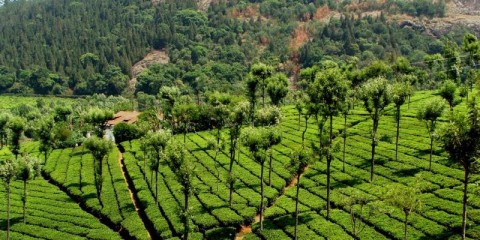
Tamil Nadu, South India, Hill station, History, Nature, Trekking, Valley, Water falls, Water Sports, Wildlife Sanctuary
Coonoor is a Taluk and hill station in Nilgiris district of Tamilnadu. After Ooty this is the second largest hill station in Nilgiri Hills. Britishers discovered this place in 19th century. Britishers developed this place as summer resort. Streets and Bungalows in this place are with English names. Tea cultivates in this place is world famous. Major attractions of this place are Parakeets, thrushes, skylarks, Pipits Cormorants. This is the perfect place for the bird watchers. Hiking and trekking are the other attractions of this place. Every year Coonoor Horticulture Society organises Fruit show at Sim’s park. Thousands of visitors come to this place to see this show.
What to see in Coonoor:
Hidden Valley: Valley which is surrounding to Coonoor is known as Hiden Valley. Lush vegetation and Panoramic Beauty can be seen all around the village. Hidden waterfalls and hidden streams are another attraction of this place.
Sim’s Park: It is park apart from botanical garden. This park is having hundreds of years of history. It was developed by Mr.JD Sims in 1874. Rare species of plants are placed here. All are collected from all over the world. Interesting thing of this park is this it was built in Japanese style. Vegetable and fruit show conducts every year in this show.
Tiger Hill cemetery: This is dates back to 19th century. Britishers used this place to bury the bodies of war soldiers.
Wellington Golf Course: Golf course game can be enjoyed here. Several movies shooted in this place.
What to see around Coonoor:
Catherine Falls: These are located 20kms away from Coonoor. Waterfalls fall from 250feet. These waterfalls look so beautiful if visitors see this place from Dolphins Nose.
Lamb’s Rock: It is located 8kms away from Coonoor. This place is best known for bird view. Giant rock in this place is named as Captain Lamb. Earlier people tried to make this rock as entrance to Burliar Village but this was not possible.
Dolphins Nose : It is located 10kms away from Coonoor. Rock in this place resembles like Dolphins nose so this place is named as Dolphins nose.
Pomological station: It is located on Coonoor and Mettupalayam Ghat Road. This institution is used to make researches on Pomegranates, Apricots, Lemons, Persinments, Peaches, Plums, and Apples. This is well known fruit research institution in India.
The Droog: This is one of the popular trekking places. It is located 15kms away from Coonoor.
Laws Falls: These falls are located 7kms away from Coonoor. Height of these waterfalls is 180feet. This is most beautiful waterfalls.
Getting to Coonoor: Coonoor is well connected though roadways. From Ooty, Coimbatore, and from other cities buses are available to reach this place. Nearest railway station is located at Mettupalayam which is 46kms away from Coonoor. Coimbatore airport is the nearest airport which is 70kms away from Coonoor. This airport is well connected with Bangalore, Chennai and with other metro cities.
Getting around Coonoor: As it is small place on can visit the places on foot. However, buses and autos are available to visit the places in and around of Coonoor.
Best time to visit Coonoor: Coonoor welcomes tourists all over the year. But during the summer season rush will be more
Where to stay in Coonoor: Farm stays and hotels are available to stay in Coonoor. Advance booking of hotels during the summer season is essential. Starting price of single room is Rs.3000. In this amount itself hotels management make arrangements to visit the places in Coonoor.
Where to eat in Coonoor: Very limited and small eateries are available to eat in Coonoor. Famous snacks in Coonoor are Samosas, Vadais, Bhajjis, and Potato Bondas. Though these are small eateries best quality food is available.
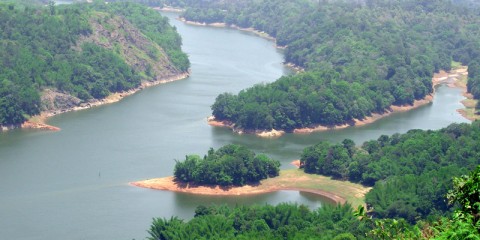
Kerala, South India, Hill station, History, Musuem, Nature, Trekking, Valley, Water falls, Water Sports, Wildlife Sanctuary
Ponmudi is a hill station in Thiruvananthapuram district of Kerala. Ponmudi means The Golden Peak. This is the best place for natural lovers. Major attractions of this hill station are Hiking and Trekking. While trekking people can enjoy with butterflies and mountain flowers. Northern attraction in this area is tea Gardens. Ponmudi is one of the biggest peaks in Western Ghats. It is divided into Upper Sanatorium and Lower Sanatorium. Plenty of animals and birds make this place as their home town.
What to see in Ponmudi:
Ponmudi Falls: These waterfalls are famous for clear water falling.
Kallar: It is the gateway to Ponmudi. Golden Valley located in this place. This is also known as river of stone. Golden valley is on the banks of river kallar. Major attraction of this Kallar is Golden Valley and Meenmuti Falls. This place is considered as best place for trekking lovers as well as natural lover. Huge variety of birds can be seen here. Some birds are native of this place but few come to this place on migration.
Meenmutty Falls: It is located at the base of the Ponmudi hill. This is the best place for Trekking lovers. Persons have to reach this place through trekking in the dense forest. Prior permission from Forest department is essential before visiting this site. Another waterfall named Kombaikani Waterfalls are located very close to this Meenumutty Falls.
Golden Valley: It is located at the base of the Ponmudi hill. Bathing in this Valley in the cool water is most memorable experience.
What to see around Ponmudi:
Orchids and Deer Park: This is one of the major attractions near Ponmudi. It is located 36kms away from Ponmudi. This place is famous for tea plantation. Wind that comes from these plants is so cool and most memorable experience.
Agasthyarkoodam: It is another nearby attraction of Ponmudi. It is the part of Agasthyamala Biophere Reserve. It is located 22kms away from Ponmudi. This place is considered as pilgrim place for Hindus. It is believed that Sage Agasthya resides in this place earlier. He is one of the seven Rishis of Hindu Puranas. This place is most wild so prior permission from forest department is essential.
Mini Zoo: This place is famous for huge number of deer’s. It is located 61kms away from Ponmudi.
Thiruvananthapuram: This place is most famous for the richest God Sri Padmanabhaswamy Temple. Other attractions are Sri Chitra Art Gallery, Planetarium Academy of Magical Sciences, Kanakakunnu Palace etc…
Getting to Ponmudi: Ponmudi is well connected with roadway. Before reaching to Ponmudi one has to reach Thiruvananthapuram. From Thiruvananthapuram plenty of buses are available to reach Ponmudi. Nearest railway station is at Thiruvananthapuram. From all the major cities such as Hyderabad, Mumbai, Chennai, Kolkata etc trains are available. Thiruvananthapuram airport is the nearest airport.
Getting around Ponmudi: Cycles are available to visit the surrounding places of Ponmudi. Jeeps and Privates taxis are also available to visit the surrounding areas of Ponmudi.
Best time to visit Ponmudi: Best time to visit this place is between October to March.
Where to stay in Ponmudi: In this hill station plenty of dormitories and cottages are available to stay in Ponmudi. Lower Sanatorium has several resorts and lodges where as upper sanatorium has only one resort which is running by KTDC. Few Government guest houses are also available in lower sanatorium.
Where to eat in Ponmudi: Very limited options are available to eat in Ponmudi. Only local cuisines are available. But both vegetarian and non vegetarian food is available.
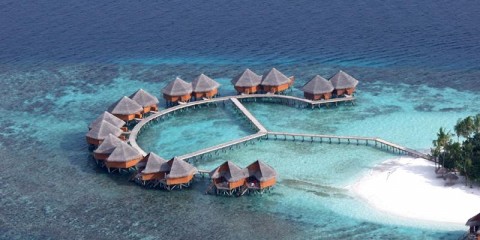
Island, South India, Beach, Boating, Lagoon, Masjid, Nature, Trekking, Water Sports
Lakshadweep is an Island situated in the southern coast of India. Lakshadweep is derived from the word Lakshadweep which means One hundred thousand Islands. During the period of Cheraman Perumal, people were first settled in this place. Lakshadweep is the combination of several islands. Major Islands in the group are Agatti, Kavaratti, Kalpeni Andrott, and Amini. Islamic religion is followed by the people in this Island. Mahl, Jeseri and Malayalam languages are in usage by the people in Lakshadweep. Since 1974 tourism rush started to this Island. This place is most famous for water activities such as Water Sikking, Canoeing, Kayaking, Surfing, Snorkelling, Wind Surfing, Scuba diving.
What to see in Lakshadweep:
Museum: This is located 2kms away from the beach. It is located in Agatti Island. Motor Cycle and Auto rickshaw can be hired to reach this place. Sculptures and Relicas of Marine life is the major attraction of this Island.
Lagoon: This is also located in Agatti Island. Glass bottomed boats are used to reach this place. Logoon can be seen with aquatic animals such as floating reefs, Crabs, Fishes etc… Boat goes 10ft deep inside the water.
Agatti Island: This is the gateway to Lakshadweep Island. In this Island best resorts can be seen. These resorts are offering world’s best swimming beaches.
Kadmat Island: Lime stone exists in this place. For the visitors this is the best place to explore to underwater life.
Lighthouse: This is the oldest lighthouse constructed in 1885 by the Britishers. Height is 300feet.
Bangaram Island: Boating, Scuba, Diving, Snorkelling are most famous activities in this island.
Amini Beach: It is covered with Coral Sandstone. Famous activities are Scuba diving, basking, reef walking, Swimming etc.
Kadmat Islands: This place is famous for water sports such as Scuba diving, Skiing, Yachting, and Kayaking. Visitors can also witness Coconut palms and Lagoons.
Jumaat Mosque: It is most attractive to visitors for its architectural style.
Urja Mosque: In Kavaratti, most important pilgrim spot is Urja Mosque. This was built by Qasim Muhammad Shiekh in 17th century. Highlights of this Mosque are Ceiling and Wood carved Pillars.
Juma Masjid: This place is famous for rare artefacts. It was constructed during Medieval Period. Rai Hilai is believed to an ancient stone anchor.
Bangaram Island: It is one of the attractions in Lakshadweep. This is surrounded by Lagoon Covered with Coral reef.
Minicoy Island: In Lakshadweep region this is the second largest Island. It is in Semi Lunar Shape. This place is famous for fishing. Tuna Canning is manufactured in the factories of this Island.
Pitti Island: Pitti Island is the part of Pitti Bank. This place is well known for huge variety of birds. This is the best place to enjoy for the natural lovers.
What to see around Lakshadweep: As it is an Island there are no places which are most nearest to this Island. Only places to see nearby are, places in India. Few Places in India which are nearby this Island are Kerala, Tamilnadu, and Goa.
Getting to Lakshadweep: This Island is restricted area so it is essential to take prior permission before visiting. Visitors can reach to this place through airways or by Sea. Agatti Island is having Airport. Ships that are used to reach this place are MV Minicoy, MV Aminidvi, MV TipuSultan, and MV Bharatseema.
Getting around Lakshadweep: Boats, Ferries, Helicopters are used to reach other place of Lakshadweep.
Best to visit Lakshadweep: Best time to reach this place is between October to March.
Where to stay in Lakshadweep: Plenty of hotels are available to stay in all the islands of Lakshadweep. Midrange and Luxury Hotels are available. Almost all the people prefer to stay in Resorts of the Islands.
Where to eat in Lakshadweep: Plenty of restaurants are available to eat in Lakshadweep.
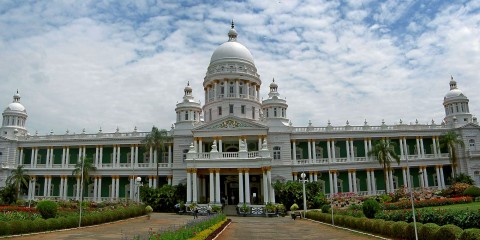
Karnataka, South India, Fort, History, Masjid, Musuem, Nature, Rock Formations, Temple, Tipu Sultan, Trekking, Valley, Water falls, Wildlife Sanctuary
Bangalore is the capital city of Karnataka. Silion Valley of India is the most famous in Bangalore. Most famous educations institutions such as NIMHANS, IIMB, IISc are well established here. Bangalore is home town to Kannada Film Industry. Bangalore is named after the Dish Bendakalooru which means Boiled beans. A small story behind this dish. Once a king halt in this place. At that time a lady served food with boiled beans. The taste of this dish is unforgettable to that king so he named after the town as Bendakalooru. This city is blessed with architectural landmarks, natural lakes, gardens, parks, pubs, shopping malls. Karaga, Pongal, Ugadi are most famous festivals in this city.
What to see in Bangalore:
Benguluru Palace: This was built by Chamaraja Wodeyar in 1887 with Tudor Style of architecture. Most attractive things to be seen in the palace are Paintings of famous personalities, Belongings of royal family, turrets, battlements, Gothic Windows etc…
Tipu’s Palace: It is summer recreation to the Tipu Sultan. This was built in 1791. It is most beautiful wooden structure with carved pillars.
Attara Kacheri: It is the place where Karnataka High court is situated. This was built during the reign of Tipu Sultan. Red bricks are used to construct this two stored building. Neo Classical Architecture of this building is so attractive.
Lakes: All the lakes in Bangalore are manmade lakes. Earlier there were 51 lakes in the city but now there are only 17 Lakes.
Brigade Road: This is the best place for the shopping lovers. All varieties of shops are located here. Clubs, discotheques, pubs are also can be seen here.
Lal Bagh: This is most beautiful garden in Bangalore. Construction of this was started in 1760 by Hyder Ali but it was completed by Tipu Sultan. This garden was later converted into Government Botanical Garden.
Forum Mall: This is the best place for youngsters for shopping purpose. From basic things to luxury items everything is available here.
Cubbon Park: This Park is famous for shaded groves, trees, rare floral species, and innumerable flowers.
Other Attractions of Bangalore: Other attractions in the Bangalore city are Vidhana Soudha, Mahatma Gandhi Road, Film City, Ulsoor Lake, Jumma Masjid, Bangalore Turf Club, St.Mary’s Basilica, Jawaharlal Nehru Planetarium, Venkatappa Art Gallery.
What to see around Bangalore:
Bannerghatta National Park: This was established in 1971 which is located 24kms away from the city. Major attractions of this park are Crocodiles, Tigers, and Lions.
Bugle Rock: It is located in Basavanagudi. This place is famous for massive rock formations. These are belongs to 3000 million years old. It is located 7kms away from Bangalore.
Wonder La: It is located 28kms away from the city. This is most famous amusement park. Major attractions in this park are Wet Rides and Dry Rides.
Other attraction nearby Bangalore: Other attractions nearby Bangalore are Suryanarayana Temple, Pyramid Valley, Nandi Hills, Janapada Loka, Bridavan etc…
Getting to Bangalore: Bangalore is well connected with road, Rail and through airways. From all the cities buses, trains and airbus come to this place.
Getting around Bangalore: Bangalore Metro, Autos, Taxis, Private vehicles are available to visit the surrounding places of Bangalore.
Best time to visit Bangalore: Best time to visit this place is between October to February. Tourists rush will be more during October.
Where to stay in Bangalore: Plenty of accommodations are available to stay in Bangalore. All range of hotels such as budget range, mid range hotels and even five star hotels are available in Bangalore.
Where to eat In Bangalore: Plenty of restaurants are available to eat in Bangalore. Almost all restaurants offer Western, Mughalai French, Mexican, south Indian, Continental, Chinese, Thai, Indian Cuisines.
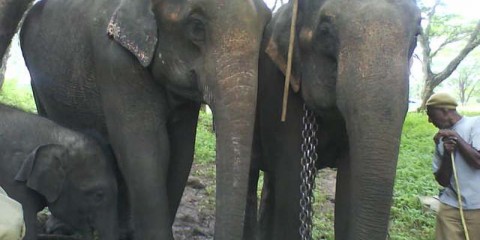
Karnataka, South India, Elephant Rides, Nature, Temple, Trekking, Valley, Water falls, Wildlife Sanctuary
Dubare is a forest camp located in Kodagu district of Karnataka State. This place is famous for elephant camp. In this camp elephants will be given training to perform in Mysore Dussehra. Visitors of this place enjoy fishing, Elephant rides, White water Rafting and Trekking. Another popular activity is Coracle Ride on Kaveri River.
What to see in Dubare:
Elephant Training Camp: This is the major attraction of Dubare. Forest department is managing this camp. In this place huge number of elephants is taking training under the guidance of naturalists. Few birds also give entertainment to the visitors. Those birds are Peacock, Kingfisher and Woodpecker. Tourists want to visit this place for Coracle ride, Wildlife Safari and Elephant Ride.
Veerabhoomi: This is the heritage resort. Atmosphere in this resort is look like Battle Field. Waiters in this resort wear the costumes of Soldiers. Cottages are like Tents. During the evening session cultural activities takes place.
Nisargadhama: Huge variety of Flora and Fauna. Most attractive trees in this sanctuary are Teak Trees, Bamboo Groves and Sandalwood trees. Animal attraction of this sanctuary is Peacock, Deer, Rabbit and Elephant. Visitors enjoy with the activities such as elephant rides and boating.
What to see around Dubare:
Harangi Dam: Height of this dam 47meters. It is placed on Cauvery River. It is located 17kms away from Dubare.
Abba Falls: Earlier name of this falls was Jessie Waterfalls. This name was kept by Britisher who was the Madikeri’s First Captain in the memory of his daughter. Nearby these waterfalls Goddess Kali Temple is situated. It is located 33kms away from Dubare.
Nagarhole National Park: It is located on Nilgiri Mountains which are 28kms away from Dubare. In India this is the one of the best wildlife sanctuary.
Kushalnagar: It is located 15kms away from Dubare. Fraserpet before independence is most famous in this village. This place is located on the banks of Cauvery River.
Coorg: This is the hill station and famous for Tea and coffee plantations. It is the best place to enjoy for the tourists. Other name of this place is Kashmir of the south. It is located 24kms away from Dubare.
Getting to Dubare: Dubare is well connected though roadways. From Mysore and Bangalore plenty of buses are available to reach this place. Nearest railway station is at Mysore. Mysore is well connected with all the major cities. Nearest airport is also located in Mysore. Plenty of taxis are available to reach to Dubare.
Getting around Dubare: Jeeps are available to visit the surrounding places of Dubare.
Best time to visit Dubare: Before visiting this place it is essential to know the best time to enjoy the activities of this place. Best time to visit this place is between September to March.
Where to stay in Dubare: Cottages and resorts are available to stay in Dubare. Best comforts are available even in the cottages. Few Visitors wants to stay in Coorg and Mysore. Plenty of accommodations are available to stay in Dubare.
Where to eat in Dubare: Few places are available to eat in Dubare. Visitors prefer to carry food while gong to this place.
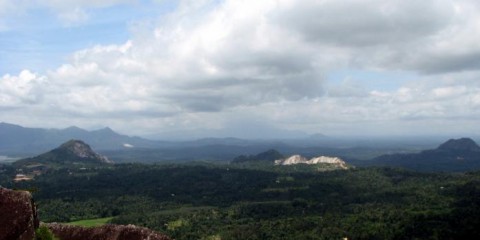
Kerala, South India, Boating, Caves, Hill station, Masjid, Mountian Biking, Musuem, Nature, River crossing, Valley, Water falls, Wildlife Sanctuary
Sultan Bathery is a town in Wayanad district of kerala. Earlier it was named as Sultan’s Battery. In Wayanad district this is the largest town. Town got this name after Tipu Sultan had stationed his battery of field guns, at the time of invaded Kerala. Climate is so cool and it is beautiful place with lush green hills. Spice plantation is most famous in this place. Wayand is the biggest shopping place in Sultan Bathery. Worth buying things in this town are home appliances, electronics, textiles, and agricultural appliances.
What to see in Sultan Bathery:
Sri Maha Ganapathy Temple: It is one of the main attractions of the town. This temple is dedicated to Lord Ganesha. Other shrines of this temple are Goddess Saraswathi, Lord Sri Nagar, Sri Sivan, and Sri Ayyappa.
Jain Temple: This temple was built in 13th century at Bangalore – Kozhikode highway. This temple is famous for beautiful Keralite architectural styles and carvings on the walls. It is dedicated to Lord Ananthanatha Swami.
What to see around Sultan Bathery:
Wayanad Wildlife sanctuary: It is 14kms away from the town. This sanctuary was established in 1973. Area covered by this sanctuary is 344.44 Sq.km. Major Attraction of this sanctuary are Wild dogs, Civets, Panthers, Jungle cats, Monkeys etc…
Agricultural Research station: It is located at Ambalavayal town which is 10kms away from the town. This conducts research on fruits, vegetables, paddy, and spices.
Edakkal Caves: These are considered as earliest human settlement on the planet. Length is 96feet and width is 22 feet.
Thovarimala Ezhuthupara: This place is famous for cave. It is considered as rare historic treasure. This place is located 5kms away from Sultan Bathery and it is located at Nenmeni.
Phantom Rock: This place is famous for skull shaped rock formation. It is popularly known as Cheengeri Mala. It is located 10kms away from the town.
Chethalayam Falls: These falls are located 41kms away from the town. Black granite stones are most famous in this place. Trekking activity takes place at this falls.
Ambalavayal Heritage Museum: It is located 10kms away from the town. Rare artifacts which belong to 2nd century are placed here.
St.Thomas Orthodox Church: It is located in Malankarakkunnu which is 11kms away from the town. Sultan Bathery Diocese is maintaining this church.
Kalpetta: It is located 24kms away from the town. This place is famous for Sanctuaries, valleys, waterfalls and huge number of temples.
Getting to Sultan Bathery: This place is well connected with road. From Karnataka and Kerala buses are available to reach Sultan Bathery. Nearest railway station and air port is located at Kozhikode which is 100kms away from the town.
Getting around Sultan Bathery: Buses and Taxis are available to visit the surrounding places of Sultan Bathery.
Best time to visit Sultan Bathery: Best time to visit this place is between October to March.
Where to stay in Sultan Bathery: Plenty of hotels can be seen in Sultan Bathery. Few resorts are also available to stay in Sultan Bathery.
Where to eat in Sultan Bathery: Huge number of restaurants is available to eat in Sultan Bathery. North Indian, South Indian and Chinese cuisines are available.
Kovalam is a beach town in Thiruvananthapuram City of Kerala. This is the oldest tourist centre. In the world Kovalam is having best beaches. Kovalam consists of 3 beaches. This is the best place for sunbathing. Along with sunbathing other activities such as cultural programs, herbal body massage, Catamaran Cruising and swimming are also available.
Shape of these beaches is like Crescents. This is the best picnic spot to spend the time more leisurely. Near the beach Maharani Lakshmi Bai built a palace to spend her honey moon and she want to spend private time with her consort Prince GV Raja. After seeing and spending few days GV Raja recognised that this place can be developed as tourists place so he invited Thomas Cook to develop this place. He is from United Kingdom.
What to see in Kovalam:
Samudra Beach: It is located on the northern part of Hawwah beach. This beach is mostly use by fisherman for fishing but this is not much developed as tourist centre.
Hawwah Beach: Hawwah beach is the 2nd largest beach in Kovalam. It is the first topless bathing beach. Now this was banned. Its popular name of Eve’s Beach. Sunbathing and Herbal massage is famous in this beach.
Light house Beach: In Kovalam, Lighthouse Beach is the largest beach.
The Lighthouse: It is located on the hillrock of Kurumkal. Due to this lighthouse, Kovalam beach is named as Lighthouse Beach. Height of this lighthouse is 30 meters.
Halcyon Castle: It is also known as Kovalam Palace. This was built by Maharani Lakshmi Bai who is the consort of MR Sri Rama Varma Valiya Koil Thampuran in 1932. This place used as summer resort by Lakshmi Bai.
What to see around Kovalam:
Aruvikkara: It is one of the nearby attractions of Kovalam which is 25kms away. This place is famous for Bhagavathi Temple. This temple is dedicated to Goddess Durga.
Vizhinjam Rock Cut Cave: It is located 1km away from Kovalam. In this place sculptures belong to 8th century can be seen.
Vellayani Lake: It is located 8kms away from Kovalam. In Thiruvananthapuram district this is the largest fresh water lake. Boat race is the main attraction of this lake.
Vizhinjam Marine Aquarium: It is located in Vizhinjam which is 5kms away from Kovalam. World’s rare species of ornamental fish and invertebrates can be seen here.
Karamana River: It is located 14kms away from Kovalam. On this river two dams are located. These are used for irrigation purpose.
Vizhinjam Fishing Harbour: Vizhinjam is the major sea port area. This is the commercial centre for Dutch, Portuguese and Europeans. It is located 5kms away from Kovalam.
Other places to visit nearby Kovalam: Other places to visit nearby Kovalam are Kovalam Jama Masjid, Vizhijam Vilage, Thiruvallam Parasuarama Temple, Valiathura Pier, Analothbhava Matha Church, and Government Agricultural College.
Getting to Kovalam: This place is well connected though roadways. From Thiruvananthapuram Junction plenty of buses are available to reach this place. From Chennai, Nagarcoil, Madurai, Bangalore huge number of buses are available to reach Thiruvananthapuram. Nearest railway station is at Thampanoor. Nearest airport is Thiruvananthapuram Airport.
Getting around Kovalam: Motorcycles, Atuos, Cabs, Private Vehicles are available to visit the surrounding places of Kovalam.
Best Time to visit Kovalam: Best time to visit this place is between September to March.
Where to stay in Kovalam: Plenty of accommodation facilities are available to stay in Kovalam. Budget hotels are available at Light House Beach. Near Hawwah Beach midrange hotels are available. At Light house beach and Chowara, luxury hotels are available.
Where to eat in Kovalam: Plenty of restaurants are available to eat in Kovalam. Both vegetarian and Non Vegetarian food are available. Famous foods in Kovalam are Fried Chicken, Chicken Fry. All varieties of Continental, North Indian, South Indian, Italian, Punjabi, and Chinese are available.
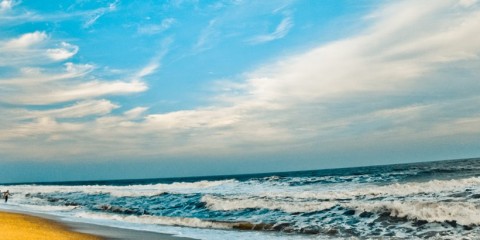
Tamil Nadu, South India, Beach, Boating, Fort, History, Mountian Biking, Musuem, Nature, Temple, Trekking, Valley, Water falls
Puducherry is a Tamil Name which means New Town. It is popularly known as Pondicherry. Earlier this place is acted as French Colony. It is believed that Sage Agastya established his Ashram here. This place is known for best food products, Pottery, leather, Furniture, textiles. Puducherry is also famous for handmade products, glassware, Indian art, Modern decor items, Jewellery, Marmalades and Pickles, Jellies, Sachets, Perfumed oils etc.. Most famous festivals in Puducherry are Bastille Day, Fete De Puducherry, Veerapattinam Car Festival, Villinur Temple car festival.
What to see in Puducherry:
Promenade: This place is famous for old Light house, Dupleix Statue, Statue of Joan of Arc, War Memorial. Promenade is 1.5kms long which is running along the beach.
Temples: In Puducherry, Varadaraja Perumal Temple is the oldest temple dates back to 600 AD. Kanniga Parameswari Temple is best example for French architectural style. This temple is dedicated to Goddess Shakti. Sri Gokilambal Thirukameshwara Temple is another famous temple is Puducherry. This was built in 12th century.
Sri Aurobindo Ashram: This was built by Aurobindo Ghose in 1926. Children who were below 3 years are not allowed to enter into the Ashram.
Botanical Gardens: In this garden more than 1500 species of plants are placed here. This was built in 1826 in French Style. Major attraction of this gardens are fountains, gravel lined paths, beautiful flower beds, pruned trees.
Ananda Ranga Pillai Museum: This was built in the name of Ananda Ranga Pillai who was the governor of Puducherry. Things belongs to 18th century of French India can be seen here.
Churches: Plenty of churches were built during the French Rule. Most famous Churches are Church of Our Lady of Lourdes, Church of Sacred heart of Jesus. These are built in 1700’s.
Jawahar Toy Museum: More than 120 dolls are placed in this museum. Visitors can visit this place except on Monday. All dolls are dressed in different styles each represent each state.
Bharati Memorial Museum: This is dedicated to Subramanya Bharathi who was the Poet and Freedom fights. Romantic compositions, finest patriotic writings of Subramanya Bharati are placed here.
Puducherry Museum: Rare collection of stone and bronze sculptures which belongs to Chola and Pallava dynasties can be seen here.
What to see around Puducherry:
Arikamedu: It is located 4kms away from the city. French, Cholas and Romans style of trade can be seen here. In ancient days this place was acted as Roman Trade centre.
Auroville Beach: This is the best place for swimming. Most of the people spend their weekends in this place. It is located 12kms away from the city.
Serenity Beach: It is located 6kms away from the city. It is the best picnic spot.
Chunnambar: This place is famous for the beach. It is located 8kms away from the city. Chunnambar is the best place for Sunbathing and Water sports.
Getting to Puducherry: Puducherry is well connected through road way. From the cities such as Bangalore, Madurai, Chennai buses are available to reach puducherry. Nearest railway station is at Villupuram which is 35kms away from the city. Chennai International airport is the nearest airport.
Getting around Puducherry: Autos, Cycles, 3 wheelers are available to visit the places in Puducherry. Buses, Autos, private vehicles are available to reach the places which are surrounding to Puducherry.
Best time to visit Puducherry: Best time to visit Puducherry is between October to March.
Where to stay in Puducherry: Plenty of hotels are available to stay in Puducherry. Resorts are also available to stay near beach town.
Where to eat in Puducherry: Huge number of restaurants is available to eat in Puducherry. Most famous cuisines in Puducherry are Portuguese, Tamil, French and Dutch cuisines. Almost all the restaurants provide only non vegetarian. Vegetarian food will be available only on demand.
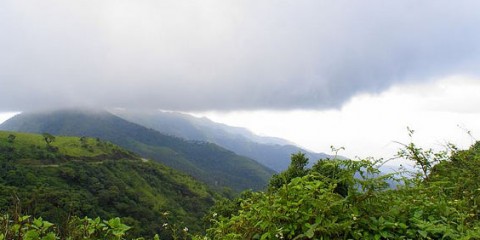
Karnataka, South India, Hill station, History, Mountian Biking, Musuem, Nature, River crossing, Temple, Trekking, Water falls
Chikmagalur is in Chikkamaguluru district in Karnataka. This is the famous hill station. Chikmagalur is known as Coffee Land. Word Chikmagalur means Land of Younger daughter. A small story related to this name. Rukmangada; Chief of Sakrepatna gifted this land as dowry on the occasion of his young daughter. Hiremagulur place is gifted by Rukmangada to his elder daughter. Coffee cultivation is started in 1670 by Babu Budan a Muslim Saint. He bought coffee seeds from Yemen. This place is famous not only for coffee plantation but also for Pilgrimage, Trekking and Wildlife.
What to see in Chikmagalur:
Mahatma Gandhi Park: Earlier it was a forest but now it is converted in to a garden. In the amphitheatre several cultural, music, art events conducted. More than 250 varieties of rose plants are available. Toy attracts children.
Baba Budan Giri Hills: This place is famous for trekking and Hiking. It is also a pilgrim place to both Hindus and Muslims.
Kodanda Ramaswamy Temple: There are 3 parts in the temple. In the 14th century Navagraha was built, in 16th century Mukhamanatapa was built and in 17th century entrance of the temple was built. This was built in Hoysala architectural style.
What to see around Chikmagalur:
Central Coffee Research Institution: with the intension to give the solutions to the problems such as leaf diseases which are affecting coffee plants. It is situated in Chikmagalur and it was established in 1915. Area occupied by this institution is 130 hectares. Out of these 130 hectares, 80.26 hectares are used for the cultivation of Robusta and Arabian coffee. It is located 34kms away from Chikmagalur.
Mullayanagiri: It is the highest peak in Karnataka. This place is one of the best places for trekking. It is situated 22kms away from Chikmagalur.
Bhadra Wildlife Sanctuary: It is located 38kms away from Chikmagalur. Large varieties of Flora and Fauna can be seen here. Area covered by this sanctuary is 29.90 sq.miles. More than 120 plant species can be found here. Few are Toddy Palm, White Teak, Kadam, Slow Match tree etc… Major attractions of fauna are spotted deer, Sambar, Jackal, Wild dog, Jungle Cat, Wild Boar etc…
Hebbe Falls: It is located 60kms away from Chikmagalur. But from Kemmangundi, Karnataka it is just 10kms away. These waterfalls are divided into 2 falls such as Chikka Hebbe means Small Hebbe and Dodda Hebbe means big falls.
Getting to Chikmagalur: This place is well connected with road ways. From the cities such as Hassan, Hubli, Mangalore, Bangalore buses are available to reach Chikmagalur. Kudur is the nearest railway station which is located 40kms away from Chikmagalur. At Mangalore, nearest airport is located which is 160kms away from Chikmagalur.
Getting around Chikmagalur: Autos, Taxis, Jeep and buses are available to visit the places around Chikmagalur. To enjoy the nature and to visit the places of tea and coffee plantations preferring jeep is the best option.
Best time to visit Chikmagalur: Knowing pleasant and best season to visit this place is essential to visit the places in and around Chikmagalur. Best time to visit Chikmagalur is between September to April.
Where to stay in Chikmagalur: Budget, midrange and luxury hotels are available to stay in Chikmagalur. Few resorts are also available to stay in Chikmagalur. Both midrange and luxury hotels are providing recreation facilities for the children. Best hotels in Chikmagalur are The Gateway hotel KM Road, Coffee country stay, The Serai Mugthihalli.
Where to eat in Chikmagalur: Plenty of restaurants are available to eat in Chikmagalur. In this place visitors can find five star hotels also. All the restaurants serve local cuisine. Name of this local food is Malanadu. Famous food in this place is kaikadbu and Akki Roti. Both Indian and international cuisines are available in Chikmagalur.
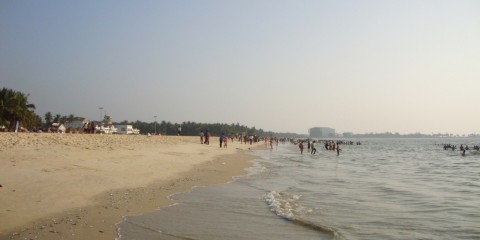
Karnataka, South India, Beach, Boating, Fort, Hill station, History, Nature, River crossing, Temple, Trekking
Malpe is a fishing harbour on the Karnataka Coast. This is famous for its Pristine Beach and Vadabhandeshwara Temple. Four rocky Islands are surrounded to Malpe. Those Islands are Daria Gadara Kalluthe, Kari Illada Kallu, St.Mary’s Island and Daria Bahadurgad. In 4 rocky Islands only 2 became popular among Tourists. They are Daria Bahadurgad and St.Mary’s Islands. Fishing, Coconut industry and tile manufacturing are the prime attractions of the Malpe. Spring Zouk Festival is the famous festival celebrates in Malpe.
What to see in Malpe:
Malpe Beach: Malpe is famous for Malpe Beach. This is most beautiful place with clear blue water, Palm trees. Sand in this beach is in Golden Colour. As Malpe is the fishing harbour this beach is used for fishing. Water sports also conduct here. Activities such as Wave riding, Angling, Boating are most famous in this beach.
Vadabhadeshwara Temple: It is located near by Malpe Port. Idol God of this temple is Lord Balrama. He is the brother of Lord Sri Krishna. Idol in this temple is installed by Sri Madhavacharya, Philosopher. Pilgrims rush will be more on full moon day. Other name of this temple is Anantheshwara.
What to see around Malpe:
Daria Bahadurgad Island: This Island is famous for its Fort. This fort was built by Bidanur Basavappa Naik. Area covered by this Island is 250 yards. Only way to reach this Island is by Ferry. Near the fort Oldest tile factory and few temples are located. It is located 2kms away from Malpe.
Udupi: In Karnataka this is the most important Pilgrim place. This is dedicated to Lord Krishna. Udupi is also famous for software Industry. It industry has developed very quickly in this place. It is located 7kms away from the Malpe.
St.Mary’s Island: This is one of the 4 surrounding Islands near Malpe. In 1498 this was discovered by Vasco Da Gama. He named this Island as EI Pardon De Santa Maria. Ferry is used to reach to this Island. It is located 2kms away from Malpe.
Getting to Malpe: Malpe is well connected with road ways. Udupi is located in National Highway 17. From Udupi several buses are available to reach this place. From the cities such as Goa, Mumbai, Srigeri, karkalla, Mangalore buses are available to reach Udupi. Nearest railway station is located at Udupi. Trains from Delhi, Kochi, Margao, Mangalore, and Mumbai halt at this station. Mangalore is the nearest airport.
Getting around Malpe: Autos and Taxis are available to reach this place. Ferry’s are used to reach the nearest Islands.
Best time to visit Malpe: It is essential to know the best time before visiting any place to avoid inconvenience. Best time to visit this place is between August to March.
Where to stay in Malpe: Plenty of accommodations are available to stay in Malpe. Budget range, Midrange and luxury hotels are available in this fishing harbour. Some resorts are also available to stay in Malpe.
Where to eat in Malpe: Plenty of restaurants are available to eat in Malpe. Along with Indian, International cuisines are also available in this place. Both vegetarian and non vegetarian food is available. Sea food is most popular in this place.
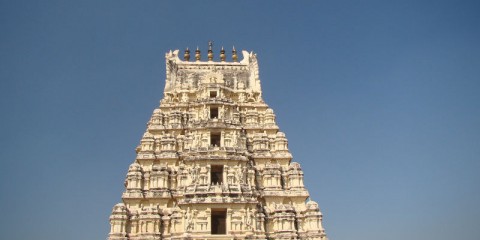
Karnataka, South India, Fort, History, Masjid, Musuem, Nature, Temple, Wildlife Sanctuary
Srirangapatna is a town in Mandya district of Karnataka. This place is famous for its history, culture and religion. It is surrounded by the river Kaveri. This was founded in 9th century by Ganga Dynasty. Earlier this place acted as capital to Khudadad State which belongs to Tipu Sultan. Main temple in Srirangapatna is Ranganathaswamy temple. The temple is one of the set of 3 major temples. These 3 temples are built in 3 different islands on the river kaveri. First temple was dedicated to Antya Ranga which is located at Srirangam, 2nd temple is Madhya Ranga which is located at Shivanasamudra and 3rd temple is Adi Ranga which is placed at Srirangapatana.
What to see in Srirangapatna:
Gumbaz: This is the burial place of Tipu Sultan’s Mother Fatima Begum and father Hyder Ali. Doors here are decorated with Ivory which looks so beautiful. These doors are presented by Lord Dalhousie.
Srirangapatna Fort: This was built by Tipu Sultan. It consists of 4 major entrances. Persian inscriptions can be seen at the each entrance. In 1527 this was constructed in Indo Persian style. Paintings in this fort are most attractive. These paintings say how Tipu Sultans got victory over Britishers.
Sri Ranganathswamy Temple: Srirangapatna is famous for Sri Ranganathswamy Temple .It is located inside the Srirangapatna Fort. This temple is dedicated Lord Krishna.
Daria Dault Bagh and Museum: Museum consists of the things which are used by Tipu Sultan. Major attraction of this museum is ammunitions, arms, engravings, Pencil sketches, Oil Paintings. Daria Dault Bagh is summer recreation of Tipu Sultan.
Other attractions of Srirangapatna: Other attractions of Srirangapatna are Masjid –E-Ala, The Obelisk, Nimishamba Temple, and Place of Martyrdom.
What to see around Srirangapatna:
Karighatta: This place is famous for Karighatta hill which is situated 8kms away from Srirangapatna. On this hill ancient temple is located. Temple is dedicated to Lord Vaikunta Srinivasa.
Mysore: This is the known as City of Palaces. It is the second largest city of Karnataka. It is located 18kms away from Srirangapatna.
Mahadevapura: It is located 18kms away from Srirangapatna. This village is famous for most ancient Shiva Temple which is dates back to 600 years.
Sangama: It is located 3kms away from the town and it is located in Mandya. People believe that if they dip in the water of Sangama all the sins will wash away.
Ranganthittu Bird Sanctuary: In India it is one of the most popular bird sanctuaries. This is also known as Pakshi Kashi of Karnataka. It is located 5kms away from Srirangapatna.
Other attractions nearby Srirangapatna: Other attractions nearby town are Balmuri Falls, Kere Thonur, and Captain Baileys Dungeon.
Getting to Srirangapatna: This place is well connected with roadways. From Bangalore and Mysore buses are available to reach Srirangapatna. Nearest railway station and airport is located at Mysore.
Getting around Srirangapatna: Taxis, Buses and Autos are available to visit the places surrounding to the town.
Best time to visit Srirangapatna: Best time to visit Srirangapatna is between September to March.
Where to stay in Srirangapatna: Plenty of budget and midrange hotels are available to stay in Srirangapatna. Best hotels are available in Mysore and Bangalore road. Best hotels in Srirangapatna are Balaji Garden Resort, Sri Ventakeswara Lodge, Guru Raj continental Hotel, Sri Venkateshwara Lodge, Hotel Nandini, and Amravati Hotel.
Where to eat in Srirangapatna: Plenty of restaurants are available to have food in Srirangapatna. Both vegetarian and Non vegetarian food are available. Chinese, North India and South Indian Cuisines are available.
Belur is a town in Hassan district in Karnataka state. It is located on the banks of river Yagachi. Earlier this place acted as capital of Hoysala Empire. Major attraction of this temple is Chennakeshava Temple. Temples in the city are best example for Hoysala architecture. Carvings of Upanishads, Ramayana and Mahabharata are most attractive on the temples of Belur. Sculptures of animals and birds also placed on the temples. Halebeedu and Belur towns are known as twin towns. Visitors who are visiting to Belur will see Halebeedu also as they feel that it will be incomplete if they visit only Belur.
What to see in Belur:
Chennakesava Temple: This temple is the best example for Hoysala architecture. With the intension to know the victory of King Vishnuvardhana over Cholas in 1117 to whole world this was built. Though construction of this temple was started by King Vishnuvardhana this was completed by his grandson Veera Ballal II. Carvings of Upanishads, Ramayana and Mahabharata on the temple are most attractive. Beautiful work of the craftsman can be known just by seeing the Sculpture Darpan Sundari that means a lady with the mirror. Black stones are used to make each and every sculpture in the temple.
Veeranarayana Temple: This temple is dedicated to Lord Veeranarayana. Other shrines of this temple are Saumya Nayaki, Andal, and Kappe Chenniga. This temple is situated on the west of Chennakesava Temple.
Kappe Chennigraya Temple: This temple is located very near to Chennakesava Temple. It was constructed by Shantala Devi. She is the wife of Hoysala King Vishnuvardhana. This is the temple complex. In this complex 2 other temples are also located. These are built with light green soapstone. For the sculptures of the temple sandalwood and Ivory are used.
Archaeological Museum: This was established in 1970. More than 1500 sculptures and historic articles are placed here. Some of the historic sculptures are Brahma, Saraswati, Dancing Ganesha, Veena Saraswati, Nataraja, and Govardhanagiridhari Krishna.
What to see around Belur:
Hoysaleswara Temple: This is located at Halebeedu which is 16kms away from Belur. For the completion of this temple it has taken 86 years. Walls of the temple say about the Hindu mythology. Another attraction of the temple is Nandi.
Shravanabelagola Temple: This is the main pilgrim centre for the jains. It is situated between two rocky hills. Lord Gomateshwara is worshiped here. It is located 88kms away from Belur.
Pushpagiri Wildlife Sanctuary: It is located 76kms away from Belur. Major attraction of this sanctuary is Mouse deer, Barking deer, spotted deer, Wild Pig, Jungle cat, Porcupine.
Shantaleswara Temple: It is one of the attractions near Belur. This is 16kms away from Belur. This temple is dedicated to Lord Shantaleswara. Main idol is made up of Soft soapstone.
Getting to Belur: This place is well connected though road. From the cities such as Mysore, Mangalore, Bangalore buses are available. Nearest railway station is Hassan. From the cities such as Mumbai, Delhi trains are available. Nearest airport is located at Bangalore.
Getting around Belur: Two wheelers will be given on rent to visit the places in Belur. Autos and buses are available to visit the places around Belur.
Best time to visit Belur: Best time to visit this place is between October to April.
Where to stay in Belur: In Belur accommodations are very limited. Good service will be provided at Midrange hotels. Guest houses at Halebeedu are available. These guest houses are maintaining by KSTDC.
Where to eat in Belur: Only Limited restaurants are available. Restaurants are providing North Indian and south Indian food. It is not possible to get non-vegetarian.
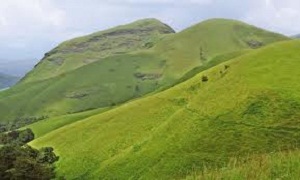
Karnataka, South India, Fort, Hill station, Musuem, Nature, Temple, Trekking, Valley, Water falls, Wildlife Sanctuary
Kudremukh is a small hill station located in Chikkamagaluru district of Karnataka. Kudremukh is also spelled as Kudremukha which means Horse Face. This place is famous for mineral wealth and bio diversity. Recently this place is developed as iron ore mining town. This is the birthplace of 3 rivers. They are Tunga River, Nethravati River and Bhadra River. Besides these rivers trekking which is most famous activity conducts regularly. Several verities of orchids can be seen here. Kudremukh is surrounded by dense forests. This forest is a home town to several animals such as wild dogs, Jackals, Tigers, Leopards, Malabar, Barking deer, Macaques etc…Near Kudremukh sacred ponds are located. They are Varaha Teertha, Rudrea Teertha, Vasishtha Teertha, Naga Teertha, and Amba Teertha.
What to see in Kudremukh:
Kudremukh Peak: This is the favourite spot for the Photographers. It is located 184meters above the sea level. This peak is covered by several mountain peaks.
Kadambi Falls: This place is famous for waterfalls. It is the best place to enjoy in the water.
Kudremukh National Park: It is one of the major attractions of Kudremukh. This is located in the Western Ghats. It is essential for the visitors to take prior permission from the forest officials.
Rajendra Hill: This is situated in Kudremukh region. It is the highest Peak in Karnataka state. This hill is surrounded by Coffee Plantations. Other name of this hill is Babaudan Hill. This place is rich in iron ore.
Lakhya Dam: This place is famous for lush green region. Height of this dam is 100meters. This dam covers 572 hectares of Shola Forest valley.
What to see around Kudremukh:
Kalasa: This place is famous for Kalaseshwara Temple. This temple is dedicated to Lord Shiva. It is located 22kms away from Kudremukh. Kalasa is situated on the banks of Bhadra River. This is the main source for the cultivation purpose.
Annapurneshwari Temple: This is the most ancient temple located in Horanadu which is 27kms away from Kudremukh. It is believed that idol in the temple was installed by sage Agastya.
Rock Cut Garden: This is located near Bhadra Reservoir which is 93kms away from Kudremukh. It is most beautiful and unique garden in Kemmanagundi hill station. Large variety of flowers can be seen here.
Horanadu: This place is located 27kms away from Horanadu. It is famous for Adi Shaktyatmaka Shri Annapoorneshwari Temple. Adi Shakti is the worshipped in this temple. People believe that the person who visited this place will never suffer with shortage of food. Idol in this temple is made up of pure gold.
Jamalabad Fort: This was built by Tipu Sultan in 1794. It is located in Jamalabad village which is 8kms away from Kudremukh.
Hanuman Gundi Waterfalls: Height of these waterfalls is 100feet. This is most attractive place for the trekking lovers. Between October to May is the best time to visit this place. These waterfalls are popularly known as Suthanabbe Waterfalls. It is located 19kms away from Kudremukh.
Getting to Kudremukh: This place is well connected with roadways. From the cities such as Kalasa, Horanadu, Mangalore buses are available. Nearest railway station and airport is located at Mangalore.
Getting around Kudremukh: Taxis and local buses are available to visit the surrounding places of Kudremukh.
Best time to visit Kudremukh: Between October to February is considered as the best time to visit this place.
Where to stay in Kudremukh: Home stays are available to stay in Kudremukh. Government tourism is offering cottages and tent houses with all the amenities to stay in kudremukh.
Where to eat in Kudremukh: Restaurants are not available in Kudremukh. It is advised to carry food before visiting to this place. Only few snacks are available.
Pattadakal is a town located in Bagalkot district of Karnataka State. This place is popularly known as City of the Crown Rubies. In 1987 it was declared as World Heritage Site. Earlier name of this place is known as Kisuvolal. Jain Sanctuaries and Hindu temple Temples are most famous in Pattadakal. Few temples in Pattadakal are built in Nagara Style and few are constructed in Dravidian Style. Nandi in Pattadakal is another major attraction in Pattadakal. Mallikarjuna Temple Festival, Virupaksha Temple, 3days dance festival which is organised by Karnataka Government, Chalukya Utsava are the most famous festivals in Pattadakal.
What to see in Pattadakal:
Virupaksha Temple: After Vikramaditya won in the war against Pallavas, Vikramaditya’s wife expressed her happiness by construed this temple. Major attractions of this temple are Sculptures of Lingodhbhava, Ravananugraha, Nataraja, and Ugranarasimha.
Sangameswara Temple: It is considered as one of the oldest temples in India. This was constructed between 696 AD and 733 AD. Roof and temple hall are similar to Virupaksha Temple. It was constructed in Dravidian Style.
Mallikarjuna Temple: This temple looks like Virupaksha Temple. It was constructed after the construction of Virupaksha Temple. During 7th century this was built by 2nd queen of King Vikramaditya. Her name is Triloyamahadevi.
Papanatha Temple: In this temple 16 massive pillars are supporting the ceiling of the main temple. This is an extraordinary place to see. On the ceilings of the temple, Sculptures of Goddess Parvati and Lord Shiva can be seen.
Kadasiddhesvara and Jambulingeswara Temples: These temples are popularly known as twin temples. These two temples are dedicated to Lord Shiva and these are constructed in 7th century AD. Jambulingeswara Temple was constructed in Nagara Style of Architecture.
Jain Temple: This temple was constructed by Rashtrakutas of Manyakheta in Dravidian Style. It was built in 9th century. Jain Temple is famous for unique Sculptures and Idols.
Museum of the plains and Sculptures Gallery: Archaeological Survey of India is supervising this museum. It is located in Bhutanatha Temple road. Ancient era’s rare Scriptures and sculptures can be seen in this temple.
What to see around Pattadakal:
Galganatha Temple: It is located in Bagalkot. This temple was constructed in 8th century AD. Sculptures of Sanctum with Shiva Linga, Shukanasa and Navaranga are most worth seeing. It is located 11kms away from Pattadakal.
Badami: It is located 22kms away from Pattadakal. Main attractions of Badami are Badami Fort, Cave Temples, Agastya Lake, Bhoothnatha Temple, and Archaeological Museum.
Durga Temple: It is located in Aihole which is 13kms away from Pattadakal. This was constructed in 7th century.
Ravana Phadi Cave: This was built in 6th century. It is the oldest rock cut temple. Carved pillars are major attraction of the temple. It is located 11kms away from Pattadakal.
Lad Khan Temple: It is located 23kms away from Pattadakal. It is the oldest temple constructed by Chalukya Kings in 5th century. This temple is dedicated to Lord Shiva.
Getting to Pattadakal: This place is well connected with Roadways. From cities such as Bidar, Bangalore, Bijapur buses are available. Nearest railway station is located at Hubli which is 127kms away from Pattadakal. Belgium is the nearest airport.
Getting around Pattadakal: Tango’s, buses, autos are available to visit the places surrounding Pattadakal.
Best time to visit Pattadakal: Best time to visit this place is between October to March.
Where to stay in Pattadakal: Plenty of accommodations are available starting from budget hotels to luxury hotels. Best hotel in Pattadakal is Badami Court.
Where to eat in Pattadakal: Plenty of restaurants are available. South Indian, Continental, North Indian cuisines are available to eat.
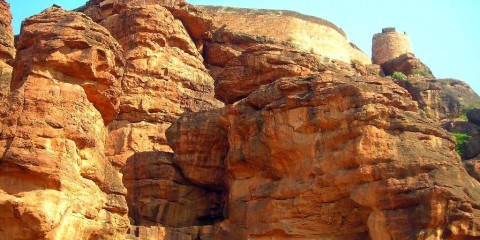
Karnataka, South India, Caves, Fort, History, Mountian Biking, Musuem, Nature, Temple, Trekking, Valley, Water falls
Badami is a town in Bagalkot district of Karnakata. This place is famous for Structural temples and rock cut temples. Cave Temples were built from 5th to 8th centuries. Vatapi and Ilvala hills surround this town. Earlier name of Badami is Vatapi. This town acted as capital of Chalukyas. From 6th century to 8th century this region was ruled by Chalukyas. Almost all the cave temples are built by Mangalesha I and Kirthivarman who were the sons of Pulakesi. Only 4 rock temples were constructed during the reign of Chalukyas. Out of these 4 rock temple, 3 are dedicated to Hindu Gods and remaining temple is dedicated to Jain Tirthankars. Cave Exploration, Trekking and Rock Climbing are famous activities in Badami.
What to see in Badami:
Badami Fort: This is famous for two Shivalayam complexes. Upper one is dedicated to Lord Shiva and lower one is dedicated to Lord Ganesha.
Cave Temples: Major attraction of Badami is Cave temples. Each cave temple is dedicated to one Hindu God. In the First cave temple dancing postures of Lord Shiva with 18 arms are most attractive in this temple. Painting of Goddess Parvati can also be seen here. This temple is dedicated to Lord Shiva. Third cave temple is famous for the carving of Lord Vishnu as this temple was dedicated to Lord Vishnu. Third temple is famous for the carvings of different avatars of Lord Vishnu. Fourth temple is famous for the carvings of Parshavnath. This is dedicated to Jain Tirthankar.
Agastya Lake: All the caves located in the town are facings towards the lake. Temples and hills are located around the lake.
Bhoothnatha Temple: This temple is dedicated to Lord Bhoothnath incarnation of Lord Shiva. Local Sandstone is used to construct this temple. Beautiful sculptures of avatars of Vishnu and Jain figures can be seen here.
Archaeological Museum: 4 Galleries are appeared here. Two are open air galleries. Main attractions of this museum are stone equipments and prehistoric sculptures.
What to see around Badami:
Sangameshvara Temple: It is the oldest temple in Pattadakal which is located 22kms away from Badami. Major attraction of this temple is Nataraja and Ugranarasimha. This was built by Chalukya King.
Virupaksha Temple: This is located in Pattadakal which is 22kms away from Badami. After Vikramaditya won in the war against Pallavas, Vikramaditya’s wife expressed her happiness by construed this temple. Major attractions of this temple are Sculptures of Lingodhbhava, Ravananugraha, Nataraja, and Ugranarasimha.
Ravana Phadi Cave: This was built in 6th century. It is the oldest rock cut temple. Carved pillars are major attraction of the temple. It is located 35kms away from Badami.
Lad Khan Temple: It is located 35kms away from Badami. It is the oldest temple constructed by Chalukya Kings in 5th century. This temple is dedicated to Lord Shiva.
Durga Temple: It is located in Aihole which is 35kms away from Badami. This was constructed in 7th century.
Getting to Badami: This place is well connected with Roadways. From cities such as Bidar, Bangalore, Bijapur buses are available. Nearest railway station is located at Hubli which is 100kms away from Badami. Belgium is the nearest airport.
Getting around Badami: Tango’s, buses, autos are available to visit the places surrounding Badami.
Best time to visit Badami: Best time to visit this place is between October to March.
Where to stay in Badami: Plenty of accommodations are available starting from budget hotels to luxury hotels. Best hotels in Badami are Hotel Mookambika Deluxe, The Heritage Resort, Hotel New Satkar Deluxe, Hotel Mayura Chalukya, and Rajsangam International Hotel.
Where to eat in Badami: Plenty of restaurants are available. South Indian, Continental, North Indian cuisines are available to eat. Huge variety of snacks, Chutneys and rice dishes are famous in Badami.
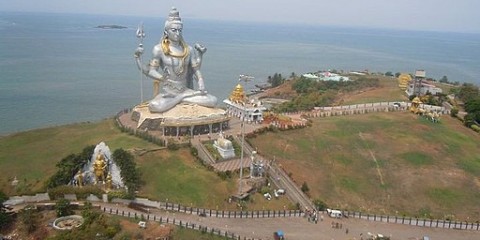
Karnataka, South India, Beach, Boating, History, Nature, River crossing, Temple, Trekking, Valley, Water falls
Gokarna is a town in Uttara Kannada district of State Karnataka. Gokarna is derived from 2 words Go and Karna. Gokarna means Cow’s ear. Agashini and Gangavali rivers confluence in this place. That place looks like cow’s ear. So this town is named as Gokarna. This place is known as Hindu Temple town. Gokarna is also famous for its beaches. Mahashivaratri is most famous festival celebrates here. During this festival season, devotees rush will be more. In this place Atmalinga is placed by Lord Ganesha after he taken Atmalinga from Ravan.
What to see in Gokarna:
Maha Ganpati Temple: Before visiting Mahabaleshwar Temple each and every devotee visits this temple. Idol of Lord Ganesha inside the temple is so tall. On the head of this idol a hole can be seen. It is believed that it was caused when Ravan hit Ganesha in anger when Ganesha kept Atmalinga on the earth.
Mahabaleshwar Temple: This temple is the main attraction of this town. Idol inside the temple is known as Atmalinga. This was given by Lord Shiva to Ravan. In this place people pray for their ancestors and perform obsequies. Granite stone was used to construct this temple. This was built in Dravidian Architectural style.
Half Moon Beach: This is another attraction in the town. This place is ideal for swimming.
Gokarna Beach: Water sports activities are most popular in this area. Apart from sports activities Sun Bathe can also enjoy by the tourists.
Om Beach: Seashore of this beach is in the shape of Om. So it was named as Om. It is the main attractions to the visitors. Activities such as Surfing, Banana Boat, and Jet Skiing are most famous in this beach.
Full Moon Beach / Paradise Beach: This is the best place for the natural lovers. Visitors can reach to this place either by boating or by trekking though forests.
What to see around Gokarna:
Bhadrakali Temple: It is located just 1km away from the town. Goddess Uma worshipped here. She is the incarnation of Goddess Parvati.
Mirjan Fort: It was built by Queen Chennabhairadevi. This fort is famous for its architectural styles. It is located 11kms away from Gokarna.
Kudle Beach: It is located 6kms away from Gokarna. It is one of the 4 beaches in Karnataka.
Yaana: This place is famous for rock formation and waterfalls. Of all the rock formations most famous rock formations are Mohini Shikhara and Bhairaveshwara Shikhara. It is located 49kms away from the town.
Kumta Town: It is located 32kms away from Gokarna. This place is famous for Dhareshwar Beach, Kumta Beach and Baada Beach.
Getting to Gokarna: This place is well connected by the roadways. From the cities such as Hubli, Mangalore, Bangalore buses come to this place on regular basis. Nearest railway station is located at Ankola. This is 20kms away from Gokarna. Trains from Thiruvananthapuram, Mumbai, and Mangalore come to Ankole. From the railway station, Taxis are available to reach to Gokarna. Nearest airport is Dabolim Airport which is 140kms away from Gokarna.
Getting around Gokarna: Taxis are available to visit the surrounding places of Gokarna. Several people would like to visit the places in Gokarna on foot by enjoying the nature.
Best time to visit Gokarna: Best time to visit this place is between October to February.
Where to stay in Gokarna: As this is the most popular pilgrim place all the facilities are available. Budget and Midrange Hotels are available to stay in Gokarna. Most of the visitors want to stay in beach resorts to enjoy the nature.
Where to eat in Gokarna: Best vegetarian food is available. But luxury restaurants are not available. Best restaurants in Gokarna are Namaste Cafe, Mahalaxmi Restaurant, Pai Restaurant, and Pai Hotel.
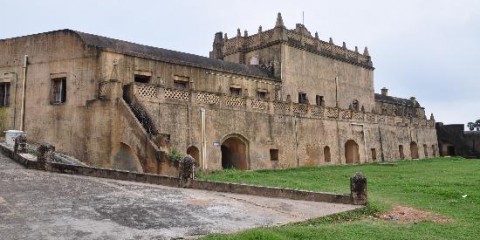
Tamil Nadu, South India, Beach, Fort, History, Musuem, Nature, Temple, Tomb
Tharangambadi is a town in Nagapattinam district of Tamilnadu. Tharangambadi means Place of the singing waves. From 1620 to 1845 this town was acted as Danish Colony. Before it was treated as Danish colony, Pandyas and Cholas ruled this place. From Germany two Protestants came to this place and started printing press. This was the first printing press in India. First book they have printed is Holy Bible. This book was printed in Tamil language. In Tamil they have printed 300 books till the end of 1712.
What to see in Tharangambadi:
Fort Dansborg: This was built in 1620 in Danish architectural style. It was used as residence of Danish Governor. Northern and Western side rooms of the fort are ruined but Southern side rooms of the fort are in good condition.
Town Gate: This was built in 1660. In 1761, Original Gate was destroyed but new one was constructed in its place. It is situated in King’s street.
Danish Museum: This museum says the history of Danish colonies. It was established in 1970. It is located inside the Fort Dansborg. Lamps, Chinese tea Jars, Danish Manuscripts, decorated terracotta objects, Steatite Lamps, Porcelain ware, Glass Objects are most attractive to see in this museum. Wooden Objectives, Spears, Daggers, Swords, Sculptures, different collection of stone are also placed here. All these objectives are used during the Danish rule.
Ziegenbalg Museum Complex: This complex consists of first printing press. It is located in Admiral Street. First book printed in this press was Bible.
The Zion Church: This was the oldest Protestants church in India. The Zion Church was constructed with the combination of Indian and Colonial architectural style. It was constructed in 1701.
The New Jerusalem Church: It was constructed by Rev.Bartholomaeus Ziegenbalg in 1718. It is located in Kings Street.
Old Danish Cemetery: It is located in Kavalamettu Street. Various colonial officials and Danish Tradesmen’s graves can be seen here.
Bungalow on the Beach: It is only dining option in this town. Several regional and Continental dishes can be seen here.
What to see around Tharangambadi:
Thirukkadaiyur: It is located 8kms away from the town. Amritaghateswarar and Abirami Temple is most famous in this town. This was the ancient temple dedicated to Lord Shiva and Goddess Parvati.
Kakaikal: It is located 15kms away from the town. Plenty of rivers and beaches can be seen here. Mangani Festival is famous in this place. Main attractions of this place are Church of Our Lady of Angles, Karaikal Port, Aayiram Kaliamman Temple, Lord Saturn Temple, Karaikal Ammayar temple.
Getting to Tharangambadi: Only way to reach this place is through road. From Thiravarur, Puducherry, Thanjavur, Trichy, Chennai, Vellore cities buses are available. Mayiladuthrai is the nearest railway station which is 24kms away from Tharangambadi. Chennai is the nearest airport of the town.
Getting around Tharangambadi: Autos, Taxis and buses are available to reach the places around Tharangambadi.
Best time to visit Tharangambadi: To avoid inconvenience Visitors has to know best time to visit this place. Best time to visit this place is Between February and August. In the month of December rainfall will be more in the town.
Where to stay in Tharangambadi: Only budget and mid range hotels are available. Few guest houses and dormitories are the other option in Tarangambadi. Best hotels in Tharangambadi are The Bungalow on Beach and Nayak House.
Where to eat in Thamrangambadi: Restaurants are very limited in Thamrangambadi. Only south Indian Cuisines are available.
Chidambaram is a town in Cuddalore district of Tamilnadu. This place was ruled by several dynasties such as Marathas, Vijaynagar Empire, Pandyas, and Cholas. This place is most famous for Chidambaram Temple. This temple is dedicated to Lord Nataraja. Other temples famous in Chidambaram are Thiruvannamalai Arunachaleswara dedicated to Fire, Kalahasti Nathar dedicated to wind, Thiruvanaikaval Jambukeswara dedicated to water, Kanchi Ekambareswara dedicated to Earth. Annamai University which is the largest public residential University is located here.
What to see in Chidambaram:
Nataraja Temple: Chidambaram is known for Nataraja Temple. This temple was dedicated to Lord Shiva. It was reconstructed by Pallavas and Chola Kings. In this temple Lord Shiva is in the form of Nataraja. The deity of this temple represents air and it is known as Akasa Lingam. 5 Sabhas are located inside the temple. They are Raja Sabha, Nritya Sabha, Deva Sabha, Kanaka Sabha and Chit Sabha. Beautiful carvings and hundreds of dancing poses can be seen on the temple.
Annamalai University: In 1929, this was founded by Raja Sir Annamalai Chettair. Plenty of courses offered by this university such as Medicine, Agriculture, Humanities etc…
Thillai Kali Amman Temple: This temple is dedicated to Goddess Kali Amman incarnation of Goddess Parvati. In this temple 4 faces of Kali idol can be seen here. This was built by Kopperunjingan in 13th century.
Tiruvetkalam Temple: This temple is dedicated to Lord Shiva. It was built in 16th century. Inscriptions of Nayaka Period can be seen in this temple. It is believed that Lord Shiva gave Paasupataastram weapon to Arjun.
Tirunallurpperumanam Temple: This temple was dedicated to Lord Shiva. After the defeat of Thanjavur Army, this temple came under the control of British in 1744.
What to see around Chidambaram:
Pitchavaram Backwaters: It is located 15kms away from Chidambaram. Boating and water sport activities are most famous in this place. It is situated in the midst of mangrove forest. Area covered by this forest is 3000 acres.
Chathapurinathar Temple: This temple is located 19kms away from Chidambaram which is situated at Tirukolakka. Every year thousands of visitors come to this place.
Tarangambadi: It is located 51kms away from Chidambaram. Dansborg Fort is most famous in this town. It was built in 17th century.
Vaitheewaran Koli: It is located 24kms away from Chidambaram. This temple is dedicated to Vaidyanatheeswar incarnation of Lord Shiva. Devotees will have bath in Siddhamirtham tank which is place inside the temple complex. It is believed that people who take bath in this tank will be cured from all the diseases.
Neyveli: This area was covered with lush green vegetation. Neyveli is famous for Lignite mines. Lignite is used in Fertilizers, cooking coal and power generation.
Getting to Chidambaram: Chidambaram is well connected through road and Railways. From the cities such as Varanasi, Tirupati, Madurai, Rameswaram, Chennai buses and trains are available. Nearest airport is located at Tiruchirapalli which is 195kms away from Chidambaram.
Getting around Chidambaram: Autos and local buses are available to visit the places around Chidambaram.
Best time to visit Chidambaram: Tourists rush is more during Natyanjali Dance Festival. This festival celebrates in the month of March. Best time to visit this place is between January to March.
Where to stay in Chidambaram: Plenty of accommodations are available to stay in Chidambaram. Budget and midrange hotels are available in Chidambaram. Plenty of Ashrams are located around the main temple. Best hotels in Chidambaram are Shri Murugan Lodge, Alritz Hotel, RK Residency, and Hotel Akshaya.
Where to eat in Chidambaram: Plenty of restaurants are available. All the restaurants provide only vegetarian food.
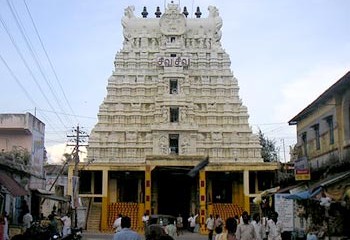
Tamil Nadu, South India, Boating, History, Nature, Temple, Tomb, Wildlife Sanctuary
Rameswaram is a town in Ramanathapuram district in Tamilnadu. Rameswaram is derived from God Ram. This is the famous pilgrim place for Hindus. One of the 12 Jyothirlingas is located here. This place has prominent importance in Ramayana. From this place bridges was built by Rama to Srilanka. In this place Ravan was killed by Rama. It is believed that Sri Ramanathaswamy temple in Rameswaram was built by Sita. Ferry port is located here between Srilanka and India. Unwind beaches are famous. In this place Bay of Bengal is known as Penn Kadal that means female sea and Indian Ocean is known as Male sea or Aaan kadal. To view the Splendid Corals, persons can jump on the boat. But before jumping, one has to see the boat condition. This is the birth place of APJ Abdul Kalam.
What to see in Rameswaram:
Sri Ramanathaswamy Temple: This temple is the major attraction of Rameswaram. It is one of the 12 Jyothirlingas. In this place Lord Rama prayed to shiva to won the battle against Ravana. Corridor of this temple is so large in the world. Around the temple visitors can see 22 theerthams. Before visiting the temple, it is essential to have bath in the theertham.
Gandhamadana Parvatham: In this place footprints of Rama would be worshipped.
Five Faced Hanuman Temple: In this temple 5 faces of Hanuman looks most attractive. Five faces are Lord Garuda, Lord Hayagriva, Lord Narasimha, Lord Adivaraha and Lord Hanuman. Specimen stones of the bridge which was constructed by Rama to lanka can be seen here.
Agni Theertham: It is believed that in this place Lord Rama prayed to Lord Shiva to wash of his sins. Many pilgrims take bath in this theertham.
Adam’s Bridge: This Bridge connects India with neighbouring countries. It is believed that this was built by Lord Rama along with Hanuman and his sena.
Other attractions of Rameswaram: Other attractions of Rameswaram are Badrakaliamman Temple, Gandhimadhana Parvatham, Lakshmana Tirtham, Sugreevar Temple, and Saachi Hanuman Temple.
What to see around Rameswaram:
Erwadi: It is located 24kms away from the town. This place is famous for the tomb of Hazrat Sultan Syed Ibrahim Sahid Aulia.
Nambu Nayagiamman temple: It is located 8kms away from the town. This was built in 14th century and it was dedicated to Lord Rama.
Annai Indira Gandhi Road Bridge / Pamban Bridge: This is the main source to connect the Rameswaram Island to the mainland. Time taken for the construction of this bridge is 14 years. It is located 12kms away from the town.
Kothadaramaswamy Temple: Paintings on the walls of the temple says Ramayana. It is located 10kms away from Rameswaram.
Other attractions around Rameswaram: Other attractions around Rameswaram are Ramananthapuram Water Bird Sanctuary, Jada Tirtham, Ariyaman Beach, Villondi Theertham, and Ramalinga Vilas Palace.
Getting to Rameswaram: This place is well connected through road and railways. From Trichy, Madurai, Kanyakumari, Chennai buses are available to reach this place. Trains from Chennai, Bangalore, Palakkad, Thanjavur, Trichy, Coimbatore, and Madurai halt at Rameswaram Station. Nearest Airport is located at Madurai which is 174kms away from Rameswaram.
Getting around Rameswaram: Best way to see the places around Rameswaram is though bus.
Best time to visit Rameswaram: Throughout the year Rameswaram says welcome to the visitors but best time to visit this place is between October to March.
Where to stay in Rameswaram: Large number of accommodations is available to stay in Rameswaram. Tamilnadu state Tourism department is also offering some guest houses to the visitors. Most of the hotels are located near main temple of Rameswaram.
Where to eat in Rameswaram: Multi Cuisine restaurants are available to have food in Rameswaram. Most of the restaurants offer South Indian Cuisine. In Marwadi Bhojanalay, food will be available at reasonable price.
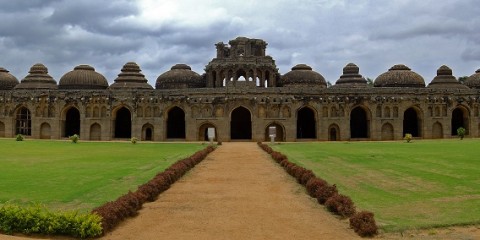
Karnataka, South India, Caves, Fort, Hill station, History, Musuem, Nature, Temple, Trekking, Wildlife Sanctuary
Hampi Attractions : Virupaksha Temple, Lakshmi Narasimha Temple, Hazara Ram Temple, Museum, Matanga Hills,Hemakuta Hill Temple Complex
Hampi is a small town in Karnataka. Other name of this town is Pampa. This name is derived from the river Pampa who is the daughter of Lord Brahma. Earlier it was the capital of Vijayanagar Empire. Several dynasties ruled this town. Main dynasties are Aravidu, Tuluva, Saluva and Sangama. During the Vijayanagar kingdom diamonds were sold on the streets. Name of that street is Pan Supari Street. Silver and Gold used as currencies. Most famous festival celebrates in Hampi is Hampi Utsav or Vijaya Utsav.
What to see in Hampi:
Virupaksha Temple: This temple is dedicated to Lord Shiva. According to Hindu Mythology, Lord Shiva and Pampa got married here. Gopuram of this temple is 50 meters high. It is located on the banks of river Tungabhadra. This temple was built in 7th century. This is the major attraction of Hampi.
Lakshmi Narasimha Temple: There is no idol inside the temple. Based on the architecture it is considered that this temple belongs to Jains. However Carvings of Goddess Lakshmi, Lord Vishnu and Hanuman can be seen on the walls of the temple.
Hazara Ram Temple: On the walls of this temple episodes of Ramayana can be seen. This is one of the small and cute temples in Hampi.
Museum: It is one of the attractions of Hampi. It was divided into 4 parts. They are Hampi’s Ancient culture, Royal remains, daily used things of ancient Hampi People and Models.
Vijaya Vittala Temple: This temple is famous for rich architectural style. It was built in 15th century.
Matanga Hills: On this hill several temple are located. For the trekking lovers this is the best place in Hampi.
Monkey temple: It is located on Anjanadri Hills. This is a small concrete structure. It is believed that it was the birth place of Sri Hanuman.
Other attractions in Hampi: Other attractions in Hampi are Queen’s Bath, Vithala Temple Complex, Hampi Bazar, Balakrishna Temple, and Hemakuta Hill Temple Complex.
What to see around Hampi:
Lotus Temple / Lotus Palace: It is located 3kms away from Hampi. It is two stored building used by Royal ladies. Lotus Bud is carved on its dome so it is named as Lotus temple. This was built in Indo Islamic architectural style.
Mahanavami Dibba: This is the tallest structure. Two stair cases have to climb to the top of this structure. Beautiful Carvings of Horses, Elephants and other carvings can be seen.
Zenance Enclosure: There are 4 structures inside the enclosure. Queen’s Palace is the largest enclosure of all the 4 enclosure. This is specially meant for Royal Women. It is located 3kms away from Hampi.
Elephant Stables: It is located 3kms away from Hampi. There are 11 domed tall chambers. This is specially meant for Royal Elephants.
Other places to visit around Hampi: Other places to visit the places around Hampi are Daroji Bear Sanctuary, Badami Fort, and Badami Cave Temples.
Getting to Hampi: Only way to reach this place is Roadways. From Gokarna, Bangalore buses are available to reach Hampi. Nearest railway station is located at Hospet. Nearest airport is at Bellary.
Getting around Hampi: Best way to see all the places in Hampi is on foot. Autos and Taxis are available to visit the surrounding places of Hampi.
Best time to visit Hampi: Best time to visit this place is between October to December.
Where to stay in Hampi: Plenty of accommodation is available to stay. Budget and Midrange accommodations are available. Cottages with all the modern amenities are also available.
Where to eat in Hampi: Plenty of restaurants are available to eat in Hampi but only vegetarian and local food is available. Famous snacks of this place are Sandwiches and Burgers.
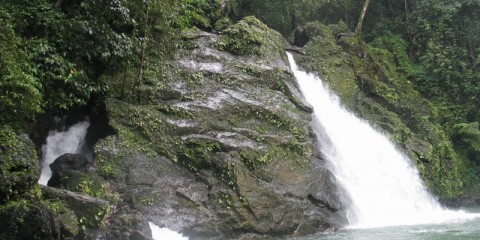
Karnataka, South India, Hill station, History, Nature, Temple, Trekking, Valley, Water falls, Wildlife Sanctuary
Agumbe is a hill station in Shimoga district of Karnataka. This place is most popularly known as Cherrapunji of South. Agumbe is famous for Bio-diversity and scenic beauty. This is the second highest rainfall place in India. Rare species of Flora and Fauna can be seen here. Several medicinal plants such as Ficus, Eugenia, Hoiligarna, Diospyrous, Listsaea, Myristica, and Garcinia can also be seen here. Huge number of King Cobras can be found in Agumbe. Plenty of waterfall areas are located here. Trekking is the major activities in all the waterfalls. Malgudi Days, one of the most popular TV serials was shooted here. One of the main characters is Swamy. A house which was seen as residence of Swamy has completed 100 years but still stands.
What to see in Agumbe:
Agumbe Rainforest Research Station: It is located in the forest area of Agumbe. This complex consists of Mookambika Wildlife Sanctuary, Someshwara Wildlife Sanctuary, Sharasvathi Valley Wildlife Sanctuary, and Kudremukh National Park. In the forest area of Agumbe, King Cobra is the major living Specie.
Barkana Falls: These falls are the 11th highest waterfalls in India. It is located in the forest area of Agumbe. Seeta River water flows through these waterfalls.
Sunset Point: It is located on one of the highest peaks of Western Ghats. Exact location of this point is at 14th hair Pin Bend of mountains road.
Gopala Krishna Temple: This temple was built by Karnataka Rulers in 14th century. It is famous for its beautiful sculptures. This was built in Hoysala architectural and art Style.
Koodlu Theertha Falls: This place is considered as most sacred place. It is believed that thousands of years ago sages are meditated in this place. Monkey Falls are situated very close to these falls.
What to see around Agumbe:
Jogigundi Falls: These hills are located 3kms away from Agumbe. Jogigundi is derived from Jogi. It is believed that saint is meditating inside the cave near these falls.
Onake Abbi Falls: It is located 8kms away from Agumbe. Onake Abbi is derived from the word Onake which means Pounding Stick which is used to Pound the grains.
Kuchikal Falls: These falls are located 50kms away from Agumbe. Kuchikal is a major source for hydro electric projects.
Kudremukh National Park: This place is named after Kudremukh or Horse face range. Recently this park is declared as Tiger Reserve. It is the part of Bhadra Tiger Sanctuary. This sanctuary is having 13 trekking routes.
Getting to Agumbe: Only way to reach this place is though roadways. To reach this place one has to reach Bangalore or Udupi. Nearest railway station is located at Udupi which is 55kms away from Agumbe.
Getting around Agumbe: Local buses and autos are available to visit the places around the village. Best way to see the places in Agumbe is on foot.
Best time to visit Agumbe: Throughout the year visitors can reach this place. But best time is between July to January. As heavy rainfall recorded in Agumbe every year, some of the visitors come to see the rainfall of this area during the monsoon season.
Where to stay in Agumbe: As it is small hill station accommodations are very limited. Visitors prefer to stay in Udupi. In Udupi plenty of hotels are available including Luxury Hotels. Best hotels in Agumbe are Mallya Residency and Doddamane.
Where to eat in Agumbe: Very limited restaurants are located in Agumbe. In this place Vanilla Flavoured Tea is most famous. Tea lovers have to taste this tea.
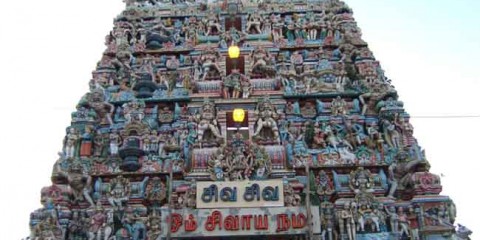
Kerala, South India, Beach, Boating, Fort, History, Musuem, Nature, Temple, Valley, Water falls, Wildlife Sanctuary
Thiruvananthapuram is the capital city of Kerala. Other names of this city are Trivandrum and Evergreen city of India. This place is famous for historical structures, windy backwaters, palm fringed shorelines who are stretched so long and Beaches. Apart from the beaches, this place is also known for its ancient temples. Maharaja Marthanda Varma named this city as Thrivananthapuram. He was the deity of Lord Padmanabhaswamy so he dedicated this city to Lord Padmanabhaswamy. Word Thiruvananthapuram derived from the word Thiru Anantha Puram which means City of Lord Aantha. Britishers had changed this name as Trivandrum. Best places for the shopping lovers are MG Road and Connemara Market. Handloom, Coir, Metal, Horn, Wood are worth buying here.
What to see in Thiruvananthapuram:
Sri Padmanabhaswamy Temple: It is one of the oldest temples in India. This is the best example for Dravidian style of architecture. Temple is dedicated to Lord Padmanabhaswamy who is an incarnation of Lord Vishnu. Recently treasury was discovered in the temple. It is estimating that worth of the treasury would be around Rs.1.2 trillion. This treasury makes the temple richest temple in India.
Zoological Park: This is the first Zoo in India which was opened in 1843. 75 different species of animals can be seen here. Major attraction of this zoo is Royal Bengal Tiger, Asiatic Lion, Indian Rhino, Hippo, snakes etc…
Napier Museum: This was built by Robert Chisholm in Gothic style of architecture. Different collection of Buddhist Status, Carved Wooden Carts, Ceramics, Bronze idols etc attracts the tourists to this place.
Kanakakunnu Palace: This is the summer recreation to Travancore Kings. Today several fairs, exhibitions, cultural events are conducting here.
Other Attractions of Thiruvananthapuram: Other Attractions of Thiruvananthapuram are Natural History Museum, East Fort, Mahadeva Temple, Kuthiramalika Palace Museum.
What to see around Thiruvananthapuram:
Padmanabhapuram Palace: It is one of the most attractive Palaces in the world. This palace is famous for Granite dance halls, Clock Tower, Carved Mahogany Ceilings. It is situated 11kms away from the city.
Veli: It is located 8kms away from Thiruvananthapuram. In this place Veli Lake is separated from Arabian Sea by a sand bar. Water Sports is most famous in Veli.
Shankhumugham Beach: This is the best place to relax in the evening time and during that period one can enjoy sunset. Water is safe for swimming. It is located 8kms away from the city.
Kovalam: It is located 10kms away from the city. This place is famous for Beach. It is one of the best beaches in the world.
Other Attractions nearby Thiruvananthapuram: Other Attractions nearby Thiruvananthapuram are Marine Aquarium, Samudra Beach, Kovalam beach, Poovar Island, Kalari, Neyyar Wildlife Sanctuary.
Getting in Thiruvananthapuram: Thiruvananthapuram is well connected with Road, Rail and Airways. From several cities such as Chennai, Bangalore, Kolkata, Delhi, Mumbai etc buses, trains and airbuses are available to reach this place.
Getting around Thiruvananthapuram: Autos, Taxis, Buses are available to visit the places around Thiruvananthapuram.
Best time to visit Thiruvananthapuram: Best time to visit Thiruvananthapuram is between August to March.
Where to stay in Thiruvananthapuram: Plenty of accommodations are available to stay in the city. Budget, Midrange and luxury hotels are available. Best hotels in Thiruvananthapuram are Travancore Palace Beach, Turtle on the Beach, Maurya Rajadhani and KTDC Chaithram Trivandrum.
Where to eat in Thiruvananthapuram: Plenty of restaurants are available. All the restaurants serve North Indian, Chinese, Tamilian and Local cuisines. Most famous dishes in the city are Fish Molee and Fish Pollichathu. Every visitor of this city has to try these dishes.
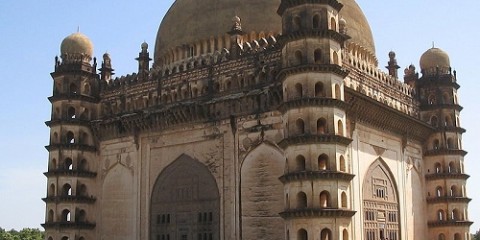
Karnataka, South India, Boating, Fort, History, Masjid, Musuem, Nature, Temple, Tomby
Bijapur is a historical town in Karnataka state. This place is famous for Mosques, gardens, forts, architectural sculptures and historical monuments. Bijapur was established by Kalyani Chalukyas in 10th century. It was the golden period for the city during the period of Yusuf Adil Shah in 15th century. In those days it was called as Vijayapura which means City of Victory. Another attraction of the city is Gol Gumbaz which is one of the largest domes in the world.
What to see in Bijapur:
Gol Gumbaz: It is the tomb of Mohammed Adil Shah. If any person make noise in the central chamber of the structure that sound will be heard till 37meters. Yaqut of Dabul, a famous architect, designed this structure. Diameter of this tomb is 124feet.
Ibrahim Rauza: It was built on a single rock. This is the tomb of Ibrahim Rauza. With the inspiration of Taj Mahal this was built. This was designed by Malik Sandal.
Archaeological Museum: Weapons, Inscriptions, Sculptures belong to 11th century are the major attraction of this museum.
Malik-e-Maidan: In Medieval India it was the largest canon. Weight is 55tonnes, diameter is 1.5meters and length is 4meters. After the victory in the battle this was brought from Ahmedabad. It looks like a lion’s head with an elephant being crushed between the teeth.
Gagan Mahal: This mahal is having 4 huge wooden pillars. Gagan Mahal means Sky Palace. In 1681, Sikander Adil Shah surrenders himself to Aurangzeb in this Mahal.
Asar Mahal: It was used as Justice hall. This Mahal was built in 1646 by Mohammed Adil Shah. 3 tanks are placed inside the building. Women are not allowed into the building.
Jama Masjid: This is the largest Masjid in Deccan Region. To celebrate victory in the battle of Talikota this was built by Adil Shah between 1557 to 1580.
Other places to visit in Bijapur: Other places to visit in Bijapur are Citadel, Anand Mahal, Bara Kaman, and Chand Bawadi.
What to see around Bijapur:
Mehtar Mahal: This is located 6kms away from the city. Mehtar Mahal means Sweepers Palace. It was built in 1620AD. A sweeper received this gift from Ibrahim Adil Shah I.
Narasimha Temple: It is located 5kms away from the city. It is believed that in this place Kumara Valmiki wrote Thovari Ramayana in Kannada.
Almatti Dam: This was built on river Krishna. It is located 68kms away from the city. It provides irrigation water to Koppal, Raichur, Gulbarga, Bagalkot and Bijapur.
Kudalasangama: This pilgrim centre is dates back to 800 years. In this place two Nandi’s jointly sits before Shivalingam.
Pangarh Fort: This is located opposite to Lotus Lake. Boating and Fishing are most famous in this place. It is located 25kms away from the city.
Getting to Bijapur: Bijapur is well connected with Road and Railways. From the places such as Sholapur, Bidar, Badami, Bangalore, Mumbai buses and trains are available to reach this place. Belgaum airport is the nearest airport.
Getting around Bijapur: Buses, Autos, Taxis are available to visit the surrounding places of Bijapur.
Best time to visit Bijapur: Between October to March tourists feel comfortable to reach this place. So this is the best time to reach this place.
Where to stay in Bijapur: Plenty of hotels are available to stay in Bijapur but only budget and midrange hotels. Luxury hotels are not available. Government is also provide guest house facility to the tourists. Best hotels are Hotel Kanishka International, Hotel Navaratna, Hotel Pleasant Stay and Hotel Madhuvan International.
Where to eat in Bijapur: Plenty of restaurants are available to eat. Chinese, South Indian, Mughalai, Hyderabadi cuisines are available to eat.
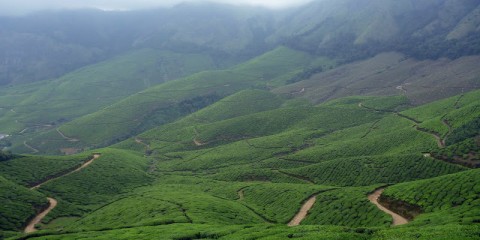
Kerala, South India, History, Nature, Temple, Trekking, Valley, Water falls, Wildlife Sanctuary
Kumily is a town in Idukki District of Kerala State. This town is always busy with the visitors. Kumily is famous for wildlife sanctuary, spice gardens, waterfalls and lush greenery. Of all the attractions Spice market will placed the first position. This is the best place for the shopping lovers. Special coffee, tea, spiced preserves, spice chocolates are famous in this market to purchase. Apart from Spice Products, visitors also can buy traditional handlooms of Kerala, traditional pickles of Kerala, bamboo products and Jute Products.
What to see in Kumily:
Abraham’s Spice Garden: This is located on the road which leads to Thekkady. It is a Spice Organic garden. This is the best place to know about cultivation of several kinds of spices, Ayurveda and organic farming.
Kumily waterfalls: These waterfalls are major attraction in the town. Trekking activity conducts here.
Kadathanadan Kalari centre: This centre is most famous for Kalaripayattu martial arts. Best training will be given in martial arts. Kumily is considered as birth place to Karate.
What to see around Kumily:
Periyar Wildlife Sanctuary: In 1978 this sanctuary was declared as Tiger Reserve. This wildlife sanctuary is located in Thekkady which is 31kms away from the town. Area covered by this sanctuary is 777 sq.kms. Major attraction of this sanctuary are lion tailed macaque, leopard, bison, Nilgiri Langur, Common Languars, Elephants. Apart from animals, large number of amphibians, fishes, and reptile species also can be seen here. Other attractions of this place are 265 species of birds and 1965 species of flowering plants. Vandiperiyar: It is located 13kms away from Kumily. This place is major trading centre for pepper, Coffee and Tea.
Mangala Devi Temple: This temple is dedicated to Goddess Mangala. Prior permission from wildlife warden is essential to visit this temple. It was constructed in Pandian style of architecture. It is located at Idukki which is 12kms away from Kumily.
Vandanmedu: In the world this is one of the largest trade centres for Cardamom. Near this place one can enjoy the activities like trekking, Rock Climbing. It is located 18kms away from Kumily.
Murikkady: It is located 4kms away from Kumily. This place is famous for Cardamom, Coffee and Pepper Plantations. It is considered as best picnic spot. Murikkady is located near Periyar Tiger Reserve.
Getting to Kumily: Trough roadways this place is well connected. From the cities such as Thiruvananthapuram, Kochi, Kottayam etc… Plenty of buses come to Kumily on regular basis. Nearest railway station is located at Kottayam which is 114 kms away from Kumily. From Kottayam, taxis, autos, and buses are available to reach Kumily. Nearest airport is located at Madurai.
Getting around Kumily: As it is small village one can visit the places in the village on foot. Autos are available to visit the places around Kumily.
Best time to visit Kumily: Between November to May tourists rush will be more. Between October to January Sabarimala Devotees rush will be more. Throughout the year this place is so busy with the visitors.
Where to stay in Kumily: Plenty of accommodation is available to stay in Kumily but only budget and midrange hotels. Visitors should not expect luxury hotels.
Where to eat in Kumily: Plenty of restaurants are available. All the restaurants offer Italian, seafood, Chinese and local cuisines.
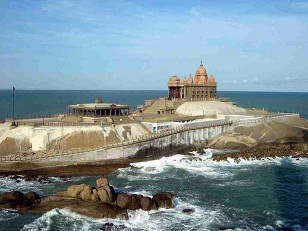
Tamil Nadu, South India, Beach, History, Musuem, Nature, Temple, Valley, Water falls
Kanyakumari is a town in Kanyakumari district of Tamilnadu. This place was named after Goddess KanyaKumari who is the incarnation of Goddess Parvati. Earlier this was called as Cape Comorin. This place is famous for Pilgrimage. It is the confluence point of Indian Ocean, Bay of Bengal and Arabian Sea. Sunrise and Sunset from the beaches are most attractive. Swami Vivekananda spent his meditation time in this place. Several rulers ruled this place such as Pandayas, Nayaks, Cheras, and Cholas. Sarees and other textiles are worth buying.
What to see in Kanyakumari:
Kanyakumari Temple: This temple is dedicated to Kumari Amman who kept waiting for her groom on her wedding day but he did not come. Nose ring of the statue is so bright. One can identify this from long distance also.
Tiruvalluvar Statue: Height of this statue is 133ft. This is the statue of Saint, Poet Tiruvalluvar. He was the writer of Tirukkural.
Vivekananda Rock Memorial: This was built by Ramakrishna mission in 1970. It was built on a small island off the shore of Kanyakumari. This is dedicated to Swami Vivekananda.
Gandhi Memorial: This is designed like a temple which is dedicated to Gandhi. In this place urn can be seen. In that Urn, Gandhi’s ashes were kept before immersion. Position of the urn is kept in such a position that on 2nd Oct (which is the birth day of Gandhi) first ray of light fall on the urn.
Government Museum: It is having great historical importance. Tribal Objects, woodcarving, Bronze sculpture, Old Coins are placed here.
Kanyakumari Beach: This one of the most attractive place for the tourists. Sunrise and sunset during full moon days in the month of April is most popular.
What to see around Kanyakumari:
Padmanabhapuram Palace: This Palace is the best example for rich cultural heritage. It is located in Padmanabhapuram village in Kanyakumari district which is 33kms away from the city.
Mathur Aqueduct: This was built on Pahrali River. It is the highest and longest aqueduct in South Asia. It is located 46kms away from the city.
Udayagiri Fort: This is one of the ancient forts which were constructed in 1600 AD. It is located 32kms away from the city.
Vattakottai Fort: It is one of the major attractions near Kanyakumari. This was built in 18th century. It is located 9kms away from the city.
Chitharal: It is located 50kms away from Kanyakumari. This place is most famous for Jain Monuments.
Pechiparai Reservoir: During the reign of Maharaja Sri Moolam Thirunal this was built. Tourist come to this place thought-out the year. It is located 56kms away from the city.
Muttom Beach: 100 years old Light house and sunset from this beach are the attractions of this place. It is located 36kms away from kanayakumari.
Sothavilai Beach: It is one of the longest beaches of South India. This beach is situated 10kms away from the city.
Olakaruvi Falls: It is located 21kms from the city. This place is most attractive place for the visitors due to waterfalls
Getting to Kanyakumari: This place is well connected though road and railways. From the cities like Jammu Tawi, Kolkata, Delhi, Chennai, Mumbai, Bangalore etc buses and trains are available. Nearest airport is Thiruvananthapuram International Airport.
Getting around Kanyakumari: Buses, autos, taxis are available to visit the place around the city.
Best time to visit Kanyakumari: Between October to March tourists rush will be more in this place. So this is time is considered as best time to visit.
Where to stay In Kanyakumari: Plenty of hotels are available in Kanyakumari. Huge number of Budget hotels and midrange hotels are located in Kovalam Road and in East Car Street. At Kottakari Road and Sunset Point luxury hotels are available.
Where to eat In Kanyakumari: Plenty of restaurants are available all over the city. Continental, North Indian, South Indian, Italian, Punjabi, Chinese cuisines are available in all the restaurants.
Thanjavur is a city in Thanjavur district of Tamilnadu. Word Thanjavur is derived from Tanjan, a legendary demon in Hindu Mythology. This city is stated as cultural capital of Tamilnadu. Thanjavur is famous for Paintings, history, handicrafts, arts, temples. Rice cultivation is more in Thanjavur so this place is also known as Rice Bowl of Tamilnadu. Cholas played the major role in developing this city as centre for culture and art. Worth buying articles in Thanjavur are Jewellery, Brass Idols, Bronze Idols and Paintings.
What to see in Thanjavur:
Thanjavur Royal Palace: It is situated within the vijayanagara Fort Complex which is the residence of Thanjavur Nayak Kings. Royal palace was built in 16th century.
Brihadeeshwara Temple: This Temple is located in centre of the city. It is one of the largest temples in the world. Temple is dedicated to Lord Shiva. It is famous for its beautiful architectural style. Temple was build in 11th century by Raja raja Chola I.
Vijaynagara Fort: Fort construction started by Vijay Raghav, Nayak King but completed by Maratha rulers. Other attractive places within the fort are Siva Ganga Gardens, Art Gallery, Serfoji’s Saraswati Mahal Library, Sangeetha Mahal, and Thanjavur Palace.
Thanjavur Art Gallery: It is located within the Thanjavur Royal Palace. Rare collection of Bronze and Stone Statues can be seen here. Chola period Idols are also placed here.
Nandi Bull: Nandi is always having its own importance in Hindu mythology. Height is 12feet, Length is 19.5feet, and width is 18.25feet. Weight will be more than 25tonnes.
Siva Ganga Gardens: Major attraction of this garden is huge tank which provides drinking water to the city people. This was built in 16th century.
Vellai Puliar Temple: This is one of the ancient temples in Thanjavur. Major attraction is Lord Ganesha which is made up of white stone.
Schwartz Church: This is located inside the Thanjavur Palace. In 1779, this was built by Raja Serfoji.
Sangeetha Mahal: This is another attraction inside the Thanjavur Palace. It is the hall of music built in 1600. This is the theatre adorned with gems.
Our Lady of Sorrows Church: This is the oldest church in the city which was built in 1740AD by an Italian Jesuit Priest.
What to see around Thanjavur:
Papanasam: It is located 30kms away from the city. This place consists of 108 Sivalayam Temples. Another attraction is Granary. It is having the capacity to store 3000 Kalams of rice.
Mercury Temple: It is located 16kms away from Thanjavur. This temple is dedicated to Lord Mercury. Other name of the temple is Sri Suvedaranyar Temple.
Grand Anicut / Kallanai: It is located 45kms away from Thanjavur. Around 1st century this was built by Chola King Karikalan. One interesting thing is this building is still in use.
Airavateswara Temple: It is one of the pilgrim places nearby Thanjavur. This temple is located in Kumbakonam which is 35kms away from Thanjavur. Temple is dedicated to Lord Airavateshwara who is an incarnation of Lord Shiva.
Chandra Bagawan Temple: It is located 25kms away from the city. This temple is famous for Navagraha Temples.
Getting to Thanjavur: This place is well connected with road ways. Nearest railway station and airport are located in Trichy.
Getting around Thanjavur: Autos, Buses and Taxis are available to visit the places around Thanjavur.
Best time to visit Thanjavur: October to April is the best time to visit this place.
Where to stay in Thanjavur: Plenty of accommodations are available. As per the requirement one can choose the hotels. Best hotels are Hotel Star Residency, Sangam Hotels, and Hotel Oriented Towers.
Where to eat in Thanjavur: Plenty of restaurants are available. Continental, Chinese, Indian cuisines are available.
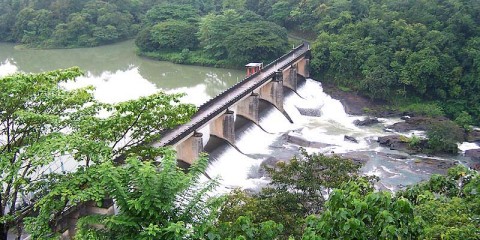
Kerala, South India, Boating, Hill station, History, Mountian Biking, Nature, River crossing, Temple, Trekking, Valley, Water falls, Wildlife Sanctuary
Thenmala is a small town in Kollam district off Kerala. This word is derived from the words Then and Mala. Then means Honey and Mala means Mountain. Thenmala means mountain where honey flows. Major attraction of Thenmala is rhythmic ballad of water at musical fountain. This water comes out along with light and sound. Lotus pond is another major attraction of the city. In this pond several aquatic plants can be seen. These are so attractive. This place is famous for activities such as river crossing, rappelling, rock climbing, mountain biking. Apart from these activities river rafting is another most attractive activity in Thenmala. At Shop Court area various forest products are available.
What to see in Thenmala:
Thenmala Dam: It is a famous picnic spot in Kerala. This dam is one of the largest reservoirs in Kerala. Thenmala dam is second largest irrigation project in Kerala.
Musical Dancing Fountain: It is one of the most attractive places in Thenmala. Here we can see rhythmic ballad of water at musical fountain. This water comes out along with light and sound.
Aryankavu Shastha Temple: This temple is dedicated to Lord Ayyappa. Aryankavu Shantha Temple is famous for mural paintings and Sculptures. Pandi Raja of Madhurai installed the idol of this temple.
Nakshatravanam: This place is famous for nurseries. Thenmala Eco-tourism Society is maintaining this society. Trees in this place are having Economic, Aesthetic and Medicinal Values. Astrologers consider each tree as one star. Some of the trees such as Jamun, Cluster fig, Indian Gooseberry, Nux Vomica are considered as Rohini, Karthika, Bharani and Aswani.
What to see around Thenmala:
Palaruvi Waterfalls: It is situated 15kms away from Thenmala. Palaruvi is derived from the words Pal and Aruvi. Pal means Stream of Milk. Aruvi means waterfalls. Local people believe that these waterfalls are having medicinal properties.
Kulathuppuzha Sastha Temple: It is an ancient temple which is dedicated to Lord Ayyappa. Raja Pandalam installed the idol of this temple as Manikanta. Famous festival celebrates here is Vishu Mahotsavam. It is located 11kms away from Thenmala.
Suspension /Hanging Bridge: It is situated in Punalur Town which is 20kms away from Thenmala. Under the supervision of Prince Henry of Scotland this was constructed in 1877-78.
Madathara: It is a small village situated 22kms away from Thenmala. This place is famous for Rocket Propulsion Centre at Valiyamala, Forest Training school, and Tropical Botanic Garden of India.
Getting to Thenmala: Road and Railway routes are available to reach Thenmala. From the cities such as Bangalore, Chennai, Delhi, Mumbai, Kochi, Thiruvananthapuram buses and trains are available to reach Thenmala. Nearest airport is Thiruvananthapuram Airport. This airport is located 76kms away from Thenmala. From the cities such as Hyderabad, Bangalore, Chennai, Kochi, Mumbai, Delhi flights are available to reach Thiruvananthapuram.
Getting around Thenmala: Jeeps and Taxis are available to reach the places around Thenmala.
Best time to visit Thenmala: Before visiting any tourist place it is essential to known the best time to avoid inconvenience. Best time to visit this place is between December to February.
Where to stay in Thenmala: Good option to stay in Thenmala is Government run Inspection Bungalows. Budget hotels, Dormitories, tents are also available to stay in Thenmala.
Where to eat in Thenmala: Very limited restaurants are available to eat in Thenmala. Only local cuisine is available to eat.
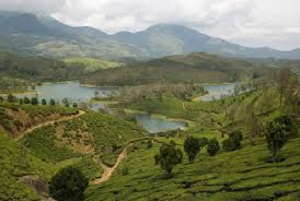
Tamil Nadu, South India, Boating, Fort, Hill station, History, Musuem, Nature, Temple, Trekking, Valley, Water falls
Yelagiri is a hill station Village of Tamilnadu in Vellore district. This village is surrounded by green valleys, rose gardens and orchards. Yelagiri is famous for trekking activity. Other activities of this place are Paragliding, rock climbing. It is also known as Poor Man’s Ooty. Earlier this place was under the control of Yelagiri Zamindars. In 1950 this place was undertaken by the Indian government. It is believed that Tipu Sultan Soldiers came to this place and settled in this region. After few years they became cultivators. Yelagiri Summer festival is most famous in Yelagiri. This is 3 days annual event celebrates in the month of May. Dog shows and Flower shows are major attraction during this festival season.
What to see in Yelagiri:
Nature Park: Area covered by this park is 12acres. It is the home to large number of plant species. Artificial lake was arranged inside the park. Fish aquarium in the park attracts the visitors. Large varieties of fishes along with tortoises can be seen here.
Don Bosco Centre: This is IT centre which was founded by Fr.Guezou of France. Aim of this centre is provide education to poor for best future.
Swami Malai Hill: Shape of the hill is like a cake. This place is famous for mountain climbing and trekking activities.
Yelagiri Lake: This is artificial lake created by man.
Nilavoor Lake: This is the best place for boating in Yelagiri. Garden look near the lake also attracts several visitors. Another attraction near the lake is Devi Temple which belongs to Kadavu Nachiyar. One interesting thing in this temple is, puja in this temple conducts only between 11 PM to 12PM on Friday.
Moksha Vimochana Temple: Before 14 years this was built by a saint. It is located near Nilavoor Lake. Architecture is most famous in this temple.
What to see around Yelagiri:
Nilavoor Tribal Village: It is located 3kms away from the village Yelagiri. Nilavoor Tribal village is famous for the park and for a small lake.
Jalamparai Falls: This valley is surrounded by lush Flora. This place is dry during summer season. Tourists rush will be more between November to February. It is located 5kms away from Yelagiri.
Vainu Bappu Observatory: It is located 51kms away from Yelagiri. Prior permission is essential to see this observatory. It is the house of Asia’s Largest Telescope.
Government Silk Farm: It is located 5kms away from Yelagiri. This is located at Mangalam. It is a home to silk worms.
Punganaur Lake: It is located 81kms away from Yelagiri. This is manmade artificial lake. This place is famous for boating and rowing activities.
Getting to Yelagiri: Only way to reach this place is though road. Private and Government buses are available to reach this place. From Bangalore, Coimbatore, Chennai buses come to this place frequently. Nearest railway station is located at Jolarpettai Junction. Bangalore airport is the nearest airport.
Getting around Yelagiri: To see the hill station walking is the best option. Buses are available to visit the places surrounding Yelagiri.
Best time to visit Yelagiri: Between November to February is the best time to visit Yelagiri.
Where to stay in Yelagiri: Dormitories and basic accommodation will be provided by YMCA Camp. From 2kms away from the Yelagiri Lake few resorts are available. Swimming pool, indoor games, gardens are available in these resorts.
Where to eat in Yelagiri: Very limited restaurants are available in Yelagiri. Most of the restaurants are located near Yelagiri Lake.
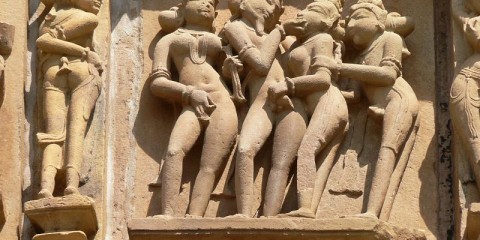
MP, Central India, Boating, Fort, History, Musuem, Nature, Temple, Wildlife Sanctuary
Khajuraho town is located in Chhatarpur district of Madhya Pradesh. This place is famous for medieval period Jain and Hindu temples. Khajuraho is the best example for Medieval Heritage. Temples in Khajuraho attained the status as UNESCO World Heritage site. City was bought out of the world in 19th century by Gen Alexander Cunningham. 22 temples are famous for Erotic Wall sculptures. Other name of these temples is Kama sutra Temples. Carvings on the temples do not belong to the God. Several reasons say for the carvings on the temple. Some people say that person must renounce all their sexual desires before entering the temple. Khajuraho Dance festival is famous in Khajuraho.
What to see in Khajuraho:
Kandariya Mahadev Temple: This temple was dedicated to Lord Shiva. In the western group of temples of Khajuraho it is the biggest temple consists of Chandela art. It was constructed between 1025 to 1050. On this temple 800 god images can be seen here.
Chitragupta Temple: This temple was dedicated to sun god and it was built in 11th century. Idol of Lord Surya is so beautiful. Its height is 5 feet.
Viswanath Temple: Marble Shivalinga is major attraction of this temple. Idols of Brahma can also be seen here. Another attraction of this temple is Nandi Bull which is 6feet height.
Shilpagram: This place is famous for performance of folk arts. Ancient culture of India can be seen here. This was established in 1998 by the government.
Parsvanath Temple: This temple is dedicated to Jain Tirthankaras. It is the largest Jain temple in India.
Lakshmana Temple: This temple is dedicated to Lord Vishnu which was constructed between 930 to 950 AD.
Chaturbhuj Temple: This temple belongs to Southern group of temples which was constructed in 1100 AD. It is west facing temple.
Devi Jagdambi Temple: This temple is dedicated to Goddess Jagdambi. She is the incarnation of Goddess Parvati. Image of this goddess is so huge. Wall carvings are most famous in this temple.
Vaman Temple: This temple is dedicated to Vaman which is dwaft avatar of Vishnu. Beautiful architecture can be seen here. Apart from that some of the status is studded with diamonds.
Kalinjar Fort: This fort is famous for huge collection of sculptures including Mashewar, Brahma, Vishnu and monuments. Kalinjar fort was built during Chandela dynasty.
Other attractions: Other attractions of Khajuraho are Javari Temple, Archaeological Museum, Jain Museum, Brahma Temple, Ghantai Temple, State Museum of Tribal and Folk Art, Shanthinath Temple.
What to see around Khajuraho:
Panna: This place is famous for its temples and forts. Panna National Park is located here. It is situated 43kms away from Khajuraho.
Gangau Dam: It is located 21kms away from Khajuraho. This is famous picnic spot which is surrounded by Gangu Sanctuary, Panna National Park, boating, water sports.
Dhubela Museum: This museum is the huge collection of ancient artifacts and modern artifacts. It helps to know how Khajuraho place is developed and its history.
Getting to Khajuraho: Khajuraho is well connected with road, railways and airways. From Varanasi and Delhi flights are available. From Mumbai, Kolkata, Jabalpur, Gwalior, Varanasi, Allahabad etc… Buses and trains are available to reach Khajuraho.
Getting around Khajuraho: Cycles can be hired to see the places in Khajuraho. Autos and Cycle rickshaws are available to see the places around Khajuraho.
Best time to visit Khajuraho: Best time to visit this place is between November to March.
Where to stay in Khajuraho: All range of hotels starting from budget hotels to luxury hotels are available. As per the requirement of the tourists they can choose to stay.
Where to eat in Khajuraho: Plenty of restaurants are available. All restaurants offer continental, Indian and Chinese Cuisines. Famous street food is Moong Daal Ka Halwa, Kaju Barfi, Jalebi etc…
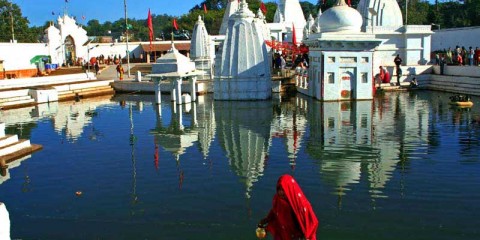
MP, Central India, Hill station, History, Musuem, Nature, Temple, Trekking, Valley, Water falls, Wildlife Sanctuary
Amarkantak is a pilgrim town in Madhya Pradesh. Amarkantak is derived from Sanskrit words Amar and Kantak. Amar means immortal and Kantak means Hindrances. It is the meeting point of Satpura and Vindhya ranges. People believe that this is the gateway to the heaven. This place consists of plenty of mango trees so it is known as Amrakoot by Poet Kalidas. As per the Hindu mythology, people states that when Lord Shiva destroyed Tripura by fire, one of the ashes fall on Amarkantak which turned into thousands of Lingams. Narmada Jayanti is most famous festival celebrates here.
What to see in Amarkantak:
Flora and Fauna: Due to equitable distribution of temperature large number of trees grown in this place. Between 1970 to 1976, Saxena, a forest Botanist identified 635 species. Few species are Anogeissus Latifolia, Gardenia Latifolia, Grewia spp, Bauhinia Spp, Terminalia Chebula etc. In this place wide variety of grasses can also be seen.
Shri Sarvodaya Digamber Jain Temple: World’s biggest Ashtadhatu Jain Idol can be seen here. This temple is under construction.
Ancient temples of Kalachuri Period: Between 1042 to 1072 AD plenty of temples built by Kalachuri Maharaja Karnadeva. These temples are famous for its architectural styles.
Narmadakund and Temples: This is the origin place of river Narmada. There are 16 major stone temple surrounded to this temple.
Sonakshi Shaktipeeth Temple: people believe that during Navrathri Goddess Sonakshi comes to this place to bless the people.
Trimukhi Temple: This temple is dedicated to Lord Shiva which is located on the top of a hill in Amarkantak. Among 24 temples in Amarkantak this is the oldest temple.
What to see around Amarkantak:
Dudh Dhara: This place is most famous for waterfalls. It is located 8kms away from Amarkantak. Horticulture garden is worth seeing near these waterfalls.
Kabir Chabutara: For the followers of Saint Kabir this is most important place. It is believed that here Kabir had done meditation for several years.
Mai Ki Bagiya: In the honour of Goddess Narmada this garden was built. It consists of rose plants, Gulbakawali, Mango, banana trees etc… Other name for this garden is Mother’s Garden. It is located 3kms away from Amarkantak.
Kapil Dhara: This place is famous for waterfalls. These waterfalls are surrounded by mountains and dense forests. This place is named after the sage Kapil Muni. It is located 8kms away from the town.
Jwaleshwar Mahadev: It is located 2kms from Amarkantak. This is the origin place of river Johilla. Lord Shiva temple near this place is most famous.
Sonemuda: This place is surrounded by Valleys and thick forests. Trekking activity conducts here. It is located 3kms away from the town.
Getting to Amarkantak: Amarkantak is well connected with Anuppur, Bilaspur, Rewa, Jabalpur, Umaria, and Shahdol through roadways. Nearest rail line is located at Pendra Road which 42kms away from Amarkantak. Raipur airport and Jabalpur airports are the nearest airports of Amarkantak.
Getting around Amarkantak: Walking is the best option to see the place in Amarkantak. Autos are the only means to visit the surrounding places of Amarkantak.
Best time to visit Amarkantak: Between October to March visitors feel so comfortable to visit this place.
Where to stay in Amarkantak: Very limited accommodation facilities are available. Local municipality is providing certain cottages to the visitors. Kalyan, Barfani ashrams and Madhya Pradesh state Tourism also providing some rooms to the visitors of this place. Luxury accommodation cannot be seen here.
Where to eat in Amarkantak: Only limited options are available to eat in Amarkantak. Dharmasalas and few Ashrams are providing food at best quality.
Orchha is a town in Tikamgarh district of Madhya Pradesh. It was founded by Bundela Chief, Rudra Pratap Singh in 15th century. He is the first king of Orchha. This place is most famous for Chhatris, Palaces, and temples. Orchha means hidden. Before it was founded it was covered in Bundelkhandi. So it was named as Orchha. People believe that Lord Ram is their emperor. They say that during the regime of Lord Ram in the day time he rule Ayodhya and during the night time he comes to Orchha.
What to see in Orchha :
Fort complex: This is most important place to visit by every person. It consists of Rai Parveen Mahal, Jehangir Mahal, and Raj Mahal. Architecture on these Mahals is so beautiful. Jehangir Mahal was built to welcome Jehangir to Orchha. Raj Mahal was built by Madhukar Shah in 17th century with crowned Chhatris and Plain exteriors.
Phool Bagh: This is the summer recreation to the kings of Orchha. As a memorial for the prince of Orchha this was built. It is eight pillared palace. Fountains in the middle of the palace are so attractive.
Ram Raja Temple: Here Lord Ram is worshipped as King. Once in this place, Palace was built by Madhukar Shah Ruler. It is believed that one day Lord Rama came in his dream and said not to remove the temple. So it is again reconstructed.
Laxmi Narayana Temple: This is the largest temple in Orchha. It is the combination of Fort and temple structures. Laxmi Narayana Temple was built by Vir Singh Deo in 1622.
Sunder Mahal: This is one of the attractions of Orchha. Sunder Mahal says the lover story of Prince Dhurbhajan (Hindu) with a Muslim lady. Architecture of this Mahal is so attractive.
Jujhar Singh Palace: This one of the 9 palaces built for Nauchauki by his father King Vir Singh Dev. It is in rectangular shape.
What to see around Orchha:
Cenotaphs: In the memory of Orchha rulers 14 Chhatris were built here. It is located 4kms away from Orchha.
Datia: It is locate 41kms away from Orchha. This place is famous for Buglamukhi Devi Temple, Jain centre, Sonagiri, Gopeshwar Temple, Shri Peetambra Devi Temples.
Rai Parveen Mahal: It is located 3kms away from Orchha. This was constructed in 1670 by Raja Indramani. It is dedicated to Poetess Rai Parveen.
Jhansi: A fort on a top of Bangira hill most famous here. This was the capital of Rani Laxmibai. From this place she led first war of independence against Britishers in 1857.
Getting to Orchha: This place is well connected with Khajuraho, Gwalior, and Jhansi through roadways. Government buses, private buses, Taxis are available to reach Orchha. Jhansi is the nearest railway station. This place is well connected with Bhopal, Lucknow, Jammu, Pune, Ahmedabad, Indore, etc… Nearest airport is located at Gwalior.
Getting around Orchha: Buses, taxis, autos are available to visit the surrounding places of Orchha.
Best time to visit Orchha: Best time to visit this place is between October to March.
Where to stay in Orchha: All type of hotels such as budget hotels, midrange hotels, luxury hotels are available. Some resorts along with backwater resorts are also available. Best hotels in Orchha are Amar Mahal Hotel, Bundelkhand Riverside, The Orchha Resort, and Sheesh Mahal.
Where to eat in Orchha: Limited restaurants are available. Almost all the restaurants serve only vegetarian food. Very few restaurants offer non-vegetarian. Continental, Chinese and Indian cuisines are available.
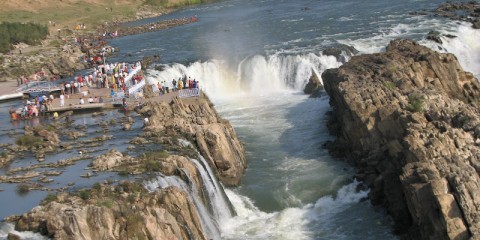
MP, Central India, Boating, History, Nature, Temple, Trekking, Valley, Water falls
Bhedaghat is a town in Jabalpur district of Madhya Pradesh. Bhedaghat is evolved from Bhairav – Ghat. This place is most famous for Dhuandhar Waterfalls. Bhedaghat is 20kms away from Jabalpur. This place is known for marble rocks. Bhedaghat is located on the banks of river Narmada. People believe that if they take dip in the river it wash away all their sins. River Narmada is considered as daughter of Lord Shiva. It is believed that river Ganga comes to this place in the form of black cow to take dip in river Narmada to cleanse herself. For the shopping lover’s trinket boxes, ashtrays, status of Gods and Goddesses, artifacts are worth buying.
What to see in Bhedaghat:
Dhuandhar Falls: Waterfalls in Bhedaghat is most attractive to the visitors of this place. Smoke comes out from the river bed. So these waterfalls are also known as Smoke Cascade. Bandar Kodini is another attraction in this place. Here river passes through narrow stretch of rocks. Monkeys can easily jump across them as it is so narrow. So this place is named after monkeys.
Marble Rocks: This place is most attractive place. Every visitor considered this as heavenly place. Marble rocks under the sea of floodlight looks most beautiful. Boating in the moon light is most memorable moment. From November to May boating facility is available. From July to September boating is strictly restricted. Another attraction here is Roap Way. This adventure is available throughout the year from 10.30 AM to 6.30 PM.
Chausath Yogini Temple: During the reign of Kalachuris (10th Century) this temple was built. In this temple 64 yoiginis carvings can be seen. It is believed that all are attendants of Goddess Durga. Most attractive statue in this place is Lord Shiva and Parvathi riding on Nandi.
What to see around Bhedaghat:
Jabalpur: It is located 21kms away from Bhedaghat. Jabalpur is one of the major attractions in Madhya Pradesh. Places to visit in Jabalpur are Bargi Dam, Lameta Ghat, Shaeed Smarak, DB Vallabh Das Palace, Khandari Water Works, The Beohar House, Radha Krishna Temple, and Bandhavgarh National Park.
Bandhavgarh: It is located 21kms away from Bhedaghat. It is the home town for white tigers. This is most famous hunting place for Maharajas. During the rule of Maharajas of Rewa white Tiger was resides in the palace.
Getting to Bhedaghat: Only way to reach this place is through roadway. Nearest railway station is located at Jabalpur. Jabalpur is well connected with the places such as Bangalore, Hyderabad, Jaipur, Mumbai, Trivandrum, Chennai, Kolkata, Agra, Lucknow, and New Delhi. From Jabalpur railway station public transport and taxis are available to reach Bhedaghat. Jabalpur Airport is the nearest airport to Bhedaghat.
Getting around Bhedaghat: Taxis and Autos are available to visit surrounding places of Bhedaghat.
Best time to visit Bhedaghat: Bhedaghat welcome tourists to this place throughout the year. But visitors who wants to enjoy boat riding has to come to this place only between November to May as in the monsoon season this place is restricted for boating . Best time to visit this place is November to May.
Where to stay in Bhedaghat: Limited hotels are available to stay in Bhedaghat. Only Budget and midrange hotels are available. Best hotels in Bhedaghat are Narmada Jackson, Hotel Gulzar Towers, Hotel Satya Ashoka, and The Samdariya Hotel.
Where to eat in Bhedaghat: Limited restaurant are available to eat in Bhedaghat. Continental, Chinese, Indian cuisines are available.
Gwalior is historical city in Madhya Pradesh. This place is named after Sage Gwalipa. He saved the life of King Suraj by curing Leprosy disease. Other name of Gwalior is Fort City. Babur, Mughal Emperor, stated regarding Gwalior as the pearl amongst fortresses in Hind. During the British rule this place enjoys 21 gun salutes. This place is famous for Hindustani Classical music. Two cultures are dominated Gwalior. They are Braj and Bundeli. Ahir is the famous dance in Gwalior. Popular festival in Gwalior is Baredi.
What to see in Gwalior:
Gwalior Fort: This is the most beautiful fort one has to visit. It is situated on a sandstone hill. On the recommendation of Sage Gwalipa, this was built by King Suraj. Statues of Jain Theerthankaras are most attractive. Entry fee will be charged to see the fort.
Gurudwara Data Bandhi Chhod: In the memory of Guru Hargobind Singh, Sixth Sikh Guru this was built. For 2 years he was in jail kept by the king Jahangir. On the recommendation of 52 Hindu kings he was released from the jail.
Teli Ka Mandir: This temple is dedicated to Lord Vishnu. North Indian and Dravidian unique structures is so famous in this temple.
Sarod Ghar: This was established by Ustaad Amjad Ali Khan. This is the only museum in Madhya Pradesh dedicated to musical instruments. Huge collection of documents and photographs are placed here.
Tomb of Ghous Muhammad: Ghous Mohammed is an Afghan Prince who helped to Babur to win the fort.
Man Mandir Palace: This palace is famous for carved stone walls, designed tiles. In this place Jauhar Pond is located. In this place Rajpur ladies committed sati. This was built in 16th century.
Suraj Kund: This pond was built in 15th century. It is a part of Gwalior fort.
Museums: Several museums present in Gwalior. Gujari Mahal Archaeological Museum is one of the most attractive museums dates back to 1st century. Statues of several Goddesses can be seen here. Most attractive statue is Gyraspur, tree Goddess. Other museums are Municipal Corporation museum, Kala Vithika.
What to see around Gwalior:
Jail Vilas Palace: This is located 4kms away from Gwalior. This was built by Maharaja Jiyaji Rao Scindia in 1809. To test the strength of the Palace 10 elephants hang from the ceiling. More than 35 rooms of the palace converted into museum.
Tighra Dam: It is located 22kms away from Gwalior. This dam supplies drinking water to the city.
Datia: It is located 75kms away from Gwalior. 7 storied Palace is most attractive here which was constructed in 1614.
Sonagiri: 77 Jain temples are located here. It was constructed in 17th century. This is 72kms away from Gwalior.
Getting to Gwalior: Gwalior is well connected with all means of transport such as Road, Railways and Airways. From the cities like Varanasi, Jaipur, Mumbai, Bhopal, Indore, Agra, Delhi buses, trains and air buses are available.
Getting around Gwalior: Tongas, Tempos, autos, local buses are available to visit the places surrounding Gwalior. Cheapest means of transport is Tango.
Best time to visit Gwalior: Climate is extreme in all the seasons. Best time to visit this place is between October to March.
Where to stay in Gwalior: Plenty of hotels are available to stay in Gwalior. Naya Bazaar is famous for budget hotels. In the luxury hotels coffee shops, shopping places are also available.
Where to eat in Gwalior: Most popular food in Gwalior is Malpua, Khoprapak, Mawa Bati, Bhuttle Ki kees, Kebabs and Rabdi. Plenty of restaurants are available to eat. Continental and Nepal dishes are most famous to serve in the restaurants.
Mandu is located in Dhar district of Madhya Pradesh. This is a beautiful place with Palaces, crafted Pavilions and the lakes. Mandu was founded by Parmar rulers in 11th century. People believe that this place is resembled the love and affection of Prince Baz Bahadur and Rani Roopmati. Beautiful rock cut caves attracts the tourist. Excellent paintings can be seen on the walls of the caves. Shopping lovers can buy best things from Mandu are fabrics, colourful textiles, showpieces, wall pieces, gift items, Home decors.
What to see in Mandu:
Jahaz Mahal / Ship Palace: It is situated between 2 artificial lakes. This palace is in elephant shape which consists of 3 large halls with excellent bath. It was constructed in 15th century. Stones and colored tiles in the palace are most attractive.
Rupayan Museum: This consists of tools and crafts which are used by the ancient Mandu People.
ASI Museum: Large Statue of Thirthankar is the major attraction in this museum. Large number of Hindu sculptures which belongs to 11th and 12th century can be seen here.
Jal Mahal: This is also known as Water Mahal. It was built for the private escape of royal couples.
Jami Masjid: This is the best construction during Ghauri dynasty. It was constructed with several monuments and red sandstones.
Champa Boali: It was a wide construction. It is believed that water in the well which is situated here smells like Champa Flower. Under rooms are more attractive. This place acted as summer recreation to the kings.
Tomb of Hoshang Shah: This is a unique tomb and it is India’s first marble edifice. It is the best example for Afghan architecture. Beautiful towers, Porticoed courts, marble work, proportioned dome are most beautiful.
Rupmati Pavilion: It was actually built for the army post but this was used as recreation place by Rani Roopamati.
Jain Temple: Images of plenty of Jain Thirthankars are placed here. All are made up of Gold, Silver and Marble.
Hindola Mahal / Swing Palace: Due to sloping sidewalls this mahal is named as Hindola Mahal. It is T Shaped structure which was built in 1425 by Hoshang Shah.
Other Attractions : Other attractions in Mandu are Darya Khan’ s Tomb, Dai Ka Mahal, Rewa Kund, Dilwar Khan’s Mosque, Nilkanth Mahal, Darwazes, Shri Mandavgarh Teerth.
What to see around Mandu:
Baz Bahadur Palace: It is located 4kms away from Mandu. This beautiful Palace was built by last king of Malwa. Spacious Patios, ornate halls, high terrace, Rajasthani and Mughal architectural style are most attractive.
Bagh Caves: These are Buddhist caves belong to 400 AD to 700 AD. It is situated 50kms away from Mandu.
Getting to Mandu: Mandu is well connected with roadways. From other cities such as Bhopal, Ujjain, Ratlam, Dhar buses are available frequently to reach Mandu. Nearest railway station is Ratlam which is 124kms away from Mandu. Nearest airport is at Indore.
Getting around Mandu: To see all the sities in Mandu hiring cycles, scooters, Bikes is the best option. One can enjoy these rides. Tempos, Autos are available to visit the surrounding places of Mandu.
Best time to visit Mandu: During the monsoon season climate in Mandu is so pleasant. Monsoon season is between July to September. This is the best time to visit this place.
Where to stay in Mandu: Plenty of accommodation facilities are available to stay in Mandu. All range of hotels starting from budget to luxurious hotels is available.
Where to eat in Mandu: Most famous dishes in Mandu are Malpua, Khoprapak, Mawa Bati, Bhuttle Ki Kees, Kebabs, Mandu Ki Imli. Plenty of restaurants serve local, Chinese, South Indian cuisines but only vegetarian food.
Vidisha is the administrative headquarters of Vidisha district in Madhya Pradesh. During the medieval period this Vidisha is known as Bhilsa. Most attractive place for the tourists is Udaygiri Caves. Earlier name of Vidisha place was Besnagar. In the 3rd century this place dominated by Mauryans. Besnagar was destroyed during 7th century. After that Vidisha came into existence. This place is famous for historical monuments.
What to see in Vidisha:
Bijamandal: This was established in Paramara Period. It is unfinished temple. Unfinished architecture and carved niches can be seen in this place.
Lohang Pir: Shayak Jalal Chishti tomb is placed here. This rock structure tomb is known as Lohang Pir. Lohang Pir is dates back to 1460 BC. Now Annapurna temple was constructed here.
Helidorus Pillars: These pillars are popularly known as Khamba Baba. It is named after Greek ambassador Helidorus. He invented this place during 2nd century BC. Local fisherman worshipped this pillar. This pillar is dedicated to Lord Krishna. Sculptures of Garuda are most famous here.
Udaygiri Caves: Vidisha is famous for these caves. In total there are 14 caves. These caves are famous for architectural structures. War sculpture of God Skanda along with excellent architectures can be seen in Cave 3. Carved Shiva Lingam is famous in Cave 4. In Cave 5, Lord Vishnu and Varaha incarnation are most attractive to see here. Images of Goddess Durga, Lord Ganesha, Siva Gangadhara, and Lord Vishnu are located in Cave 6. Lord Vishnu sculptures are most attractive in Cave 13. All the caves are worth seeing for architectural splendours.
What to see around Vidisha:
The Great Bowl: It is used to distribute food to the monks. This bowl is made out of the single stone. It is located 68 kms away from Vidisha.
Bajramath Temple: In this temple 3 shrines of Jain Idols can be seen here. This place is located in Gyaraspur Tehsil which is 40kms away from Vidisha.
Sanchi: It is situated 10 kms away from Vidisha. This place is most sacred for Buddhist religion people. 3rd and 12th century monuments can be seen here. 3 stupas in Sanchi are most famous. These are oldest stupas in India.
Getting to Vidisha: This place is well connected with road ways and railways. Buses to this place are so rush. Taxis are the best option to visit this place. From places such as Bhopal, Varanasi, Amritsar, Chennai, Mumbai, Delhi trains are available. Nearest airport is at Bhopal which is 56 kms away from Vidisha. Bhopal is well connected through airlines from different places such as Chennai, Indore, Delhi, Hyderabad, and Mumbai.
Getting around Vidisha: Tempos and Tangos are available to see Udaygiri caves. Surrounding places can visit by taxis and autos.
Best time to visit Vidisha: Knowing climatic conditions before visiting any place is essential for the tourists to avoid inconvenience. Between October to March temperature is so pleasant in Vidisha. So it is considered as the best time to visit this place.
Where to stay in Vidisha: Very limited places are available to stay in Vidisha. Only budget hotels are available. Due to this most of the tourists prefer to stay in Bhopal. Best hotels in Vidisha are Suraksha Hotel and Sharad Lodge.
Where to eat in Vidisha: Very limited places to eat in Vidhisha. Fancy restaurants cannot be seen here. Chhole, Puri Sabzi are most famous here.
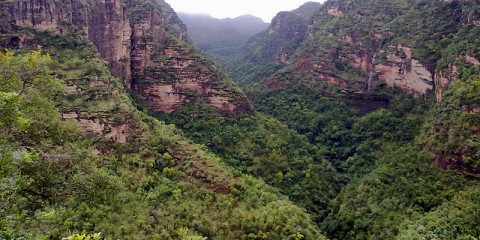
MP, Central India, Caves, Hill station, History, Nature, Temple, Valley, Water falls, Wildlife Sanctuary
Pachmarhi is a hill station in Central India. This place is also known as Queen of Satpura Ranges. It is an important cantonment area for the army people. Pachmarhi is famous for temples, ancient caves, surging waterfalls, Thick cover of greenery. Highest trekking point is Dhupgarh. This place is located in Pachmarhi. Near Pachmarhi visitors can enjoy dense sal forest, Jamun Orchards and peaceful forest basins. Artifacts belongs to 8000 BC are located here. This is a famous honeymoon spot for the honeymoon couple. Shivrathri is most famous festival here. At Mahadeo Caves, a fair conducts during Mahashivrathri. Lakhs of tourists come to see this fair.
What to see in Pachmarhi:
Waterfalls: This place is famous for plenty of waterfalls. Silver falls, Duchess Falls, Vanshree Vihar falls, Apsara Vihar, Bees falls are most famous in Pachmarhi.
Mahadeo Hills: This place is famous for the temples of Lord Shiva.
Pandava Caves: It is believed that this is the residence place of Pandavas. These are carved with sandstone rock. 5 caves are located here. Out of 5 caves Draupatdi Kuti is most ventilated and cleanest cave.
Jata Shankar Cave: Inside this cave there are 108 originally formed Lingas can be seen by the visitors. It is believed that in this caves Lord Shiva hide himself due to the fear of demo Bhasmasura.
Dhoopgarh: In the Satpura mountain ranges it is the highest peak. Sunset is most attractive in this place.
Christ Church: This was built in 1875 by the Britishers. Faces of angles on the walls are most attractive.
Other places to visit: Other Places to visit in Pachmarhi are Bison Lodge, Priyadarshini Point, Irene Pool, Lanjee giri, Bade Mahadev, Gupt Mahadev Cave Temple.
What to see around Pachmarhi:
Satpura National Park: It is located on the Satpura hills. It was established in 1981. Plenty of birds and animals are seen here.
Mahadeo Temple: It is located in Satpura Tiger reserves. Along with Bada Mahadeo temple, Gupt Mahadeo temples are also located here. It is located 10 kms away from the Pachmarhi. Visitors have to walk through the forest to reach this place.
Chauragarh: It is located 11 kms away from Pachmarchi. This place is famous for Lord Shiva Temple. Devotees climb this hill having trishul on their hands.
Handi Khoh: It is believed that this place consists of lake till Lord Shiva battle with evil snake. This snake got killed in that battle. After that battle lake become dried. It is believed that still this place is surrounded by evil snake. It is located 4 kms away from Pachmarhi.
Getting to Pachmarhi: Pachmarhi is well connected with road ways. From Bhopal, Pipariya, Chhindwara, plenty of buses are available to reach Pachmarhi. Nearest railway station is located at Pipariya which is 47 kms away from Pachmarhi. From several cities such as Howrah, Surat, Chennai, Bangalore, Delhi plenty of trains reach to Pipariya. Nearest airport is at Bhopal.
Getting around Pachmarhi: Buses and jeeps are available to visit the surrounding places of Pachmarhi. As it is hill station if visitors want to enjoy the nature, cycles will be given for rent for sightseeing.
Best Places to visit Pachmarhi: Best time to visit this place is between September to May.
Where to stay in Pachmarhi: Budget, midrange and luxury hotels are available to stay in Pachmarchi. But only limited accommodation is available. Certain rest houses provided by state government.
Where to eat in Pachmarhi: Only limited options are available. This place is famous for street food. Chinese and Indian cuisine is available.
Maheswar city is located on the banks of Narmada River in Madhya Pradesh. Meaning of the word Maheswar is Great God. In the ancient history this place acted as Capital to Holkar dynasty. During that time Rani Ahilya Bai Holkar ruled Holkar dynasty. She made several infrastructural developments in the city. At that time she built several temples and buildings, they are still exists. From 5th century onwards this city was acting as major centre for handloom weaving. Before 250 years ago Rani Ahilya Bai Holkar introduced Maheshwari Sarees. These sarees become world famous.
What to see in Maheswar:
Holkar Fort: Other name of this fort is Queen’s fort. This was the residence of Rani Ahilya Bai Holkar which was built in 18th century by Rani Ahilya. One of the major attractions in this fort is life style statue of Rani Ahilya. Other interesting areas to visit in the fort are wada, temples and Chhatris. Now this is managing by Shivaji Rao Holkat who is the son of Richard Holkar who is last Maharaja of Indore.
Jaleshwar Temple: This temple is dedicated to Lord Shiva. Local people believe that he is the God of Water. Architecture and Carvings on the temple are major attraction to the visitors.
Rajaraheshwara Temple: It is one of the temples of Lord Shiva in the city. This temple is popularly known as 11 Akhand Jyoti Deepak Temple. Mirrors are arranged on the ceiling of the temple. Lamps light always throughout the year.
Kaleshwara Temple: This temple is dedicated to Lord Kaleshwara who is an incarnation of Lord Shiva. Temple is in red colour.
Ahileswara Temple: This temple is dedicated to Lord Ram. Carvings on the temple are so attractive.
Other place to visit: Other places to visit in Maheswar are Khalghat, Narmada Ghat, Pandarinath Temple, and Navdatoli.
What to see around Maheswar:
Khargone: This place is famous for Navagraha Temple. Navagraha Mela and Nimar Utsav are most famous here. It is located 20 kms away from Maheswar.
Rajwada: This was built by Rani Ahilya. It is 7 storied constructions which reflect Maratha, French and Muslim styles. It is located 81 kms away from Maheswar.
Mandleshwar: In this place dam was constructed on river Narmada which is most attractive. Other attractions of this place are Ramkund, Shstradhra, Dhawal Kunda, Chhappan Dev, Ganga Zira, and Hathani.
Kasrawad: Cotton Sarees of this town are very famous. Other attractions of the town are Baba ki Mazar, ancient kailask kund, Bhavani Mata temple. This is located 19 kms away from Maheswar.
Other attractions nearby Maheswar: Other major attractions nearby Maheswar are Omkareshwar Temple, Mandu.
Getting to Maheswar: Maheswar is well connected with road ways. From different places such as Dhamond, Khandwa, Dhar, Bhopal, Indore buses are available frequently to reach to Maheswar. Nearest rail station is located at Barwaha which is 39 kms away from Maheswar. Nearest air port is located at Indore.
Getting around Maheswar: Taxis and buses are available to visit the places around Maheswar.
Best time to visit Maheswar: Best time to visit Maheswar is between August to March.
Where to stay in Maheswar: Plenty of accommodations are available in Maheswar to stay. But all are budget and midrange hotels. State tourism also offer certain mid range hotels in Maheswar. Some hotels are located inside the Holkar Fort.
Where to eat in Maheswar: Plenty of restaurants are available to serve vegetarian food. Very limited restaurants offer non vegetarian.
Indore is the largest city in Central India. This city is famous for entertainment, education, technology, research, fashion, art, finance and commerce. India’s third oldest stock exchange is located here. IIM Indore most famous institution for management studies is also located here. This city was founded by Rao Nandlal Chaudhary . He named this city as Indrapur. During the Maratha regime it was renamed as Indur and during the British era it was renamed as Indore. Famous festivals celebrates in this city are Ahilya Utsav, Rangapanchami. Chanderi and Maheshwari saris are very popular in this place.
What to see in Indore:
Lal Bagh Palace: It is 3 storied building which was built between 1886 to 1921 by Maharaja Shivaji Rao. Best collection of Italian Paintings, contemporary Indian and old coins are located here. Belguium Stained glass, flying nymphs and Italian Marbles can be seen inside the palace.
Indore Museum: Best collection of armour, arms, coins which belongs to 11th and 12th century can be seen here. It consists of 2 galleries. In Gallery I, Prehistoric period artefacts are placed and in Gallery II consist of Carvings of Hindu mythology.
Kanch Mandir: This temple is dedicated to Lord Mahavir. Glass beads covered this statue. 50 murals are also placed here. It was built in 20th century by Sir Hukamchand.
Krishnapura Chhatris: It was the tombs of Holkar dynasty which was constructed in Maratha style on the banks of river Khan.
Sukh Niwas Mandir: It was the summer residence for Holkars which was built in Indo Western style. This was surrounded by Sukh Mahal Lake and beautiful garden.
Town Hall / Mahatma Gandhi Hall: It was constructed in Indo Gothic style. This hall consists of a temple, Children Park, a library.
Rajwada / Holkar Palace: This was the residence place of Holkar dynasty which was built by Rani Ahilyabai Holkar. She is responsible to become the city as commercial hub. Visitors are so attractive to see this place as most beautiful Maratha and French style of architecture can be seen here.
What to see around Indore:
Patal Pani Water Falls: It is most attractive tourists centre with waterfalls. Trekking activity is also conducts here. It is situated 31kms away from Indore. People believe that under the waterfalls Patal city is located.
Omkareshwar: This is an island called as Mandhata or Shivapuri. On the north side of the temple Vindhya hills are located and on the south side Satpura hills are located. It is 71 kms away from Indore. This temple is dedicated to Lord Shiva. It is one of the 12 Jyothirlings.
Getting to Indore: Indore is well connected with road, railway and airways. From all the major cities such as Jaipur, Bhopal, Kolkata, Chennai, Ahmedabad, Mumbai, Delhi buses, trains, and airbuses are available.
Getting around Indore: Autos, Taxis, private vehicles are available to visit the places surrounding Indore.
Best time to visit Indore: Between October to March weather is so pleasant so it is considered as best time to visit Indore.
Where to stay in Indore: Plenty of accommodations are available to stay. All budget, midrange and luxury hotels are available for the tourists. Best hotels in Indore are Fortune Landmark Indore, Radisson Blu Hotel, Shreemaya Hotel, and Hotel Omni Palace.
Where to eat in Indore: Plenty of restaurants are available. All the restaurants serve both vegetarian and non vegetarian food. International, Chinese, Indian cuisines are available in almost all the restaurants. Most famous food in Indore is Poha Jalebi.
Chanderi is a historical town in Ashoknagar district of Madhya Pradesh. Historical monuments are built by Malwa Sultans and Bundela Rajputs. These historical monuments are established between 11th century to 18th century. Religions such as Islam, Jainism and Hindu are dominated during this period. Shishupal who is the cousin of Lord Krishna belong to this place. Several dynasties have conquered the city such as Scindias, Bundelas, Mughals, and Malwa Sultans. This place is surrounded by forests, lakes and hills. Handloom sarees are most famous here.
What to see in Chanderi:
Chanderi Fort: This was built during the Mughal period. It is having 3 gates. Main gate of this fort is known as Khooni Darwaza. It is located in the ancient town on the top of the hill.
Koshak Mahal: As per the history it is stated that, when Mahmud Khilji of Malwa is passing from this place he ordered to build a Mahal here in 1445 AD. That Mahal was named as Koshak Mahal. His plan is 7 storied building but he is able construct only 2 stories during his life time.
Jageshwari Temple: This is one of the beautiful temples in Chanderi. Statues of 2 lions guarded this temple. Idol is having white face and large eyes.
Jama Masjid: Most beautiful monument of Chanderi is Jama Masjid. This is famous for its high arcades and domes. It is the biggest mosque in Bundlekhand. This was constructed in 13th century by Ghiassuddin Balaban.
Archaeological Museum: Plenty of sculpture collections are placed here. Timing to visit this museum is 10.30 AM to 5.30 PM.
Battisi Bavdi: Name is derived from 32 steps flight. In 1485 this was built by Sultan Ghiyasuddin Shah.
Shahzadi ka Rauza: This is the tomb of Shahzadi Ka Rauza which is built by Sultans of Malwa during 15th century. It is famous for its geometrical designs. Stone carving is unique.
What to see around Chanderi:
Shri Choubisi: Jain culture is more in Chanderi area. Jain places are more near Chanderi. One of the Jain Mandir near Chanderi is Shri Choubisi. It is located 4 kms away from Chanderi.
Parameshwar Tal: This is located kilometre from Chanderi. It was built by Bundela Rajput Kings. On its banks cenotaphs of 3 Rajput kings and a temple are located.
Buddhi Chanderi: It is located on the banks of river Urvashi which is 20 kms away from Chanderi. Thousands of Jain temples are located here. All are built during 9th and 10th century.
Thurvanji: It is located 26 kms away from Chanderi. Early medieval period Jain temples are located here.
Getting to Chanderi: Chanderi is well connected with road ways. From Jhansi, Bhopal, Sanchi, Vidisha, Tikamgarh, Lalitpur buses are available. Nearest railway station is located at Lalitpur which is situated 40 kms away from Chanderi. Nearest airport is at Gwalior or Bhopal.
Getting around Chanderi : Autos and Buses are available to visit the surrounding places of Chanderi
Best time to visit Chanderi: Some people want to know the best time before visiting any place. Best time to visit this place is between October to March.
Where to stay in Chanderi: Plenty of hotels are available to stay in Chanderi but all are budget and midrange hotels. Luxury hotels cannot be seen here. Best Hotels in Chanderi are Tana Bana, Hotel Shri Kunj.
Where to eat in Chanderi: Famous food available here are Malpua, Khoprapak, Mawa Bati, Bhuttle Ki Kees, and Kebabas. All the restaurants serve Chinese, Mughal, Punjabi, South Indian and North Indian Cuisines.
Bhopal is the capital of Madhya Pradesh. As large number of natural and artificial lakes dominating the city it is known as City of Lakes. City attracts the tourists with amazing landscapes, hills and forests. It is divided into old city and new city. Old city consists of narrow alleyways while new city attracts the tourists with gardens and Parks. Mughal influence is more in the city. Fruits and sweets such as Sewaiya and Bafla are part of their meals. Nawabzada Shahryar Mohammad Khan, former Pakistan Foreign Secretary, and Nawab Mansoor Ali Khan, former Indian test Captain Ace Cricketer belongs to this place.
What to see in Bhopal:
Taj-ul-Masjid: This is one of the oldest Mosques. Construction of this mosque started by Sultan Shah Jehan but completed by Allama Mohammed Imran in 1971. It is known as Crown of Mosques.
Upper Lake: Other names are Big Lake and Bada Talaab. This is oldest manmade lake in India. It is believed that King Bhoj’s skin disease cured by this lake. Water sports are most famous here.
Lower Lake / Chota Talaab: It is connected with upper lake. Water sports are most famous here.
Bharat Bhawan: It is multi art complex. This is the best place for exploration and innovation of visual, Vocal and Performing arts. It is a thrieving centre for contemporary arts.
Van Vihar Park: It is situated in the heart of Bhopal on the hillock. It is like Zoo.
Birla Museum: It is an archaeological museum established in 1971. Artefacts belongs to prehistoric period are placed here. Tools used by Palaeolithic and Neolithic man are placed here. Terracotta belongs to 2nd and 6th century BC and stone sculpture belongs to 7th century are also placed here.
Archaeological Museum: Statues of Lord Vishnu, Shiva, Lakshmi and painting from Bagh caves are major attraction in this museum.
Other attractions: Other attractions in Bhopal are Gohar Mahal, Museum of Mankind, Shaukat Mahal, Jama Masjid, Moti Masjid, Bhimbetka Caves, Fish Aquarium, Sanchi Stupa, Sair Stupa, Lakshmi Narayan Temple, and Gufa Mandir.
What to see around Bhopal:
Sanchi: In 3rd century BC, Emperor Ashoka built several stupas. It is the oldest stone structure in India. It is Located 48 kms away from Bhopal.
Bhojpur Temple: It is located on the banks of Vetraveti River. This temple is named against King Bhoj, former ruler of this place. It is dedicated to Lord Shiva. It is located 32 kms from Bhopal.
Bhimbetka: South Asian Prehistoric cave Paintings and prehistoric rock shelters are placed here. It is located 44 kms away from Bhopal.
Getting to Bhopal: Bhopal is well connected with Road, Railway and Air ways. From Jabalpur, Chandigarh, Chennai, Hyderabad, Mumbai, Delhi etc bus, trains and airbuses are available to reach Bhopal.
Getting around Bhopal: Autos, Taxis, Mini buses, Buses are available to visit surrounding places of Bhopal.
Best time to visit Bhopal: Best time to visit the place is place between November to February.
Where to stay in Bhopal: Plenty of budget, Midrange and Luxury hotels are available to stay in Bhopal. Most of the Midrange hotels are located in Shamala Hills and Maharana Pratap Nagar. Budget hotels with good facilities are available near bus stand and railway station.
Where to eat in Bhopal: Mughal influence in spicy meat delicacies such as Kebabas and curries in more. Both vegetarian and non vegetarian food is available. All varieties of Continental, Chinese, Mughal, Punjabi, South Indian cuisines are available.
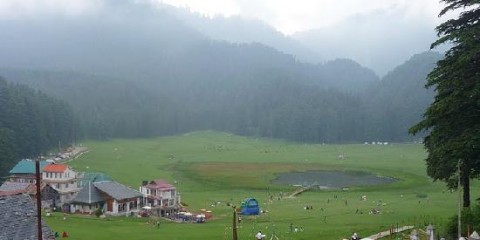
HP, North India, Hill station, History, Nature, Temple, Trekking, Valley, Wildlife Sanctuary
Khajjiar is a hill station of Himachal Pradesh. This beautiful hill station is surrounded by dense forests and green meadows. It is a part of Kalatop wildlife sanctuary. Mr.Willy T Blazer who was Vice Chancellor and Head of Chancery of Switzerland played crucial role to make this place as world tourism place. It was name as Mini Switzerland on 7th July 1992 and made world tourism place. Due to excellent natural beauty this place is known as Gulmarg of Himachal Pradesh. Popular activity in Khajjiar is trekking. The Halmet is the starting point for trekking to reach several places such as Kalatop wildlife sanctuary, Dalhousie, Chamba etc…
What to see in Khajjiar:
Khajji Naga Temple: This temple is carved out of wood. Khajji Naga Temple is dedicated to Khajji Naga. Statues of Kauravas and Pandavas are also placed here. Other name of this temple is Golden Devi Temple. This temple built in 12th century.
Kalatop Khajjiar Sanctuary: Large varieties of birds, animals and plants can be seen here. Major attractions of this sanctuary are Black Langur, Barking Goral, Bear, Himalayan Black Marten etc… This is covered with Pine forest.
Khajjiar Lake: This is the most beautiful place to enjoy the nature. Large number of tourists attracts towards this lake as water from several stream fills the lake here. This lake is surrounded by Deodar forests and hills. Visitors considered this as perfect picnic spot.
Dauladhar Mountains: Lush green meadows, pines and dense deodars are most attractive in this place.
Kailash View and Horse Riding: Kailash view from Khajjiar is most beautiful experience. Horse riding is very famous here. All the horses are well trained.
Panch Pandav Tree: Though the main root of the tree is same as like others but base of the tree is divided into five parts, which makes it one of the kinds. So this is called as Panch Pandav Tree. This is one of the attractions here.
What to see around Khajjiar:
Dalhousie: Dalhousie is a hill station in Himachal Pradesh. 5 hills are located in this place. They are Bhangora, Bakrota, Tehrah, Potreyn and Kathalagh. Large number of Victorian style mansions can be seen here. It was founded by Britisher Lord Dalhousie in 1854. It is the best place for trekking. This place is located 20 kms away from Khajjiar.
Chamba: This place is famous for Pahari Paintings and temples. Chamba is famous for Snow Skiing, trekking, river crossing, river rafting etc. Major attractions of Chamba are Church of Scotland and Surara Temple. It is located 32 kms away from Khajjiar.
Getting to Khajjiar: This place is well connected with road. From all the major places such as Dalhousie, Chamba, Shimla, Himachal Pradesh bus facility is available. Nearest railway station is located at Pathankot. Nearest airport is Gaggal Airport
Getting around Khajjiar: House riding is most popular to see the hill station. To visit the nearest places buses are available.
Best time to visit Khajjiar: During the winter season temperature in this place comes down to -10 degrees. Best time to visit this place is between March to October.
Where to stay in Khajjiar: All range of hotels are available here but number of hotels are very limited. Panoramic view of snow clad mountains offer by all the hotels.
Where to eat in Khajjiar: Very limited restaurants are available. Only Indian Cuisine is available. Street stalls provide soups and serve noodles.
Chamba is the ancient town in Himachal Pradesh. This town is famous for several Palaces and Temples. This is the most beautiful hill station located at the heights of 3268 feet. In 920 this was established by Raja Sahil Verma. Sal River and Ravi River can be seen here. Famous activities near these rivers are river crossing and river rafting.
Both private and government organisation conducts this rafting. School of art is most attractive place to the tourists. This was flourished between 10th to 17th centuries. Major attractions for the shopping lovers are hand woven textiles, chappals, Pahari paintings. Suhi Mata Mela and Minjar Mela are most famous festivals celebrate here.
What to see in Chamba:
Hariraya Temple: This temple is dedicated to Lord Vishnu. It is constructed during 11th century in Shikhara style. Idol of Lord Vishnu is made out of 8 different materials.
Bhuri Singh Museum: This is named after Raja Bhuri. Paintings of Raja Bhuri, Guler Kangra style of paintings are most attractive to the visitors. Other collections of the museum are ornaments, musical instruments, costumes, coins, armour, and arms.
Church of Scotland: This place is famous for arched windows and carvings. Other name of this church is St.Andrew’s Church .Now this is converted into museum.
Laxmi Narayana Temple: It is the biggest temple in Chamba which is built in 10th century by Sahil Varman. This temple is best example for Shikhara style architecture. Temple is dedicated to Lord Shiva and Vishnu.
Central Park: From this park one can view entire hill station. Lord Shiva temple is a part of this park. Other name is Choughan.
Chamunda Devi Temple: Shrines of several Gods and Goddess can be seen here. This temple is dedicated to Chamunda Devi who is incarnation of Goddess Kali. It was built 750 years ago.
Rang Mahal: In 18th century this was constructed by Raja Umed Singh. Mughal and British architecture can be seen on this Mahal. Things like Chappals, Shawls, and Kerchiefs are sold here.
Other Place to see in Chamba: Gauri Shankar Temple, Bansi Gopal Temple, Chobia Pass, Chamera Dam are other places to see in Chamba.
What to see around Chamba:
Dal Lake: Deodar tree is major attractions in this place. Near the lake a small Shiva Mandir is located. Base camp for the trekkers is organised here. People believe that if they take a dip in the lake they will be blessed by Lord Shiva. It is located 92 kms away from Chamba.
Dalhousie: Dalhousie is a hill station in Himachal Pradesh. In this place river rafting is very famous. 5 hills are located in this place. They are Bhangora, Bakrota, Tehrah, Potreyn and Kathalagh. Large number of Victorian style mansions can be seen here. It is located 43 kms away from Chamba.
Chattrari: Shakti Devi temple is most famous here. It is located 45kms away from Chattrari.
Saho: Entrance of this village is having images of Nandi and Lord Shiva. Lord Chandra Shekhara temple most famous here. It is located 20kms away from Chamba.
Getting to Chamba: It is well connected by road. From Dalhousie, Khajjiar, Bharmour town’s buses are available to this place. Nearest railway station is located at Pathankot. Nearest Air port is Gaggal airport.
Getting around Chamba: Private vehicles, autos and taxis are available to visit the surrounding places of Chamba.
Best time to visit Chamba: During the winter season temperature goes below zero degrees. Best time to visit this place is between March to October.
Where to stay in Chamba: Only budget and midrange hotels are available. Luxury hotels are not available. Most of the hotels are located at Court Lane.
Where to eat in Chamba: Restaurants in this place are very limited. Most popular food here is Rajma in curds. Continental, Chinese and Indian food is also available.
Mandi is popularly known as Sahor and Mandav Nagar. It is located in Mandi district of Himachal Pradesh. This place is named after Sage Mandav. It is a beautiful hill station. This is also known as Varanasi of East. It consists of 81 temples. Almost all the temples are dedicated to Lord Shiva. After Shimla this is the most popular city in Himachal Pradesh. Buddhist, Sikhs and Hindus cultures can be seen here. In 1200 Princely state of Mandi was founded by Bahu Sen. But city was founded in 1526 by Ajber Sen. Shikhara Style of architecture can be seen here. Most famous festival celebrates here is Mahashivratri. This festival celebrates for 7 days.
What to see in Mandi:
Triloknath Temple: One of the oldest temples in Mandi. This is dedicated to Lord Shiva. It was built by Sultan Devi by 1520.
Bhutnath Temple: During Mahashivrathri tourists rush is more in this place. This was built by Raja Ajber Sen in 1527.
Bhim Kali Temple: Bhim Kali is family deity to Bushahar rulers. Several God and Goddess statues are placed here. This temple is dedicated to Goddess Bhim Kali. It is believed that Banasaur’s head is buried near this temple. He was killed by Lord Krishna.
Panchavaktra temple: Speciality of this temple is, statue of Lord Shiva which is placed here is having 5 faces. This temple is best example for Shikhara Style of architecture.
Tarna Temple: This temple is dedicated to Goddess Shyama Kali. She is an incarnation of Goddess Parvati. An intricate design inside the temple is in gold. This was built in 17th century by Raja Shyam Sen.
Sunken Garden: This is the most attractive place in the city. It is believed that Mandi king killed his son in law and buried here. This garden was built before 500 years.
Gurudwara Gobind Singh: To protect the people from onslaught of Aurangazeb Guru Gobind Singh stayed here for 6 months and 19 days.
What to see around Mandi:
Rewalsar: It is believed that Rishi Lomas did his penance in devotion of Lord Shiva in this place. It is located 22 kms away from Mandi. This is the sacred place to Sikhs, Buddhists and Hindus.
Sunder Nagar: Temples of Mahamaya and Sukhdev Vatika are located here.
Parashar Lake: It is believed that Sage Parashar is meditated here. Here 3 storied Pagoda structure is dedicated to the sage. It is situated 35 kms away from Mandi.
Janjehli: This is most popular place for the trekking lovers. It is located 84 kms away from Mandi.
Getting to Mandi: This place is well connected with road ways. From Palampur, Manali and Dharmasala buses are available to reach this place. Nearest railway station is located at Joginder Nagar. Nearest airport is Bhuntar Airport.
Getting around Mandi: One can see the outskirts of the village on foot. Taxis and buses are available to visit the places around Mandi.
Best time to visit Mandi: Best time to visit this place is between March to October. During Mahashivrathri period rush of the tourist is more. During winter season visitors can enjoy heavy snowfall.
Where to stay in Mandi: There are only limited accommodation facilities available in Mandi. Only Budget and Midrange hotels are available. One cannot see luxury hotels. All the hotels offer Snow clad Mountain View.
Where to eat in Mandi: Restaurant are very limited .Most famous dishes of Mandi is Sepu Wadi. Usage of black gram is more. Apart from local cuisine, Chinese, south Indian, North Indian cuisines are available in the restaurants.
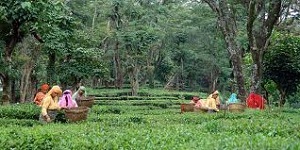
HP, North India, History, Nature, Temple, Trekking, Valley, Water falls, Wildlife Sanctuary
Palampur is green hill station in Himachal Pradesh. This place is surrounded by Pine Forests and Tea Gardens. Town name is derived from the word Pulum which means Lots of water. Most of the tourists attracts this place to see water falls and greenery. Beauty of this place cannot be described. On one side of this hill station beautiful plains are situated and on the other side of the hill station visitors can see snow covered hills. This place is covered with tea plantation.
Palampur is the best place to enjoy during the summer seasons for the natural lovers. Most famous activity is trekking. Dr.Jameson first started tea plantation in this place and established this place as town. Most famous and worth buying are wooden handicrafts, carpets, Tibetian Handicrafts. Holy is the major festival celebrates here.
What to see in Palampur:
Neugal Khad: It is one of the most attractive places in Palampur. Visitors of this place feel that this the best place to spend the time in the evenings. Other name is Bundla Chasm.
Tashi Jong Monastery: This monastery belongs to Tibetan refugees. Beautiful garden is placed in the surrounding of temple. It is the best place to view Kangra valley. This complex consists of crafts emporium. They are placed here for sale. On both sides of the main garden prayer halls are situated.
Saurabh Van Vihar: It is a beautiful garden named after Captain Saurabh Kalia. Area covered by this garden is 35 acres. To provide information to the tourists on nature and environment, Van Vihar is set up by Himachal Pradesh Forest Department.
Tea Gardens: In this place visitors can learn the process of making the tea from the factories. Palampur is also known as Tea Capital of North West India.
Bundlamata Temple: This temple is one of the major attractions in the village. This was built during 5th century.
What to see around Palampur:
McLeod Ganj: Tsuglakhang Complex is most attractive place in Mcleod Ganj. It is the seat of spiritual leader Dalai Lama. It is located 38 kms away from Palampur.
Andretta: It is located 12kms away from Palampur. Other name of Andretta is Artist’s Village. Major attractions of this place are Kangra Miniature Paintings, Norah Richard’s house paintings, Shobha Singh Art Gallery. Andretta Pottery and crafts society teaches how to make different type of crafts and pot making.
Gopalpur Zoo: This is also known as Dhauladhar National Park. Large variety of Flora and Fauna species can be seen here. It is located 13 kms away from Palampur. Major attractions of the zoo are red fox, Black bear, spotted deer etc…
Other places to visit near Palampur: Bir and Billing, Dharmasala, Kangra, Chamunda Devi Temple, Al Hilal, Naam Art Gallery, Brijeshwari Temple, Baijinath Temple.
Getting to Palampur: Only way to reach this place is road way. From the cities like Dharmasala, Pathankot, Mandi buses are available. Nearest Railway station is located at Pathankot. Nearest airport is located at Dharmasala.
Getting around Palampur: Taxis and auto’s are available to visit the surrounding places of Palampur. Autos do not run on meters. So auto fair has to be decided beforehand.
Best time to visit Palampur: Best time to visit this place is between February to November. During winter season visitors can enjoy snow fall. Summer season is pleasant for trekking activity.
Where to stay in Palampur: Limited hotels are available to stay here. Cottages and budget hotels are located in Chandpur tea estate. Very limited luxury hotels are also located here.
Where to eat in Palampur: Very limited and small restaurants are located here. Chinese dishes are most popular to serve. Other dishes available here are Continental and Indian dishes.
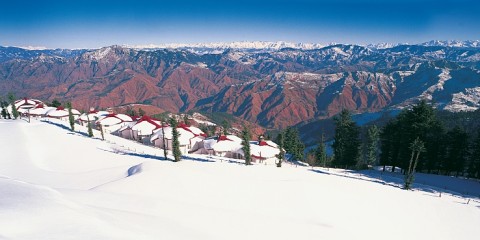
HP, North India, History, Musuem, Nature, Temple, Trekking, Valley, Wildlife Sanctuary
Kufri is a small hill station of Himachal Pradesh. The Word Kufri is derived from the word Kufr which means a lake in the local language. This is founded by British in 1819. From 50 years this place is so famous among the tourists. Popular activity is trekking. Several trekking places such as Fagu, Rewalsar, Shimla etc are started from Kufri to reach Manali.
Chail, Shimla and Kufri jointly known as Golden Triangle of Himachal Pradesh. Kufri is a perfect summer gateway. Annual winter sports festival celebrates here. Sikking competitions are the major attractions of Kufri. It is the best place for natural lovers as well as trekking lovers. Before Kufri ceded to the British it was the part of Nepal.
What to see in Kufri:
Himalayan Wild Life Zoo: Plenty of birds, Felines and Antelopes are living here. State Bird of Himachal Pradesh is Himalayan Monal. This Monal can also be seen in this zoo.
Mahasu Peak: During the winter season slopes of Mahasu Peak acts as Skiing ranges. It is highest peak in Kufri.
Indira Tourists Park: It is the best place for the relaxation during the evening timings. A major attraction of the Indira Park is Coffee shop.
Himalayan National Park: This is the best place to see several varieties of flora and Fauna. Few small temples are located inside the park .They are open only during summer season.
Chini Bungalow: It is one of the famous attractions in Kufri. In this place most exciting statues are located here.
Kufri Fun World: This is an amusement park. It is well equipped with worlds highest go-kart track, Pools and rides. All adults, teenagers, children are more exited to visit this place.
What to see around Kufri:
Shoghi: This place is known for most beautiful temples. It is beautiful town with excellent climate and lush green cover. It is located 27 kms from Kufri.
Chail: Chail is a beautiful hill station located in Himachal Pradesh. It was founded by Bhupinder Singh, Maharaja of Patiala. This place is famous for its architecture and the Palace which was built during British rule. It is located 34 kms from Kufri.
Barog: Major attraction in Barog is Renuka Lake. This is the largest lake in Himachal Pradesh. It is located 65 kms away from Kufri.
Shimla: This is famous hub for Indian tourism sector. It is surrounded by Oak Deodar and Pine forests. Several popular hill stations are located here. Kohana Embroidery, Thapada embroidery and Handicrafts of Shimla are world famous. It is located 34 kms away from Kufri.
Solan: Apart from several temples, oldest breweries are also located here. This place is also known as Mushroom Capital of India. It is located 62 kms away from Kufri.
Getting to Kufri: Best way to reach this place is road way. From several cities like Rampur, Kandaghat, Dharampur, Panchkula, Kalka, Shimla buses are available. Nearest railway station is located at Shimla. From railway station taxis are available to reach Kufri. Nearest airport is located at Shimla.
Getting around Kufri: Buses and Taxis are available to visit surrounding places of Kufri.
Best time to visit Kufri: During winter season temperature will be below zero degrees. At that time visitors can enjoy snowfall. Best time to visit this place is between March to October.
Where to Stay in Kufri: Several budget and midrange hotels are available to stay in Kufri. Luxury hotels are not found here. Few resorts are available. They are located at Kufri – Fagu Road and Kufri – Chail Road.
Where to eat in Kufri: Very Limited restaurants are available to have food in Kufri. Famous snacks available here are noodles, chaat, Pakoras, parathas. Chinese Continental and Indian food are available to eat.
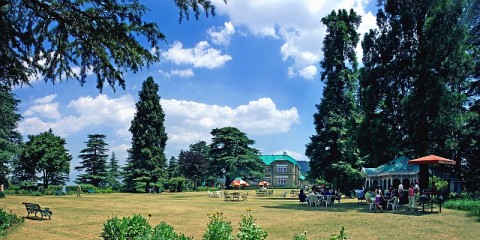
HP, North India, Fort, History, Nature, Temple, Trekking, Valley, Wildlife Sanctuary
Chail is a beautiful hill station located in Himachal Pradesh. It was founded by Bhupinder Singh, Maharaja of Patiala. This place is famous for its architecture and the Palace which was built during British rule. Chail covers 3 hillocks such as Sadh Tiba, Pandewa and Rajgarh. Shimla, Kufri and Chail jointly known as Golden Triangle of Himachal Pradesh. Beautiful places to see in Chail are Pine Valleys, Orchards, and Shivalik Peaks. Popular activities are trekking, Angling and adventure sports. Worth buying things in Chail are Caps, Carpets, and Shawls.
What to see in Chail:
Chail Cricket Stadium: It was built in 1893. This stadium is world’s highest stadium. Height is 2144 meters. Polo game also plays in this ground.
Chail Wildlife Sanctuary: Before this place was declared as Sanctuary in 1976 this was used as best place for hunting by Maharaja of Patiala. Major attraction of this sanctuary is goral, wild boar, Himalaya Black deer, Indian Puntjac. Large variety of Flora and Fauna are located here.
Kali Ka Tibba: People from nearby villages and towns come to this place to worship Goddess Kali.
Gurudwara Sahib: It is famous for its architecture style. Architecture of Gurudwara looks like church. It is situated at Pandhawa hillocks. This was constructed in 1907.
Siddh Baba Ka Mandir: This mandir was built in the place of Palace after Siddh Baba came into the dreams of Maharaja Bhupinder.
Other Attractions: Other attractions of Chail are Chail Palace and Chail Military School.
What to see around Chail:
Kufri: This is the best place for winter sports activities. It is located 34 kms away from Chail. Ski Resort is most famous here.
Shogi: It is the beautiful place with Salubrious climate and lush green cover. Shogi is the best place for trekking and bird watching. Plenty of temples are located here. It is situated 45 kms away from Chail.
Solan: Apart from several temples, oldest breweries are also located here. This place is also known as Mushroom Capital of India. It is located 35 kms away from Chail.
Barog: Major attraction in Barog is Renuka Lake. This is the largest lake in Himachal Pradesh. It is located 40 kms away from Chail.
Shimla: It is one of the popular hill stations in India. This is located 43 kms away from Chail.
Kasauli: Army Cantonment is located here. Worth visiting places here is dense forest and snow clad mountain. It is located 62 kms away from Chail.
Getting to Chail: only way to reach this place is road way. Buses are available from Rampur, Narkhanda and Shimla to Chail. Nearest railway station is located at Shimla which is 43 kms away from Chail. Nearest airport is at Shimla.
Getting around Chail: As it is small village nearby places can visit on foot. Taxis are available to see the places around Chail.
Best time to visit Chail: It is essential to known the best time before visiting any place to avoid inconvenience. Best time to visit this place is October to March. During winter season temperature goes below zero degrees.
Where to stay in Chail: Plenty of hotels are available to stay in Chail. For the luxury stay best hotels are royal palace of Maharaja of Patiala and Palace Hotel. Along with hotels number of resorts is also available to stay.
Where to eat in Chail: Almost all the hotels are in- house restaurants. Restaurants are very limited in Chail. Chinese, Indian and Continental food is available here.
Shimla is the capital city of Himachal Pradesh. This is famous hub for Indian tourism sector. This place is name after Goddess Shyamala Devi. She is incarnation of Goddess Kali. It is surrounded by Oak Deodar and Pine forests. Several popular hill stations are located here. Kohana Embroidery, Thapada embroidery and Handicrafts of Shimla are world famous.
Different music instruments such as Chimta Flute, Ghunghroo, Ghariyal, Manjara, Iktara etc are used by tribal’s to play the music. For the shopping lovers The Mall is the best place. Walking sticks, Kinnauri and Kullu shawls, mufflers, winter garments, Tibetian Jewellery are worth buying here. Festival which are famous here are Bharara Fair, Bhoj Fair, Lavi Fair, Mahasu Jatar, Pathar Ka Khel.
What to see in Shimla:
The Mall: This is the major shopping centre in Shimla. Several tourist offices, Post Offices, Bars, banks, Clubs, restaurants are located here. Gaiety Theatre is also placed here.
Kamna Devi: This is one of the major attractions in Shimla. It is popularly known as Prospect Hill. Baleugunj place is located near this hill. From this place visitors can see Tara Devi, Jutogh Canntt, summer hill and Shimla.
Christ church: It is located at the heart of the city. In many Hindi movies one can see this church. It was built in 1857.
State Museum: Collection of ancient Jewellery, Textiles, Dresses, Paintings, are placed here.
Indian Institute of Advanced Studies: This was built in 1884 during the period of Lord Dufferin. Henry Twain designed this place. Visitors can enjoy best views and gardens here.
Jakhu Hill: This is the highest peak of Shimla. Lord Hanuman Temple is very famous here. Chir and Deodar trees are major attraction to the visitors. Bajrangbali statue whose height is 108 feet is placed here.
What to see around Shimla:
Summer Hills: It is located 6 kms away from Shimla. This place consists of full of oaks and Pine trees. Himachal Pradesh University is situated here.
Tattapani: Hot springs are most famous in this place. It is located 51 kms away from Shimla. This is religious place having several temples. Trekking, Fishing, Rafting, adventures sports major attraction to the tourists.
Chali: This place is famous for deodar and Pine trees. Several tourists especially honeymoon couple visits this place. Idyllic resort is most famous here.
Mashobra: This place consists of awesome range of flowers, elegant guest houses, and green meadows. Major attractions here are apple orchards and thick woods of pine and oaks.
Glen: This is best Picnic Place for the visitors. It is located 4 kms away from Shimla.
Other place to visit: other places to visit nearby Shimla are Naldehra, Narkanda, and Kurfi.
Getting to Shimla: Through all the means of transport such as road, air and railways are well connected with Shimla. From all the major cities like Kullu, Chandigarh, Delhi buses, trains and air buses are available daily to reach this place.
Getting around Shimla: Plenty of Taxis and buses are available to visit the place surrounding Shimla.
Best time to visit Shimla: Best time to visit this place is between April to October. During the rainy reason visitors has to be so careful as roads in this place are so slippery.
Where to stay in Shimla: Plenty of hotels are available here. Based on the tourist’s requirements they can choose the hotels. All range of hotels is available here. Private and Government guest houses are also available.
Where to eat in Shimla: Plenty of restaurants are available. All varieties of food such as Chinese, Continental, and Indian food are available.
Manali is a hill station in Himachal Pradesh. It is named after Hindu god Manu. Manali is popular honeymoon spot. Visitors can enjoy the place by seeing slopes and snow covered peaks. This place is situated in Kullu district. Manali is famous for its culture, history, scenic beauty, snow covered by mountains. This valley is known as Valley of Gods. Most of the foreigners attack towards this place for adventure sport. Mecca is the best place for adventures sports. Peak season for this valley is during the summer season, New Year period and Christmas period.
It is believed that earlier inhabitants of Manali are Shepherds, nomadic hunter tribe and Rakshas. Manali is merged in India in 1948. Earlier it was part of Princely state of Mandi. Festivals celebrates here are Dassehra, Winter Carnival, Hadimba Devi, Basant Panchami.
What to see in Manali:
Manu Temple: This temple is dedicated to Sage Manu. This temple is situated in old Manali. It is believed that to recreate human life after great flood had destroyed the world sage Manu stepped off his ark here.
Hadimba Temple: This temple was having beautiful crafted 4 tiered Pagoda roof. Caved doorway is most attractive to the visitors. This temple was built in 1533 AD.
Solang Valley: It is considered as good picnic spot and good ski slopes are located here.
Paragliding: This is most famous activity in Manali. Great opportunities for paragliding are Solang Valley and Rohtang Valley.
Trekking and Adventures sports: For the adventures lovers this is the best place. Mountaineering institute is located here which gives training in basic and advance courses in water sports, sikking, mountianing and Trekking. Best places for trekking are Koshla Tree line, Solang Valley, Lamadugh Meadows.
What to see around Manali:
Jagatsukh: It is located 8 kms away from Manali. Jagatsukh consists of several temples dedicated to Goddess Sandhya Gayatri and Lord Shiva. Earlier this place acted as capital of Kullu. Arjun Caves are another attraction here.
Naggar Castle: This was built by Raja of Kullu before 600 years. Now it was converted into heritage hotel. From this castle visitors can have excellent view of Naggar Valley.
Nehru Kund: After drinking water from the pond by Jawaharlal Nehru it was named as Nehru Kund. It is located 6 kms away from Manali.
Vashisht: This village is having a temple which is dedicated to Sage Vashisht who is the Guru of Lord Rama. Several sand stone temples and natural springs can be enjoyed here by the tourists.
Rahala and Rozy Waterfalls: These are located in Leh Manali Highway. Visitors are most attractive towards these waterfalls. It is located 29 kms away from Manali.
Getting to Manali: Only way to get into Manali is by road way. Buses are well connected to Chandigarh and Delhi. Nearest railway station is located at Joginder Nagar. Nearest airport is at Bhuntar town.
Getting around Manali: Taxis and autos are available to reach the surrounding places of Manali. Motor bikes will be given on rent to see the nearest places.
Best time to visit Manali: Best time to visit this place is between May to November. Rush will be more in the months of May and June. Again in the month of December rush will be more.
Where to stay in Manali: Plenty of hotels, guest houses are available to stay in Manali. But Home stays is the best option for the people who want to enjoy the nature.
Where to eat in Manali: Plenty of restaurants are placed here. All varieties of food such as Tibetian, Italian, Indian, Chinese etc are available here.
Kaza Attractions: Best Place for Trekking, Tangyud Monastery, Tabo Monastery
Kaza is sub divisional headquarters of Spiti Valley of Himachal Pradesh. This town is divided into Kaza Khas (old) and Kaza Soma (new) sections. Kaza Khas consists of historical buildings, gompas, monasteries, Kings Palace while Kaza Soma consists of all government offices. Kaza seems most beautiful with streams, Crystal Clear River and snowy crowns. It is located 11,980 feet above the sea level. Rudyard Kipling described this place as a World within the World.
Culture in Kaza is similar to Ladakh and Tibet. This is the best commercial centre and administrative centre for Spiti Valley. Most attractive activities for several tourists are adventurous sports, mountaining, trekking. Festivals celebrates here are Ladarcha Fair, Tsheshu Fair, Pauri Fair, Tribal Fair. For the shopping lovers best things to buy are stone gems, Clothes, Chinese Ceramic Utensils.
What to see in Kaza:
Tangyud Monastery: From this castle visitors can see the entire view of Kaza. This place is most sacred to Buddhists. It seems like fortified castle with slanted mud walls.
Tabo Monastery: In western Himalayas this is one of the oldest Buddhism centres. This monastery is almost looks like Ajanta paintings. Lama Dance is most famous in this place.
What to see around Kaza:
Dhankar Monastery: It is located 5 kms away from Kaza. Main intension to build this fort is to keep an eye on enemies and enjoy the Spiti Valley by seeing from this place. Old temple in Dhankar is known as Lha O Pa Gompa.
Ki Monastery: In the Spiti Valley this is the largest monastery. This monastery is famous for wind instruments, stucco images, rare manuscripts, thankas, and murals. This monastery is dates back to 1000 years. This is the best place for Pasada Style of architecture. It consists of 3 floors. Small rooms in the monastery are allotted to monks. Underground is used as storage and Ground Floor is used as assembly hall. It is located 12 kms away from Kaza.
Pin Valley: It is located on the banks of river Pin. Major activities in this place are archery competitions and Horse racing. Most of the tourists attracts towards Chamurti Horses. It is a part of Spiti Valley. This is situated 13 kms away from Kaza.
Lahaul Valley: This is most developed valley than Spiti. It is one of the subdivisions of Lahaul Spiti district. Trekking is the best activity here. It is Located 8 kms away from Kaza.
Kibber: It is located 13 kms away from Kaza. This is popular trekking place. It consists of only 80 houses with architectural style.
Getting to Kaza: Only way to reach this place is through road way. Visitors need to come to this place either from Shimla or from Manali. Nearest railway station is located at Jogindernagar. Nearest railway station is at Shimla.
Getting around Kaza: Taxis are available to visit the places around Kaza. Motor cycles are available for rent to enjoy riding on the mountain valley.
Best time to visit Kaza: Between May to October visitors can enjoy this place very much.
Where to stay in Kaza: Plenty of midrange hotels are available here. Best hotels in Kaza are Banjara Retreat, Parasol Retreat, and Spiti Valley Camp Retreat.
Where to eat in Kaza: Restaurants are very limited. Only Tibetian and Indian Cuisine are available. Both vegetarian and non vegetarian food is available.
Kibber is a small village in the Spiti Valley in Himalayas. Kibber lies on summit of a limestone rock. Lush Green fields and agricultural forms are abundant. Major crops are Peas and Barley. Village consists of only 80 houses. They are made up of adobe brick and mud. This place is famous for monasteries, barren splendour, and scenic mountains. Kibber represents like Tibet and Ladakh. Culture in kibber is similar to Tibet. This place is also known as Little Tibet. Villagers are engaged in making the handicraft items and knitting the clothes. Main activities in Kibber are mountaining and Trekking. Dandmachan peak is used for mountaining and trekking. Plenty of fossils present in and around Kibber.
What to see in Kibber:
Ki Monastery: In the Spiti Valley this is the largest monastery. This monastery is famous for wind instruments, stucco images, rare manuscripts, thankas, and murals. This monastery is dates back to 1000 years. This is the best place for Pasada Style of architecture. It consists of 3 floors. Small rooms in the monastery are allotted to monks. Underground is used as storage and Ground Floor is used as assembly hall.
Kibber Wildlife Sanctuary: In India it is only cold desert wild life sanctuary which is located on the banks of River Spiti. Area covered by this sanctuary is 1400 sq.kms. Very rare animals such as blue sheep, snow leopard, ibex etc can be seen here. Bird species such as bearded eagle griffons, snow cock are major attraction in this sanctuary.
What to see around Kibber:
Kaza: It is the base point for trekking. Places to visit in Kaza are Hikkim Monastery and Sa Kya Pa Sect monastery. It is situated 13 kms away from Kibber.
Dhankar Monastery: It is located 13 kms away from Kibber. Main intension to build this fort is to to keep an eye on enemies and enjoy the Spiti Valley by seeing from this place. Old temple in Dhankar is known as Lha O Pa Gompa.
Pin Valley: It is located on the banks of river Pin. Major activities in this place are archery competitions and Horse racing. Most of the tourists attracts towards Chamurti Horses. It is a part of Spiti Valley. This is situated 16 kms away from Kibber.
Kunzam Pass: Height is 4590 meters above the sea level. It is the gateway to Spiti Valley. This place is located 82 kms away from Kibber. It offers best view of Shigri Parbat.
Langza: This is situated 23 kms away from Kibber. Langza is known as maritime fossils.
Getting to Kibber: Only way to reach this place is through roadway. From Shima, Kinnaur, Kaza buses are available. Nearest railway station is located at Jogindernagar. Nearest airport is at Shimla.
Getting around Kibber: As it is very small village tourists can enjoy this place by walking around the valley. Taxis are available to visit the places surrounding to Kibber.
Best time to visit Kibber: Visitors need to know the best time to visit this place as during the winter season gateway will be closed. During the winter season temperature is below zero degree. Best time to visit this place is between July to Middle of October.
Where to stay in Kibber: Being a small village hotels are not available here. Local people give rooms for rent. Luxury facility will not be available here. During summer season campaigning facility is available.
Where to eat in Kibber: Very limited options to eat in Kibber. Home stays will provide food on demand. Only Indian and Tibetian Cuisine food is available.
Keylong is the administrative centre of Lahaul and Spiti district of Himachal Pradesh. This is the best place for the natural lovers as it is surrounded by green fields. One of the English travellers described this place as A Rough cut Emerald in a Bronze and Silver settings. Rudyard Kipling has stated that this region is surely the God live here this no place for men. This place is located in Manali and Leh Road. In this region tourists can find white and brown mountains.
Keylong is located on the banks of river Bhaga where Chenab Valley, Bhaga Valley and Chandra Valley are intersected. Buddhism culture is followed by local people. Plenty of Bazaars, monasteries and temple are located in this place. Famous festivals celebrate in this place are Monks and Lamas. Lahaul is known as annual festival celebrates here. Keylong is the famous destination for sports such as Camping, Skiing, Paragliding, Jeep Safari, Fishing, and Trekking
What to see in Keylong:
Triloknath Temple: This temple is very famous in this place. It is the sacred place for Buddhist and Hindus.
Khardang Monastery: Other name of this monastery is Khardang Gompa. This is the reflection of art and culture of Buddhism. From this place surrounding places can be viewed. Library is placed in this monastery. In this library Tangyur and Kangyur scriptures are most famous. Buddhist literature can be seen here. Other major attractions of monastery are huge status of Lord Buddha, musical instruments like horns, drums.
Shashur Gompa: Major attractions of this gompa are flags, conventional paintings, bells, Chortens. In the months of June and July devil dance is performed here.
Monasteries: Plenty of monasteries are located in this place. They are Gemur, Tayul, Guru Ghantal, and Shasur. All these are famous for Buddhist faith and arts.
What to see around Keylong:
Gondla: It is located 18 kms away from Keylong. Royal houses and scenic landscape are most famous here. Thakur of Gonda is 8 storied royal house which is most attractive to the tourists for its architecture.
Sissu: It is located 30 Kms away from Keylong. From Siberia ducks come here on migration during spring and autumn seasons. This place is located on the banks of river Chandra.
Tandi: It is located 8 Kms away from Keylong. This is famous for Chitwan National park.
Getting to Keylong: Only way to reach this place is through road ways. This place is well connected with bus route from Shimla, Delhi and Manali. Nearest railway station is located at Jogindernagar. Buses and taxis are available to reach keylong from Jogindernagar. Nearest airport is Bhuntar Airport.
Getting around Keylong: As it is a small village, site seeing around Keylong can be discovered on foot to enjoy the nature. Surrounding places of Keylong can be visited by means to taxis and Jeeps.
Best time to visit this place: Best time to visit this place is between May to October. It is essential to known this timings by the tourists as Rohtang Pass which the entry place will be closed rest of the year.
Where to stay in Keylong: As it is very small village, very limited hotels are available to stay. Luxury hotel are not available here.
Where to eat in Keylong: Plenty of restaurants are available here. Almost all the restaurants serve only Tibetian Food. Only few restaurants serve Indian food.
Nako is a small village in Kinnaur. It is located along the border with Tibet which is very sensitive and restricted zone. Beauties of this place are monasteries, Nako Lake and Hangrang Valley. Temples, Jhunkhang and Chortens are best places to see in this village. Clothing and Food are similar to Tibetians. Most of the people follow Buddhist culture in this place. Lamas is the traditional dance. They believe that though lamas dance evil forces can be defeated. An artistic Culture developed during 10th and 13th centuries in western Himalayan region under Buddhist Culture. All these things can be seen in 7 temples of Nako village. This place is famous for apple orchards. Festivals celebrates in this place are Losar, Flaich Ukhyang, Dakhraini, Sazo.
What to see in Nako:
Nako Lake: This Lake is surrounded by the mountains. Shape of this lake is oval shape. During the summer and winter seasons this place is filled with tourists. Boating is most famous during the summer season. In the winter season lake will get frozen. At that time this place becomes the hub for ice skating.
Monastery: It is located in the middle of the village. This place is famous for scriptures, art works, murals and sculptures. In 996 AD it was founded by Ringchen Zangpo. This monastery consists of Lotsawa Lhakhang temple. This temple is also known as Translator’s temple. It is also known as temple complex. Other name of this monastery is Nako Gompa.
Gates in Village streets: Gates in Village streets are built with wood and stone and painted in inside with colourful Buddhist religious paintings.
What to see around Nako:
Kinnaur: It is located 58 kms away from Nako. This place is known as Land of fairytales. Kinnaur is the best place to see the Tibetan Culture. Places in Kinnaur such as Lahaul and Spiti are covered with snow for 6 months.
Khab: It is located 35 kms away from Nako. This village is surrounded by mountains. River Spiti and River Sultej meet in this place.
Moorang: Apricot farming is very famous in this place. It is believed that Old fort which is located here is built by Pandava Brothers. It is located 77 kms away from Nako.
Getting to Nako: Only way to reach this place is though road ways. Taxis and bus services are available regularly from Rampur and Shimla. Nearest railways station is Shimla which is 283 kms away from Nako. Nearest Airport is located at Shimla. Taxis are available to reach Nako from Shimla.
Getting around Nako: Taxis and Jeep are available to visit the places around Nako.
Best time to visit Nako: It is not advisable to come to this place in winter season as snowfall is very high. Best time to visit this place is between April to October.
Where to stay in Nako: Very limited budget hotels are available to stay in Nako. Luxury hotels cannot be seen in this place.
Where to eat in Nako: Limited restaurants are available here. Very few restaurants offer Indian and Tibetian food. All others serve only local food.
Kasauli is a cantonment located in Himachal Pradesh. It was established in 1842 as a hill station. Height of this hill station is 1927 meters. Most attractive places in Kasauli are dense forest and snow clad Mountain. Old Churches and Victorian architecture, Gothic style buildings are famous in this place. According to Hindu Mythology, Kausali is a place where Lord Hanuman kept his feet while he is getting Sanjeevani Herb for Laxman to make him alive. Some of the common features for the summer residences are Pretty Facades, Well Manicured lawns and Long driveways. Basant Panchami, Lohri, Renuka Fair, Sari Festival and Solan Festivals are most famous in this place.
What to see in Kasauli:
Christ Church: It is the best tourist place which is located in Mall road of Kasauli. In Gothic style this was constructed during the British era. It is one if the important hill station church.
The Mall: This is the best place for the shopping lovers. It is always busy with several visitors who visit this place. This consists of Lower mall and upper mall streets. Worth buying here are Tibetian Carpets, Shawls, Metalwork’s, wood works, Jewellery items, handicrafts etc…
Central Research Institute: This was established in 1905 during colonial British rule. Several tourists attracts to this place. Always it is engaged in research and development activities.
Monkey Point: Highest peak of the town is Monkey point. It is believed that Lord Hanuman kept his feet in this place while he is carrying Sanjeevani to Laxman. Snow covered peaks are most attractive to the visitors.
Kasauli Club: It is one of the oldest clubs in the country established in 1880. Its membership comes with 15 years wait time. Indian Army personnel are maintaining this club.
Kausali Distillery: It is believed this was functioning before the formation of the cantonment. It is the oldest distillery for Scotch whisky in Asia.
Other places to see in Kasauli: Sri Baba Balanath Temple, Krishna Bhagvan Mandir, Gurudwaras located in Kasauli Mashobra Rd and Gharkhal Bazaar, Irish Roman Church, Baptist church.
What to see around Kasauli:
Dagshai: It is situated 12 kms away from Kasauli. Dagshai is one of the oldest cantonments. Most beautiful and colourful green and red roof top school campuses are located on the top of Dagshai hill. These are constructed in 1876.
Timber Trail Resort: This resort connects 2 hills. Cable cars are available to reach this place. This is one of the major attractions to the tourists. Pine forests are located here. Beauty of Kaushalya River can be seen from here. It is located 36 kms away from Kasauli.
Parwanoo: This place is known for apple orchards. It is located 24 kms from Kasauli.
Other places to visit near Kasauli: Other places to visit near Kasauli are Shimla, Chandigarh, Auli, and Gurkha Fort.
Getting to Kasauli: This place is well connected to Chandigarh and Delhi by Road. Nearest Railway station is located at Kalka. Nearest airport is at Shimla.
Getting around Kasauli: Most preferred and attractive mode of transport to reach the surrounding places of Kasauli is Horse cart or Tongas.
Best time to visit Kasauli: From April to November is the best time to visit this place.
Where to stay in Kasauli: Very limited accommodation facility is available in Kasauli. On the top of the hills several resorts are available to stay. Most of the visitors prefer these resorts to enjoy the nature.
Where to eat in Kasauli: Restaurants in this place are very limited. Chinese, Indian, continental food is available in the restaurants.
Udaipur is also known as City of Lakes. It is located on the banks of Chandrabhaga River in Spiti and Lahaul districts of Himachal Pradesh. This is most sacred place to Buddhists and Hindus. Earlier name of Udaipur is Markul as in this located a Markula Devi temple is located. She is incarnation of Goddess Durga. Later in 1695 AD, Markul is renamed as Udaipur in the honour of King Udai Singh of Chamba.
Udaipur is the best place to see Hindu and Tibetan style of architecture. Temple in this place is constructed with stone and wood. On the outside walls of the temples carvings of Kinnaras, Yakshas, Ganga, Sun god, Navgrahas, Lord Vishnu can be seen. Pauri is the most famous festival in Udaipur.
What to see in Udaipur:
Lake Palace: It is a luxury hotel. This is located on 4 acres rock on the Jag Niwas Island in Lake Pichola, Udaipur. There are 83 rooms in this hotel. It is having white marbel walls.
City Palace: In 1559, this was built by Maharana Udai Singh. This complex consists of several small palaces. It was built in Flamboyant style.
Lake Pichola: It is an artificial fresh water lake which was created in 1362 AD. Within this lake 4 islands are located. They are Jag Mandir, Mohan Mandir, Arsi Vilas and Jag Niwas.
Fateh Sagar Lake: It is an artificial Lake constructed in 1678 by Maharana. It is one of the 4 lakes of Udaipur. Other 3 are Jaisamand Lake, Udai Sagar Lake, and Lake Pichola.
Jagmandir Island Palace: This was constructed in 17th century. Now this is completely redeveloped to host 21st century guests.
Jagdish Temple: This is largest Hindu temple built in 1651. Other name of this temple is Jagannath Rai and Jagdish –Ji. It attaches to double stored Mandapa to double story Saandhara.
Saheliyon Ki Bari: This was built by Maharana Bhopal Singh. It is the largest garden consists of marbel elephants, lotus pool, kiosks, Fountains.
Gulab Bagh and Zoo: Innumerable varieties of roses can be seen here. It is 4th oldest zoo in semi continent. Garden consists of Lotus pond and several trees such as citron, guava, mangoes etc…
Other places to visit in Udaipur: Other places to visit in Udaipur are Moti Magri, Shiv Niwas Palace, and Monsoon Palace.
What to see around Udaipur:
Nathdwara: Nathdwara means gateway to Lord Devotees. It is famous for Pichwai Paintings. It is located 48 kms away from Udaipur.
Eklingji: It is located 23 kms away from Udaipur. It is a temple complex consists of 108 temples. These are constructed with marbles and sandstones.
Kumbhalgarh Wildlife Sanctuary: It is located 101 kms away from Udaipur. Large varieties of wild animals such as nilgai, smabhar, jungle cat, jackal etc can be seen here.
Getting to Udaipur: This is well connected with road and railways. From all the major cities like Indore, Kolkata, Delhi, Mumbai etc… buses and trains are available. Nearest airport is Dabok Airport.
Getting around Udaipur: Buses, taxis, private cabs are available to visit the places around Udaipur.
Best time to visit Udaipur: Between July to September visitors are requested to come to place. Rohtang Pass which serves as entrance to Udaipur will be closed in the remaining months as it is covered with snow.
Where to stay in Udaipur: Plenty of hotels are available to stay in Udaipur. Best hotels are Hotel Aashiya Haveli, Taj Lake Palace, Hotel Sarovar, and Ram Pratap Palace.
Where to eat in Udaipur: Plenty of restaurants are available to eat in Udaipur. Best restaurants are Green Chilly restaurant, Lal Bagh Restaurants, Sheraton Udaipur Palace Resort and Spa.
Dharmasala is located in Kangra district of Himachal Pradesh. Other name is Bhagsu. Dharmasala is divided into two parts. They are Upper Dharmasala which is also known as McLeod Ganj and other one is Lower Dharmasala. Lower Dharmasala consists of Commercial areas, local hospitals, schools and government offices. Upper Dharmasala is famous for Tibetan culture and community. This is the residence place of spiritual Tibetian Leader Dalai Lama. Prime Minister Jawaharlal Nehru had given permission for the Tibetians to live in this place in 1959. Main attraction of Dharmashala is Tibetian Architecture. Buddha Purnima is a famous festival celebrates in this place.
What to see in Dharmasala:
Dal Lake: Deodar tree is major attractions in this place. Near the lake a small Shiva Mandir is located. Base camp for the trekkers is organised here. People believe that if they take a dip in the lake they will be blessed by Lord Shiva.
Himachal Pradesh Cricket Association Stadium: This was opened in 2003. Venue holds IPL Matches and Ranji Trophy. Capacity of the stadium is 25000 seats.
Billing Adventure: In the international paragliding circuit Billing Paragliding site has become legend. It hosts both world cup and International competitions.
Tsuglagkhang: It is a vast temple complex consists of Namgyal Monastery which is residence of Dalai Lama, Cafeteria, library, Buddhist shrines, Prayer wheels, book shop, and Tibetian museum. All sections of monastery can be seen except monk’s residence.
What to see around Dharmasala:
Kangra Fort: This is best place which acts as the evidence to war records of Alexander. It is one of the oldest and largest forts in India. Other name is Nagakot. Main attractions are Manjhi and Banganga Rivers. It is located 20 kms away from Dharmasala.
Dharmakot: This is the best picnic spot located 14 kms away from Dharmasala. This place offers Himalayan views.
Norbulingaka Institute: This is a centre for continuation. Training will be given for Tibetian arts and crafts. This was developed by Dalai Lama.
Bhugsunath: This place is named after ancient Bhugsunath temple. It is the favourite picnic spot to all the visitors. Major attraction here is waterfalls.
Palampur: This place is famous for Tea Gardens. Other name is Tea Capital of North India. After Kullu and Manali this is famous honeymoon destination. It is located 43 kms away from Dharmasala.
Bhagsu waterfalls: This place famous for waterfalls. It is located very close to McLeod Ganj. A Bhagsu waterfall is 7 kms away from Dharmasala.
Kangra Arts Museum: This is located 4kms away from Dharmasala. This displays artifacts of Buddhist and Tibetan cultures. Some of the items in the museum belong to 5th century.
Getting to Dharmasala: Different ways to reach this place are Road and Air ways. From all the north Indian cities, buses will come to this place frequently. Nearest railway station is Kangra Mandir. Nearest airport is Gaggal / Dharmasala airport which is 15 kms away from the city. Domestic flights connected to Delhi.
Getting around Dharmasala: Bus is the cheapest way to reach the surrounding places of Dharmasala. Auto rickshaws are also available to take to destination places. But they will not run on meters.
Best time to visit Dharmasala: Throughout the year visitors are allowed visit this place. But January is not preferable to visit this place as temperature at that time is subzero. Best season to visit this place is between September to June.
Where to stay in Dharmasala: Plenty of hotels are available to stay in this place. Most of the hotels are located at Yongling area and McLeod Ganj areas.
Where to eat in Dharmasala: Most famous food here is Thupkas and Momos. All varieties of food are available in all the restaurants.
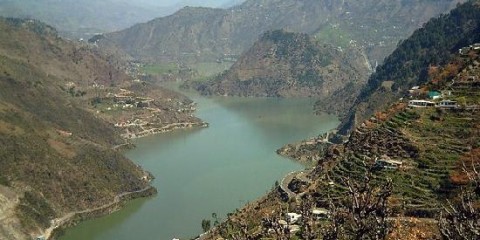
HP, Boating, History, Musuem, Nature, Temple, Valley, Water falls, West India, Wildlife Sanctuary
Dalhousie is a hill station in Himachal Pradesh. This was established as summer retreat for soldiers, officials of military, Englishmen. It was founded by Britisher Lord Dalhousie in 1854. 5 hills are located in this place. They are Bhangora, Bakrota, Tehrah, Potreyn and Kathalagh. Large number of Victorian style mansions can be seen here. This is the right place to enjoy the nature as well as trekking. Nearby town is Chamba. In this place river rafting is very famous. One can enjoy this between June to October. Main shopping centre for the shopping lovers is at Gandhi Chowk. Purses, Handicrafts, dolls, traditional bags are worth buying in this place. Tuesday is holiday to the shops.
What to see in Dalhousie:
St.John’s Church: This is the oldest historical church. It was constructed during the British rule. This is most beautiful church of the town with beautiful natural background.
St.Francis Church: Donations were collected to construct this church. Civilians as well as army officers contributed most of the money. It was constructed in 1894. Intrictive stone work and beautiful glass work can be seen here.
St.Patrick’s church: Under the area of Dalhousie cantonment this church is located. This church is largest church of hill station.
Kynance: Constructed in 1933 by NR Dharamvir. When Netaji Subhash Chandra Bose health deterioted, he came to Dalhousie and taken rest in this building.
Trekking: Moti Tibba, Dainkund Peak, Garam Sadak, Bkrota Hills, Jhandri Ghat are best trekking places in Dalhousie.
Other places to visit in Dalhousie: Shivkal, Satdhara Falls, Ganji Pahari, Norwood Paramdham are worth seeing places in Dalhousie.
What to see around Dalhousie:
Kalatop: This place is located 11 kms away from Dalhousie. 3 days training will be given for trekking in this place.
Bhuri Singh Museum: It was established in 1908. Several scripts can be seen here. These scripts provide information about Chamba. This was named after the king Raja Bhuri. Painting of his family members can be seen here. Outstanding collections of Guler Kangra style painting are kept here. This is located 52 kms away from the city
Laxmi Narayan Temple: This temple belongs to 10th century. It was built by Sahil Verman in Shikhara style. This temple was dedicated to Lord Shiva and Lord Vishnu. It is located 91 kms away from Dalhousie.
Kalatop Forest / Kalatop Wild Life sanctuary: It is situated 8 kms away from Dalhousie in chamba. Thick Foliage of deodar trees covered the forest. Major wildlife species in this forest are Jackal, Langur, Serow, Barking, Deer, and Leopard etc…
Chemera Lake: It is situated 25 kms away from Dalhousie. This is the Excellent site for the activities like boating, angling, fishing. Other activities available here are kayaking, Motor boating, rafting.
Getting to Dalhousie: Only way to reach this place is by road. Buses are available from Delhi, Amritsar and Mumbai. Nearest Railway station is located at Pathankot. Nearest domestic airport is located at Pathankot.
Getting around Dalhousie: Buses, Taxis, jeeps are available to visit the places around Dalhousie.
Best time to visit Dalhousie: Between March to November tourists feel comfortable to visit this place.
Where to stay in Dalhousie: Plenty of guest houses, hotels and home stays are available. As per their requirement tourists can choose the hotels. During the peak seasons, per night cost of the resort is ranging between Rs.5000 to Rs.8000.
Where to eat in Dalhousie: Several restaurants are situated here. Cheapest food will be available at Punjabi Dhabas. These dhabas are located at Subhash Chowk.
Kullu is located on the banks of River Beas in Himachal Pradesh. It is an open valley between Largi and Manali. Earlier name of Kullu is Kulanthpitha. Meaning of this word is the ending point of inhabitable world. This is the best place for natural lovers. Hills in the valley covered with Sprawling Apple Orchards, Deodar Forest and Pine forests. This valley is known as Valley of Gods. For all the tourists it is the most favourite hill station. Several bollywood movies picturised here. Activities in this valley are Angling, hiking over the Himalayan glaciers, paragliding, Mountaineering, river rafting, trekking. This place is also famous for adventure sports.
Trekking places are located in ladakh, Zanskar, Lahaul and Spiti. This valley is also mentioned in Vishnu Purana, Mahabarata and Ramayana. Several carved temple can be seen in this place. Folk dances are one of the attractions to the tourists. Festivals in Kullu are Kullu Dussehra, Nainadevi Fair, Phool yatra, Naggar Ganeh.
What to see in Kullu:
Chandrakhani Pass: This valley is 3600 meter above the sea level. It is the best place for trekking.
Raghunath Temple: It was believed that Lord Rama worshiped Lord Raghunath in this place. Local believes that Lord Raghunath is the protector of this valley. Temple was built by King Jagat Singh in 1650 AD. Pahari and Pyramidal styles can be seen here.
Rafting: It is one of the major attractions to the visitors of Kullu. Best time to do rafting is from middle of September to middle of October and end of April to June.
Trekking: Several trekking places are situated in Kullu. They are ladakh, Zanskar, Lahaul and Spiti.
What to see around Kullu:
Jagannathi Devi Temple: Other name of this temple is Bekhli Temple. Gaddi and Rajasthani tribal influence is more on this temple. It takes 90minutes to reach this temple from Kullu.
Pandoh dam: This is located 48 kms away from Kullu. It is the man made beauty. This dam was built on River Beas for the generation of power. Height is 76 meters.
Bijli Mahadev Temple: This temple is dedicated to Lord Shiva. It was constructed in Pahari Style. It is situated 17 kms away from Kullu.
Hanogi Mata Temple : It is located on the top of the small peak. Green mountains are the background to the temple. It is located 40 kms away from Kullu.
Jawarhalal Nehru Great Himalayan Park: other name is The Great Himalayan National Park. This is the best place for wildlife lovers. Most endangered species of animals can be seen here.
Other places to see around kullu: Manikaran, Manali and Rohtang Pass are the other important places to see around Kullu.
Getting to Kullu: Only way to reach this place is by road. Road of Kullu is well connected with Shimla, Pathankot, Chandigarh, and Delhi. Nearest railway station is located at Joginder Nagar. Nearest airport is at Bhuntur.
Getting around Kullu: One can enjoy this place by bike riding. Here bikes will be available on rent. Buses, hill terrain vehicles, Jeeps are also available to visit the places surrounding Kullu.
Best time to visit Kullu: Best time to visit this place is between March to May.
Where to stay in Kullu: Several hotels and resorts are available to stay. Some luxury hotels are offering steam bath facility. But for the people who want to enjoy the beauty they can hire cottages on rent.
Where to eat in Kullu: Plenty of restaurants are available. Momos, Chhole Bhature and Pakoras are most famous snacks in this place. All restaurants offer Indian, Continental, Chinese cuisine.
Manikaran is a small town situated between the rivers Parvati and Beas. It is located in Kullu district of Himachal Pradesh. Several tourists who visited Kullu and Manali would like to see this place to see the hot springs. This place is also famous for pilgrim centres. Several Hindu temple and Gurudwaras are placed here. According to Hindu mythology, Manu who is the law giver recreated the life of human beings after the disaster of city in the floods. Temples of Vishnu, Rama and Krishna can be seen here.
One story for the hot springs says by the local people is, once Lord Shiva and Parvati stayed in this place for millions of years. At that time Goddess Parvati lost her jewellery in the river. She made all the attempts to gain jewellery back. At that time Lord Shiva felt so angry and opened his third eye. With the intention to control the angry of Lord Shiva Serpent God hissed from then onwards hot water started oozing from the place where the jewels had fallen. With the view to wash of the sins many pilgrims take a dip in the holy spring water.
What to see in Manikaran:
Kulant Pith: Of all the Peethas, Kulant Pith considered as the holiest place in the country. Most sacred place in Kulant Pith is Vishnu Kund.
Sri Guru Nanak Devji Gurudwara: This is the most sacred place to all the Sikhs. Here free food offers to all the pilgrims.
Lord Ramachandra Temple: It is believed that statue in this temple bough from Ayodhya by the king of Kullu. For the Hindus this is the most sacred place.
Hot springs: In Manikaran there is two hot springs. One is at Sri Guru Nanak Devji Gurudwara and other one is at river Parvati. Pilgrims believe that after taking the bath in river Parvati if they drink water of that river that leads to salvation.
Temple of Lord Shiva: Thousands of visitors come to this place every year. After earthquake in 1905, this temple was slightly damaged.
Harinder Mountain & Parvati River: On the northern side of the city Harinder Mountain is located. Visitors can enjoy snow capped peaks of this mountain. City is located on the banks of river Parvati.
What to see around Manikaran:
Kullu: Beautiful valleys of Himachal Pradesh are located in this place. This place is situated between river Beas and Himalayas. Valleys in this place are known as Valley of Gods. It is situated 41 kms away from Manikaran.
Manali: Snow covered peaks and Slopes of Himalayas are most attractive during winter season. This is famous honeymoon spot. Adventurous sports are attracting large number of foreign tourists. Mecca is the place for adventurous sports. It is located 79 kms away from Manikaran.
Getting to Manikaran: Only way to reach this place is road way. Regular bus facility is available from Chandigargh, Manali and Kullu. Coach services are most comfortable to reach this place. Nearest railway station is at Pathankot. Nearest airport is Bhutar Port near Kullu.
Getting around Manikaran: Private vehicles and cabs are available to visit the surrounding places of Manikaran.
Best time to visit Manikaran: From March to May, visitors rush will be more in this place.
Where to stay in Manikaran: Budget range hotels are available in this place. Mid range and luxury hotels in this place are very limited.
Where to eat in Manikaran: Several restaurants are available to offer South Indian, Punjabi and Chinese dishes. Very few restaurants offer continental and Italian dishes.
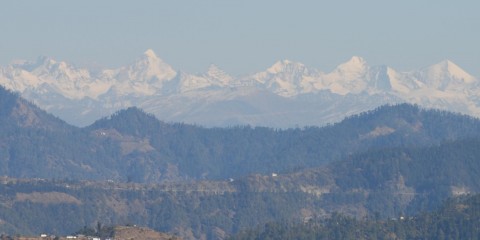
HP, Boating, History, Nature, Temple, Valley, Water falls, West India, Wildlife Sanctuary
Mashobra is a town in Himachal Pradesh. This place is famous for its hill station. For the natural lovers it is the best place. It is one of the places of retreats to president of India. Every year President of India visits to this place. There is a historical road (Hindustan to Tibet) which connects Mashobra with Shimla is located here. This road was constructed in 1850 by Lord Dalhousie. Throughout the year this place attracts the tourists with its scenic beauty. Weather is so blissful. Rich forest is located here. A hill station is most famous in Mashobra. Trekking, boating, horse riding activities attracts several people to come to this place. Old Houses constructed here are named after flowers and fruits. Some of the old houses converted into resorts.
What to see in Mashobra:
Flora and Fauna: Mashobra is famous for wide range of Flora and Fauna and also for orchids of Apples.
Reserve Forest Sanctuary: Part of this sanctuary is located in Mashobra and part is located in Shimla. Major animals seen in this sanctuary are kakkar, jackals, Baboons, Monkeys, and Leopards. Bird species in this sanctuary are Partridges, Chikor, Pheasants, and Himalayan Eagle. This sanctuary is famous for natural vegetation which consists of rhododendron, Himalayan deodar, cedar, Oak, Pine.
Mahasu Peak: Durga Devi temple is located here. Famous festival celebrates here is Mahasu Jatara. It celebrates for 2 days. This place is named after Lord Mahasu.
Mahasu Fair: In the honour of the God this fair conducts every year. People for far places come to see this fair. This starts on the third Tuesday of May. Natti, local dance is a major attraction. Other attractions of mela are games and folk songs.
What to see around Mashobra:
Rashtrapati Niwas: This place is located on the observatory hills of Shimla. Other names of this Niwas are British Viceroy of India, Viceregal Lodge. It was built in 1888. This was designed by Henry Irwin, British Architecture. It is locate 12kms away from the city.
Mahasu Devta Temple: This is one of the major attractions near Mashobra. Lord Shiva worshipped here. It is located 11 kms away from Mashobra. Famous festival celebrates here is Mahasu Jatara.
Kufri: This is a hill station located 12 kms away from Mashobra. Here Himalayan National park is also situated. Other places to visit in Kufri are Chali, Fagu, and Chini Bungalow. Height is 2510 meters.
Craignano: It is located on Shimla and Naldhera Highway. Above the sea level height of this place is 7700 feet. This place is famous for Italian Villa. It is situated on huge hill rock. This rock is surrounded by several small streams. This is worlds highest water lift.
Wild Flower hall: It is located 8 kms away from the city. It is situated in Charabra town.
Getting to Mashobra: Only way to reach this place is by road. Before reaching to this place one has to reach shimla. From Shimla several buses and taxis are available to reach to this place. Nearest railway station is Kalka. Nearest airport is located at Shimla.
Getting around Mashobra: Local buses and taxis are available to visit the places surrounded by Mashobra.
Best time to visit Mashobra: It is very essential for the tourists to known the best time to reach tourist spots to avoid inconvenience. Weather in Mashobra is so pleasant throughout the year. So, all are invited to reach this place throughout the year.
Where to stay in Mashobra: Plenty of budget and midrange hotels are available. Luxury hotels are not available here.
Where to eat in Mashobra: Several well maintained hotels and resorts are available to serve best quality food. Pahari, Mughalai, Continental, Indian dishes are available here.
Panipat is the historic city in Haryana. Other name of the city is City of Weaver. Three famous battles held in this place. All the battles are named as Battle of Panipat. First battle happened in 1526, second in 1556 and third happened in 1761. These battles are turning point to Indian History. In Bhagavad Gita, Panipat is named as Dharmakshetra. According to the history Pandavas have founded 5 cities during the times of Mahabharata. Panipat is one of the 5 cities. At that time it was named as Panduprastha.
Panipat is famous for Carpet and Textile industries. It is the biggest centre of Shoddy Yarn in the world. Shoddy Yarn means recycling of the yarn. Thermal Power Plant located in Panipat is the source of electricity to Haryana. Several forts and temples are situated in this place. Best place for the shopping lovers is Amar Bhawan Chowk.
What to see in Panipat:
Devi Temple: This temple is situated at the banks of large tank. Local goddess is worshipped in this temple. This temple is famous for its architecture. Near this temple Lord Shiva’s temple was situated.
Tomb of Bu Ali Shah Qalandar: This was constructed by Khizar Khan before 700 years. Bu Ai Shah Qalandar was born in 1190. Khawaja Altaf Hussain Hali and Hakim Mukaram Khan’s tombs are also located in this place.
Grave of Ibrahim Lodhi: This is located near Tehsil office. Lodhi was died when he is fighting with his uncle Babur in first battle of Panipat. Lodhi was buried in this place. This was made up of lakhori Bricks. It was placed in high platform so it has to be reached by climbing the steps.
Salar Gunj Gate: In the centre of Panipat it is located.
Panipat Museum: This museum displays weapons used in Panipat Battles. It is one of the attractions of Panipat.
What to see around Panipat:
Kala Amb Tree Site: It is located 8 kms away from Panipat. During 3rd battle of Panipat, Sadashiv Rao placed his Maratha troops near this tree. This is dedicated to the soldiers (Maratha) who sacrificed their lived in the battle.
Kabuli Bagh: This was built by Babur as a part of celebrating the victory over Ibrahim Lodhi in first battle of Panipat. Kabuli Shah Mosque is famous in this place. This mosque was named after the wife of Babur. Her name is Mussammat Kabuli Begum. It is located 2 kms away from Panipat.
Kurukshetra: This place was having prominent place in the history. In this place Lord Krishna delivered Bhagavad Gita to King Arjuna. It is located 72 kms away from Panipat.
Karnal: It is located 36 kms from Panipat. In 1811 British cantonment was established here.
Getting to Panipat: This place is well connected with Road and Railway routes. Nearest airport is at Delhi. From all the cities such as Jammu Tawi, Jaipur, Mumbai, Delhi etc buses and trains are available.
Getting around Panipat: Private Vehicles, buses, Taxis, autos are available to reach the surrounding places of Panipat.
Best time to visit Panipat: Between August and November visitors feel comfortable to visit this place.
Where to stay in Panipat: All range of hotels are available in Panipat. Visitors can choose the hotels as per their requirements. Mid range hotels are located near Grand Trunk Road. Best hotels are Gold Hotel, Hotel Mid town, Nirula’s Hotel.
Where to eat in Panipat: Best places to eat are Chorua Bazaar, Palika Bazaar, and Sector 11. Both vegetarian and No vegetarian food is available here. Continental, Chinese, Italian, South Indian Punjabi dishes are available in all the restaurants.
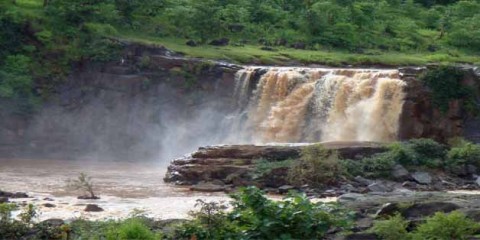
Gujarat, Boating, Fort, History, Musuem, Nature, Temple, Valley, Water falls, West India, Wildlife Sanctuary
Saputara is the only hill station in Gujarat. Meaning of Saputara is Abode of Serpents. It is located on the banks of river Sarpagana. On the Holi day prayers conducts to the images of Snake which are situated at the banks of river Sarpagana. Climate in Saputara is very cool throughout the year. This is the best place for natural lovers. Several sanctuaries, parks, gardens are located here. Popular activity here is trekking. Best places for trekking trail are Tridhara and Rajat Pratap.
Along with Swaminarayan Temple several Jain Temples and Nageshwar Mahadev temple are famous in Saputara. Lake Gardens, Rose Gardens, Step Gardens are major attractions to natural lovers. Most popular tourist attraction is Pushpak Ropeway. Different cultures such as Warli, Kunbi and Bhil are followed by the tribal communities here. Tribal houses are made up of Bamboo and Wood. Grishm Mahotsav is most popular festival celebrates for 3 days.
What to see in Saputara:
Saputara Lake: It is located at the heart of Saputara Valley. This is considered as best picnic spot. Row Boats and Paddle Boats are available.
Sunrise Point: This is also known as Valley View Point. Of the entire valley view this point is considered as best view.
Sunset Point: Dang forests can be seen from this place. Other name of this place is Gandhi Shikhar.
Pushpak Ropeway: This is the major attraction to the tourists. It takes the tourists above the valleys and hills. This is the best place to see surrounding place of the city.
Vandsa National Park: This is the residence place to several animals such as four horned antelope, Python, Leopard, spot tigers etc…
What to see around Saputara:
Purna Wildlife sanctuary: It is situated 60 Kms away from Saputara. Entire area is covered with bamboo glades. Tourists can have exciting walking in this sanctuary. Trekking activity is the best activity here.
Hatgad Fort: It is very ancient Fort located in Mulher, Nasik district, Maharashtra. At the peak of the Sahyadri ranges best architecture can be seen by the visitors of this place. From the top of this place one can view Suragana which is nearest village. It is located 6 kms away from Saputara.
Gira Falls: This is another major attraction to the tourists. Botanical gardens are located near this water falls. Forest department conduct camps in this place. Other name of this place is Gira Dhodh. It is located 49 kms away from Saputara.
Waghai: This place is famous for hot springs and Unnai Mata Temple. People believe that hot springs are the treatment to chronic diseases. It is located 68 kms away from Saputara.
Getting to Saputara: Only way to reach this place is Roadway. Nearest Railway station is located at Waghai. Nearest airport is located at Surat. From all the cities of Gujarat and Mumbai, government buses are available to this place.
Getting around Saputara: To reach Sunset Point, Cable cars are available. Buses and Jeeps are available to reach the surrounding areas.
Best time to visit Saputara: Extreme climates cannot be seen in this place. Climate is so pleasant throughout the year. Best time to visit this place is March to Middle of November.
Where to stay in Saputara: Unique construction of Forest log huts are most attractive to stay in Saputara. State Forest department is maintaining these huts. Living in these huts is the great experience to the tourists. Apart from these huts several hotels including luxury hotels are available to stay in this place.
Where to eat in Saputara: Across the city one can find Golas, Sodas and Nimbu Paani. Best Guajarati Thali is available in all the restaurants. Very few restaurants offer Chinese, Punjabi and north Indian food.
Bhuj is a city in Gujarat. This place is mostly associated with Indus Valley Civilization, Alexander the Great, Mahabharata. In the Kutch region this is the most important city. Earthquake occurred in 2001 has destroyed several historical places in Bhuj. City is named after Bhujiyo Dungar Hillock which is located 3 kms from the city centre. On the Bhujiyo Dungar hill, Bhujiya Fort is located. Bhuj is wide spread around this hill.
Bhuj was established in 1510 by Rao Hamirji. Several temples and houses can be seen Gujarati style. Kutch festival is most famous festival in this region. This celebrates for 6 days during February or March. Lord Shiva is worshipped during this festival season. For the shopping lovers best things to purchase in this place are seashell toys, lacquered wood, metal bells, Silver Jewellery, gold Jewellery. Specialities of this region are silk embroidery, batik textiles, Bandhani Textiles on leather.
What to see in Bhuj:
Hamirsar Lake: This is considered as best place to visit during holidays. It is located at the heart of the city.
Aaina Mahal: After 2001 earthquake this was restored. This is the Palace of Mirrors. It is used as exhibition hall by the handicraft people to display their handicraft items.
Prag Mahal: Gothic Style can be found on this Mahal. It was constructed by Maharao Pragmalji. Visiting hours of this Mahal is between 10 AM to 6 PM.
Swaminarayan Temple: It was built with Marble stone. This temple is also known as breathtaking temple. Best architecture of Kutch rulers can be seen here.
Kutch Museum: This is dedicated to Kshatrap. Kutch Script can be seen here. It was built in 1877. Kutch museum was considered as old desert museum in Gujarat.
What to see around Bhuj:
Kutch: World’s largest salt desert Rann of Kutch is located in this place. Area covered by this desert is 16000 Sq.kms. It is located 72 kms away from Bhuj.
Kutch great Indian bustard Sanctuary: This is the best place for the natural lovers. This is located 2 kms away from Kutch. Major attractions of this place are Nilgai, Jungle cats, Chinkaras, Connoisseurs. Most attractive migration bird is Florican Bustards.
Getting to Bhuj: Bhuj is well connected with Road, Rail and Airways. Airport is located 7 kms away from the city. It is connected to Mumbai. From major cities like Mumbai and Delhi and from different parts of Gujarat, Bhuj is having bus and train facility.
Getting around Bhuj: Local name for auto rickshaws is Tuk Tuk. Autos, Taxis are available to reach the surroundings areas of Bhuj.
Best time to visit Bhuj: Few Visitors like to visit this place during the winter season. Best time to visit this place is between October to March.
Where to stay in Bhuj: Plenty of affordable and midrange hotels are available near Bhuj. Few guest houses are also located here. But Luxury hotels are not available in Bhuj. Best hotels in Bhuj are Hotel KBN, Hotel Prince, Gangaram Hotel, Hotel Seven sky.
Where to eat in Bhuj: Almost all the restaurants serve only vegetarian food. Very few restaurants serve non vegetarian.
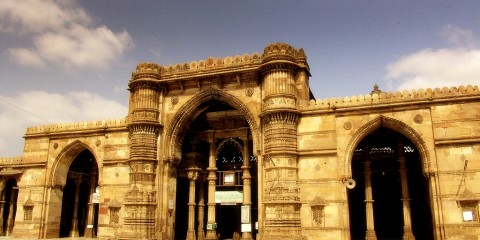
Gujarat, Fort, History, Musuem, Nature, Temple, Tomb, West India, Wildlife SanctuaryFort, Gujarat, History, Musuem, Nature, Temple, Tomb, West India, Wildlife Sanctuary
Ahmedabad is the largest city in Gujarat. It is located on the banks of Sabarmati River. This is the best place to see historical constructions and new monuments. Many dynasties ruled this place starting from Sultans to Mughals. After Mughals, Marathas ruled this place till the Britishers occupied. It served as home to several freedom fighters like Sardar Vallabhai Patel, Mahatma Gandhi. One interesting story related to name of Ahmedabad is, once Sultan Ahmed Shah was standing on the banks of Sabarmati River he saw hare chasing a dog. He approached to spiritual leader and asked for the reason he stated that this is the uniqueness of the land. This impressed him and decided to arrange his capital in this place. At that time he named this place as Ahmedabad.
What to see in Ahmedabad:
Dada Hari Vav: This was built during the regime of Mehmud Begda. It is located below the ground level. This is considered as best place to relax. Beautiful engraving pillars can be seen here. It is one of the complex structures. Timing to visit this place is between 9 AM to 5 PM.
Teen Darwaza: This place is known for its best architecture. It is the oldest and longest gateway in Ahmedabad. This was built by Ahmed Shah founder of the city.
Kankaria Lake: In 1451 AD this was built by Sultan Kutubuddin. A summer palace is located in the middle of the lake. Mughal Emperor Jahangir and his wife Noor Jahan frequently come to this place for relaxation. This is an artificial lake with 34 slides.
Vechaar Utensils Museum: In this museum several utensils were displayed such as stainless steel, Zinc, German silver, Copper, Bronze, and Brass.
Hazrat Pir Muhammad Shah Library: Very rare manuscripts of Sindhi, Turkish, Arabic and Persian are available here.
What to see around Ahmedabad :
Gandhi Ashram: This was the residence of Father of Nation, Mahatma Gandhi. Other names of this Ashram are Satyagraha Ashram and Sabarmati Ashram. It is located 4 kms away from the city.
Bhadra Fort: This fort is famous for Bhadrakali Temple. Goddess Bhadra is worshipped here. She is incarnation of Goddess Kali. It is located 4 kms away from the city.
Jhoolta Minar: Swaying minaret is famous here. If any person uses little force on the upper arc minaret it tends to sway. At the time of construction two minarets were constructed. Now we can see only one minaret. Other one was destroyed by the Englishman who tried to discover the secret behind the sway. It is located 5 kms away from Ahmedabad.
Swaminarayan Temple: Thousands of People from all over the country visit this place every year. Lord Swaminarayan is worshipped here. It is located 4 kms away from the city. This is the first Swaminarayan Temple in India which was built at Kalupur.
Other places to see around Ahmedabad: Gandhinagar, Lothal City, NalSarovar Bird Sanctuary are the other places to see around Ahmedabad.
Getting to Ahmedabad: Ahmedabad is well connected with Road, Rail and Air ways. From all the major cities like Bangalore, Mumbai, Delhi etc… buses, trains and air buses are available.
Getting around Ahmedabad: Buses, Cycle rickshaws, auto rickshaws, taxis are available to visit the places around Ahmedabad.
Best time to visit Ahmedabad : Weather is so pleasant between October to March. So it is considered as the best place to visit this place.
Where to stay in Ahmedabad: All range of hotels are available here. Near Nehru Bridge area and airport luxury hotels are available. Midrange hotels are located near Gujarat college road and Shahibagh road.
Where to eat in Ahmedabad: Most of the hotels in Ahmedabad serve only Gujarat cuisine and vegetarian food. Best non vegetarian food is available at Navrangpura.
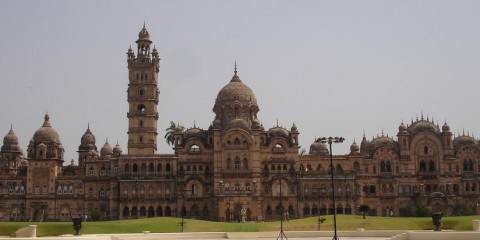
Gujarat, Boating, Fort, History, Musuem, Nature, Temple, West India, Wildlife Sanctuary
Vodadara is the cultural capital of Gujarat. It is formally known as Baroda. Vodadara is situated on the banks of Vishwamitri River. It is the third largest city in Gujarat. It is known as best commercial and trade centre. City consists of more than 100 private schools and 20 public schools. It is also known as knowledge city. One of the top 3 arts colleges in India is MSU’s Faculty of Fine Arts. This is located here. Till India got independence it was ruled by Gaekwads. Marathas ruled this place for more than 400 years before Gaekwads. Here visitors can have best leather, textile and Handicrafts products.
What to see in Vadodara:
Mandvi Gate: During the festival seasons it looks so attractive as it decorates with beautiful lights. This was built in 1511-26 AD by Sultan Muzaffar. It is square shaped structure.
Makarpura Palace: For the royal families this is the summer rest house. Training school of Indian Air force is running here. This was built in Italian style by Maharaja Khanderao. Later it was renovated by Sayajirao Gaekwad.
Tambekarwadi: It is a four storied building. In first and second floors of the building visitors can find mural paintings which belong to 17th and 18th century.
Sayaji Baug: It consists of Flock Clock, Planetarium, Zoo and two museums. This is the largest garden in western India. Area covered by this garden is 45 hectares. It was built in 1879 by Maharaja Sayajirao Gaekwad.
Picture Gallery: British painter’s pictures are kept here to attract the tourists. This was built in 1921.
Zoo: More than 1103 animal species are here. Major attraction is Asiatic Lion.
Museums: Skeleton of Blue Whale and Egyptian Mummy are the main attractions to the visitors. It is the place of best collection of art and sculptures. Museum was built in 1894.
Laxmi Vilas Palace: Manoj Charles Mant designed this palace in Indo Saracenic style. Music and Cultural events conduct in Darbar hall. Raja Ravi Varma Paintings is the special attraction in this palace. Maharaja Fateh Singh Museum and Moti Baug Palace are the also located here. In 1890 this was built by Maharaja Sayajirao Gaekwad III.
Aurobindo Ashram: Between 1894 to 1906 this was residence place of Aurobindo Ghose. He was the vice principle of Baroda College. Now it became Ashram with Library. Works of Aurobindo can be seen here.
Nazarbaug Palace: In 1721 this was built by Malhar Rao Gaekwad in old Classical Style. It is the place where visitors can see best collection of Gaekwad Jewellery including 125 carat star of south diamond.
What to see around Vadodara:
Chandod: It is best pilgrim centre for Hindus. Temples and Bathing Ghats are located here. Mechanised boats used to see ravines, cliffs, rock formation. It is located 57 kms away from Vadodara.
The Dabhoi Fort: In 13th century this was built by Patan King. This fort is best example for Hindu Gujarati style architecture. It is situated 29 kms away from Vadodara.
Champaner – Pavangadh Archaeological Park: Best collection of tombs, Palaces, Mosques, Temples, Forts are situated here. It is located 45 kms away from Vadodara.
Getting to Vadodara: This place is well connected with Air, Road and Railways. From all the major cities such as Kolkata, Delhi, Mumbai, Ahmadabad etc… a bus, trains and air bus facility is available.
Getting around Vadodara: Autos, Taxis, buses are available to visit the places around Vadodara.
Best time to visit Vadodara: Between October to February visitors enjoy their travel here.
Where to stay in Vadodara: All range of hotels are available. As per their budget and requirement tourists can choose the hotel.
Where to eat in Vadodara: Plenty of restaurants are available here. Continental, Mughalai, South Indian food is served here.
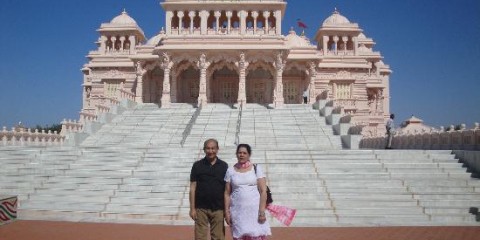
Gujarat, Beach, History, Musuem, Nature, Valley, Water falls, West India, Wildlife Sanctuary
Porbandar is located in Gujarat. This is a birth place of Father of Nation, Mahatma Gandhi. It is believed that this is the birth place of Sudama who is the best friend of Lord Sri Krishna. So this place is also named as Sudamapuri. During the regime of British, Marathas, Mughals this city acted as best trade centre. In those days trade activities are regularly done with East African, Aab and Persian countries. From 16th century BC to 14th century BC Harappa Civilisation dominated this place. This place is considered as home to Harappa Civilisation.
During 16th century it was an independent state which was ruled by Jethwa Rajputs. After independence it was merged into Kathiawar. Later it became part of Gujarat. This is the best place for shopping lovers also. Bandhani Work textiles are most famous in this place. Several Silver jewellery, Mirror works, terracotta figures, iron items, brass items, clay items are available. Best markets in Porbandar are located at kedareswar Road and Sudama Road.
What to see in Porbandar:
Huzoor Palace: A Water fountain in this palace attracts the visitors. European style of work can be noticed here. This was built during 20th century by Rana Natwarsinhji.
Porbandar Bird Sanctuary: This is best place for natural lovers. Several species of birds such as Herons, ibis, Spoon Bills, Geese, Ducks, Pelicans are most attractive to the visitors. In 1988 this was declared as bird Sanctuary.
Porbandar Beach: Other name of this beach is Chowpatti. It is the venue of annual Janmastami fair.
Krishna Sudama Temple: It is believed that persons who enter into this temple will be wiped off their sins. This is the only temple dedicated to Sudama who is the best friend of Lord Krishna. Some people say that this temple is dedicated to the friendship between Sudama and Lord Krishna.
Kirti Temple: This mandir is dedicated to Mahatma Gandhi, Father of Nation and Kasturiba Gandhi. Old paintings of Kasturiba and Mahatma Gandhi are most attractive to the visitors.
What to see around Porbandar:
Harshad Mata Temple: This is most ancient temple located on koyla Hill. It is believed that every day morning Harshad Mata make the king of Minalpur alive and roast him and eat. This temple looks like Navlakha Temple which was constructed by Chalukya Dynasty. It is situated 45 kms away from Porbandar.
Barda Hills Wild Life Sanctuary: This is the home place to several birds and animals. Spotted deer crocodile, Chinkaras, Lions are major animal species placed here. Most attractive bird species here are Hawk Eagle, Spotted eagle. Area covered by this sanctuary is 192 sq.kms. It is located 45 kms away from Porbandar.
Getting to Porbandar: This place is well connected though Road, Railways and Air ways. From several cities like Vadodara, Ahmadabad, Rajkot, Mumbai both bus and train facility are available. Airport of Porbandar is connected to Diu and Mumbai.
Getting around Porbandar: For sightseeing private vehicles, autos, taxis, cars are available to tourists.
Best time to visit Porbandar: Few visitors see the weather conditions to visit the places. For those people best time to visit this place is between October to March.
Where to stay in Porbandar: Best midrange hotels are available at Cross Road and MG Road. Near airport and Hospital Road luxury hotels are located. Plenty of affordable hotels are available all over the city.
Where to eat in Porbandar: Most of restaurants serve vegetarian and Gujarati Cuisine. Whereas some restaurant provide best varieties of sea food along with other varieties of non vegetarian food.
Surat is the admistrative capital of Surat District. Earlier it was known as Suryapur. It is cleanest and second largest city in Gujarat. Surat it situated on the banks of Tapi River. More than 90% of the diamond cut and polished here. Other names of Surat are Embroidery capital of India, Manchester of India, Textile capital of India, Diamond capital of India. It is an international market for diamonds. Best diamonds are available on Dumas Road shops.
What to see in Surat:
Sardar Patel Museum: Before independence it was named as Winchester Museum. It was established in 1889. Timings to visit this museum are 9 AM to 11.30 AM and 2.30 PM to 5 PM.
Chintanmani Jain Temple: Major attraction of this temple is Vegetable dye paintings of King Kumarpala and Acharya Hemchandra who is the Jain Preacher. This is very ancient temple dates back to 400 years ago.
Surat Castle: From the top of the castle visitors can view Surat and Tapi River. This was built by Sultan Mahmud III in 1540.
Swaminarayan Temple: Visitors can see 3 wooden shrines of Ghanshyam Maharaj, Lord Swaminarayan, and HariKirshna Maharaj. This temple is dedicated to Swaminarayan. He belongs to Vaishnavism.
Amba Niketan Temple: This temple is dedicated to Goddess Ashtabhuja Ambika. She is having 8 hands. This is located on the Shore of Tapi River. Most famous festival celebrated in this temple is Navratri. Statues of Lord Shiva, Laxminarayana, Sita, and Ram are also can be seen here.
Dutch Gardens: This is a cemetery belongs to Islam and Hindu religions. Several famous tombs can be seen here. Photography is restricted.
Rangupvan: It is biggest open air theatre in India. At one time this theatre can provide accommodation to more than 4000 people. This is used to conduct musical and cultural programs.
What to see around Surat:
Suvali Beach: Visitors prefer to come to this place for relaxation. Sand in this beach is black. It is located 24 kms away from Surat.
Dandi: This place has prominent importance during independence struggle. This march was undertaken against the Britishers for levying heavy taxes on salt. As a part of Civil Obedience Movement this March was undertaken. From Sabarmati Ashram this march was started and ended at Dandi. It is located 26 Kms away from Surat.
Hazira: It is a famous picnic spot and seaside resort. This is situated 23 kms away from Surat. This is the best place to relax at Beach. Near Beach visitors can visit Bird Sanctuary.
Bharuch: This city is having 8000 years old history. It is famous for Swaminaryan temple. Bharuch is situated 73 kms away from Surat.
Getting to Surat: This place is well connected with Road, Rail and Air ways. From all the major cities such as Indore, Jabalpur, Bhopal, Nagpur, Kanpur, Jaipur, Luck now, Kolkata, Chennai, Hyderabad, Ahmadabad, Delhi, Mumbai buses and trains are available. Surat airport is having regular flights to Mangalore, Calicut, Amritsar, Bhavnagar, Bangalore, Ahmadabad, Mumbai and Delhi.
Getting around Surat: Buses, Auto Rickshaws, Taxis are available to visit the places around Surat.
Best time to visit Surat: Weather is most favourable to the visitors between October to March.
Where to stay in Surat: All affordable, mid range and Luxury hotels are available in Surat. Luxury hotels are located in Ring road and near airport. Midrange Hotels are located at Sumal Dairy Road and City centre. At Umarwada affordable hotels are located.
Where to eat in Surat: Most of the restaurants serve Gujarati Cuisine and Vegetarian cuisine. Few hotels at Varachha Road and Ring Road non vegetarian food are available.
Junagadh is the 7th largest city in Gujarat. Junagadh means Old Fort. Earlier it was named as Sorath. Till independence this place was ruled by Nawabs. Last Nawab made promise to Pakistan that this city will be merged into Pakistan. At that time India and Pakistan struggled for this city. India won in this struggle as a result Junagadh joined in India on 9th November 1947. In the history, this city acted as capital to Nawabs. Tourists considered this as pilgrim centre. On the Girnar range several Jain and Hindu temples are located. Visitors have to reach to this place by climbing 10,000 steps.
During the regime of Nawabs several beautiful building were built. Visitors can see those building even today. Of all the structures visitors attracts towards Bahauddin Maqbara and Mahabat Maqbara structures. Bhavnath Fair festival is most famous festival. This festival celebrates for 5 days during Mahashivaratri. Several prominent people born in this city. Few are Parveen Babi (Bollywood actress), Narsinh Mehta (Gujarati litterateur), etc…
What to see in Junagadh:
Mount Girnar : Several Jain and Hindu temples can be seen in this place. It takes 2 hours to climb the mountain. 16 temples are there on this mountain.
Jama Masjid: It was the palace of Rankadevi. When Saurashtra was handed over by Sultan Muhammed Begda this was converted into Mosque.
Upper Fort: This is also known as Uparkot. In this place visitors can see 1500 years old Buddhist caves. One of the interesting things in this place is Navgan Kua. Two step wells that go 170 feet below sea level are known as Navgan Kua. Visitors can find 3 beautiful entrances.
Wild Museum: when the Visitors entered into this museum they will feel that they have entered into zoo. In this place one can see Persian Sanskrit, ancient coins, stuffed animals, art furniture etc…
Ashoka’s Edicts: This place can be see when tourists are moving towards Mount Girnar. In this place 14 Edicts of Ashoka can be seen. Edicts are carved. Timings to visit this place are between 8 AM to 6 PM.
Other attractions in Junagadh: Junagadh Zoo, Durbar Hall Museum, Ayurvedic Museum, Swami Vivekananda Vinay Mandir, Moti Baug, Wellington Dam, Dataar Hills, Damodarji Temple, Damodar Kund, Gayatri Mandir,
What to see around Junagadh:
Chorwad Beach: Visitors can reach to this place by roadways. This beach was located 66 Kms away from the city.
Veveral : This place is famous for beaches. Now this place has become most commercialised place. It is located 85 kms away from the city.
Somnath Temple: This temple is one of the 12 Jyothirlingas in India. It is the seventh temple to worship of Lord Somnath in India. It is locate 87 kms away from the city.
Getting to Junagadh: This place is well connected with road and railways. From all the major cities like Rajkot, Ahmadabad, Somanth Bhubaneswar, Dwarka etc… bus and train facility is available. Nearest airport is Rajkot.
Getting around Junagadh: Private vehicles, buses, autos, taxis are available to reach surrounding places of Junagadh.
Best time to visit this place: Visitors to prefer to come to this place between October to April.
Where to stay in Junagadh: All range of hotels starting from lower level to luxurious hotels are available to stay in Junagadh. On Jayashree and MG Road, mid range hotels are located. Affordable hotels are located in Alkapuri Road and Zanzarda Road.
Where to eat in Junagadh: Only vegetarian food is available. Almost all the restaurants serve Gujarati cuisine. Only few restaurants which are located near Jayashree Road offer South Indian and Continental Cuisine.
Jamnagar is a city in Jamnagar district, Gujarat. In 1920, this city was built by Maharaja Kumar Shri Ranjitsinhji. At that time it is known as Nawanagar. Other name of Jamnagar is Oil City of India as two largest oil refineries are located in this place. Rajpur architecture can be seen in this place. This place is famous for pearl fishing centre. So it is known as Oyster of India. Before oil companies started in Jamnagar, primary job of the people in Jamnagar is manufacturing brass. So Jamnagar is also known as Brass city of India.
Jamnagar was modernised with the consultation of Sir Edward Lutyens. Modernisation includes residential plots, entrance gates, gardens, parks, axial road. Several Jain and Hindu Temples are situated in this place so this place is also known as Chhoti Kashi that means small Kashi. Of all the temples most famous temples are Bala Hanuman Temple and Ancient sun temple. For the shopping lovers best places are Chandi Bazaar and Lindi Bazaar. Silver ware, embroidery and tie and die fabrics are famous in Jamnagar.
What to see in Jamnagar:
Bhujio Kotho: It was built to act as watch tower against enemies. This was five storied building. On the first floor of the building holes are placed. They are used to shoot the enemies from the holes. Tower is located at the top of the building. From that tower visitors can have a view of entire Jamnagar. Tower is in the shape of peacock.
Darbargadh Palace: Sculptures, decorated mirrors, ornate pillars and monuments can be seen in this place. This palace is best example for European and Rajput architecture styles. It was built in 1540.
Lakhota Palace and Museum: This was located on the Lakhota Lake. Other name of the Palace is Lakhota Tower. During 9th century this palace was converted into museum. Several artifacts, weapons, knives, guns, swords and art pieces can be seen in this place.
Bala Hanuman Temple: This place is most famous in Jamnagar. It has entered into Guinness Book of World Record, as devotee are doing continues 24 hours chanting of the Rama Mantra Sri Rama Jai Rama Jai Jai Rama from 1st August 1964. This chanting is known as Ram Dhun. Everyone is welcomed to join in this chanting. It is located near Lakhota.
Other places to see in Jamnagar: Mota Ashapura Maa Temple, Bohra Hajira, Pratap Vilas Palace, Lakhota Fort are some other places to see in Jamnagar.
What to see around Jamnagar:
Marine National Park: In India this is the first marine park. Area covered by this park is 163 sq.kms. It is a part of Marine Wild life Sanctuary. Mangroves, coral reefs and habitants can be seen here. It is located 30 kms from Jamnagar.
Khijadiya Bird Sanctuary: More than 300 species of birds can be seen here. Migratory birds also can be seen in this place. Area covered by this sanctuary is 6 sq.kms. It is located 18 kms away from Jamnagar.
Getting to Jamnagar: This place is well connected with road, rail and airways. From several major cities such as Bhuj, Rajkot, Baroda, Udaipur, Mumbai, Ahmadabad buses and trains are available. Jamnagar is connected to Mumbai, Ahmadabad, and Vadodara through airways.
Getting around Jamnagar: Cheapest way to see the places around Jamnagar is to prefer bus. Visitors can also hire autos, taxis to visit the places surrounding Jamnagar.
Best time to visit Jamnagar: Best time to visit the place is between October to March.
Where to stay in Jamnagar: All varieties of hotels are available in Jamnagar. Luxurious hotels located on Bedi Road. Several number of midrange hotels are located in India Marg and Okha Road.
Where to eat in Jamnagar: Vegetarian food is most famous in Gujarat. Almost all the restaurants serve only Gujarati cuisines. Very few restaurants offer south Indian, Punjabi, and North Indian Continental Cuisine. Best restaurants are available in Arya Samaj Road, Bhidbhanjan Road and Hapa Road.
Dwarka is a city in Gujarat. It is one of the seven most ancient cities in India. This place is associated with Lord Krishna. Dwarka is derived from the words Dwara and Ka. Dwara means Door and ka means Brahma. Dwarka means gateway to Brahma. Other name of Dwarka is Dwaravati. On the request of Lord Krishna this city was built by Vishwakarma. It is located on the banks of Gomti River. It is believed that after the death of Lord Krishna this city was merged into the sea. This was rebuild 6 times but it ruins. Current city is 7th rebuilt city.
During the regime of Lord Krishna, 7 lakh gold and silver palaces are placed around the city. For the shopping lovers best items available here are local souvenirs, embellished footwear, embroidered handicraft items, Bandhni fabrics, Patola silk sarees.
What to see in Dwarka:
Dwarkadhish Temple: This was built by king Vajranabha who is the great grandson of Lord Krishna. Other name of the temple is Jagat Temple. This was built in Chalukya style before 2000 years. There are two main entrances to this temple. One is facing north it is known as Moksha Dwar and other is facing south. It is known as Swarga Dwar. Here visitors can see four armed statue of Lord Vishnu.
Rukshamanee Mandir: This place is famous for the temple of Goddess Devi Rukmani who is the wife of Lord Krishna.
Rukmini Hrid: People believe that a dip in Rukmini Hrid will lead to moksha.
Gomti Sangam Ghat: In this place Gomti River merges with ocean. It is believed that if people take bath in this place sins will wash off.
Gita Mandir: On the walls of the temple various chapters of Bhagvad Gita can be seen. This was built by Birla’s (industrialist) in 1970.
What to see around Dwarka:
Byet Dwarka: It is believed that this is the place from where Lord Krishna ruled the people. His family resides in this place. 500 years ago Sri Vallabhacharya built Lord Krishna temple in this place. Water sports, beach is most famous here. It is located 34 Kms away from Dwarka.
Nageshwar Jyothirlinga Temple: Lord Shiva is worshipped here. Other name of this temple is Nagnath Temple. This place is situated between Beyt Dwarka and Gomti Dwarka. Statue of lord Shiva is very huge. It is located 17 Kms away from Dwarka.
Kirti Mandir: This mandir is dedicated to Mahatma Gandhi, Father of Nation and Kasturiba Gandhi. It is located 98 Kms away from Dwarka.
Getting to Dwarka: Dwarka is well connected with Road and Railways. From all the major cities like Amerli, Vadodara, Porbanbar, Ahmadabad etc several buses are available. From the places like Bangalore, Kolkata, Mumbai, Delhi railway facility is available. Nearest airport is at Jamnagar.
Getting around Dwarka: Cycle Rickshaw’s, Taxi’s, Auto’s are available to see the places around Dwarka.
Best time to visit Dwarka: Best time to visit this place is between October to March.
Where to stay in Dwarka: Several hotels are available to stay in Dwarka. Luxurious hotels cannot find in this place. Only lower and middle range hotels are available. Best hotels in Dwarka are Hotel Shree Darshan, Hotel Damli, Meera Hotel, and Hotel Ganga.
Where to eat in Dwarka: In this place only vegetarian food is available. Popular food of this place is Sweet buttermilk, Khamman Dhokla and Gujarati Thali. Most of the restaurants serve North Indian, south Indian and Gurjarthi dishes.
Daman is a city in the Union territory Daman & Diu. Daman Ganga River divided Daman into two parts one is Andaman and other part is Motidaman. Meaning of Nani is small and meaning of Moti is Big. Both are connected by two bridges. One is used to travel only small vehicles like two wheelers and other will be used to travel heavy vehicles such as trucks, cars etc… This place is famous for the manufacturing of several products such as plastics, windmills, printing ink, dyes, electronics, toys, fertilisers, chemicals, pesticides, etc…
For more than 400 years this place was ruled by Portuguese. They have arranged colonies in this place. In 16th century large fort was built in Motidaman to protect the Daman from Moghuls. Even today this fort is using for working purpose of different government offices. After the battle between Indians and Portuguese, Daman was formed as Republic of India in 1961.
What to see in Daman:
Bom Jesus Church: Portuguese artisans worked hard to build this church. Every year thousands of visitors came to this place. Bom Jesus is worshipped here.
Church of our Lady of the Rosary: Tombstones of Portuguese can be found in this place.
Old Fort: one of the major attractions of Daman is Old Fort. Here two churches, a hospital and Governors palace were situated. Drawbridge is located on the eastern side of the fort.
Fort of Moti Daman: Area covered by this fort is 30 sq.kms. This was built in 1559.
Jain Temple: This temple was built during 18th century. On the walls of the temple paintings of Mahavir’s life can be seen.
Devka Beach: This is the relaxation place for several visitors. It is located 3 Kms from Nanidaman.
Mirasol Resort and water park: This is the man made resort. Artificial lake is used for boating. Other interesting things in this park are water slides, machan like setting on the tree tops, video games, mini train ride etc.
Other places to see in Daman: st.Jerome Fort, Church of Our Lady of Augustias, Church of Lady of Remedies.
What to see around Daman:
Mumbai: This is modern city with several cultural. This is the financial capital and also state capital Maharashtra. Several places to visit in Mumbai are Bombay high court, Essel World, Haji Ali Dargah, Gateway of India, Elephanta Caves etc… it is located 174 Kms away from Daman.
Getting to Daman: This place is well connected with Roadways and local Air ways. Local airport is located at Nani Daman. Nearest international airport is located at Mumbai. Nearest railway station is located at Vapi. Tangas, Local buses and Taxis are available to reach Daman.
Getting around Daman: Best options to see the places surrounding Daman are taxis, auto rickshaw and Buses. Visitors can take scooters, mopeds, cycles, motor cycles for rent to visit the places around Daman.
Best time to visit Daman: Best time to visit this place is between November to March.
Where to stay in Daman: Several hotels are available to stay. As per the requirements of the people hotel will available. Best hotels in Daman are Hotel Prince Park, Dariya Darshan Hotel, Cidade De Daman, Hotel Miramar, Sandy resorts.
Where to eat in Daman: Several restaurants are available to eat in Daman. Both Vegetarian and Non vegetarian food will be available. Best restaurants are Hotel Holiday, Hotel Sanman, Hotel Diamond, and Hotel sai Amar international.
Diu is a town in Diu district of Daman and Diu, India. This is having its own place in the history. According to Hindu Mythology, Diu was once ruled by King Jallandhar. He was killed by Lord Vishnu with his Sudharshan Chakra. After killing him, Lord Vishnu left his chakra on the Island known Chakra Tirtha. There is another mythology to this place i.e. during 14 years of exile of Pandavas they have visited this place. Name of this place during that period is Mani Nagar. At that time it was under the control of Yadava Dynasty.
Several rulers ruled this place but Portuguese Influence is more. They have ruled for more than 400 years. Hoka trees are major attractions to the tourists. These are bought by Portuguese from Africa. Three beaches are another major attraction to the tourists. Several cultures such as Christianity, Islam, Hindu, and Portuguese Saurashtra can be seen here.
What to see in Diu:
Diu Fort: Diu is the major attraction to the tourists. This was built by Nuno De Cunta, Governor of Portuguese. On 3 sides of the fort sea was surrounded. Stone gallery is the major attraction of the fort. Canons and Light house can be seen here.
St.Thomas Church Museum: Earlier this was church built in 1598. In this museum idol, wooden carvings, stone inscriptions, antique statues are major attractions.
Nagoa Beach: Water sports are most famous here. Shape of this beach is horse shape.
INS Khukri Memorial: During 1971 war PNS Hangor hit INS Khukri. In the memory of sailors and officers of INS Khukri this was built in 1999.
St.Paul’s Church: It look like Goa Bom Jesu Basilica. Between 1601 to 1610 this church was built.
Ghogala Beach: Surfing, Parasailing, Water sports are the major activities in this place. In Diu this is the largest Beach.
What to see around in Diu:
Somnath Temple: Lord Somanth is worshipped here. It is one of the 12 Jyothirligas. This is 47 Kms from Diu Museum.
Junagadh: This place is now part of Mumbai but earlier it was the part in Saurashtra state. Meaning of Junagadh is Old Fort. In Gujarat it is the 7th largest city. It is located 150 Kms away from Diu Museum.
Gir National Park: Other name of this park is Sasan Gir National Park. Refugee of Asiatic Lions is placed in this park. Area covered by this park is 1412 Sq Kms. It is located 68 Kms away from Diu Museum.
Getting to Diu: This place is well connected with Road ways. Buses from all the major cities such as Gujarat, Talaja, and Veraval Bhavnagar regularly come to this place. Major railhead is at Veraval. Nearest Airport is located at Nagoa.
Getting around Diu: Auto’s, Taxi’s are available to go the place surrounding Diu. Some people prefer to go on foot.
Best time to visit Diu: Tourists prefer to visit this place between November to February.
Where to stay in Diu: At Ghoghla tourism department is maintaining few hotels and resorts at reasonable costs. For the budget people several hotels are available. Luxurious hotels are also available here. Beach resorts are most famous here.
Where to eat in Diu: All type of cuisines such as Chinese, Portuguese, Punjabi, South Indian, Gujarati Cuisines are available to eat. Plenty of restaurants are available here. Best restaurants in Diu are Shri Ram Vijay, O’Coquerio Music Garden restaurant, Apana Foodland, Night Heron Restaurant.
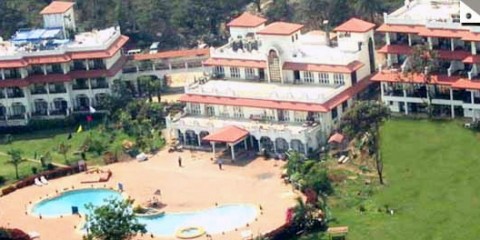
Dadra and Nagar Haveli, History, Musuem, Nature, Valley, Water falls, West India, Wildlife Sanctuary
Silvassa is the capital of Dadra and Nagar Haveli. It lies between Gujarat and Maharashtra. Silvassa name derived from the Portuguese word Silva. Silva means wood. Till 1779 this was ruled by Marathas. There are 72 small villages in Silvassa. After Marathas, Portuguese ruled this place. During the Portuguese rule several stone walls and Roman Catholic Churches was constructed.
This place is well known for its scenic beauty, beaches and Wildlife Sanctuary. Water sports are most famous in this place. Along with water sports tourists are most attracted towards jets skis, water scooters, Canoeing, Kayaking, nature walks, Boating, Trekking. Most of the people in Silvassa follow Warli culture. This is the combination of Gujarati and Marathi cultures. It is believed that this is the birth place of Warli Culture. This place is 2.5 hours journey from Mumbai through road ways. Mumbai people considered this as the best weekend place. For the shopping lovers Kilvani Road is the main market. Here tourists can purchase Warli Painting, Palm Leaf mats, Bamboo Crafts, Smoking Pipes.
What to see in Silvassa:
Our Lady of Piety Church: During 18th century this was built by Portuguese rulers. Arches of the church are the major attraction to the tourists.
Tribal Cultural Museum: With the intension to protect the culture of tribal this museum was established. Timing is from 10 AM to 5 PM. In this museum tourists can find Kitchen articles, fishing gears, musical instruments which are made by tribal without using any machines, Hunting tools, masks etc…
What to see around Silvassa:
Vanganga Lake View Garden: This is located 9 Kms away from Silvassa. Thatched Huts, Wooden Bridges can be seen in Japanese style. This is the best place for the children, families as well as film makers. Paddle boating is most famous in this place.
Vasona Lion Safari Park: This is the wild life sanctuary of Dadra & Nagar Haveli. Area covered by this park is 20 acres. This is the home place of Asiatic Lions. It is located 10 Kms away from Silvassa.
Satmalia: This place is known for wild life sanctuary. Major species in this sanctuary are Black Bucks, Chital, and Sambhar. This is located 8 Kms away from Silvassa.
Dudhni: This place is famous for kayaking; Seed boating, Canoeing, Jet Skiing. Dudhni is the best place for water sports lovers. This place is located 40 Kms away from Silvassa.
Khanvel: This village is surrounded by wildlife and green hills. It is the place for barbets, flycatchers, fruit bats, and spot flying fox. It is located 22 Kms away from Silvassa.
Getting to Silvassa: Best option to reach this place is roadway. From Udaipur ply, Shirdi, Nashik, Surat, Ahmadabad, Mumbai buses are available on regular basis. Nearest Railway station is Vapi. This station is 17 Kms away from Silvassa. Nearest Airport is located at Diu which is 7 Kms away from Silvassa.
Getting around Silvassa: Taxis and Autos are available frequently to see the surrounding places of Silvassa.
Best time to visit Silvassa: Best time to enjoy trekking and boating is between November to June.
Where to Stay in Silvassa: As per the requirement of the tourists all range of hotels are available in this place. Luxurious will be provided with gaming section, disco’s, bar, swimming pools. Peak season for the hotels is April and May.
Where to eat in Silvassa: All varieties of food is available here such as sea food, Thai, Mexican, Continental, Indian Cuisine.
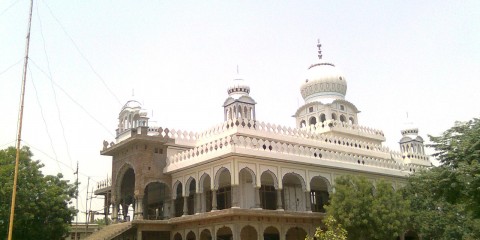
Chhattisgarh, Central India, History, Musuem, Nature, Temple, Water falls, Wildlife Sanctuary
Raipur is the capital city of Chhattisgarh. According historical mythology it is believed that Lord Rama established this city. This is one of the biggest commercial centres in India. Here more than 6 steel plants, 200 steel rolling mills are located. In India it is the largest steel market. Till 2000 it was the part of Madhya Pradesh. After than it became the capital of Chhattisgarh state.
Raipur is known as Rice Bowl of Chhattisgarh. More than 800 rice mills are situated here. This is the major centre for Bio-technology, IT and Manufacturing industry. Pola is the main festival in Raipur. During the festival season children will be offered many entertaining events and clay bull idols. For the shopping lover’s furniture items, metal jewellery, Zardosi work, Zari work textile products are available.
What to see in Raipur:
Budhapara Lake: For the Raipur people this place is the most important picnic spot. In 1402 AD this was built by Kalchuri Emperor.
Vivekananda Ashram: Persons who are interested to seek spiritual enlightenment are always visiting this place. In 1897 this was inaugurated by Swami Vivekananda.
Doodhadhari Monastery and Temple: This is very ancient temple famous for its attractive murals. In the name of Swami Balbhadra Das a monastery was established here. Temple was built by Jaitsingh in 17th century. Lord Rama is worshipped here.
Mahant Ghasidas Memorial Museum: Museum consists of 3 different sections. They are Natural history, anthropology, archaeology. In 1875 this was built by Maharaja Mahant Ghasidas. Best collection of books can be seen here.
What to see around Raipur:
Champaran: This is the birth place of Ballabhacharya Guru. Temple of his was built in 20th century by his followers. It is located 58 Kms away from Raipur.
Rajim: In this place three rivers are combined. They are Sondur, Pairi and Mahanadi. This place is located 48 Kms away from Raipur. Tourists can find most ancient temple of Lord Kuleswar. This was built in 14th century.
Arang: Ancient temples such as Mahamaya Temples, Baghdeval Temples, Bhandadevel temples can be seen here. Place is located 36 Kms away from Raipur.
Fingeshwar: This place is one of the 5 holy places of Mahadeva temples. It is located 65 Kms away from Raipur.
Udanti Sanctuary: From the river Udanti this name was derived. It was built in 1983 with the intension to protect wild Buffaloes which are endangered. Large varieties of birds and animals such as Cobras, Hyenas, Bison, Foxes, Jackals, Bucks, and Tiger can be seen here. It is locate 169 Kms away from Raipur.
Getting to Raipur: This place is well connected with Road, Railway and Airport. From all the major cities like Bangalore, Bhubaneswar, Chennai, Kolkata, Nagpur, Mumbai bus facility, train facility and air facility is available.
Getting around Raipur: Private Busses, Taxi’s, autos are available to reach different places around Raipur.
Best time to visit Raipur: Between November to March tourists feel comfortable to see this place.
Where to stay in Raipur: Several hotels are available in this place. As per the requirement tourists can opt for the hotels. During the winter season rush will be more so it is advisable to book the hotels in advance. Best Hotels in Raipur are Hotel Grand Arjun, Hotel Celebrations, Hotel Grand International, and Hotel Piccadily.
Where to eat in Raipur: Several fast food centres are situated here. All the restaurants provide Italian, American, Chinese, Indian cuisines to the tourists. Best restaurants in Raipur are Madrasi Restaurant, MFC, Madrasi Durbar.
Chandigarh is a city and Union Territory in India. The name is derived from ancient temple called Chandi Mandir. After India got independence this is the first planned city. This place is best known for Urban and architectural Designs. Several architectures worked hard to design this city. Few names of the architectures are Maxwell Fry, Jane Drew, Pierre jeanneret , Le Corbusier.Some of the Notable people born in Chandigarh are Nek Chand Saini, Gul Panag, Yuvraj Singh, Jeev Milkha Singh, Neerja Bhanot, Yami Gautam, Ramesh Kumar Nibhoria.
Chandigarh is the capital city to Haryana and Punjab. Workshops and Exhibitions are the best examples for the talent of people in Chandigarh. Section 17 is the best place for the shopping lovers. This is the handicraft emporium. Punjabi Dupattas and Punjabi footwear are available at reasonable cost. Festivals celebrated in Chandigarh are Teej Festival, Chandigarh Carnival, and Baisakhi. Chandigarh Carnival is the longest 3 day festival.
What to see in Chandigarh:
International Doll Museum: Best collection of doll from international countries namely Holland, Korea, Russia, Spain can be seen here.
Evolution of Life Museum: This museum gives the information about the evolution of human life starting from earlier days to modern era.
Sukhna Lake: For the local people this is the best picnic spot. Yachting, boating is most famous in this place.
Rock Garden: From domestic and industrial waste this Garden was made. This was an open air exhibition. This unique place attracts world tourists also.
Leisure valley: People prefer to come to this place to do yoga, Jogging and walking. This is attractive place for the nature lovers. This place is known as garland of gardens.
Capitol Complex: This is the place where office of secretariat, Legislative assembly, high court is located. Architecture Le Corbusier had designed this complex.
What to see around Chandigarh:
Kasauli: For the Chandigarh is places around the area this is the best hill station. This place is located 53 Kms away from Chandigarh.
Solan: it has one of the Oldest Breweries in the country. Yungdung Monastery is the best place to visit in Solan. Several Monasteries and Temples are located here. Shoolini Mata Temple, Jatoli Shiv Temple are best seen here. This is located 66 Kms away from Chandigarh.
Getting to Chandigarh: This place is well connected with Road, Railways and Airport. From several cities Chandigarh is well connected with National Highways 21 & 22. Major cities like Chennai, Luck now, Kolkata, and Mumbai are having railway facility. Airport is located in the outskirts of the city.
Getting around Chandigarh: Tourists who came here are attracted towards Hop on Hop off Coach. Autos, Rickshaws are available to visit the place around Chandigarh.
Best time to visit Chandigarh: Between August to November tourists are generally prefer to visit this place.
Where to stay in Chandigarh: Starting from Lower level hotels to luxurious hotel are available in this place. Range of Luxury 5 Star hotel cost is between Rs.18000 to Rs.10000. Best Hotels in Chandigarh is Hotel City Plaza 17, Park Plaza Chandigarh, Hotel Mount view, Hotel City Heights.
Where to Eat in Chandigarh: All varieties of food namely Continental, Italian, South Indian, Chinese, Tahi cuisines are available in this place. International fast food centres like KFC, Pizza Hut, and McDonalds are also seen here. Best restaurants in Chandigarh are The Cafe – JW Marriott, Buffet Hut, Pirates of Grill, and and Ten Downing Street.
Haflong is the headquarters of Dima Hasao district, Assam. This is the only hill station in Assam. Haflong word comes from Dimasa word Hangkhlong. Meaning of Hangkhlong is Ant hill. In this place several languages speak by the people namely Bengali, Dimasa, Hmar, Hindi, and Haflong. Here visitors can find mountains, hills, valleys, landscapes. Lakeside resorts are most famous in this place. Tourists can find orchids, emerald green rivers, and azure blue hills in Haflong hills.
Haflong place is famous for horticulture production. Festival celebrated in Haflong is Chavang Kut festival. For the shopping lovers this is the best place for cane products, bamboo products, wooden handicrafts, silk textiles. Tribals live in this place are Naga, Mizo and Himar tribes. Most popular activity in this place is paragliding and Trekking.
What to see in Haflong:
Haflong Lake: This is located at the middle of the town. Tourists always engage in boating in this place. This lake looks like Himalayas.
Haflong Hill: Haflong hill is the only hill station in Assam. Popular activity for the people is trekking.
Other places to see in Haflong: Other places which people can see in Haflong are Maibong, Borail Range, Orchid Gardens, Fiangpui Church, Jorai.
What to see around Haflong:
Jatinga: This place is located 25 Kms away from Haflong. Jatinga is famous for mass suicide of the birds.
Silchar: it is the commercial hub. This is the best place for natural lovers. Silchar is also known as Island of Peace. For the architectural splendours also this is the best place to visit. This place is 107 Kms away from Haflong.
Umrangshu: This is a hill station. During the spring season hot water come out of the hill. This water is known as Garampani. People believe that this water consists of medical values. It is located 112 Kms away from Haflong.
Maibong: During 16th to 18th century this city is the capital city to Dimasa Kachari Kingdom. Kacahri kings temples; stone houses can be seen by the visitors. Of all the temples Ramchandi temple is most famous. This temple built in 12th century. Maibong is situated 45 Kms away from Haflong.
Getting to Haflong: Only means of transport is Road transport. Large number of buses is available to reach to this place. Tourists have to come to this place from Gouwahati. Nearest railway station is Lumding Junction. Nearest airports are Silchar and Guwahati airports.
Getting around Haflong: Auto rickshaws and jeeps are available to reach to nearest places.
Best time to visit Haflong: Knowing best time is essential for all the visitors before visiting any place. Best time to visit this place is between March to October.
Where to stay in Haflong: In Haflong very limited hotels are available. If hotel accommodation is not available in this place tourists have to reach to Silchar for accommodation. Luxury hotels are not available in Haflong. Best hotels in Haflong are Eastern hotel, Joyoswary Hotel, Elite Hotel, Haflong Tourist Lodge.
Where to Eat in Haflong: Very limited restaurants are available in Haflong.
Jatinga is a small village located in Assam. This place is known for birds committing suicide. In order to see the birds thousands of visitors come to this place. In general birds will never commit suicide. Several people assume in several ways regarding this suicide. Some people think that they were dying due to suicidal fires, street lights. Some believes that they are killed. Till now extract reason for suicide is not known to anyone. Every year thousands of birds come to this place through migration.
Bird’s death is more between August to November. In order to know the reason Geological survey of India came to this place during the dying period. They were stating that during this period wind blows in high velocity from top hill. Due to wide spread of fog and high altitude of winds leads to death of birds.
Another story which is very popular regarding the death of birds is high power search lights will be fix on the hill top by the local people with the intention to kill the birds. During the night times when they are flying on the hill top they will be affected due to search lights and they will die.
What to see in Jatinga: Thousands of bird’s species can be found in this place. Visitors visit this place to see suicides of birds. Most of the birds species find in this place are Kingfisher, Indian Pitta, Little Egret, Black Bittern, and Tiger Bittern. Apart from these birds 44 species can be seen here.
What to see around Jatinga:
Shiva Mandir: This is the most famous temple. Lord Shiva is worshipped in this place. Other name of this temple is Bhubaneswar Temple. This is located on the hill Bhuvan .Visitors can also see Goddess Parvati in the temple. This temple is located 110 Kms far away from Jatinga.
Silchar: it is the commercial hub. This is the best place for natural lovers. Silchar is also known as Island of Peace. For the architectural splendours also this is the best place to visit. This place is 85 Kms away from Jatinga.
Haflong: This is the only hill station in Assam which is 25 Kms away from Jatinga. Haflong Lake is situated in the middle of the town. This is the most scenic beauty place.
Getting to Jatinga: Only way to visit this place is road way. Several private agencies along with government buses visit this place every day. Nearest railway station is Lumding Junction. There is no nearest airport. Guwahati airport is 369 Kms away from Jatinga. This is the only airport nearby.
Getting around Jatinga: Private buses, auto rickshaws and jeeps are available to reach the nearest place of Jatinga.
Best time to visit Jatinga: Visitors prefer to come to this place between August to November to see suicides of birds.
Where to stay in Jatinga: There is no proper accommodation facility in Jatinga so people prefer to stay at Haflong and Silchar. All budgeted hotels are available in these places.
Where to eat in Jatinga: Proper food will not be available in this place. So it is advisable to carry food while visiting this place.
Guwahati is the largest city of Assam. In the ancient days name of Guwahati is Pragjyotishpura. Meaning of Pragjyotishpura is City of Eastern Lights. This is the place of several Hindu temples such as Rudreswar, Ugro Tara, Dirgheswari, Doul Govinda, Lankeshwar, Basistha, Sureshwar, Navagraha, Umananda, Kamakhya etc… So this city is also known as City of Temples.
This city is famous for the production of Tea. This is the birth place to Bhupen Hazarika. He was a great musician, singer, film maker, and lyricist. His songs became popular in Bangladesh also. Without seeing Shankardeva Kalashetra tourists will never return from Guwahati. For the shopping lovers best things to buy are Manipuri Jackets, Wooleen shawls, Cane work, bell metal, and handloom items. Main Markets are Fancy Bazaar and Pan Bazaar.
What to see in Guwahati:
Kamakhya Temple: This is one of the 52 shakthi Peethas in the world. It was built by Koch King in 10th century.
Vashistha Ashram: It was the abode of sage Vashistha. Sandhya, Kanta and Lalita are three beautiful streams of the ashram.
Shilpagram: In North East Zone Cultural Centre this is the only crafts village. Cultural events held in this place.
Assam State Museum: Valuable articles of Ashom Dynasty, manuscripts, statues, antiques are preserved in this museum.
Other place to see in Guwahati: Anthropological museum, Forest museum, Guwahati Zoo, Guwahati Planetarum, Cottage industry museum, Forest museum, Guwahati Tea Auction centre, Shankardeva Kalakshetra, Umananda Shiva Temple.
What to see around Guwahati:
Pobitora Wildlife Sanctuary: This sanctuary is famous to see one horned rhinoceros. Area covered by this sanctuary is 38.8 Sq.kms. more than 200 species of birds can be seen here. It is located 50 Kms away from Guwahati.
Guwahati war Cemetery: This is the only cemetery in India. This consists of graves of Japanese soldiers. This is located 7 Kms away from Guwahati.
Sualkuchi: This is the small village famous for silk weaving. It is 32 Kms away from Guwahati. Under the UNDP Project this will soon become rural tourism centre.
Hajo: Hayagriba Madhava Temple is located here. This temple is having giant ancient turtle. Mosque which is located here is known as Pao Mecca. This is 35 Kms away from Guwahati.
Other places to see around Guwahati: Beltola Bazaar, Manas Wild life sanctuary, Cherrapunji, Jorhat, Kaziranga National park.
Getting to Guwahati: From all the major cities namely Jorhat, Dibrugarh, Aizawal, imphal, Delhi, Kolkata etc… bus , railway and airport facilities are available. Name of the airport is Gopinath Bordoloi.
Getting around Guwahati: Buses, autos are available to see the place around Guwahati. Cheapest way is the bus route. If people want to travel in autos they have to ask the fare before hand as meter system will not follow by the drivers.
Best Time to visit Guwahati:
Temperature is moderate throughout the year. Between October to April tourists feel comfortable to see this place.
Where to stay in Guwahati: All types of hotels will be available to the tourists. As per their requirement they can take the hotels. Cost of the mid level hotels is ranging between Rs.1400 to Rs.2200. Minimum cost in the star hotels is Rs.4000. Best hotels in Guwahati are Hotel Ambarish Grand, Hotel Dynasty, Ginger Guwahati, Hotel Brahmaputra Ashok.
Where to eat in Guwahati: Here the food is entirely different from Indian food. Several dhabas are available in the national highway. Famous food in Guwahati is Assamese food. Best restaurants in Guwahati are Naga Kitchen, Mainland China, Delicacy, and Machaan.
Itanagar is the capital city of Arunachal Pradesh. This is the best place to visit for the natural lovers as it is located at foot hills of Himalayas. Tourists plan for the long vacations in this place. One of the major attractions is wooden houses which act as a proof and protect from the earthquake. Trekking trail between Ziro and Daporijo are most famous here. Other popular trekking trails are between Tawang – jorhat Trail, Jong- Tawang trail.
Different cultures in the Itanagar are Miri tribes, Apatanis, Galos, Adis, and Nyishi. Of the cultures biggest culture is Nyishi. Tamladu, Reh, Losar are the famous festivals in Itanagar. Buddhist influence is more in this place. Hindus believe that this is the birth place of Lord Parshuram. During 11th century name of the Itanagar is Mayapur. Tourists have to take permission to visit the restricted areas from Government of Arunachal Pradesh before 4 weeks. Shopping Tourists mainly attracted towards sarongs, Carpets, Local attires, Shawls, wood carvings etc…
What to see in Itanagar:
Ita Fort: This fort was constructed during 14th century. 80 lakh bricks are used for the construction of this fort.
Jawaharlal Nehru State Museum: This museum consists of library also. It is a collection of local textile handicrafts, musical instruments, wood carvings, archaeological artifacts etc…. Special attraction of the museum is a handicraft workshop. This workshop show how crafts will be made using cane.
Buddha Temple: This is also known as Buddha Vihar. This was consecrated by Dalai Lama. Mountain View is the special attraction from this place. Tibetan influence is more in the construction of the temple.
Ganga Lake: This is one of the best picnic spot in itanagar. Mountain ranges can be viewed from this place. Other name of this lake is Gyakar Sinyi.
Tipi: This is a large glass house. Several varieties of orchids are kept in this place.
What to see around Itanagar:
Polo Park: It is a botanical garden. Large variety of flowers and plant can be seen here. Mini Zoo is arranged in this place. It is located in the outskirts (12 Kms away ) of Itanagar.
Other places to see: Other places like Tawang (325 Kms), Bomdila (229 Kms), Ziro (147 Kms), Namdapha National Park (355 Kms) are very far from this place. Other than these places there are no places so near to Itanagar.
Getting to Itanagar: This place is well connected with road ways. Nearest railway station is Harmuti. Nearest Airport is Lilabari in Assam. From all other cities like Bombdila, Tezpur, Pasighat, Ziro etc… bus facility is available even in the night timings.
Getting around Itanagar: If tourists to see the outskirts walking are the best way. Auto and cycle rickshaws are also available. If tourists want to go to other places buses and taxis are available.
Best Time to visit this place: Tourists can plan between October to April to visit this place.
Where to stay in Itanagar: Almost all the hotels are low level and medium level hotels. Luxurious hotels are very rare. Best hotels are Circuit Houses and Guest Houses of Government.
Where to eat in Itanagar: Restaurants are very limited in this place. Only Indian cuisine is available. In very few restaurants Chinese cuisine is available. Hot Bite Restaurant, Bhishmak Restaurants, Lucky Restaurant, Cafe vantage are the some of the best restaurants in Itanagar.
Tawang is a town in North West part of Arunachal Pradesh, India. This town is the district head quarters of Tawang district. Naming of the word is Ta means Horse and Wang means Chosen. For the Tibetan Buddhists this is the holy place as this is the birth place of sixth Dalai Lama. In the medieval times this town is a part of Tibet. During the British rule Britishers defeated Tibet and captured Tibetian and surrounding areas. At that time Britishers made Tawang as centre for their influence.
Famous folk dance in Tawang is Aji Lhamu. This dance is the Tibetian version of Ramayana. Different festivals celebrated here are Losar, Torgya, Choekor, Gaden Ngamchoe, Dukpa Tse She, and Saka Dawa. Most famous traditional dances are peacock dance, Lion dance, Yak dance. These dances are performing by both men and women. Several Buddhist Monasteries can be seen in and around Tawang. Famous game of Tawang is Archery. This is the best place for shopping beautiful bags, Buddha Statues, bamboo utensils, carpets, wood carvings, Chadars etc…
What to see in Tawang:
Tawang Monastery: In the world this is the 2nd oldest Monastery. Lhasa is the first oldest monastery. In the 17th century this was founded by Mera Lama Lodre Gyatso. Here in this place 65 buildings were constructed for the monks. This place is also known as Gonpa.
Regyaling Gonpa: This is just one Km away from -Tawang. Rigya Rinpoche constructed this Gonpa.
Banga Jang Lake: This is one of the best places to see. Banga Jang Lake is the best place for the natural lover as they can see scenic beauty.
What to see around Tawang:
Urgelling Gonpa: This is the birth place of 6th Dalai Lama. It is Situated 3 Kms away from Tawang. It is believed that this was existed during 14th century.
Gyangong Ani Gonpa: Beautiful nunnery can be seen here. This place is also known as Buddhist Nunnery. Trekking is essential to reach this place. For the trekking lovers this is the best place. This is situated 2.5 Kms away from Tawang.
Shonga tser Lake: This place is 42 Kms away from Tawang. Shonga Tser Lake was formed after 1950 earthquake. Other name of this lake is Madhuri Lake. In the Hindi Movie Koyla any one can see this lake.
Bong Bong Waterfalls: Other name of these waterfalls is Nuranang waterfalls which are located 40 Kms away from Tawang. This is the beautiful place for natural lovers.
Other places to see: Gorsam Chortem, Taktsang Gonpa, Ghesila Range, Gorichen Park, BTK Water falls, Tawang War Memorial, seal Pass.
Getting to Tawang: only way to reach this place is roadways. Buses and Taxies are always available to reach this place. Nearest Railway station and Airport is located at Tezpur.
Getting around Tawang: Walking is the best way to see the places around Tawang.
Best time to Visit Tawang: of all the seasons’ best time to visit Tawang is between April to October.
Where to stay in Tawang: Only low and middle range hotels are available in this place. Luxury hotels are not available. Circuit House and Government Tourist Lodge are the best places to stay. In order to stay here permission has to be taken before hand.
Where to eat in Tawang: Monpas is the traditional food here. Both vegetarian and non vegetarian food can avail here but little bit costly as everything has to be imported from other places. Very few restaurants are available.
Bomdila is a beautiful scenic town which is located Indo Chinese Border in Arunachal Pradesh. This is the best place for trekking. Bomdila is surrounded by Buddhist Monasteries, snow clad mountains, rolling fields, lush green forests. Snow capped mountains and Indo Chinese Border are used for trekking. Tibetan Buddhism follows by local residents. Sherdukpen, Aka, Miji, Monpa tribal’s can be seen here. Famous festivals in Bomdila are Khan Festival and Losar Festival.
Art and Craft of Bomdila are very famous. This is the best place for the shopping of paintings, thangkas, and Tibetan carpets. Thangkas is very special item which is Tibetan silk painting with embroidery. Natural lovers considered this place as earth’s heaven. Around the town tourists can found several orchidariums. Research and conventional centre for orchids is located here. A tourist who wants to visit this place has to apply for permission for 4 weeks in advance. Foreign tourists have to take Permission from Ministry of Home affairs.
What to see in Bomdila:
Tipi: This is orchid conservation centre. Several species of orchids can be seen here.
Eaglenest Wildlife Sanctuary: This sanctuary is the one of the attractive places in Bomdila. It is located in the outskirts of the town. This place is home for 454 species of birds. Major species in this sanctuary are accentors, nightjars, vultures, Hawks, Eagles etc…
Craft centre: This is the place for Craft Museum and Ethnography Museum. Here Ethnographic research collections on tribes are kept here. This place is the collection of masks, paintings, wall hangings, carpets, wooden Handicrafts etc…
Other attractions in Bomdila: Upper Gompa, Middle Gompa, Lower Gompa, Buddhuist monasteries are the other attractions of Bomdila.
What to see around Bomdila:
Dirang : This place is famous for hot water springs. Dirang is very small village having a fort. National Yak Research and Breeding centre is also located in this village. This place is situated 34 Kms away from Bomdila.
Sessa Orchid Sanctuary: This Sanctuary is 22 Kms away from Bomdila. Area covered by this sanctuary is 100 Sq.Kms. Tourists can see 200 different varieties of orchid species.
Tawang: Boarders of Tawang are Kameng in the East, Sela range in the West, Bhutan in the south and Tibet in the north. 400 years old monastery can be seen here. For the Tibetan Buddhists this is the sacred place. This place is 171 Kms away from Bomdila.
Getting to Bomdila: Only way to reach Bomdila is road way. From all the Itanagar and Tezpur ASTC buses are available to reach to this place. Nearest Railway station is at Tezpur. Nearest Airport is situated at Tezpur. Taxis and buses are available from Tezpur railway station and Airport to reach Bomdila.
Getting around Bomdila: Call Taxis are available to see the nearest places of Bomdila. To see the beauty of the village best way is walking. As it is very small village it is very convenient for the visitors to enjoy the nature.
Best time to visit Bomdila: Between March to October it the best time to visit this place to enjoy the nature.
Where to stay in Bomdila: Few limited accommodations are available. No luxurious hotels or restaurants are available. Almost all the hotels are located in Main Market area. Few best hotels are Shangrila Hotel, La Hotel, Hotel Native Inn, and Tashi Den Hotel.
Where to Eat in Bomdila: Main food available in this place is Tibetan Cuisine. Chinese cuisine, Continental cuisine and Indian cuisine are also available. Very few restaurants are available.

History, Mughal, Musuem, Nature

Adventurous sports, Architecture, Fort, History, Mountain Passes, Nature, Temple, Valley, Water falls, Wildlife Sanctuary

Adventurous sports, Hill Station, History, Nature, Temple, Trekking

Caves, Fort, History, Hot Springs, Musuem, Nature, Temple, Valley, Wildlife Sanctuary

Hill Station, Nature, Wildlife Sanctuary

History, Nature, Panch Prayag, Temple

Nature, Panch Prayag, Temple, Trekking

Bird Sanctuary, Nature, Wildlife Sanctuary

History, Nature, Ramayana, Temple, Trekking, Water falls

Adventurous sports, Mahabharata, Nature, Panch Prayag, Pandavas, Temple, Trekking, Valley

Nature, Temple, Trekking, Valley, Wildlife Sanctuary

Hill Station, History, Hot Springs, Nature, Temple, Trekking, Valley

Adventurous sports, Boating, Nature, Wildlife Sanctuary
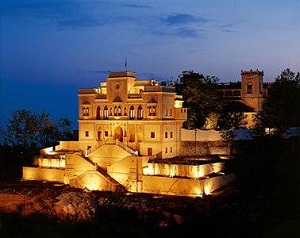
Nature, Palace, Temple

Adventurous sports, Nature, Temple

Architecture, Camal Safari, Fort, History, Miniature Paintings, Nature, Palace, Temple

Adventurous sports, Architecture, Buddhist Monestery, Buddhist Stupas, Buddhist temples, Nature, Trekking, Valley, Wildlife Sanctuary

Architecture, Fort, History, Musuem, Nature, Temple

Architecture, Fort, History, Musuem, Nature, Palace, Temple, Wildlife Sanctuary

Camal Safari, Fort, Havelis, History, Nature, Sand Dunes, Temple

Buddhist Monestery, Hill Station, Nature, Trekking

Hill Station, Nature

Architecture, Camal Safari, Fort, History, Musuem, Nature, Palace, Sand Dunes, Temple, Wildlife Sanctuary

7 Wonders, Architecture, Fort, History, Mughal, Nature, Palace, Shah Jahan, Temple, Tomb

Adventurous sports, History, Ladakh, Mountain Passes, Nature, Trekking

Architecture, Fort, Havelis, History, Masjid, Musuem, Nature, Palace, Temple

Boating, Hill Station, History, Nature, Temple, Valley, Water falls

Fort, Musuem, Nature, Palace, Temple, Wildlife Sanctuary
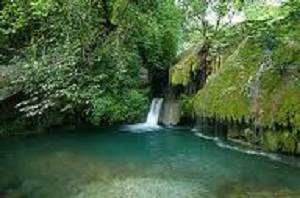
History, Nature, Temple, Valley, Water falls

Adventurous sports, Buddhist Monestery, Buddhist Stupas, Buddhist temples, History, Ladakh, Musuem, Nature, Palace, Trekking, Valley

History, Hot Springs, Nature, Temple, Trekking, Valley, Water falls

Buddhist temples, Musuem, Nature, Temple, Wildlife Sanctuary

Hill Station, Jeep Safari, Nature, Trekking

Nature, Trekking

Adventurous sports, Hill Station, History, Nature, Snorkelling, Temple, Valley, Wildlife Sanctuary

Nature, Trekking, Valley

Nature, Trekking, Valley

Hill Station, Hot Springs, Nature, Temple, Trekking, Valley

Hill Station, History, Nature, Temple, Trekking

Bird Sanctuary, Hill Station, Nature, Trekking, Wildlife Sanctuary

Adventurous sports, Buddhist Monestery, Buddhist Stupas, Buddhist temples, Fort, History, Musuem, Nature, Temple, Trekking

Caves, History, Musuem, Nature, Shakti peethas, Temple, Trekking, Valley, Wildlife Sanctuary

Dussehra, Hill Station, Mountian Biking, Nature, Temple, Trekking, Valley

Jyothirlinga, Musuem, Nature, Temple, Trekking

Buddhist Monestery, Nature, Sand Dunes

Camal Safari, Hot Springs, Mountain Passes, Nature, Trekking, Valley

History, Mahabharata, Nature, Temple, Wildlife Sanctuary

Architecture, Fort, History, Mughal, Musuem, Nature, Palace, Tomb, Wildlife Sanctuary

Architecture, Buddhist Monestery, Buddhist Stupas, Camal Safari, Hot Springs, Nature, Orchards, Sand Dunes

Fort, History, Masjid, Musuem, Nature, Ramayana, Temple

History, Hot Springs, Nature, Temple
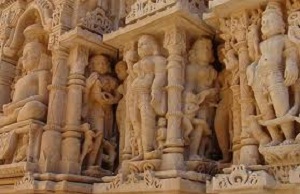
Architecture, History, Jeep Safari, Nature, Temple

Nature, Temple, Trekking, Water falls

Architecture, Masjid, Musuem, Nature, Palace, Temple, Tomb, Wildlife Sanctuary

Mahabharata, Nature, Temple, Trekking, Valley, Water falls

Mahabharata, Musuem, Nature, Palace, Temple

Architecture, Hill Station, History, Musuem, Nature, Temple, Trekking, Valley, Wildlife Sanctuary

Adventurous sports, Nature, Temple, Valley, Water falls

Architecture, History, Mahabharata, Nature, Temple

Fort, History, Mahabharata, Masjid, Musuem, Nature, Temple

Adventurous sports, Musuem, Nature, Temple, Trekking

Nature, Temple

History, Hot Springs, Nature, Temple, Valley, Water falls

Fort, History, Masjid, Miniature Paintings, Musuem, Nature, Palace, Temple, Tomb

Boating, History, Musuem, Nature, Temple, Trekking, Valley

Caves, Hill Station, History, Hot Springs, Musuem, Nature, Tea Garden, Temple, Trekking, Valley, Water falls

History, Musuem, Nature, Temple

Hill Station, Hot Springs, Nature, Temple, Trekking

Hill Station, Mountain Passes, Musuem, Nature, Temple, Trekking, Valley, Water falls, Wildlife Sanctuary

Hill Station, History, Nature, Temple, Trekking, Wildlife Sanctuary

Hill Station, Musuem, Nature, Temple, Trekking, Wildlife Sanctuary

History, Musuem, Nature, Trekking, Water falls, Wildlife Sanctuary

Architecture, Caves, Hill Station, History, Musuem, Nature, Temple, Wildlife Sanctuary

Hill Station, History, Musuem, Nature, Temple, Trekking, Valley, Wildlife Sanctuary

Boating, Caves, Fort, Hill Station, History, Musuem, Nature, Rock Formations, Temple, Trekking, Wildlife Sanctuary

Fort, Nature, Temple, Wildlife Sanctuary

Architecture, Fort, History, Musuem, Nature, Palace, Temple, Wildlife Sanctuary

Architecture, Fort, History, Musuem, Nature, Palace, Rock Formations, Temple, Water falls, Wildlife Sanctuary

Bird Sanctuary, Boating, Camal Safari, Fort, Musuem, Nature, Sand Dunes, Wildlife Sanctuary

History, Nature, Trekking

Bird Sanctuary, Deeg water Palace, History, Nature, Temple

Masjid, Nature, Ramayana, Temple

Boating, History, Nature, Wildlife Sanctuary

Hill Station, Nature, Temple

Mountian Biking, Nature, Orchards, River crossing, Temple, Trekking, Wildlife Sanctuary

Caves, Fort, Hill Station, Nature, Temple, Trekking, Valley, Water falls, Water Sports

Boating, Fort, Hill Station, House boats, Masjid, Musuem, Nature, Trekking, Valley, Water falls, Wildlife Sanctuary

Hill Station, Hot Springs, Mountian Biking, Musuem, Nature, Trekking, Valley, Water falls, Water Sports, Wildlife Sanctuary

Fort, Hill Station, Nature, Orchards, Temple, Timber Trail

Hill Station, Mountian Biking, Nature, Temple, Trekking, Valley, Water falls
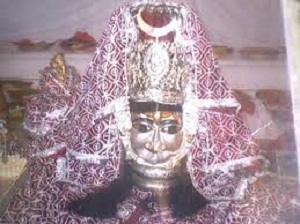
Nature, Temple, Trekking, Water falls
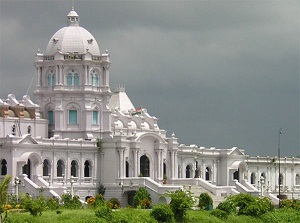
Fort, History, Masjid, Musuem, Nature, Temple

Caves, Hill Station, Musuem, Nature, Temple, Trekking, Valley, Water falls, Wildlife Sanctuary

Guru Padmasambhava, Hot Springs, Kanchendzonga, Namchi Monastery, Nature, Tea Garden, Temple, Trekking, Valley, Water falls, Wildlife Sanctuary

Hill Station, Musuem, Nature, Temple, Trekking, Valley, Water falls, Wildlife Sanctuary

Hill Station, India China Border, Mountain Passes, Musuem, Nature, Trekking, Valley, Water falls, Wildlife Sanctuary

Caves, Hill Station, Musuem, Naga Tribes, Nature, Trekking, Valley, Water falls, Wildlife Sanctuary

Boating, Hill Station, Jyothirlinga, Nature, Panch Prayag, Rock Formations, Temple, Trekking, Valley, Water falls, Water Sports, Wildlife Sanctuary

Boating, Hill Station, Jyothirlinga, Musuem, Nature, Panch Prayag, River crossing, Rock Formations, Rudraprayag, Temple, Trekking, Valley, Water falls, Water Sports

Hill Station, Nature, Shirui Lily Flowers, Tangkhul Nagas, Valley, Water falls, Wildlife Sanctuary

Hill Station, Musuem, Nature, Trekking, Valley, Water falls, Wildlife Sanctuary

Beach, Musuem, Nature, Rath Yatra, Temple

Fort, History, Masjid, Musuem, Nature, Temple, Wildlife Sanctuary

Beach, Buddhist temples, Konark Sun Temple, Musuem, Nature, Temple

Boating, Buddhist Monestery, Fort, Hill Station, History, Musuem, Nature, Temple, Valley, Wildlife Sanctuary

Boating, Caves, History, Musuem, Nature, Rock Formations, Temple, Valley, Water falls, Wildlife Sanctuary

Beach, Boating, Caves, Mud Valcanoes, Nature, Wildlife Sanctuary

Beach, Boating, Coral Reefs, History, Nature, Snorkelling, Trekking, Water falls, Wildlife Sanctuary

Masjid, Musuem, Nature, Temple, Tomb

History, Nature, Temple, Valley, Water falls, Wildlife Sanctuary

Boating, Caves, Fort, History, Musuem, Nature, Temple, Trekking

Fort, History, Masjid, Musuem, Nature, Temple, Wildlife Sanctuary

Musuem, Nature, Temple, Terracotta Temples
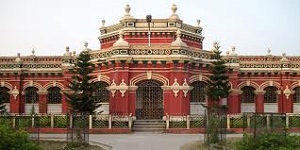
Fort, History, Nature, Temple, Wildlife Sanctuary

Nature, Temple, Valley, Water falls, Wildlife Sanctuary

Boating, Caves, Hill Station, History, Musuem, Nature, Temple, Valley, Water falls, Wildlife Sanctuary

Beach, Boat race, Fort, History, Masjid, Musuem, Nature, Temple, Trekking, Water falls, Water Sports, Wildlife Sanctuary

Boating, City of Palace, Elephant Rides, History, Musuem, Nature, Temple, Water Sports, Wildlife Sanctuary

Boating, Caves, Fort, History, Jyothirlinga, Nature, Temple

Fort, History, Nature, Temple, Water falls, Wildlife Sanctuary

Beach, Boating, Caves, History, Musuem, Nature, Rock Cut Temples, Rock Formations, Temple, Water Sports

Boating, Hill Station, Nature, Temple, Trekking, Valley, Water falls, Water Sports, Wildlife Sanctuary

Beach, Boating, Fort, hiddent Beaches of Kerala, Masjid, Musuem, Nature, Temple, Water Sports

Backwater, Boating, Musuem, Nature, Temple, Wildlife Sanctuary

Beach, Boating, Fort, History, Masjid, Musuem, Nature, Temple, Tomb, Wildlife Sanctuary

Boating, Hill Station, Nature, Trekking, Valley, Water falls, Water Sports

Hill Station, Nature, Trekking, Valley, Water falls, Water Sports, Wildlife Sanctuary
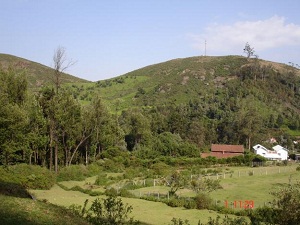
Hill Station, Nature, Trekking, Valley

Fort, History, Musuem, Nature, Temple, Water Sports

Hill Station, History, Nature, Trekking, Valley, Water falls, Water Sports, Wildlife Sanctuary

Hill Station, History, Musuem, Nature, Temple, Trekking, Valley, Water falls, Water Sports, Wildlife Sanctuary

Beach, Boating, Lagoon, Masjid, Nature, Trekking, Water Sports

Fort, History, Masjid, Musuem, Nature, Rock Formations, Temple, Tipu Sultan, Trekking, Valley, Water falls, Wildlife Sanctuary

Elephant Rides, Nature, Temple, Trekking, Valley, Water falls, Wildlife Sanctuary

Boating, Caves, Hill Station, Masjid, Mountian Biking, Musuem, Nature, River crossing, Valley, Water falls, Wildlife Sanctuary

Boating, Caves, Musuem, Nature, Temple

Beach, Boating, Fort, History, Mountian Biking, Musuem, Nature, Temple, Trekking, Valley, Water falls

Hill Station, History, Mountian Biking, Musuem, Nature, River crossing, Temple, Trekking, Water falls

Beach, Boating, Fort, Hill Station, History, Nature, River crossing, Temple, Trekking

Fort, History, Masjid, Musuem, Nature, Temple, Wildlife Sanctuary

History, Nature, Temple, Valley, Wildlife Sanctuary

Fort, Hill Station, Musuem, Nature, Temple, Trekking, Valley, Water falls, Wildlife Sanctuary
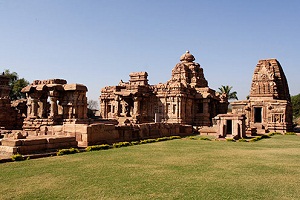
History, Musuem, Nature, Temple

Caves, Fort, History, Mountian Biking, Musuem, Nature, Temple, Trekking, Valley, Water falls

Beach, Boating, History, Nature, River crossing, Temple, Trekking, Valley, Water falls

Beach, Fort, History, Musuem, Nature, Temple, Tomb

Boating, History, Nature, Temple, Trekking, Valley

Boating, History, Nature, Temple, Tomb, Wildlife Sanctuary

Caves, Fort, Hill Station, History, Musuem, Nature, Temple, Trekking, Wildlife Sanctuary

Hill Station, History, Nature, Temple, Trekking, Valley, Water falls, Wildlife Sanctuary

Beach, Boating, Fort, History, Musuem, Nature, Temple, Valley, Water falls, Wildlife Sanctuary

Boating, Fort, History, Masjid, Musuem, Nature, Temple, Tomb

History, Nature, Temple, Trekking, Valley, Water falls, Wildlife Sanctuary

Beach, History, Musuem, Nature, Temple, Valley, Water falls

Fort, History, Musuem, Nature, Temple

Boating, Hill Station, History, Mountian Biking, Nature, River crossing, Temple, Trekking, Valley, Water falls, Wildlife Sanctuary

Boating, Fort, Hill Station, History, Musuem, Nature, Temple, Trekking, Valley, Water falls

Boating, Fort, History, Musuem, Nature, Temple, Wildlife Sanctuary

Hill Station, History, Musuem, Nature, Temple, Trekking, Valley, Wildlife Sanctuary
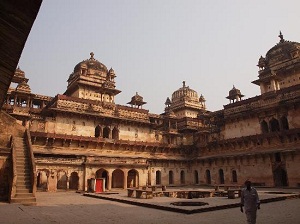
Boating, Fort, History, Masjid, Nature, Temple

Boating, History, Nature, Temple, Trekking, Valley, Water falls

Fort, History, Masjid, Musuem, Nature, Temple

Caves, Fort, History, Masjid, Musuem, Nature, Temple

Caves, History, Nature, Temple

Caves, Hill Station, History, Nature, Temple, Valley, Water falls, Wildlife Sanctuary

Fort, History, Nature, Temple

Fort, History, Musuem, Nature, Temple, Trekking, Valley

Fort, History, Masjid, Musuem, Nature, Temple

Fort, Masjid, Musuem, Nature, Temple

Hill Station, History, Nature, Temple, Trekking, Valley, Wildlife Sanctuary

Hill Station, History, Musuem, Nature, Temple, Trekking, Valley
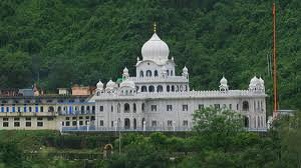
Hill Station, History, Nature, Temple, Trekking, Valley

History, Nature, Temple, Trekking, Valley, Water falls, Wildlife Sanctuary

History, Musuem, Nature, Temple, Trekking, Valley, Wildlife Sanctuary

Fort, History, Nature, Temple, Trekking, Valley, Wildlife Sanctuary

Musuem, Nature, Temple, Valley, Water falls

History, Nature, Temple, Valley, Water falls
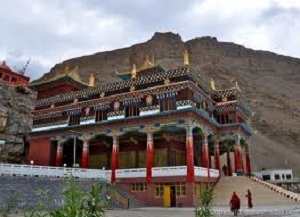
History, Nature, Temple, Valley

Fort, History, Nature, Temple, Valley, Wildlife Sanctuary

History, Nature, Temple, Valley, Water falls

Boating, History, Nature, Temple, Valley

History, Nature, Temple, Valley, Water falls

Fort, History, Nature, Temple, Wildlife Sanctuary

History, Musuem, Nature, Temple, Valley, Water falls

Boating, History, Musuem, Nature, Temple, Valley, Water falls, Wildlife Sanctuary
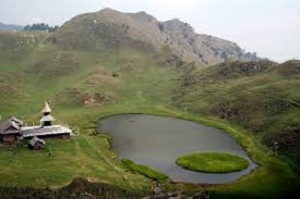
History, Nature, Temple, Valley, Wildlife Sanctuary

History, Nature, Temple, Valley

Boating, History, Nature, Temple, Valley, Water falls, Wildlife Sanctuary

Fort, History, Musuem, Nature, Temple, Tomb

Boating, Fort, History, Musuem, Nature, Temple, Valley, Water falls, Wildlife Sanctuary

Fort, History, Musuem, Nature, Temple

Fort, History, Musuem, Nature, Temple, Tomb, Wildlife Sanctuary

Boating, Fort, History, Musuem, Nature, Temple, Wildlife Sanctuary

Beach, History, Musuem, Nature, Valley, Water falls, Wildlife Sanctuary

Beach, Fort, History, Musuem, Nature, Temple, Tomb
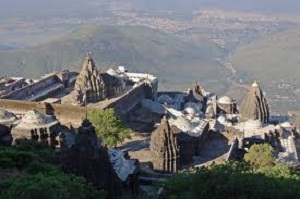
Fort, History, Musuem, Nature, Temple, Wildlife Sanctuary

Fort, History, Musuem, Nature, Temple

Beach, Fort, History, Nature, Temple

Beach, Fort, History, Nature, Temple

Beach, Fort, History, Musuem, Nature

History, Musuem, Nature, Valley, Water falls

Musuem, Nature, Temple, Water falls

History, Musuem, Nature, Temple, Valley

Nature, Water falls
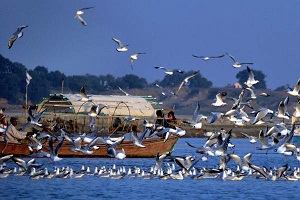
Nature, Temple, Wildlife Sanctuary

History, Nature, Temple

History, Nature, Temple, Water falls

History, Nature, Water falls

History, Nature, Wildlife Sanctuary
